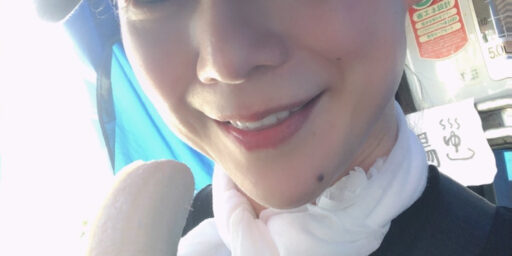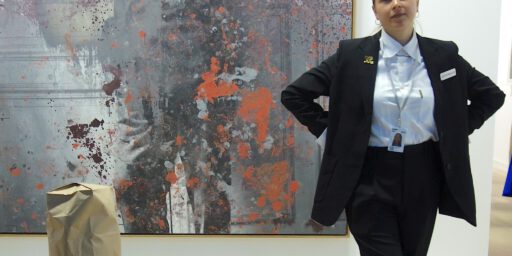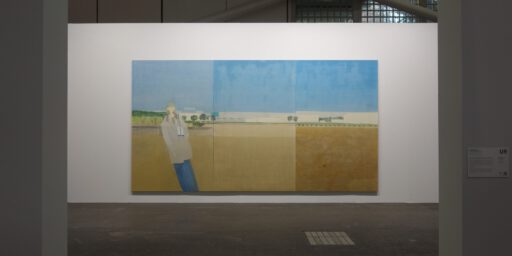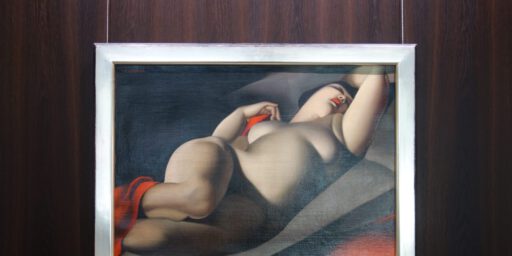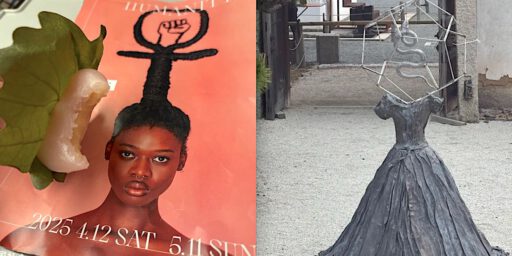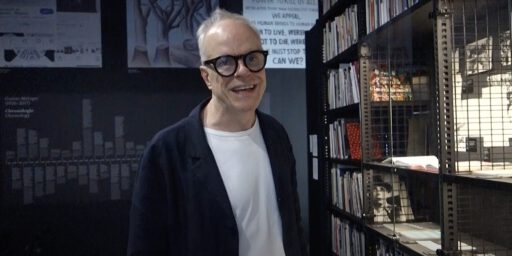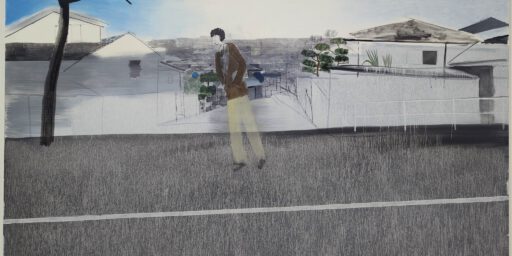左翼の為。飯山由貴「ユダヤ人絶滅」の宣言。ファック・ユー。 For the Left. IIYAMA Yuki proclaims the "Extermination of Jews". FUCK YOU.
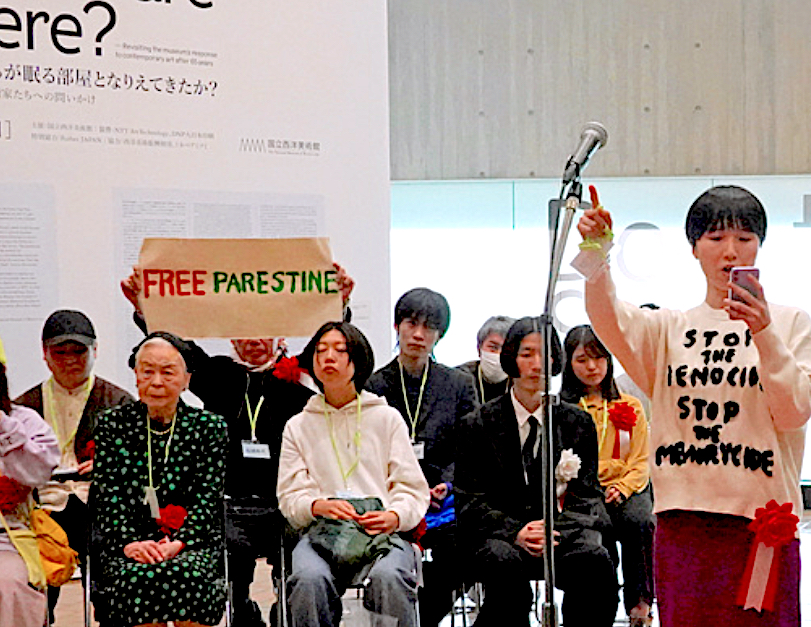
An Islamist in Grat Britain says that Hamas is losing the war because many Muslims in the West are attending anti-Israel protests together with the “Gays for Gaza” and Queers for Palestine” movements.
“Why do you think Allah will grant us victory”? https://t.co/0JKPsbQCCr
— Visegrád 24 (@visegrad24) March 17, 2024
右翼の為、1千600万円で販売した、アドルフ・ヒトラー像を描いた井田幸昌。ファック・ユー。
IDA Yukimasa painted a portrait of Adolf Hitler, which sold for 120.000 US$, for the Right-Wing. FUCK YOU.
https://art-culture.world/articles/ida-yukimasa-adolf-hitler/
の続き。
“Everybody” in Japan knows, that since 18 I am constantly voting for the German Green Party.
Don’t tell me, I am right-wing!
I don’t think that any of the Japanese contemporary artists cooperated with ADACHI Masao 足立正生 like me! See his film “Prisoner / Terrorist” 幽閉者 テロリスト together with me.
Just to give you an idea.
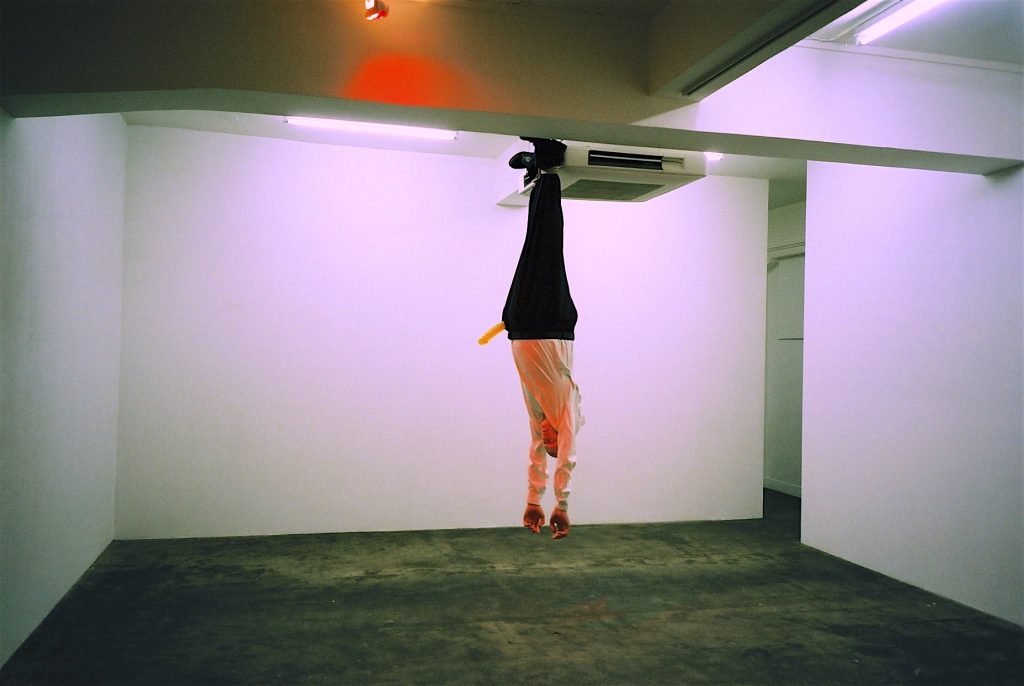
or
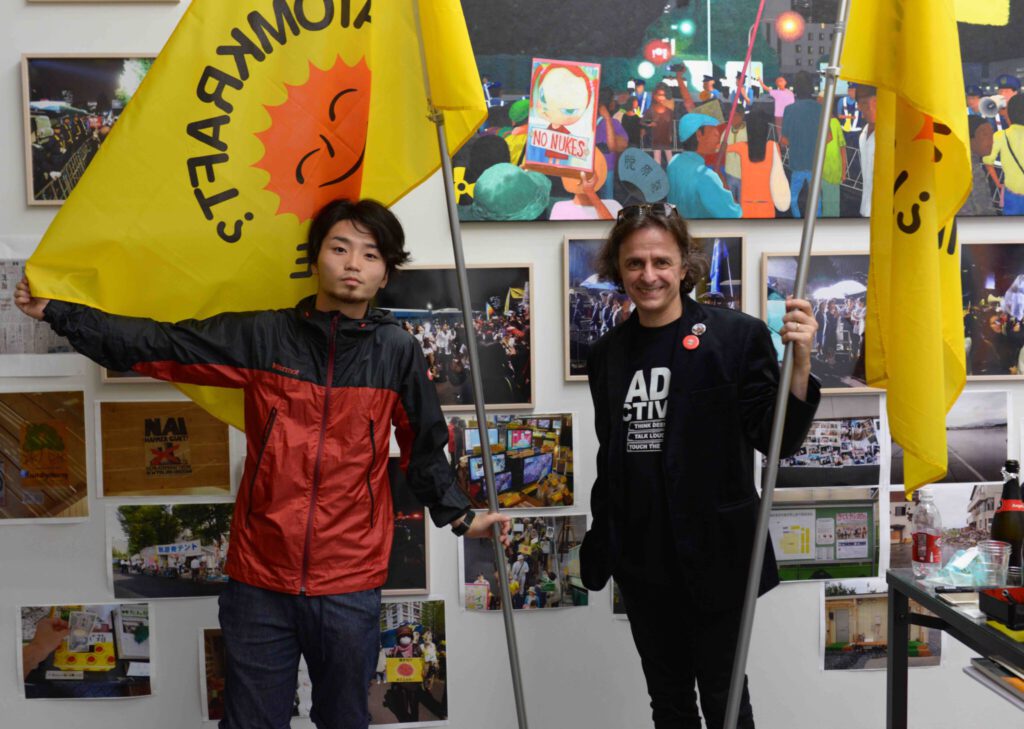
or
、マリオ・A-日本美術家、解説・市原研太郎、論創社、2004年、ページ68〜69-1024x744.jpg)
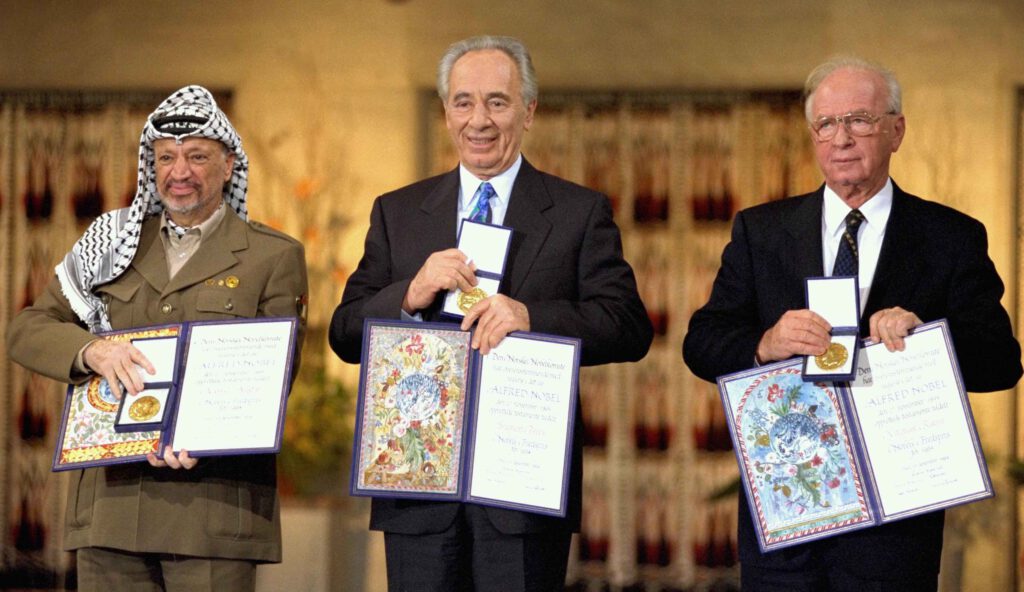
In 2003 the “Geneva Initiative” had been given way to constructive talks towards a peaceful settlements regarding the Israeli-Palestinian conflict.
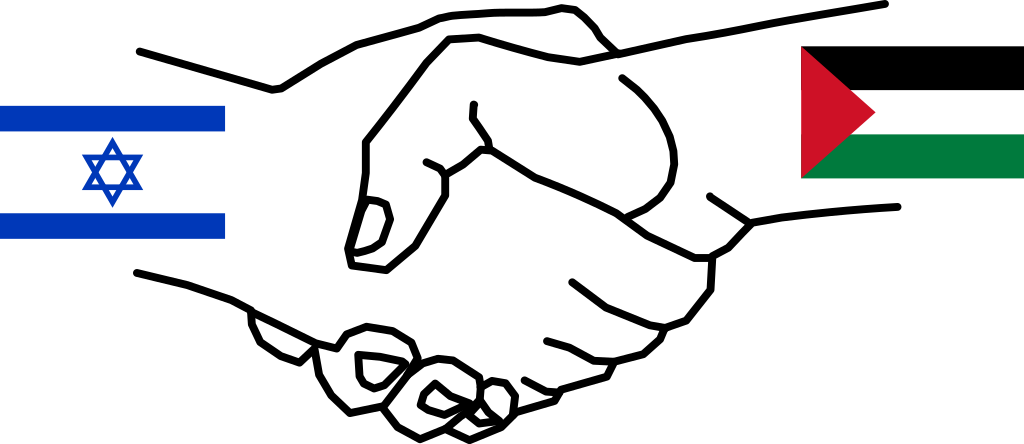
Let me quote from Wikipedia:
“The Geneva Initiative, also known as the Geneva Accord, is a draft Permanent Status Agreement to end the Israeli–Palestinian conflict, based on previous official negotiations, international resolutions, the Quartet Roadmap, the Clinton Parameters, and the Arab Peace Initiative. The document was finished on 12 October 2003. On 25 January 2022, the Swiss Federal Department of Foreign Affairs (FDFA) announced it would gradually withdraw its financial support for the Geneva Initiative, effectively ending it by 2023.
more @
https://en.wikipedia.org/wiki/Geneva_Initiative
Now let’s get focused on the anti-Semitic scandals during this documenta15.
As you know, in 1994 the Nobel Peace Prize had been awarded to the Chairman of the Palestine Liberation Organization Yasser Arafat.
The common sense approach would be: o.k., now it’s your turn, politicians, to continue this long-awaited peace process, see the ‘Geneva Initiative’.
more @:
I am a descendant of ROBERTO (Axis Roma-Berlin-Tokyo) . documenta15 should be closed down. Because there’s no weed. (lol)
私はROBERTO(枢軸国 ローマ・ベルリン・東京)の子孫である。ドクメンタ15は閉鎖されるべき。大麻草ないから。(笑)
https://art-culture.world/articles/documenta15/
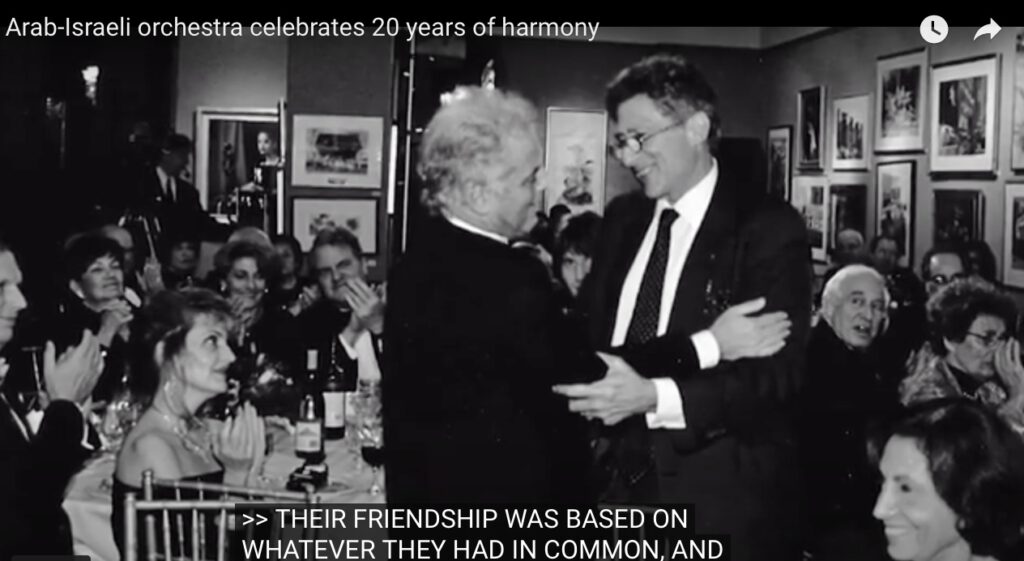
パレスチナ・イスラエル友人関係の象徴:エドワード・サイードとダニエル・バレンボイムのウェスト=イースタン・ディヴァン管弦楽団
Symbol of Palestinian-Israeli Friendship: Edward Said and Daniel Barenboim’s West-Eastern Divan Orchestra
https://art-culture.world/articles/arab-israeli-orchestra/
日独伊三国同盟ファシズム:横山大観とベニート・ムッソリーニ
Fascism Axis Japan-Germany-Italy: Nihonga Painter YOKOYAMA Taikan and Benito Mussolini
https://art-culture.world/articles/fascism-axis-japan-germany-italy-nihonga-painter-taikan-yokoyama-and-benito-mussolini/
天皇制の為:下らない横山大観戦争画 ー 内閣総理大臣顕彰受賞者村上裕二
For The Sake Of The Emperor: Trashy Taikan YOKOYAMA – Yuji MURAKAMI (Prime Minister’s Award Honoree)
https://art-culture.world/articles/for-the-sake-of-the-emperor-trashy-taikan-yokoyama-yuji-murakami-prime-ministers-award-honoree/
抵抗運動に参加しなかった横山大観や藤田嗣治との関係:ギリシャのフォークヒーロー、ミキス・テオドラキスの日独伊ファシズム・レジスタンス
In The Context of Artists Like YOKOYAMA Taikan And FOUJITA Tsuguharu, Who Didn’t Join The Resistance Movements: Greece’s Folk Hero Mikis Theodorakis’ Japanese-German-Italian Fascist Resistance
https://art-culture.world/articles/mikis-theodorakis-横山大観-藤田嗣治/
退廃芸術のアーティストたちのドイツ記念切手 (過去サイト・アーカイブの再投稿、2017年5月13日)
Deutsche Post Gedenk-Briefmarken zu Künstlerinnen und Künstler der “Entarteten Kunst” (repost from the archive, 2017/5/13)
https://art-culture.world/articles/entartete-kunst-退廃芸術-アーティスト-ドイツ記念切手/
2021年5月8日の認知症予防。「ロベール・デスノス、藤田嗣治、藤田ユキ、藤田君代。レジスタンス 対 戦争犯罪人。」
Dementia Prevention on 8th of May 2021. “Robert Desnos, Tsuguharu Foujita, Youki Foujita, Kimiyo Foujita. Résistance vs War Criminal.”
https://art-culture.world/articles/robert-desnos-tsuguharu-foujita-youki-foujita-kimiyo-foujita-resistance-vs-war-criminal/
新作 「レオナール・ツグハル・フジタの行方不明パズルピース 『藤田嗣治 天皇陛下伊勢の神宮に御参拝、皇紀2603年(1943)』」
New Work “Léonard Tsuguharu Foujita’s missing puzzle piece ‘The Japanese Emperor worshipping at Ise Shrine, Japanese imperial year 2603 (1943)’”
https://art-culture.world/articles/leonard-tsuguharu-foujita-japanese-emperor-worshipping-at-ise-shrine-japanese-imperial-year-2603/
美術史家 林 洋子氏に2020年の日本現代アート透明賞 JCATP
Art Historian Ms. HAYASHI Yoko wins 2020 Japanese Contemporary Art Transparency Prize
https://art-culture.world/articles/2020-japanese-contemporary-art-transparency-prize-hayashi-yoko/
イタリア夏休み「L’amore non e bello se non mangi cocco bello」と反ファシズム・パルチザン軍事
Summer Holidays in Italy “L’amore non e bello se non mangi cocco bello” + Guerra di Liberazione, Brigate Partigiane
https://art-culture.world/articles/summer-holidays-in-italy-lamore-non-e-bello-se-non-mangi-cocco-bello/
反ユダヤ主義や「ドクメンタ15」という文脈で:昨日のメロン・メンデル氏 (フランクフルトのアンネ・フランク教育センター所長) のクネセト選挙に関する記事
In the Context of Antisemitism and documenta15: Yesterday’s Article by Meron Mendel (Director of the Anne Frank Educational Center in Frankfurt) regarding the Knesset Election
https://art-culture.world/articles/antisemitism/
ジョアン・ミッチェルのアート・ディーラーが突然変更に:「このアート界はとても野蛮になった」/ (+ ポンピドゥー・センター・メッス画像)
In the context of recent changes by Joan Mitchell’s art dealers: : “This art world has become so uncivilized” // (+ pics from the Centre Pompidou-Metz)
https://art-culture.world/articles/joan-mitchells-art-dealers-problem-this-art-world-has-become-so-uncivilized/
平穏な社会政治的アート・アクティヴィズム、傑出した「マクドナルド放送大学」作 by 高山明 @ MISA SHIN GALLERY
Peaceful Sociopolitical Art Activism with the Excellent Work “McDonald’s Radio University” by TAKAYAMA Akira @ MISA SHIN GALLERY
https://art-culture.world/articles/takayama-akira-misa-shin-gallery/
毒山 凡太朗の卓越したアート実践は日本の社会経済の歴史を深く考えさせる
Exceptional Artistic Practice By DOKUYAMA Bontaro Inspires Deep Thoughts On Japanese Socio-Economic History
https://art-culture.world/articles/dokuyama-bontaro-exceptional-artistic-practice-毒山-凡太朗/
中国・四国、九州地方の時代遅れ、保守系の政治家たち
Antiquated, Conservative Politicians from the Region of Chūgoku-Shikoku and Kyushu
https://art-culture.world/articles/antiquated-conservative-politicians-from-the-region-of-chugoku-shikoku-and-kyushu/
LDP Politician TANIGAWA Yaichi “I have to kill myself” X:「谷川弥一。「辞めてきて、これ以上責任取れ言うなら、死ぬ以外の方法ないですよ。俺が悪いんだって言ってるじゃないですか、何回も何回も!」。
なんなんだこの男は。こんなのが国会議員をやれる国。」
https://art-culture.world/articles/kyushu-ldp-九州-自民党/
我が国にっぽんの恥「日展」 “Nitten”, the Shame of our Nation Nippon
https://art-culture.world/articles/nitten-the-shame-of-our-nation-nippon/
非常に優れている企画展「Viva Video! 久保田成子展」@ MOT!
(現代の最高の日本人アーティストである長島有里枝さんは久保田成子の正統な後継者)
https://art-culture.world/articles/kubota-shigeko-museum-of-contemporary-art-tokyo-久保田成子/
ソーシャリー・エンゲイジド、優れたアーティスト長島有里枝:母性・文学・盲目、、、写る可能性と不可能 @ 横浜市民ギャラリーあざみ野 & ちひろ美術館
Socially Engaged, Excellent Artist NAGASHIMA Yurie: Motherhood – Literature – Blindness… Possible and Impossible Photography @ Yokohama Civic Art Gallery – Azamino & Chihiro Art Museum
https://art-culture.world/articles/nagashima-yurie-excellent-artist/
「カッセルのユダヤ人雌豚」”Die Judensau von Kassel”
https://art-culture.world/articles/documenta-15/
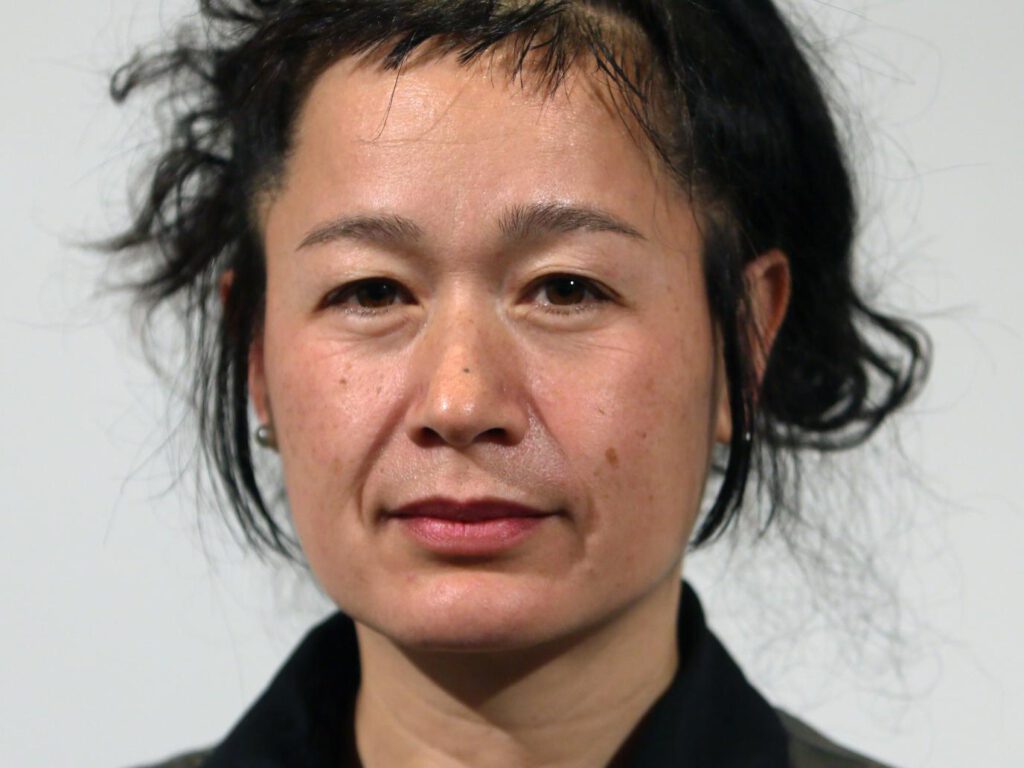
Next step. Hito Steyerl leaves #documenta15 due to anti-Semitic scandal.
Renowned conceptual and new media artist Hito Steyerl, one of Germany’s best-known contemporary artists and the most vocal of Documenta 15’s contributors, has pulled out of the influential five-year festival amid a mounting anti-Semitic scandal. In a letter to the organizers “Documents” received by Die Zeit, Steyerl cites how they responded to allegations of anti-Semitism as one of the reasons for her departure, as well as their failure to create a space where divisive issues could be discussed and “unsafe and low-paying working conditions” in which were some employees.
“I don’t believe in the organization’s ability to mediate and translate complexity,” the artist wrote, referring to “the repeated failure to promote a sustainable and structurally anchored inclusive debate around the exhibition, as well as a de facto refusal to accept mediation.” .
Steyerl’s departure follows Meron Mendel, director of the Anne Frank Educational Institution in Frankfurt, who resigned as documenta 15 consultant.
今日はドイツの緑の党、ロベルト・ハーベック副首相がパレスチナを訪問
German Green Party Vice Chancellor Robert Habeck visited Palestine today
https://art-culture.world/articles/green-party-robert-habeck/
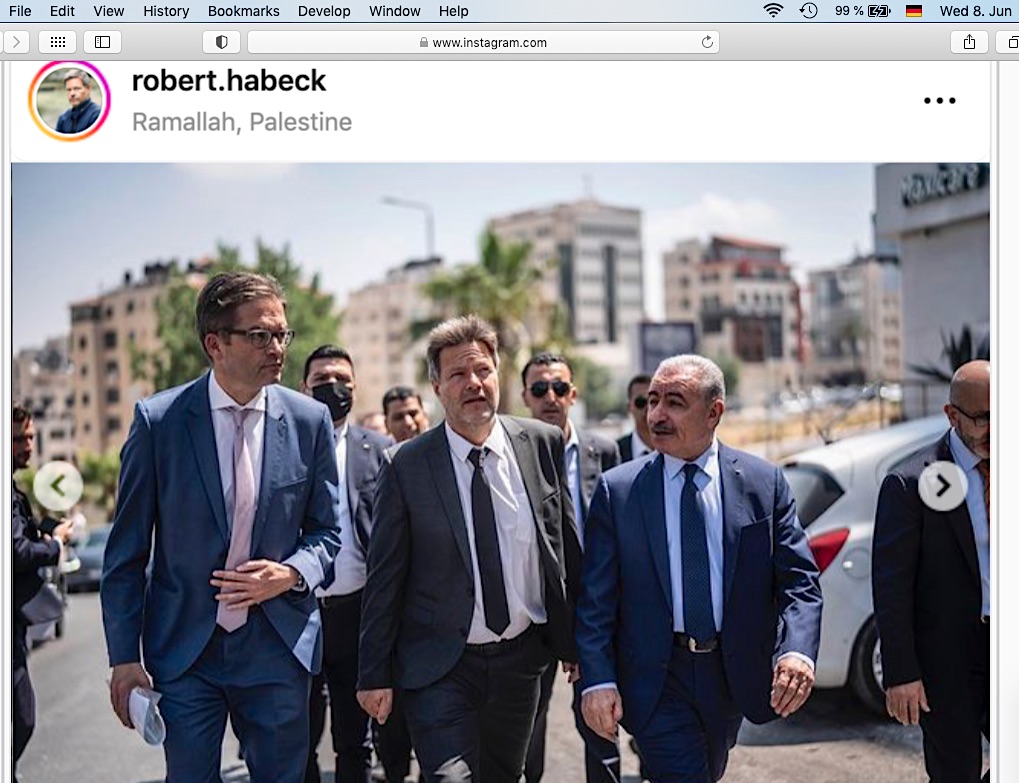
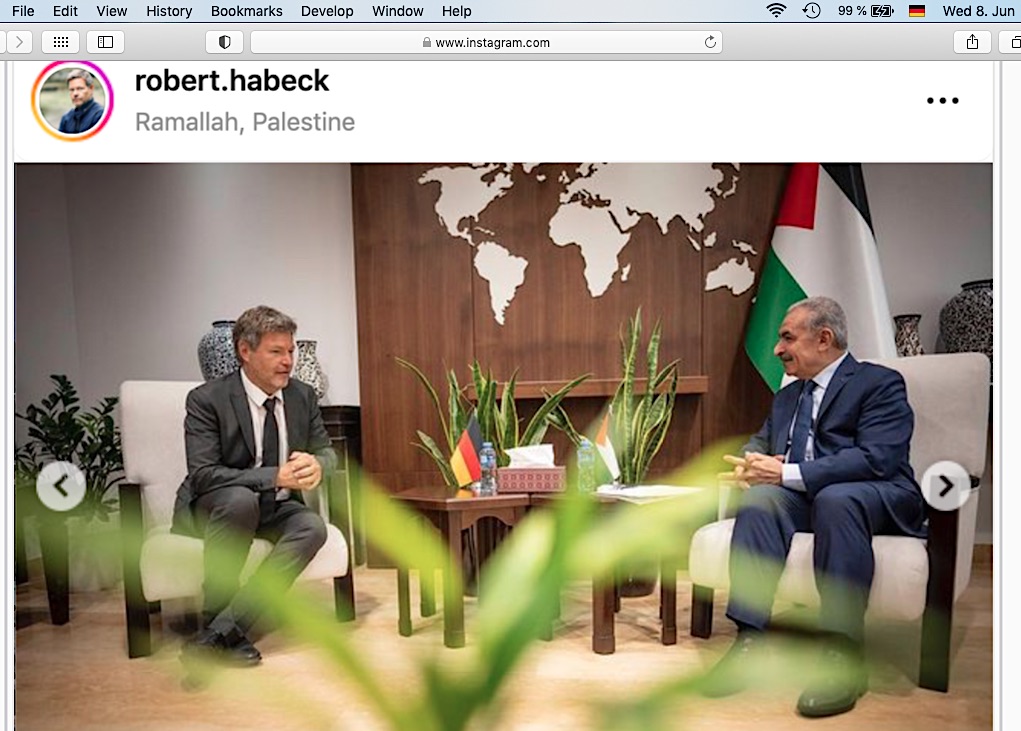
Hamas is a murderous terrorist group fighting for the annihilation of the state of Israel and the death of all Jews.
Regarding the Muslim Hamas Massacre (and the first invasion of Israeli home territory since the Arab-Israeli War of 1948) = rapes on Jewish women, = rapes on Jewish children, = killing of Jewish families with their children on the 7th October 2023 (and still ongoing rapes on Jewish women in Gaza)…
update 2024/3/27
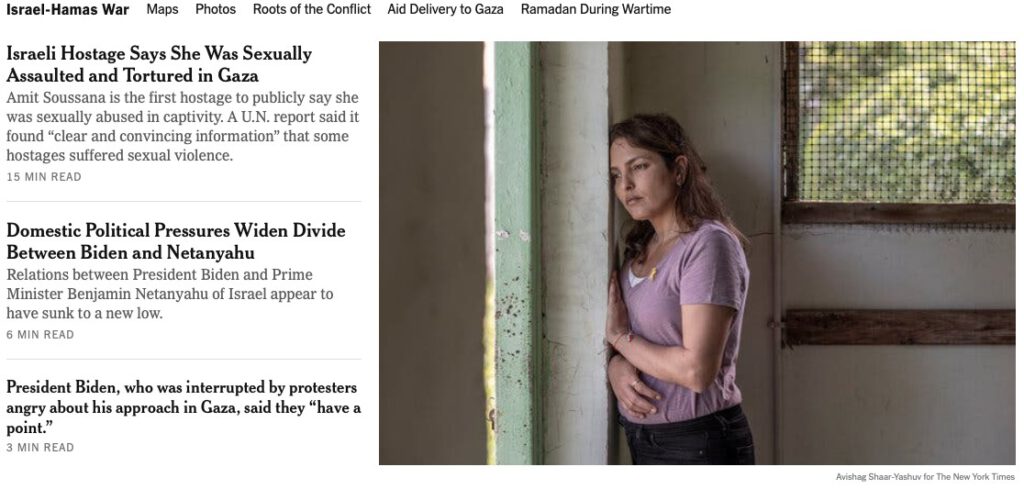
https://www.nytimes.com/2024/03/26/world/middleeast/hamas-hostage-sexual-assault.html
(End of up-date)
…means, the second massacre on Jewish People after the Holocaust, most Germans have a clear stance, which is symbolised by the speech of Vice Chancellor and Federal Minister Robert Habeck from the Green Party, on November 1st, 2023.
I share also the opinion “Kein Einer und kein Andrer mehr” (November 2023) of Nobel Prize Winner in Literature (2004), Austrian Elfriede Jelinek about the Hamas Massacre. See attached text, below.

Of course, Israel must abide by international law and international standards. But the difference is this: would someone ever frame such expectations of Hamas?
It was the men of Hamas, who cruelly murdered children, parents, and grandparents in their homes.
Whose Muslim fighters mutilated corpses, kidnapped people and laughingly exposed them to public humiliation.
There are accounts of sheer horror – and yet Hamas is hailed as a freedom movement? This is a reversal of the facts, which we cannot allow to stand.
The attack on Israel, on the 7th October 2023, took place in a phase of rapprochement between several Muslim states and Israel. There are the Abraham Accords between Israel and Muslim countries of the region. Jordan and Israel are working together on a major drinking water project. Saudi Arabia was on the way to normalising its relations with Israel.
In this context I am against today’s anti-Jewish demonstration (letting wave the Palestine Flag and its suggestive implications) by 38 years old art worker IIYAMA Yuki 飯山由貴 (PaRestine 🤣) in the National Museum of Western Art in Tokyo.
“FROM THE RIVER TO THE SEA. PALESTINE WILL BE FREE.” clearly proclaims the “Extermination of Jews”. See attached flyer.
IIYAMA Yuki 飯山由貴: FUCK YOU!
BRING THEM HOME NOW!
https://media.bringthemhomenow.net
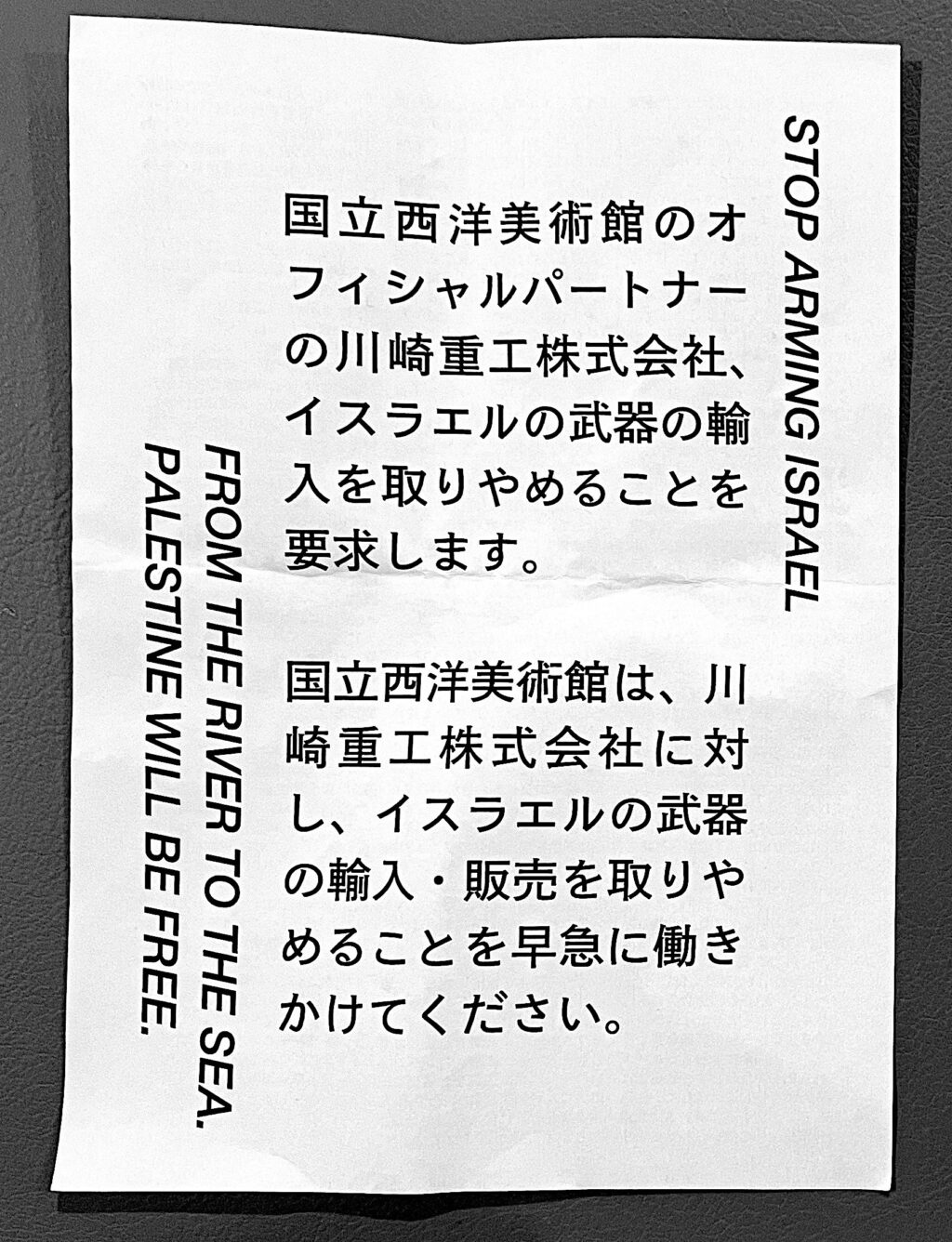
Pro-Palästina-Parole
Die Geschichte des Slogans «From the River to the Sea …»
Michelle Muff
Publiziert: 02.11.2023
Auf der ganzen Welt an Kundgebungen gerufen, in Berlin nun verboten: Eine Parole für ein freies Palästina sorgt für Kontroversen. Woher sie kommt und was sie bedeutet.
«From the river to the sea, Palestine will be free»: Der Spruch – der auf Deutsch besagt, dass Palästina vom Fluss bis zum Meer frei sein werde – löste in den vergangenen drei Wochen Kontroversen aus. Er wird aktuell an pro-palästinensischen Demonstrationen auf der ganzen Welt skandiert, allen voran in westlichen Städten. Videos zeigen Protestierende von London über Wien bis nach Beirut und Rom, die gemeinsam die Parole rufen.
In einer Rede am Wochenende an einer Palästina-Kundgebung sagte etwa der britische Labour-Parlamentsabgeordnete Andy McDonald, dass man nicht ruhen werde, bis alle Menschen «vom Fluss bis zum Meer» in friedlicher Freiheit leben könnten. Drei Tage später wurde McDonald von der Partei suspendiert und eine Untersuchung eingeleitet. Am 1. November verbot der englische Fussballverband seinen Spielern, den Slogan auf Social Media zu verwenden. Und in Berlin wird die Verwendung der Parole seit vergangener Woche als strafbar eingeordnet.
Wieso wird der Slogan so kontrovers diskutiert? Und woher stammt er?
Eingeführt wurde der Begriff in den frühen 1960er-Jahren von der Palästinensischen Befreiungsorganisation (PLO). Bei ihrer Gründung im Jahr 1964 forderte die PLO die Errichtung eines einzigen Staates, der sich vom Jordan bis zum Mittelmeer erstreckt und seine historischen Gebiete umfasst.
Seither wird die Parole von anderen palästinensischen politischen Gruppen verwendet, als Aufruf zur Befreiung Palästinas von der israelischen Besatzung. Auch die Hamas beruft sich auf den Slogan. «Die Hamas lehnt jede Alternative zur vollständigen und uneingeschränkten Befreiung Palästinas, vom Fluss bis zum Meer, ab», heisst es in der Verfassung der Organisation von 2017.
Der Spruch wird vor allem wegen eines geografischen Aspekts kontrovers diskutiert: Denn die Fläche vom genannten Jordan-Fluss im Osten bis zum Mittelmeer im Westen umschliesst das gesamte israelische Territorium – und lässt die Frage offen, was nach einer allfälligen Befreiung Palästinas mit Israel und den Jüdinnen und Juden geschieht, die dort leben.
Es klinge nach einer «Drohung»
Für propalästinensische Demonstranten drückt die Parole den Wunsch nach Freiheit von der Unterdrückung im historischen britischen Mandatsgebiet Palästina aus. Israel hingegen sieht darin einen verschleierten Aufruf zur Gewalt, der mit einem antisemitischen Vorwurf verbunden ist.
So schreibt etwa das American Jewish Committee (AJC), dass die Parole «die Auslöschung des Staates Israel und seines Volkes» fordere. Es sei nichts Antisemitisches daran, für einen eigenen Staat der Palästinenser einzutreten, so das AJC: «Allerdings ist es antisemitisch, die Beseitigung des jüdischen Staates zu fordern, die Hamas oder andere Organisationen zu loben, die die Zerstörung Israels fordern, oder zu behaupten, dass die Juden allein kein Recht auf Selbstbestimmung haben.»
Yehudah Mirsky, ein in Jerusalem lebender Rabbiner und Professor für Nahoststudien und Judaistik an der Brandeis University, sagte gegenüber dem arabischen Nachrichtensender al-Jazeera: «Es klingt eher nach einer Drohung als nach einem Befreiungsversprechen. Er deutet nicht auf eine Zukunft hin, in der Juden ein erfülltes Leben führen und sie selbst sein können.»
«Die Notwendigkeit der Gleichheit für alle Bewohner»
Für Palästinenser und deren Unterstützer drücke die Parole hingegen «die Notwendigkeit der Gleichheit für alle Bewohner des historischen Palästina» aus, sagt Nimer Sultany, Dozent für Rechtswissenschaften an der School of Oriental and African Studies in London, gegenüber al-Jazeera. Das sei nämlich nach wie vor der Kern des Problems: «Den Palästinensern wird nach wie vor verwehrt, in Gleichheit, Freiheit und Würde wie alle anderen zu leben.» Die Kontroverse rund um den Spruch ist laut Sultany – selbst palästinensischer Staatsbürger Israels – fabriziert worden, um die Solidarität des Westens mit den Palästinensern zu verhindern.
Im Jahr 2021 argumentierte der palästinensisch-amerikanische Schriftsteller Yousef Munayyer, dass die Formulierung «vom Fluss bis zum Meer» den gesamten Raum beschreibe, in dem den Palästinensern Rechte verweigert würden. Es sei eine Möglichkeit, den Wunsch nach einem Staat auszudrücken, in dem «Palästinenser in ihrer Heimat als freie und gleichberechtigte Bürger leben können, die weder von anderen beherrscht werden noch andere dominieren». Das erinnert aktuell jedoch eher an eine Utopie als an einen realistischen politischen Plan.
Ruf nach Freiheit für Palästina wird als Straftat verfolgt
Justus Leicht
16. November 2023
Die Verbreitung der Parole „From the river to the sea, Palestine will be free” wird in Deutschland ab sofort als Straftat verfolgt, die mit Freiheitsstrafe bis zu drei Jahren oder mit Geldstrafe geahndet wird. Der Müchner Oberstaatsanwalt Andreas Franck, der auch Antisemitismusbeauftragter der bayrischen Justiz ist, hat bereits angekündigt, die Parole genauso zu verfolgen wie verbotene Nazi-Sprüche und Symbole.
Als juristische Grundlage dient das Verbot der Hamas, das Bundesinnenministerin Nancy Faeser (SPD) am 2. November erlassen hat. Die Hamas galt zwar schon bisher als illegale terroristische Vereinigung, doch nun hat Faeser noch einmal eigens ein Vereinsverbot ausgesprochen, obwohl Hamas in Deutschland offiziell gar keine Organisation hat.
In der fünfseitigen, im Bundesanzeiger veröffentlichten Verbotsverfügung werden „Kennzeichen“ der Hamas aufgelistet, deren öffentliche Verwendung verboten ist. Auf der Liste steht auch „die Parole ‚Vom Fluss bis zum Meer‘ (auf Deutsch oder in anderen Sprachen)“. Damit, so Oberstaatsanwalt Franck, könne der Satz gestützt auf Paragraph 86a Strafgesetzbuch, „Verwenden von Kennzeichen verfassungswidriger und terroristischer Organisationen“, bestraft werden.
Bislang hatten deutsche Staatsanwaltschaften den Satz als legitim gewertet. Er sei grundsätzlich von der Meinungsfreiheit gedeckt, hatten die Staatsanwaltschaften in Berlin, München und anderen Städten erklärt, wie die Süddeutsche Zeitung berichtet. Wer sich wünsche, dass Palästina „frei“ sei, rufe nicht dringend zur Gewalt auf, sondern könne auch eine friedliche Änderung des Status quo meinen. Das Verwaltungsgericht Berlin hatte erst im August entschieden, dass die Parole für sich genommen nicht strafbar sei.
Doch mit der Verbotsverfügung haben sich die juristischen Voraussetzungen geändert. Statt als „Volksverhetzung“, was eindeutige Anstachelung zu Gewalt voraussetzt, kann die Verwendung der Parole nun allein aus dem Grund bestraft werden, dass die Innenministerin sie zum „Kennzeichen“ einer verbotenen Organisation erklärt hat.
In Wirklichkeit handelt es sich um einen willkürlichen Akt der Zensur und der Unterdrückung des Grundrechts auf Meinungsfreiheit.
In den vergangenen Wochen sind weltweit Millionen Menschen aller Religionen und Nationalitäten, darunter auch Israelis und viele Juden, auf die Straße gegangen und haben gegen das israelische Massaker in Gaza protestiert. Darauf reagieren die Regierungen, die die israelischen Verbrechen unterstützen, mit Zensur, Einschüchterung und Unterdrückung.
In Deutschland werden friedliche Demonstrationen von den Medien als „antisemitisch“ verleumdet und von der Polizei reihenweise verboten oder mit strengen Auflagen versehen. Große Polizeiaufgebote schüchtern die Demonstrationsteilnehmer ein, zensieren jedes gesprochene und geschriebene Wort, nehmen Teilnehmer reihenweise fest und beschlagnahmen Flugblätter und Transparente.
Die Kriminalisierung des Rufs nach Freiheit für Palästina ist eine weitere Stufe in dieser Repressionsspirale. Dabei ist die Behauptung, der Ruf „from the river to the sea“ sei ein „Kennzeichen“ der Hamas, schlicht gelogen.
Die Wurzeln der Parole gehen mindestens bis zur Gründung der Palästinensischen Befreiungsorganisation PLO im Jahr 1964 zurück. In der Palästinensischen Nationalcharta wurde Palästina als das historische britische Mandatsgebiet von 1947 definiert, das vom Fluss Jordan bis zum Mittelmeer reichte. Ausdrücklich wurde zwischen Juden als Religionsgruppe und dem Zionismus als „rassistische“ und „mit dem internationalen Imperialismus“ verbundene „politische Bewegung“ unterschieden. Die Charta erklärte zudem ausdrücklich, dass auch Juden Palästinenser sein können.
Als Ziel der Palästinenser galt traditionell ein säkulares, demokratisches Palästina ohne Besatzung und Diskriminierung. So erklärte die Fatah von Jassir Arafat, die lange Zeit größte und dominierende Fraktion innerhalb der PLO, im Jahr 1969: „Die Fatah, die Nationale Befreiungsbewegung Palästinas, verkündet feierlich, dass das Endziel ihres Kampfes die Wiederherstellung eines unabhängigen, demokratischen Staates Palästina ist, in dem alle Bürger unabhängig von ihrer Religion die gleichen Rechte genießen werden.“
Die Hamas entstand dagegen erst 1987 als palästinensischer Zweig der Muslimbruderschaft. In ihrer revidierten Charta von 2017 bekennt sie sich ebenfalls zu einem Palästina „vom Fluss Jordan bis zum Mittelmeer“. Damit hat sie nichts Neues erfunden, sondern lediglich eine jahrzehntelange Orientierung palästinensischer Organisationen übernommen.
In der Charta der Hamas von 1988 war die Formulierung noch nicht aufgetaucht. Anders als in dieser ersten Charta unterscheidet in der drei Jahrzehnte später entstandenen Fassung auch die Hamas zwischen Judentum und Zionismus. Es heißt dort: „Die Hamas bekräftigt, dass ihr Konflikt mit dem zionistischen Projekt und nicht mit den Juden aufgrund ihrer Religion besteht.“
Auch in der israelischen Politik gab es schon lange vor Gründung der Hamas immer wieder Bezüge auf die Formel „vom Fluss bis zum Meer“. Anders als in der Interpretation der PLO war damit allerdings kein säkularer, demokratischer Staat gemeint, sondern „Eretz Israel“, ein Staat unter jüdischer Vorherrschaft.
Die heute regierende Likud-Partei von Premierminister Benjamin Netanjahu wurde ausdrücklich auf dieser Grundlage gegründet. Es heißt in ihrer ursprünglichen Plattform von 1977: „Das Recht des jüdischen Volkes auf das Land Israel ist ewig und unbestreitbar und ist mit dem Recht auf Sicherheit und Frieden verbunden; daher werden Judäa und Samaria keiner ausländischen Verwaltung übergeben; zwischen dem Meer und dem Jordan wird es nur israelische Souveränität geben.“
Der heutige Finanzminister Bezalel Smotrich von der Partei „Religiöser Zionismus“, dem auch weitgehend die Siedlungen im Westjordanland unterstehen, hat für einen rechten israelischen Thinktank 2017 einen Aufsatz mit dem Titel „Israel’s decisive Plan“ verfasst, in dem es heißt: „Wir werden deutlich machen, dass unser nationales Streben nach einem jüdischen Staat vom Fluss bis zum Meer eine vollendete Tatsache ist, eine Tatsache, die nicht diskutiert oder verhandelt werden kann.“
Die Anhänger vom Netanjahu und Smotrich in Deutschland müssen allerdings nicht fürchten, dass sie deshalb Besuch von der Staatsanwaltschaft bekommen. Mit einer israelischen Regierung, die die Politik, die Palästinenser zu töten und zu vertreiben, gerade mit mörderischer Gewalt in die Praxis umsetzt, erklärt die Bundesregierung ihre volle Solidarität und unterstützt sie dabei auch militärisch. Wer dagegen dafür protestiert, dass es „zwischen dem Fluss und dem Meer“ Freiheit und Gleichberechtigung statt Besatzung und Apartheid gibt, wird kriminalisiert.
https://www.wsws.org/de/articles/2023/11/15/rive-n15.html
update 2024/3/16 The original speech by Iiyama:
2024年3月11日 国立西洋美術館アクション 飯山由貴スピーチ内容全文
恒常的、慢性的な暴力に対して、それをやめろと表現をしたら、
おまえが加害者だと言われた。
恒常的、慢性的な暴力に対して、それをやめろと表現をしたら、
おまえはテロリストだと言われた。
恒常的、慢性的な暴力に対して、それをやめろと表現をしたら、
おまえは頭がおかしいと言われた。
恒常的、慢性的な暴力に対して、それをやめろと表現をしたら、
おまえは人間ではない、動物だと言われた。
これはいま、入植者たちからパレスチナの人々が受けている言葉であり、私たちがこの社会で他の人々から受けていながらもなお、他の人々に発言している危険性がある言葉です。
もしかしたら、私たちは自分が受けた被害をうまく他の人々に対して伝えることができなかったかもしれない。その小さな機会があったとしても、より資金と権力のある人々によるプロパガンダによって、私たちの声は常に嘘つきであるというレッテルを貼られつづけている。
マスメディアも含めた多くの人々は、私たちの肌の色、ジェンダー、セクシュアリティ、階級、信仰、国籍、エスニシティ、世系、病や障害などの情報とともにその被害を知ると、たいていは無関心の態度を示す。お前にも何か悪いところがあったのだろう、と。その方法はおかしい、暴力的だ、テロリストだ、攻撃的だ、うるさい、黙れ、我慢しろ、と言われつづけている。
どうして私たちの訴えは、主流社会に暮らす人々が受けた被害と同様に取り扱われないのか。
どうして私たちの家族の死は、私たちの友人の死は、そして私たち自身の死は、入植者である、健常者である、より白い肌をしている、私たちと違う言葉を話す、あなたたちの死よりも軽いのか。
私は、この世界でその言葉が、声が、訴えが軽んじられてきたすべての人々に連帯をします。
ナチスによるユダヤ人のジェノサイドの特権化が、入植者たちの暴力の特権性を構築した危険があるのであれば、私はイスラエルによるパレスチナ人のジェノサイドを特権化しません。
ガザと西岸で起きていることは、私たちの地域社会でもすでに常に起きているからこそ、その暴力を否定します。
直接的、間接的な暴力がなぜ使われるのか、それが他者を支配する手段であるからです。職場で、学校で、家庭で、病院で、障害者施設で、入管で、SNSで、そして民族や国家間で恒常的に使われます。
私は暴力に反対することを通して、支配を否定します。
暴力的であるということと、暴力行為の間には、さまざまな段階があり、この行為がそれに一歩足を踏み入れているという自覚はあります。しかし、この時間が、この介入が、暴力行為かどうかは、私は判断しません。私たちは、私たち一人一人が持ち、使うことができる表現の力を使います。
私たちは展覧会出品作家有志を中心とする市民です。
私たちは、パレスチナで現在起きているイスラエル政府のジェノサイドに強く反対します。
イスラエル政府が現在行っている虐殺は、明らかに民間人を含み、人々を恣意的に絶滅させ、土地を奪おうとする意図に基づくものです。「国際人道法違反」であり、ただちに止めなくてはなりません。
国立西洋美術館のオフィシャルパートナーである川崎重工業株式会社は、自衛隊の装備品として、日本に対してイスラエルの武器の輸入・販売を行おうとしています。
私たちは、パレスチナ人に連帯し、即時停戦、パレスチナの解放・反帝国主義・脱植民地主義・反差別を支持し、国立西洋美術館のオフィシャルパートナーの川崎重工業株式会社に対し、イスラエルの武器の輸入を取りやめることを要求します。
川崎重工業株式会社と国立西洋美術館は、イスラエルの殺傷武器の輸入・輸出によって、ともに利益を得ること、そしてそれによってパレスチナ人の虐殺に加担すること、未来においても他の地域で多くの人々が殺されつづけることの正当化に、美術館の鑑賞者、労働者、美術作品をはじめとする、すべての人、ものを利用しないでください。
武器による直接の犠牲者をはじめ、兵士とその周囲にいる人々、多くの人間の心身の犠牲によって、軍事産業の利益は成立します。川崎重工業株式会社は、その背景を文化によって洗い流し、不可視化する手段として、国立西洋美術館という、人々の税金で作られた場を利用しないでください。
国立西洋美術館は、川崎重工業株式会社に対し、イスラエルの武器の輸入・販売を取りやめることを早急に働きかけてください。
イスラエルの武器輸入を取りやめることは、イスラエルに対する制裁となり、現在進行中のパレスチナ人の虐殺をとめる手立てになります。
ここにいる皆さんも、どうか、ご自分ができるイスラエル企業に対するBDS運動(ボイコット、投資撤収、制裁運動)などを行って、一刻も早い停戦とパレスチナの解放に向けて、ともに行動してください。
End of Iiyama’s speech.
……
Last sentence of Iiyama’s speech as English translation:
“Please, everyone here, please join us in working towards a ceasefire and the liberation of Palestine as soon as possible, by carrying out the BDS campaign (boycott, divestment and sanctions campaign) against Israeli companies that you are able to do.”
Iiyama, who suggests a political agenda in the Japanese contemporary art world, clearly takes the position of the BDS (Boycott, Divestment and Sanctions).
BDS Japan:
日本から私たちができる
🕊🇵🇸パレスチナ連帯行動🍉🕊
quote:
ボイコット・ダイベストメント・サンクション(重要度 高)
👇BDS運動とは?日本におけるBDSのターゲットは?木村りべかさんの画像がわかりやすいため、掲載させていただきます。(元投稿は https://x.gd/EP9CY)
ー 前提:BDS運動について ー
イスラエルによるパレスチナ人への人権侵害は、2023年10月7日から始まったわけではありません。1948年にイスラエルが先住のパレスチナ人を虐殺・追放したナクバ(大厄災)以来、76年にわたり続いています。
しかし、こうした人権侵害に対し、イスラエルが国際的な処罰を受けることはありませんでした。
こうした「不処罰の伝統」を終わらせるため、2005年からパレスチナの170の市民団体から「BDS運動」の呼びかけが起こりました。
B: Boycott(ボイコット:消費者への不買呼びかけ)
D: Divestment (ダイベストメント:企業への投資引き上げ呼びかけ)
S: Sanction(サンクション:国家・国際機関への制裁呼びかけ)
BDS運動は、イスラエルの占領・入植・人権侵害に加担する企業などに対する、非暴力の抵抗運動です。
この「ボイコット・ダイベスト・サンクション」の項では、日本からできるBDS運動をご紹介します。
☞もっと詳しく知りたい方へ:
👩🏻💻動画
BDS運動について紹介している、Choose Life Projectの動画が参考になります。
「いま、日本でパレスチナのために出来ること」(23/12/27配信)
0:27️:40〜において、BDS運動のはじまり、目的、組織、効果・成功事例・戦略について説明されています。
「日本でパレスチナのためにしたこと・できること」(24/2/24配信)
🔗Webサイト
日本でBDSやパレスチナについて情報を発信する掲示板「BDS Japan Bulletin」(https://bdsjapanbulletin.wordpress.com/)では、日本におけるBDS運動についてのお知らせが随時掲載されています。
note掲載のBDSガイドラインでは、BDSの目的や、ターゲットを絞ることの重要性などの説明が詳しく読めます。
このまとめでは、BDS Japan Bulletin(以下、BJB)のガイドラインに沿ってボイコット対象を記載しています。以前優先ターゲットであった伊藤忠アビエーション・日本エヤークラフトサプライの二社が、イスラエル最大の軍需企業エルビット・システムズとの戦略的協力覚書を2月末で終了すると発表したことを受けて、2月23日に方針が更新されました。
改定された方針では、日本政府にS=サンクション(制裁)を求めるアクションが追加されています。
https://docs.google.com/document/d/1IUVPD02DGo5GPPM6ZU2WB0FYES4eGAaXZio07hq07hc/mobilebasic
From the standpoint of the German Parliament and the German Green Party, which I share, the BDS Demonstrations are defined as anti-Semitic.
The Hamas terrorist organisation is forbidden in Germany.
News from 2019:
Germany designates BDS Israel boycott movement as anti-Semitic
By Joseph Nasr and Riham Alkousaa
May 18, 2019
BERLIN, May 17 (Reuters) – The German parliament voted on Friday to condemn as anti-Semitic a movement that calls for economic pressure on Israel to end the occupation of Palestinian land, grant Arab citizens equal rights and recognize the right of return of Palestinian refugees.
A majority of lawmakers in the Bundestag voted in favour of a motion to label the international Boycott, Divestment, Sanctions (BDS) movement as an entity that uses anti-Semitic tactics to fulfill its political goals.
“The argumentation patterns and methods used by the BDS movement are anti-Semitic,” read the motion submitted by Chancellor Angela Merkel’s conservatives, their Social Democrat coalition partners as well as the Greens and Free Democrats.
Securing Israel’s survival has been a priority for Germany since the defeat of the Nazi dictatorship that committed the Holocaust in which some six million Jews were murdered.
Israel Katz, Israel’s acting foreign minister, welcomed the Bundestag decision, saying on Twitter: “The German parliament ruled that it is an anti-Semitic movement that promotes illegal boycotts against Israel. This is an important step, and we hope that other countries in Europe will go in the same direction.”
The BDS was not immediately available for comment.
Lawmakers from the far-right Alternative for Germany (AfD) party abstained during the symbolic vote. They had submitted their own motion calling for a total ban of the BSD in Germany. That motion was defeated.
A majority of the far-left Die Linke party had voted against the motion. The party also submitted its own proposal, which called to oppose the BDS and commit the German government to work toward a political solution to the Israeli-Palestinian conflict based on U.N. Security Council resolutions. The motion was also defeated.
The latest battle between the BDS and the Israeli government has been over the Eurovision Song Contest final, which takes place in Tel Aviv on Saturday.
In the run-up to the event, the BDS has called on artists, music fans and broadcasters to avoid the event, arguing it amounts to “whitewashing” Israel’s policies toward Palestinians in the occupied West Bank and the Gaza Strip.
With Friday’s Bundestag motion, Germany has effectively backed Israel’s position that international boycotts are discriminatory and anti-Semitic.
The motion said a BDS campaign calling for Israeli products to be labeled with “Don’t Buy” stickers was reminiscent of the Nazi-era boycott of Jewish businesses, known in German as “Judenboykott”, which used slogans such as: “Don’t buy from Jews.”
Israel’s ambassador to Germany, Jeremy Issacharoff, welcomed the Bundestag decision.
“It (the motion) has broader European significance given that BDS makes no attempt to build coexistence and peace between Israel and all of its neighbors,” he wrote on Twitter.
https://www.reuters.com/article/idUSL5N22T4OA/
End of up-date 2024/3/26
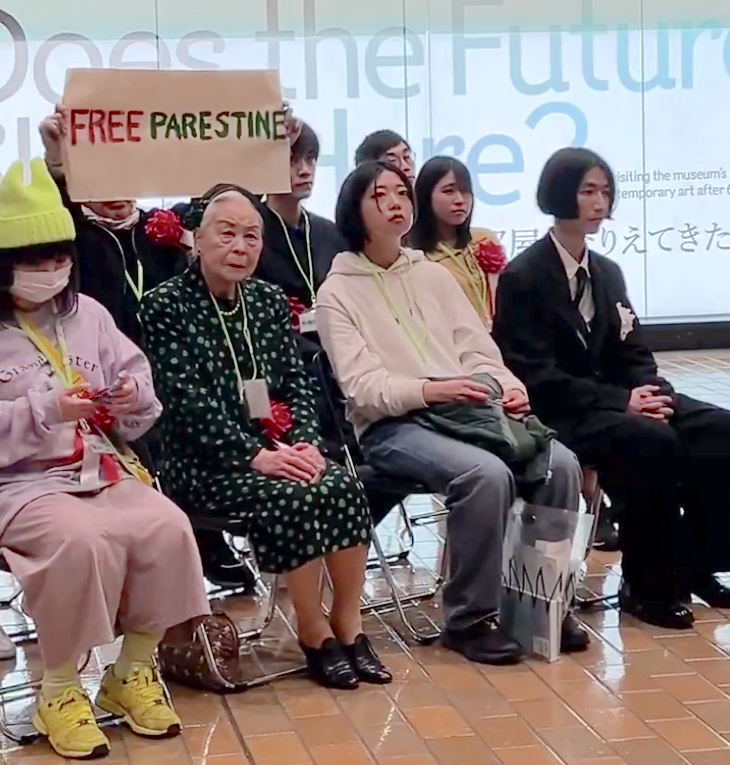
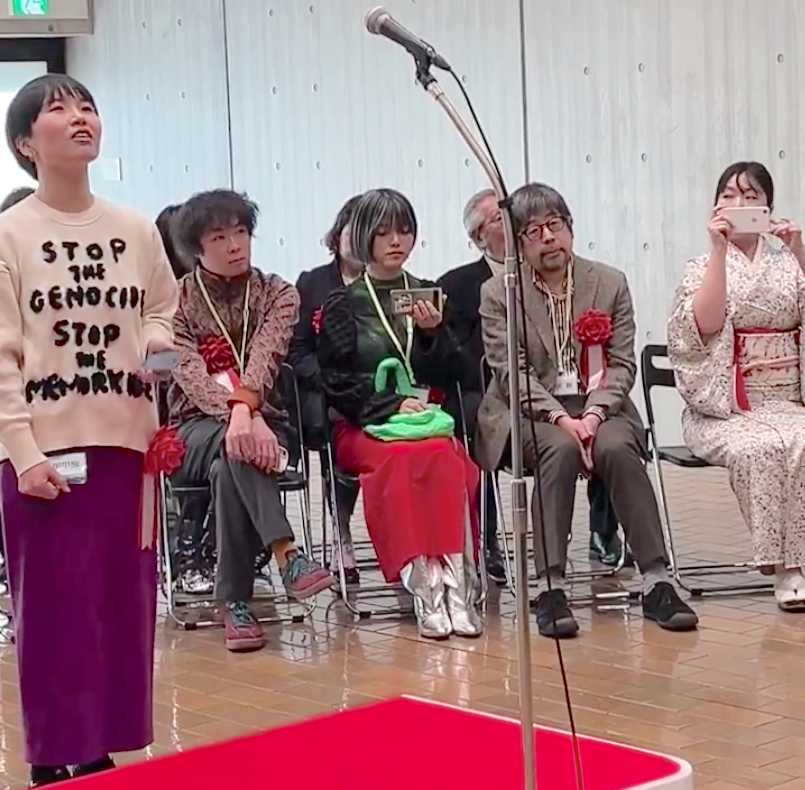
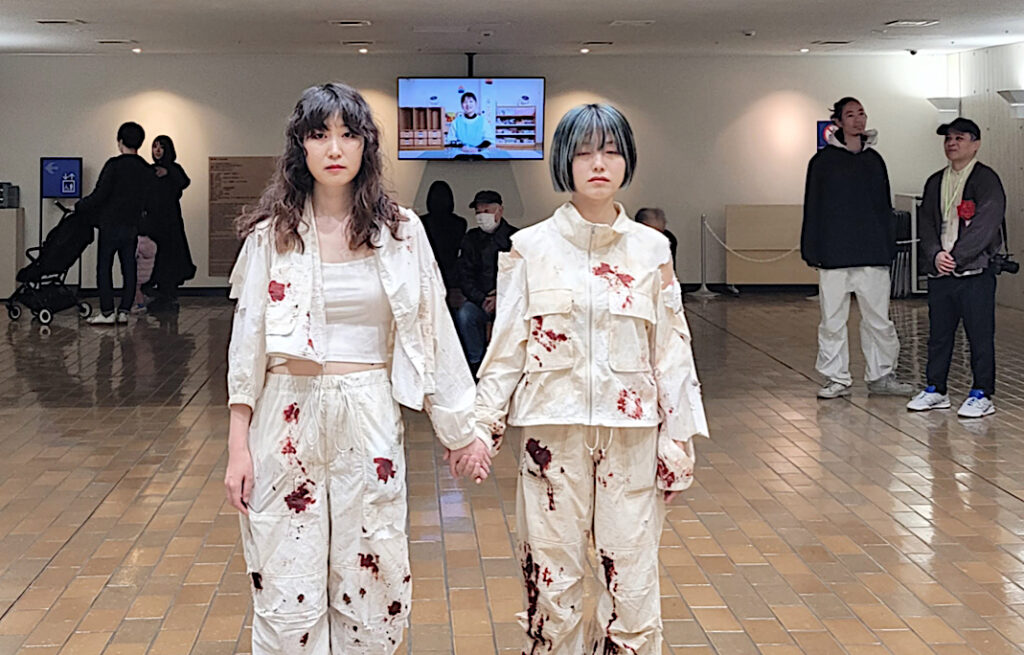

photos: cccs courtesy creative common sense。
Furthermore, one mysterious Japanese woman with Palestinian keffiyeh and sun glasses, shouting into the megaphone.
Who does NOT show her face! Show your face! Who are you?
Japan is a free, democratic country. We’re in a public museum! We don’t need cowards in the Japanese art world, like you, who hide their identity!!!
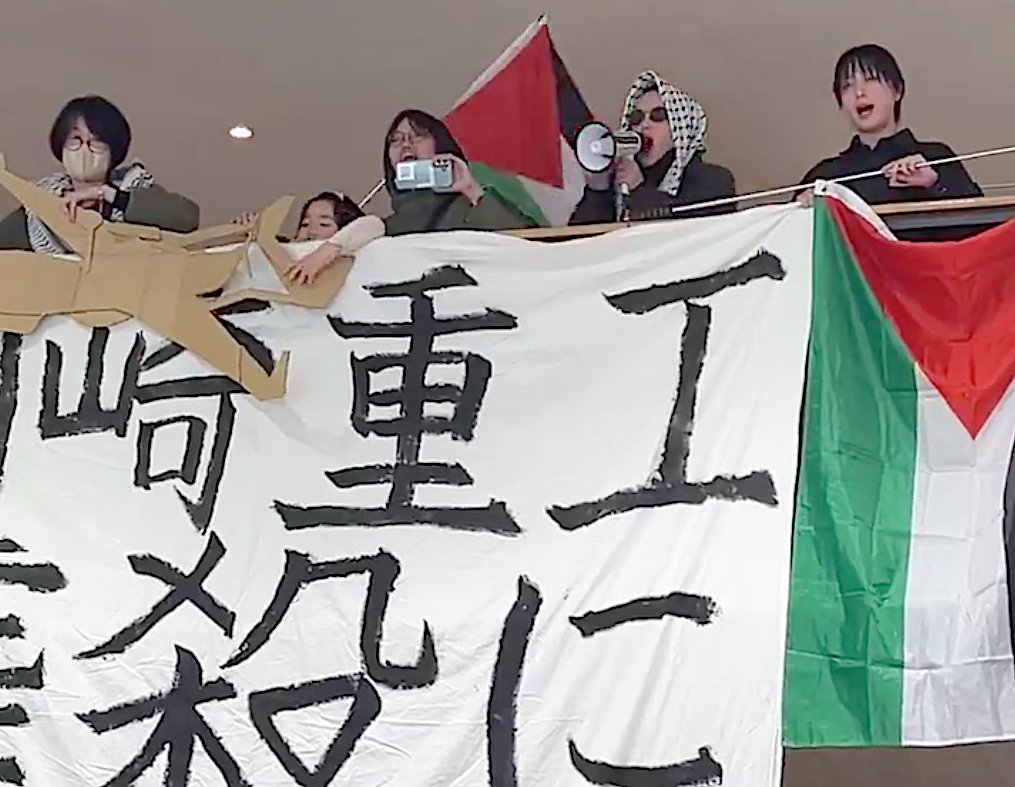

photos: cccs courtesy creative common sense。
Does Muslim Hamas allow women’s rights? No. Women’s representation is severely limited in decision-making bodies and forums. While Hamas brags of women’s participation in the Shura Council, whose recommendations are nonbinding, women are denied representation in and access to the political bureau, whose word is binding and final.

Last but not least.
This actual exhibition at The National Museum of Western Art 国立西洋美術館 mocks Picasso and his so-called “white men” colleagues. In some cases these Japanese STUPID artists show offending, disrespectful, childish attitudes. Using “wrong” Cezanne paintings. What a shame!
The Japanese population should be proud of being able to see masterpieces, just around the corner, like this one:
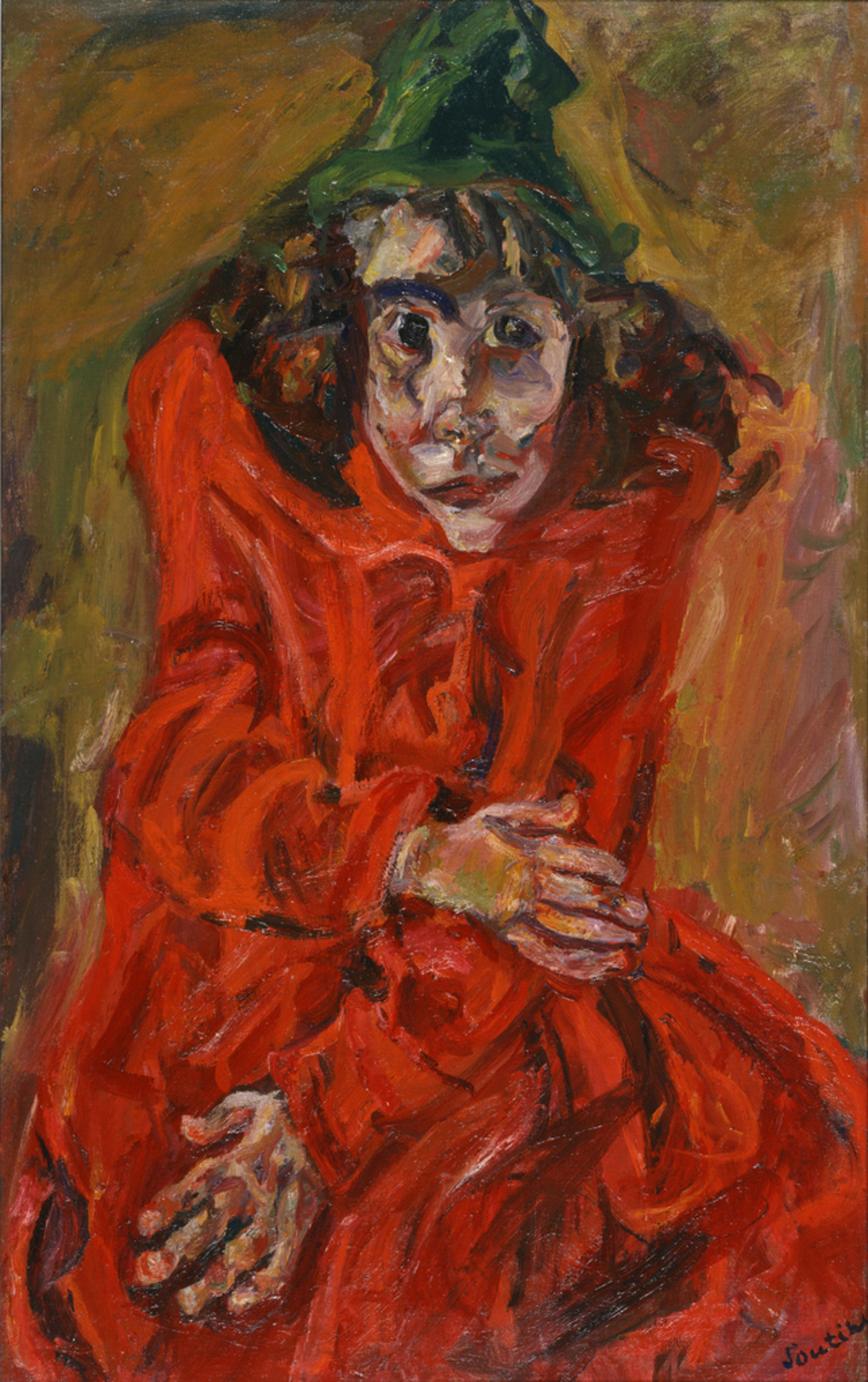
Following is the amazing list of artists in the collection of the National Museum of Western Art, Tokyo:
Heinrich Aldegrever (1502–1561), Germany
Albrecht Altdorfer (1480–1538), Germany
Edmond Aman-Jean (1860–1936), France
Jean Arp (1886–1966), France
Hans Baldung Grien (1484–1554), Germany
Giovanni Francesco Barbieri (1591–1666), Italy
Ernst Barlach (1870–1938), Germany
Leandro Bassano (1557–1622), Italy
Barthel Beham (1502–1540), Germany
Hans Sebald Beham (1500–1550), Germany
Stefano della Bella (1610–1664), Italy
Émile Bernard (1868–1941), France
Paul-Albert Besnard (1849–1934), France
Joachim Beuckelaer (1533–1574), Belgium
Leonardo Bistolfi (1859–1933), Italy
William Blake (1757–1827), UK
Jacques-Emile Blanche (1861–1942), France
Abraham Bloemaert (1564–1651), Netherlands
Cornelis Bloemaert (1603–1684), Netherlands
Pierre Bonnard (1867–1947), France
François Bonvin (1817–1887), France
Abraham Bosse (1602–1676), France
François Boucher (1703–1770), France
Emile-Antoine Bourdelle (1861–1929), France
Dierick Bouts (1420–1475), Netherlands
Félix Bracquemond (1833–1914), France
Georges Braque (1882–1963), France
Pieter Brueghel (1525–1569), Belgium
Hendrick ter Brugghen (1588–1629), Netherlands
Charles Le Brun (1619–1690), France
Bernard Buffet (1928–1999), France
Hans Burgkmair (1473–1531), Germany
Jacques Callot (1592–1635), France
Giulio Campagnola (1482–1516), Italy
Robert Campbell (1944–1993), Australia
Canaletto (1697–1768), Italy
Agostino Carracci (1557–1602), Italy
Jean-Baptiste Carpeaux (1827–1875), France
Eugène Carrière (1849–1906), France
Bernardo Cavallino (1616–1654), Italy
Paul Cézanne (1839–1906), France
Marc Chagall (1887–1985), France
Joos van Cleve (1480–1540), Germany
Charles-Nicolas Cochin (1688–1754), France
Edwaert Collier (1640–1707), Netherlands
Gillis van Coninxloo (1544–1606), Belgium
Lovis Corinth (1858–1925), Romania
Jean-Baptiste-Camille Corot (1796–1875), France
Charles Cottet (1863–1925), France
Gustave Courbet (1819–1877), France
Charles Antoine Coysevox (1640–1720), France
Lucas Cranach the Elder (1472–1553), Germany
Carlo Crivelli (1430–1494), Italy
Salvador Dalí (1904–1989), Spain
Charles-François Daubigny (1817–1878), France
Honoré Daumier (1808–1879), France
Alexandre Gabriel Decamps (1803–1860), France
Edgar Degas (1834–1917), France
Eugène Delacroix (1798–1863), France
Maurice Denis (1870–1943), France
André Derain (1880–1954), France
George Desvallières (1861–1950), France
Carlo Dolci (1616–1686), Italy
Kees van Dongen (1877–1968), Netherlands
Gerrit Dou (1613–1675), Netherlands
Jean Dubuffet (1901–1985), France
Raoul Dufy (1877–1953), France
Jean Duvet (1485–1570), France
Anthony van Dyck (1599–1641), Belgium
Albrecht Dürer (1471–1528), Germany
James Ensor (1860–1949), Belgium
Max Ernst (1891–1976), Germany
William Etty (1787–1849), UK
Henri Fantin-Latour (1836–1904), France
Lyonel Feininger (1871–1956), US
Georges de Feure (1868–1943), France
Copley Fielding (1787–1855), UK
Jean-Louis Forain (1852–1931), France
Tsuguharu Foujita (1886–1968), Japan
Jean-Honoré Fragonard (1732–1806), France
Sam Francis (1923–1994), US
Paul Gauguin (1848–1903), France
Claude Gellée (1600–1682), France
Jacques de Gheyn II (1565–1629), Belgium
Giorgio Ghisi (1512–1582), Italy
Alberto Giacometti (1901–1966), Switzerland
Albert Gleizes (1881–1953), France
Vincent van Gogh (1853–1890), Netherlands
Hendrick Goltzius (1558–1616), Germany
Francisco de Goya (1746–1828), Spain
Jan van Goyen (1596–1656), Netherlands
El Greco (1541–1614), Greece
Richard Hamilton (1922–2011), UK
Cornelis de Heem (1631–1695), Netherlands
Jean-Jacques Henner (1829–1905), France
Auguste Herbin (1882–1960), France
William Hogarth (1697–1764), UK
Hans Holbein (1497–1543), Germany
Jean-Auguste-Dominique Ingres (1780–1876), France
Tim Johnson (born 1947), Australia
Jacob Jordaens (1593–1678), Belgium
Wassily Kandinsky (1866–1944), Russia
Max Klinger (1857–1920), Germany
Käthe Kollwitz (1867–1945), Germany
Alfred Kubin (1877–1959), Germany
Nicolas Lancret (1690–1743), France
Nicolas de Largillière (1665–1746), France
Jean Launois (1898–1942), France
Ernest Laurent (1859–1929), France
Le Corbusier (1887–1965), Switzerland
Bernard Leach (1887–1979), Hong Kong
Henri Lebasque (1865–1937), France
Fernand Léger (1881–1955), France
Alphonse Legros (1837–1911), France
Stanislas Lépine (1835–1892), France
Lucas van Leyden (1489–1533), Netherlands
Léon Augustin Lhermitte (1844–1925), France
Pietro Longhi (1702–1785), Italy
Alessandro Magnasco (1667–1749), Italy
Aristide Maillol (1861–1944), France
Édouard Manet (1832–1883), France
Andrea Mantegna (1431–1506), Italy
Henri Matisse (1869–1954), France
Charles Meryon (1821–1868), France
John Everett Millais (1829–1896), UK
Jean-François Millet (1814–1875), France
Joan Miró (1893–1983), Spain
Paula Modersohn-Becker (1876–1907), Germany
Amedeo Modigliani (1884–1920), Italy
Claude Monet (1840–1926), France
Bartolomeo Montagna (1440–1523), Italy
Adolphe Joseph Thomas Monticelli (1824–1886), France
Henry Moore (1898–1986), UK
Gustave Moreau (1826–1898), France
Sally Morgan (born 1951), Australia
Alphonse Mucha (1860–1939), Czechoslovakia
Edvard Munch (1863–1944), Norway
Bartolomé Esteban Murillo (1618–1682), Spain
Jean-Marc Nattier (1685–1766), France
Robert Owen (born 1937), Australia
Arturo Pacheco Altamirano (1903–1978), Chile
Samuel Palmer (1805–1881), UK
George Papazov (1894–1972), Bulgaria
Mike Parr (born 1945), Australia
Jules Pascin (1885–1930), Bulgaria
Jean-Baptiste Pater (1695–1736), France
Joachim Patinir (1475–1524), Belgium
Pablo Picasso (1881–1973), Spain
Francesco Piranesi (1778–1810), Italy
Giovanni Battista Piranesi (1720–1778), Italy
Camille Pissarro (1830–1903), US
Jackson Pollock (1912–1956), US
Paulus Pontius (1603–1858), Belgium
Pierre Puvis de Chavannes (1824–1898), France
Odilon Redon (1840–1916), France
Guido Reni (1575–1642), Italy
Pierre-Auguste Renoir (1841–1919), France[1]
Alfred Rethel (1816–1959), Germany
Joshua Reynolds (1723–1792), UK
José de Ribera (1591–1652), Spain
Rembrandt van Rijn (1606–1669), Netherlands
Henri Rivière (1864–1951), France
Hubert Robert (1733–1808), France
Auguste Rodin (1840–1917), France
Félicien Rops (1833–1898), Belgium
Salvatore Rosa (1615–1673), Italy
Dante Gabriel Rossetti (1828–1882), UK
Georges Rouault (1871–1958), France
Peter Paul Rubens (1577–1640), Germany
Ed Ruscha (born 1937), US
Jacob van Ruisdael (1630–1681), Netherlands
Egidius Sadeler (1570–1629), Belgium
Francesco Salviati (1510–1563), Italy
Ary Scheffer (1795–1858), Netherlands
Martin Schongauer (1450–1491), France
Cornelis Schut (1597–1655), Belgium
Giovanni Segantini (1858–1899), Italy
Daniel Seghers (1590–1661), Belgium
Jacopo del Sellaio (1442–1493), Italy
Paul Sérusier (1864–1927), France
Ben Shahn (1898–1969), US
Paul Signac (1863–1935), France
Alfred Sisley (1839–1899), France
John Sloan (1871–1951), US
Chaïm Soutine (1893–1943), Romania
Jan Steen (1626–1679), Netherlands
Herman van Swanevelt (1600–1655), Netherlands
David Teniers the Younger (1610–1690), Belgium
David Teniers the Elder (1582–1649), Belgium
Giovanni Battista Tiepolo (1696–1770), Italy
Giovanni Domenico Tiepolo (1727–1804), Italy
Jacopo Tintoretto (1518–1594), Italy
Jan Toorop (1858–1928), Netherlands
Henri de Toulouse-Lautrec (1864–1901), France
Georges de La Tour (1593–1653), France
Joseph Mallord William Turner (1775–1851), UK
Adriaen van Utrecht (1599–1653), Belgium
Armand Vaillancourt (born 1929), Canada
Félix Vallotton (1865–1925), Czechoslovakia
Giorgio Vasari (1511–1574), Italy
Agostino Veneziano (1490–1536), Italy
Claude Joseph Vernet (1714–1789), France
Paolo Veronese (1528–1588), Italy
Jacques Villon (1875–1963), France
Maurice de Vlaminck (1876–1958), France
Heinrich Vogeler (1872–1942), Germany
Lucas Vorsterman (1595–1675), Netherlands
Marten de Vos (1532–1603), Belgium
Édouard Vuillard (1868–1940), France
Rogier van der Weyden (1399–1464), Belgium
James McNeill Whistler (1834–1903), US
Richard Wilson (1714–1782), UK
On a personal note: I am the first collector of TAKANO Ryudai 鷹野隆大, and the collector of works by my colleagues NAGASHIMA Yurie 長島有里枝, TANAKA Koki 田中功起 (= help + coordination) and UMETSU Yōichi 梅津庸一.
The mastermind behind this exhibition is UMETSU Yōichi 梅津庸一. His dream was to exhibit in this museum, obviously because of his painting style. Which is o.k. and nothing new in the context of being an artist with big goals.
As he couldn’t get a solo show in this museum, he had to think about a concept to realise a group show. Which is fine with me, too.
However!
1) Obviously, or strangely (depending on your standing point as a Japanese contemporary art insider), he succeeded in bringing his name UMETSU Yoichi 梅津庸一,
2) PLUS(!) his own “group” Parplume パープルーム, composed of some childish artist friends (UMETSU Yoichi 梅津庸一 + ANDO Yumi 安藤裕美 + HOSHIKAWA Asako 星川あさこ + TSUZUKIBASHI Hitoko 續橋仁子 + WAKIMOTO Saki わきもとさき) with mediocre bull-shit works, into the line-up.
3) He also succeeded in bringing his former wife SAKAMOTO Natsuko 坂本夏子 (as a collaborative painting SAKAMOTO Natsuko 坂本夏子 + UMETSU Yōichi 梅津庸一 「絵作り」(“picture creation”)) into this questionable museum show.
WTF!
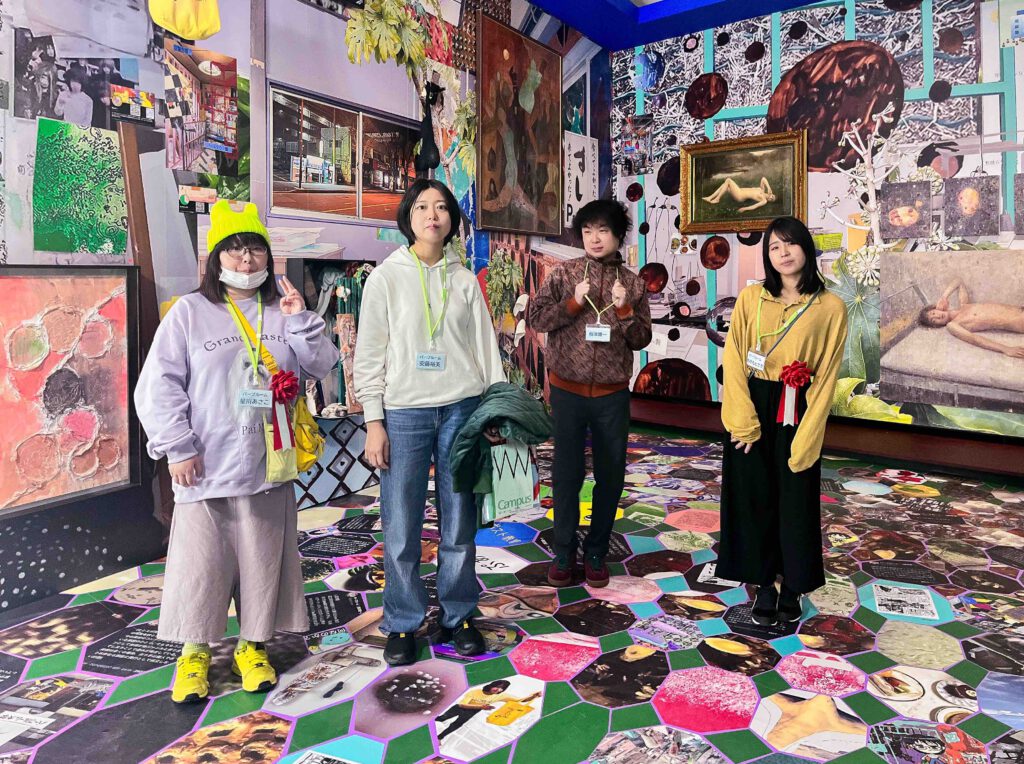
右からメンバーのわきもとさき、梅津庸一、安藤裕美。
そして星川あさこ。
画像提供:Romance_JCT // From X, see the link. ここに載せた写真とスクリーンショットは、すべて「好意によりクリエーティブ・コモン・センス」の文脈で、日本美術史の記録の為に発表致します。
Creative Commons Attribution Noncommercial-NoDerivative Works
photos: cccs courtesy creative common sense
Link_https://twitter.com/misonikomioden/status/1768252791745831018/photo/1
Aside from above mentioned anomaly, the most scandalous fact is the bad treatment of my colleague NAGASHIMA Yurie 長島有里枝. She is actually one of the most important artists in Japan. Check:
ソーシャリー・エンゲイジド、優れたアーティスト長島有里枝:母性・文学・盲目、、、写る可能性と不可能 @ 横浜市民ギャラリーあざみ野 & ちひろ美術館
Socially Engaged, Excellent Artist NAGASHIMA Yurie: Motherhood – Literature – Blindness… Possible and Impossible Photography @ Yokohama Civic Art Gallery – Azamino & Chihiro Art Museum
https://art-culture.world/articles/nagashima-yurie-excellent-artist/
However, Umetsu and the curator in charge did NOT give her the adequate space!! Neither could she show her strong and representative works!
Nagashima had been treated by the curatorial team like a piece of shit!
Not with the proper respectful attitude!!!
Umetsu-kun, FUCK YOU!!

Does the Future Sleep Here?
――Revisiting the museum’s response to contemporary art after 65 years
Tuesday, 12 March – Sunday, 12 May 2024
https://www.nmwa.go.jp/en/exhibitions/2023revisiting.html
Participating artists:
ENDO Mai, FUSE Rintaro, IIYAMA Yuki, MATSUURA Hisao, MIYAGI Futoshi, NAGASHIMA Yurie, NAITO Rei, NAKABAYASHI Tadayoshi, ODAWARA Nodoka, OZAWA Tsuyoshi, Parplume (UMETSU Yoichi + ANDO Yumi + HOSHIKAWA Asako + TSUZUKIBASHI Hitoko +WAKIMOTO Saki), SAKAMOTO Natsuko, SUGITO Hiroshi, TAKANO Ryudai, TAKEMURA Kei, TANAKA Koki, TATSUNO Toeko, Elena TUTATCHIKOVA, UMETSU Yoichi, YUASA Ebosi, YUMISASHI Kanji
Again, this shameful, amateurish, KOENJI-esque 高円寺化 show at The National Museum of Western Art 国立西洋美術館 mocks Picasso and his “white men” colleagues.
Picasso was partly of Arabic origin, with North African roots. Picasso is NOT a WHITE painter.
Let me quote my sentences from 2018:
“If Theater Gates calls himself a “Black Artist”, I, Mario A, will call myself a “Yellow Artist”. His creative practice would be “Black Art”, mine “Yellow Art”.
Let’s have a laugh:
Black Panther Artist vs. Yellow Jaguar Artist.
Why should we rewrite (Western) art history?
For example, 100 years ago “White Painting” in the “Western Art Canon” had been already re-contextualized, emancipated by Gabriele Münter, Oskar Kokoschka, Otto Müller, Ernst Ludwig Kirchner, Max Pechstein, Emil Nolde and many more… The faces and bodies are painted in green, red, yellow, black, etc…
Picasso was partly of Arabic origin, with North African roots. Picasso is NOT a WHITE painter.
Tokyo-Basel, 2018/7/1
Mario A”
more @
バーゼル市立美術館の学芸員フィアスコ:「ブラック・マドンナ」 (キリスト教) vs. 「ブラック・天皇」 (神道)
Curatorial Fiasco at the Kunstmuseum Basel: “Black Madonna” (Christianity) vs. “Black Tenno” (Shintoism)
https://art-culture.world/articles/curatorial-fiasco-at-the-kunstmuseum-basel-theaters-gates-black-madonna/
Up-date 2024/3/14: Regarding NAGASHIMA Yurie 長島有里枝, she published today the following statement on her IG account:
yurienagashima
.
国立西洋美術館で行なわれているグループ展に参加しています。
参加を打診されてから会期スタートまで6ヶ月、もらった壁には階段への出入り口と非常口の緑のサイン、それから作品や重機を出し入れするいわゆる「搬入口」のような大きな扉がついている、、、。
最後の参加作家だから、そこ以外に選択肢はなく、新作を作る時間もない。つまり、参加を決めるならもう、持てるものを生かしてやりたいことをやるしかない。
だから非常口マークの光る人も、養生テープで描かれた扉型の壁の模様も全部参加者として迎え入れ、昨年、名古屋でおこなった「ケアの学校」のアーカイブ展示を、西洋美術館バージョンでお届けすることにしました。
何人かの作家さんがSNSで言及してるのを見かけ、そういえば!といまさら思ったんですが、展示空間は「セクション」で分けられています。わたしの場合、属する「セクション」と自分のインスタレーションとの関係性はないです。先に言ったけど、場所の選択肢はありませんでしたし、セクションの意図の丁寧な説明や話し合いを持つ時間がなかった。ていうか、そもそも自分がなんの括りか知らない….。ま、いっか、括られるの嫌いだし、訳が分からず困惑したままそこにいる人間が1人ぐらいいてもいいだろ、と思ってます。
旧知のミヤギさんと鷹野さんと近くなのは嬉しかった。
今日は眠いので、またポツポツと作品について書きます。多分。記録しなきゃ…。
Automatic translation into English on IG. Unfortunately, a misleading translation, which I am NOT going to re-write, as it is important to show the original translation, not mine.
yurienagashima
.
Participating in a group exhibition at the National Museum of Western Art.
Six months until the start of the session after the participation was beaten, the sign I received was given with the entrance to the stairs and the emergency entrance door sign, and then a big sign like the so-called “wall entrance” where you can take out works and heavy machinery…
As I’m the last participating author, I have no choice but to make new ones. So if you decide to participate, you just have to do what you want with what you got.
Therefore, I accepted all the participants of the glowing people with emergency mouth marks and the patterns of hair-shaped hair drawn with lawn tape, and decided to present the archive exhibition of the “School of Care” that took place in Nagoya last year in the Western Art Museum version.
I see some writers being mentioned on social media, by the way! I just thought, but the exhibition space is divided into “sections”. In my case, it has nothing to do with the “sections” I belong to and my own installation. I said it before, there was no choice of location and no time to have a complicated explanation or discussion of the intentions of the section. I mean, I don’t even know what bracket I am in the first place…. Well, I don’t like being held up, and I think it’s nice to have at least one person there to be confused.
It was nice to be close to Miyagi-san and Sugano-san from Kochi.
I’m sleepy today, so I’ll write about my work again. Probably. Gotta take it down….
(End of the up-date)
Last.
In the same logical context of Iiyama’s political activism, every Japanese museum, every Japanese gallery, which showed, is showing, will show works by Japanese War Criminals Léonard Foujita (Léonard Tsuguharu Foujita レオナール・ツグハル・フジタ、藤田 嗣治) or YOKOYAMA Taikan 横山大観 should close. Be ashamed to endorse Japanese War Criminals.
If Iiyama wants to attack the precarious, “bad” influences of Japanese companies in Japanese museums (NOT the “poor” Kawasaki Heavy Industries 川崎重工株式会社 with its many hard working, poor workers), she may 🤣 start with the Mori Art Museum in Roppongi, Tokyo. Not only with the Mori Building Company, Limited 森ビル株式会社 but with the Dango 談合 – related OBAYASHI CORPORATION 大林組. Check this one 🤣。
OBAYASHI CORPORATION
Opinion of the Board of Directors of the Corporation Regarding the Shareholder Proposal
https://www.obayashi.co.jp/en/ir/upload/img/news20230511_6_en_01.pdf
Or, dear Iiyama-san, how about the “Jewish” Bloomberg’s “infiltration” into the public MUSEUM OF CONTEMPORARY ART TOKYO (MOT) 東京都現代美術館? 🤣
PLUS:
Kubota: …Eventually I left my first husband, David Behrman, and got married to Nam June.
Rail: Did your parents object to the fact that you were married to a Korean?
Kubota: From having a Jew to a Korean? Forget about it. They gave up on me a long time ago. [laugh]
see:
非常に優れている企画展「Viva Video! 久保田成子展」@ MOT!
(現代の最高の日本人アーティストである長島有里枝さんは久保田成子の正統な後継者)
https://art-culture.world/articles/kubota-shigeko-museum-of-contemporary-art-tokyo-久保田成子/
BRING THEM HOME NOW!
https://media.bringthemhomenow.net
I despise art works that have a political agenda. Their intent is always to manipulate, to convince the viewer of their respective ideologies. Ideologies, however, are artistically uninteresting.
Tokyo, 11th of March, 2024
Mario A
今日のおまけ Today’s bonus
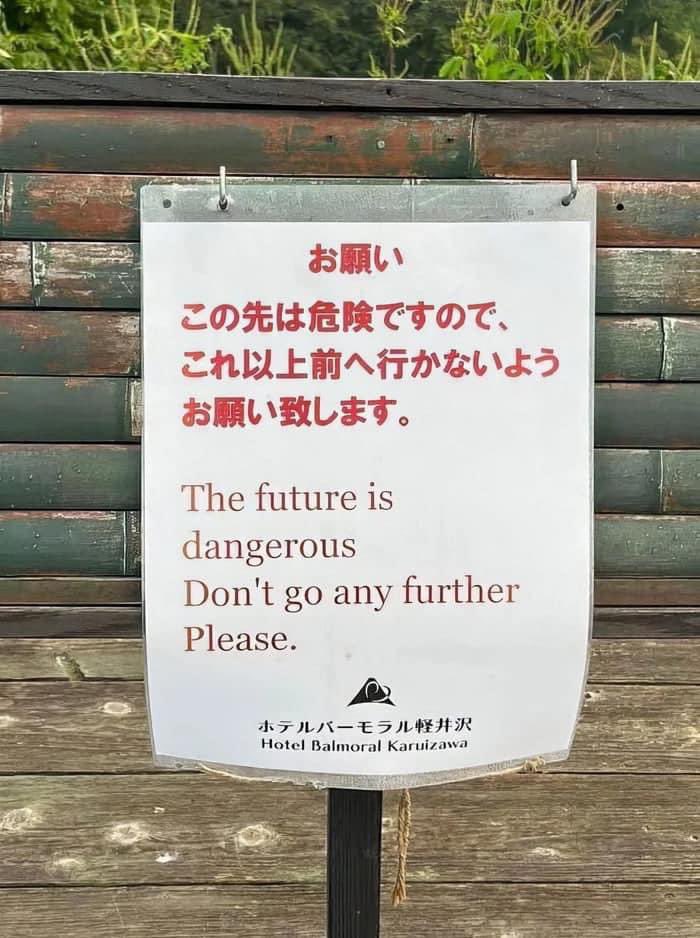
ここに載せたテクスト、写真とスクリーンショットは、すべて「好意によりクリエーティブ・コモン・センス」の文脈で、日本美術史の記録の為に発表致します。
Creative Commons Attribution Noncommercial-NoDerivative Works
photos + texts: cccs courtesy creative common sense
出品作家、ガザ侵攻に抗議活動 国立西洋美術館、警察が監視
毎日新聞 2024/3/11 21:21(最終更新 3/11 21:22)
モネなどを収蔵する国立西洋美術館(東京都台東区)で12日から開催される企画展の内覧会で11日、出品作家や市民がイスラエルのパレスチナ自治区ガザへの侵攻を巡って抗議活動を行った。警察が美術館内に入り、作家のパフォーマンスを監視するなど、異例の事態となった。
展覧会は、同館が開館以来初めて現代作家を扱った企画展「ここは未来のアーティストたちが眠る部屋となりえてきたか?」。参加作家らも集まった記者説明会の最後に、出品作家の飯山由貴さんがイスラエルのガザ侵攻に抗議。同館のオフィシャルパートナーを務める企業が、防衛省が導入を検討中のドローンを輸入販売しようとしているとして、同館に対して、企業に輸入販売を取りやめるよう働きかけてほしいと訴えた。
同館の田中正之館長は「他のアーティストに迷惑をかけることにもなり、遺憾に思っている」としつつ、「言論の自由は保障されているので、尊重したい」と語った。
一方、飯山さんに賛同する有志が美術館の2階ベランダで外に向かって声明を読み上げていたところ、警察が出動。その後、出品作家の遠藤麻衣さんと、友人の作家、百瀬文さんが展示室前ロビーで無言でパフォーマンスを行っていたところ、警察官がパフォーマンスの様子やロビーにいる人を撮影するなどして監視する場面もあった。美術館側は通報していないという。
オフィシャルパートナーの企業は「防衛省との間でそのような案件があるのは確かだが、輸入先については公表する段階にない」としている。【高橋咲子】
https://mainichi.jp/articles/20240311/k00/00m/040/290000c
(with coming up-dates!)
Up-date 2024/3/15
Schumer’s anti-Netanyahu speech stuns Israel
Senate Majority Leader Chuck Schumer’s (D-N.Y.) speech calling for a new government in Israel landed like an earthquake Thursday, delivering a huge shock to the already tense U.S.-Israel relationship.
Why it matters: In addition to being the most senior Jewish elected official in the country, Schumer has had one of the longest and closest relationships with Israeli Prime Minister Benjamin Netanyahu of any U.S. politician.
Schumer’s speech stunned officials and observers in both Washington and Jerusalem because he has been — and still is — the Democratic Party’s most avid supporter of Israel in decades.
His harsh remarks about Netanyahu create more political space for other Democratic members of Congress to publicly voice their criticism of the Israeli government amid the ongoing war in Gaza.
Flashback: To understand how significant the comments were, one must return to March 2015 — when Schumer was one of the only Senate Democrats who didn’t criticize Netanyahu’s famous speech to Congress railing against the Iran nuclear deal.
Several months later, Schumer was one of the only Senate Democrats to vote against the deal — defying President Obama and siding with Netanyahu.
This is why Schumer was the last person Netanyahu expected to stand on the Senate floor Thursday and call him one of “four major obstacles to peace” — along with Hamas, Palestinian Authority President Mahmoud Abbas and radical right-wing Israelis.
Between the lines: U.S. officials and Senate Democrats say Schumer’s comments reflect the change in public sentiment toward Netanyahu’s government — especially inside the Democratic Party and the mostly liberal Jewish American community.
One Democratic senator said that in 2015, Schumer wouldn’t have been able to set foot in many New York synagogues if he voted in favor of the Iran deal; after this speech, he’ll be welcomed there with praise.
The senator added that Schumer’s speech reflects what the majority of Jews in America feel — they support Israel and want to destroy Hamas, but are fed up with Netanyahu and his radical right-wing government.
Behind the scenes: Schumer told senior White House officials on Wednesday that he was going to give a speech about Israel, but he didn’t give them a copy of the speech or ask for their permission, U.S. officials told Axios.
The White House didn’t encourage Schumer, but also didn’t stop him. Several White House officials were surprised by how harsh he was.
“I don’t know if people in Israel really understand how big of a step it is for him to do this,” one U.S. official said.
The big picture: The White House has sought to tamp down its public spat with Netanyahu in recent days, after concluding that the escalating tensions only serve the Israeli prime minister’s domestic political interests, a U.S. official said.
The intrigue: This was the second time this week that a U.S. official publicly commented on Netanyahu’s political weakness.
On Tuesday, the director of national intelligence’s annual threat assessment determined that Netanyahu’s “viability” as prime minister may be in jeopardy due to Israeli discontent.
How it’s playing: Netanyahu, who over the years has been accused many times of meddling in U.S. politics, hit back hard against Schumer’s comments.
“Israel is not a banana republic but an independent and proud democracy that elected Prime Minister Netanyahu,” the ruling Likud Party said in a statement, accusing Schumer of undermining a democratically elected government.
Polls published Wednesday in all three major TV channels in Israel found that the majority of Israelis want early elections — and that if elections were held today, Netanyahu would be defeated by his rival minister Benny Gantz.
But Gantz chose to distance himself from Schumer’s comments, saying that the Senate leader made a mistake by giving such a speech and that any intervention in Israel’s domestic politics is unacceptable.
https://www.axios.com/2024/03/14/schumer-israel-netanyahu-speech-reaction
End of up-date (2024/3/15)
Vice Chancellor and Federal Minister Robert Habeck Speech on Israel and anti-Semitism
01.11.2023
Hamas’ terrorist attack on Israel took place almost four weeks ago now.
A lot has happened since then. Not only politically, but especially for the people. So many people’s lives are now consumed by fear and suffering.
Public debate since the attack has been heated, sometimes muddled.
I want to use this video to help make things clearer. Too much seems to me to have been mixed up too quickly.
The phrase, “Israel’s security is part of Germany’s raison d’état” has never been an empty phrase, and it must not become one. It means that Israel’s security is essential for us as a country.
This special relationship with Israel stems from our historical responsibility. It was the generation of my grandparents that wanted to exterminate Jewish life in Germany and Europe.
After the Holocaust, the founding of Israel was the promise of protection to the Jews – and Germany is compelled to help ensure that this promise can be fulfilled. This is a historical foundation of our republic.
Our historical responsibility also means that Jews must be able to live freely and safely in Germany. That they never again have to be afraid to openly show their religion and their culture. But it is precisely this fear that is back.
I recently met with members of the Jewish community in Frankfurt. In the intense, painful talk we had, the community representatives told me that their children are afraid to go to school, that they no longer go to sports clubs, that they leave their necklaces with the Star of David at home on the advice of their parents.
Today, here in Germany. Almost 80 years after the Holocaust.
They told us that they no longer dare to get into a taxi, that they no longer put return addresses on letters to protect their recipients.
Today, here in Germany. Almost 80 years after the Holocaust.
And a Jewish friend told me about his fear, his sheer despair, his feeling of loneliness. The Jewish communities warn their members to avoid certain places – for their own safety.
And this is the reality here today, in Germany, almost 80 years after the Holocaust.
Anti-Semitism is being seen at demonstrations, in statements, in attacks on Jewish shops, in threats.
While large waves of solidarity are shown when there are racist attacks for example, solidarity quickly becomes fragile when it comes to Israel. People say that the context is complex. But contextualisation must not lead to relativization.
It is true, that in our debate culture, there is often too much shock and outrage. But here, we cannot be outraged enough. What is needed now is clarity, not a blur.
And to be clear: anti-Semitism is not to be tolerated in any form – whatsoever.
The scale of the Islamist demonstrations in Berlin and other cities in Germany is unacceptable and needs a tough political response. This is also needed from the Muslim associations. Some have clearly distanced themselves from the actions of Hamas and from anti-Semitism, and have sought dialogue. But not all of them – some have been too hesitant to do so, and it’s been too few overall.
Muslims living here are entitled to protection from right-wing extremist violence – and rightly so. When they are attacked, their right to protection must be honoured and they must also honour this right of the Jews now that the Jews have been attacked. They must clearly distance themselves from anti-Semitism so as not to undermine their own right to tolerance. There is no place for religious intolerance in Germany.
Whoever lives here does so according to the rules of this country. And whoever comes here must know that this is how it is and that this will be enforced.
Our constitution provides protection and bestows rights, but it also imposes obligations that must be fulfilled by all. You cannot separate the two. Tolerance cannot tolerate intolerance here. This is the core of our coexistence in the Federal Republic of Germany.
This means that burning Israeli flags is a criminal offence, as is praising Hamas terror. Any German citizen who does this will have to answer for such offences in court; those who are not German citizens will also risk their residency status. Anyone who does not yet have a residence permit will have provided a reason to be deported.
Islamist anti-Semitism, however, should not blind us to the fact that we also have entrenched anti-Semitism in Germany. The only difference is that the right-wing extremists are currently holding back, for purely tactical reasons, in order to be able to agitate against Muslims. Relativising the Second World War, the Nazi regime as a “minor incident” is not only relativising the Holocaust, it is a slap in the face of the victims and survivors. Everyone who listens should know this and needs to understand. The Second World War was a war of extermination against Jews; for the Nazi regime, the annihilation of European Jewry was always the main goal.
And because there are many Putin admirers among the right-wing extremists, let me say this: Putin has his picture taken with representatives of Hamas and the Iranian government and deplores the civilian victims in Gaza whilst at the same time creating civilian victims in Ukraine. And his friends in Germany are certainly not friends of the Jews.
But I am also concerned about the anti-Semitism in parts of the political left, and sadly among young activists as well. Anti-colonialism must not lead to anti-Semitism. In this respect, this part of the political left should review its arguments and distrust the big resistance narrative. The “both sides” argument is misleading here. Hamas is a murderous terrorist group fighting for the annihilation of the state of Israel and the death of all Jews. The clarity with which the German section of Fridays For Future, for example, has stated this, and the fact it has done so in contrast to its international friends, is more than respectable.
When I was in Turkey recently, it was thrown into my teeth that pro-Palestinian demonstrations are banned in Germany. And that Germany must also apply its humanitarian demands to the people in Gaza. I made it clear that criticism of Israel is of course allowed here. That it is not banned for people to stand up for the rights of the Palestinians and also their right to their own state. But calling for violence against Jews or celebrating violence against Jews is prohibited – and rightly so!
Yes, life in Gaza is life in poverty without prospects for the future. Yes, the settler movement in the West Bank is fomenting discord and robs the Palestinians of hope and rights and, increasingly, lives. And the suffering of the civilian population now at war is a fact, a terrible fact. Every dead child is one dead child too many.
I, too, call for humanitarian supplies, and am committed to ensuring that water, medicines, and relief supplies are delivered to Gaza, and that the refugees are protected. Together with our American friends, we are making it clear to Israel time and again that the protection of the civilian population is paramount. The death and suffering that is now engulfing the people of Gaza is terrible.
To say this is as necessary as it is legitimate. Systematic violence against Jews, however, can still not be legitimised by this. Anti-Semitism cannot be justified by this.
Of course, Israel must abide by international law and international standards. But the difference is this: would someone ever frame such expectations of Hamas?
And because I was recently confronted abroad with how the attack on Israel on the 7th of October was downplayed as – quote – an “unfortunate incident”, and even the facts were called into question, let me remind you here once again: it was Hamas, who cruelly murdered children, parents, and grandparents in their homes.
Whose fighters mutilated corpses, kidnapped people and laughingly exposed them to public humiliation.
There are accounts of sheer horror – and yet Hamas is hailed as a freedom movement? This is a reversal of the facts, which we cannot allow to stand.
And this brings me to the last point:
The attack on Israel took place in a phase of rapprochement between several Muslim states and Israel. There are the Abraham Accords between Israel and Muslim countries of the region. Jordan and Israel are working together on a major drinking water project. Saudi Arabia was on the way to normalising its relations with Israel.
But peaceful coexistence of Israel and its neighbours, of Jews and Muslims,
and the prospect of a two-state solution – are not what Hamas and its supporters, especially the Iranian government, want. They want to destroy it.
Those who have not given up hope for peace in the region, those who believe in the right of the Palestinians to a state of their own and a real perspective – as we do – must now differentiate in these difficult weeks.
And differentiating means to acknowledge that the murderous acts of Hamas are intended to prevent peace. Hamas does not want reconciliation with Israel,
but the extermination of Israel.
And this is why it is pivotal to make it clear that Israel’s right to exist must not be relativised. Israel’s security is our obligation. Germany knows this.
Elfriede Jelinek “Kein Einer und kein Andrer mehr”
Translated by Gitta Honegger
No More One or the Other

Yes, Ernst Jandl: Humanityyyyyy, we certainly could use a little bit of it. Since the attack of Hamas, I no longer know what this is supposed to be. It becomes a piece of paper on which many beautiful things have been written and then set on fire. And then the ashes, as perhaps in the case of Arthur Schnitzler’s divorce from his wife Olga before a Munich Rabbinic Court, the ashes were ground above the heads of the participants. Now it rains forever on the heads of the [de]parted. An ash rain––that is humanity for you, when the wish to live and to care about and take care of this life depends on something that is not founded on life itself, but on a paradoxical dependence on the existence of others, however, as dominance in this dependence, since, in order to kill, others must be there, who can be defeated. Life a lack that wants to be filled. And then it is not even real lack which determine this life. This lack then consists of having to drift along, without finally killing others, called enemies. This sort of lack we can remedy, with weapons, of course. When fanatics rage, to whom life means nothing and death is something to aspire to, that makes you a martyr, allowed to repair to the virgins, then there are no more agreements about what life depends on and what it needs to maintain itself. So life was given to you, but now it is supposed to take care of it on its own? Why not just take it and throw it away, it will be much nicer and much more fun, like jumping jacks you throw on streets, where they leave no impression, the streets continue just lying there, gray and smooth. Well, then we rather move on to some kind of fun and sports vehicles (hang gliders!, motor cycles with stuff on them, pick-ups with still more on them, as if it were all about a gathering of fun athletes, and now let’s start shooting, and then we drink something guaranteed non-alcoholic, shoot a few more rounds and then we take our bloody booty home with us, maybe like a homerun in baseball, into cheerful everydayness, a leisure activity that gets you to casually jump over fences, because killing and dying which they don’t fear but desire, have become sports once and for all, if sports can’t be murder. The Christian: Oh death, where is your victory, oh death where is your sting, that’s what it says in 1 Corinthians, here it is answered, but not by Christians. Death as the opposite of desire. For the ones it is terror, loss of dear people or relatives, a draining of everything cherished; for the others this death is glorious fullness, reward, satisfaction, happy dependence on nothing but the final bullet and all other bullets, too. This team always wins, because in the end death comes anyway. So let it come sooner, we don’t have to always go the full distance. If you kill or if you die–this must be equated here, you can fill the emptiness with yourself, rectify the sucking lack and fill it with your own death, for which you were looking and longing, to your own eternalization, your own apotheosis. This is the sting now, we kill and we die, This is our joy. We are the champions.
Basically, all one can do is write around this blank of the unspeakable. The Thirty Years’ war that almost depopulated Europe started with clearly drawn lines, a religious war and a defenestration [plus a soft landing on a dung heap] in Prague until, in the end only marauders roamed across the devastated lands. The population was squeezed dry and gotten rid of by the warlords, as far as possible. Farther would have been preferred by the lords. Then killing would be less work. I beg your pardon, historians, the comparison limps, as they say in the poet’s mother togue, like Mother Courage and her cart that got stuck in the mud. But what can one say but not this way, so then what other way or not at all? The great did not stay great and small not the small, my favorite line in the song of the Moldau (Brecht), and not one stone will be left on another, and most people were gone in the end. Those not born anymore and those born, no longer extend their hands to each other to this day. The chain has been cut apart with bolts and side-cutting pliers that separate sides irrevocably. The slaughtering, even in this 17th century war still knew the battle lines, agreements (even if no one keeps to them, there still are agreements, isn’t that reassuring), rigorously trained mercenary armies, new combat tactics, but there were agreements, that’s at least something. Now they still have to die again, on all sides, everywhere. In the smallest countries. Dying always works, even when there is no place for it.
But if there is only one goal that is the annihilation of the other as planned by the terror organization Hamas and it has always been planned––and there is no place in their heads for any other thoughts but this one, then the one no longer exists either. And if there is neither the one or the other, then civilization is at its end. It is a breach of everything that can still be negotiated. The same and the other cannot enter into a cognition that encompasses both,” writes the Jewish philosopher Emmanuel Lévinas. And furthermore: “The relations that the separated being maintains with what transcends it, are not produced on the ground of totality, do not crystallize into a system. Yet do we not name them together?”
No more together. Now it’s just shooting. And as the Nazis said about their invasion of Poland, Hamas say about their shooting, massacring, raping, torturing, they say, they are shooting back (and, of course, promptly) at something, that hasn’t even shot yet (at least not at that time). This other which has now irrevocably, since one never had anything else on one’s mind, this other then, who actually wants to say that there exists some sort of fellow human relationship between the attacker in his destructive rage and the attacked who does not have this destructive rage against that other one (and this is the fundamental difference between the two) this unconditional destructive rage of a terror gang against an Other–the only democratic state in the region does not annihilate this attacked state, but its attackers. With this crime, Hamas has destroyed itself once and for all. The hostage taking, also of the innocent Palestinians in their overcrowded strip of land, whom the terrorists claim to liberate (at the expense of the destruction of an entire country), takes everything away from them they could have ever attained. The more they affirm the legitimacy and righteousness of their actions, screaming and hurling insult everywhere, here, too, in Vienna, in front of St. Stephen’s Cathedral (yes, it makes you think right away of the thirty years’ war) backed up by the shouts of Austrian dollies, whose mommies might still be cleaning up their nurseries, or by young soccer fans who otherwise march and holler against something else, there are always grounds for marching, as well as opponents, what did I want to say, oh, yes, where did it start it has always started already, that’s a line I hope I still can nail: So then, the more they yell out the legality of their goal, out of totality into totality, this quasi State-terroristic pleasure of murdering these innocent, mostly dancing and celebrating people (State-terrorism? No corresponding state in sight!, no state emerges from such deeds, never ever) all the more emptiness emerges, a sucking vacuum and all the more quickly all efforts for the entrance exams to civilization expire. Hamas does not belong to it. Failed, even before the exam took place. A terrorist organization is not a member of civilization. Lévinas’ de novo and face to face, the I’s reception from the other, according to the philosopher. You can connect the other and the one with a simple “and”, but no religion, no ideology makes a face to face of both. The bow of religion is drawn, the arrow can fly any time, it always hits the target. But religion is not even cement, no, not even a partition wall. Religion is a phantom which, like clouds, can take on any formation. But clouds cannot shoot, They are what is left, smoke, dust, rubble. Religion now is not even something that separates, and even less something connective, of course. Now anyone opposite you has deteriorated into ash which has been ground between both hands of a god who does not exist, refer to him as much as you like (he is referred to most intensely, if you want nothing but destroy the other, ash, scattered over all of us, until the wind blows it apart. Blowing away above our heads. We only see the black smoke getting blown away and horror is all that is left.
Also see: Emmanuel Lévinas: Totality and Infinity.
https://www.elfriedejelinek.com
Thousands of people gathered in NYC’s Central Park to call for the release of the hostages.#BringThemAllHome pic.twitter.com/yrHd1ixciR
— Aviva Klompas (@AvivaKlompas) March 10, 2024
up-date 2024/3/31:
ここに載せたテクストは、すべて「好意によりクリエーティブ・コモン・センス」の文脈で、日本美術史の記録の為に発表致します。
Creative Commons Attribution Noncommercial-NoDerivative Works
The following text by Zahira Jaser @ FT: cccs courtesy creative common sense
Coming out as Palestinian
After years of not speaking publicly about my heritage, I now feel a duty to proclaim it
Zahira Jaser MARCH 30 2024
Many times in my life, I have omitted that I am Palestinian. When people asked, “Where is your name from?” I’d quickly respond, “It’s Arabic.” It was complicated enough being a young woman with a foreign accent on the trading floor of a US investment bank in London. No need to confuse people further.
But during the bombing of Gaza in 2021, something changed. The suffering I felt seeing my people killed, amid the silence of public opinion, was too much. I started to speak up about my identity. One day, I met some friends for coffee. One of them asked me why I looked so sad. “Because I am Palestinian,” I said. Another told me recently she remembered thinking, “that’s when you came out as Palestinian.”
I am Palestinian and Italian, with fair skin, blue eyes and a slight Italian accent. I am not “obviously” Palestinian — many people think I am European when they meet me — so it did feel like a coming out. Do not misunderstand me, being Palestinian is one of the greatest honours of my life. But it can feel like a highly stigmatised identity, reinforced by racist assumptions. This is a reality lived by many Palestinians.
The academics Yasmeen Abu-Laban, who is Palestinian, and Abigail Bakan, who is Jewish, both of whom are based in Canada, argue that discrimination directed at Palestinians takes three forms. First, the denial of Palestinian history, or even the existence of a Palestinian people. Second, the denial of the inequality they experience under Israel’s regime. And, finally, the blanket assumption that Palestinians and their allies support terrorism and antisemitism. I have experienced all three.
I now understand better than ever a fear that many of my Jewish friends have talked about: the fear of being erased
In the past, I simply glossed over these episodes. But the current violence against Palestinians in Gaza, tantamount to genocide, is taking such a toll on me that I cannot function properly any more. (Editor’s note: Israel denies a genocide is taking place.) In the past five months I have not been able to think clearly. I start tasks and forget to finish them. I am always tired, always sad. Naturally a strong and cheerful workaholic, I have lost interest in work and in talking to other people.
Since I began writing this essay several months ago, the insufficient level of humanitarian aid that is reaching Gaza has led to the starvation of hundreds of thousands of civilians. A report from the London School of Hygiene and Tropical Medicine and Johns Hopkins University forecasts more than 85,000 deaths by August, if nothing changes. I now understand better than ever a fear that many of my Jewish friends have talked about: the fear of being erased. This is now the fear of Palestinians too. And it is a fear that thrives in silence.
I was born in Italy in the 1970s. My mother, an Italian feminist, taught me to be confident and assertive. My Palestinian dad instilled in me a sense of the importance of human dignity, of respecting everyone, whatever their religious beliefs or walk of life. A true Jerusalemite, he knew that people of all faiths could live peacefully together. He had experienced it growing up in the Old City. “Always keep your head high,” he would tell me. When I was a child, I thought this was just part of having a nice moral upbringing. Later, I realised my parents were preparing me for the discrimination a young Palestinian woman was likely to face.
I first remember feeling the stigma of being Palestinian when I was a teenager, hanging out with a group of friends. It was the early-1990s, and I must have said that my dad was Palestinian. One of the cool kids was quick to display his knowledge of international affairs by calling me a terrorist. Everyone laughed. No, I said, my dad came to Italy to study medicine. He was not a terrorist. But in the weeks and months that followed, the joke became normalised among other students, recited by anyone who wanted to undermine my confidence.
In my first year at university in Italy, I was confronted by a student involved in politics, who was already a local government councillor. “Palestinians do not exist,” he told me. “They are an invention to prevent Jews from getting their land.” This was the first time my mere existence had been defined as a threat to other people. It took me by surprise. My first thought was of my sitti’s (grandmother’s) dress decorated with Palestinian tatreez, our traditional embroidery, which I had loved since I was a child. I thought of her way of wearing her veil, as Christian women did. I thought of the Palestinian songs I knew, the food, the smell of Palestinian zaatar. How could all this have been invented to stop Jews from having their land? The idea that someone might think so gave me shivers. It still does.
As I grew up, I began to see what my parents had been trying to warn me about. For my undergraduate degree, my dissertation in development economics focused on the shoemaking industrial district of Hebron in the West Bank. In the summer of 1996, I travelled there to interview entrepreneurs and study supply chains and business ecosystems. At the airport where I would catch my flight back to Europe, I was held and interrogated by Israeli security forces for four hours. Eventually, I was driven in a separate van to board the flight where I met the humiliating gaze of suspicious passengers who had been delayed for more than an hour. My luggage was confiscated and only returned to me several days later. What triggered this treatment, as well as subsequent episodes, if not my Palestinian identity?
After working in banking for several years I retrained as an academic. In 2018, while I was doing my PhD, I attended a leadership conference. After presenting my research, I was approached by a kind Jewish-American colleague who told me that there were some Israeli scholars there who felt threatened by my presence. They were refusing to attend any session in which I was involved. This came as a surprise. Maybe I was naive, but my research — about managers’ leadership in large companies — could not have been called threatening, or even political.
At dinner that evening, I sat next to an Israeli military commander who was doing a PhD in leadership. He was well-meaning, but assumed a kind of symmetry in the relationship that I did not feel. He did not understand my sense of fragility and intimidation. I tentatively spoke up, heart racing, about the vulnerability of being Palestinian. All I can remember now is the outline of the conversation, but what has stayed with me is my confusion. He was telling me about the training soldiers receive in how to decide when to pull the trigger. To me, it all sounded like softening the blow of an armed occupation, which was more and more stifling on my West Bank family’s ability to work, travel freely and carry out a normal life.
Over time, I started to better understand the intergenerational pain of being Palestinian. About why my dad, who moved from Jerusalem to Italy to study medicine in 1964, never graduated. This had always been a mystery to me, as he passed all the modules and even wrote his dissertation. Now, I saw that he could not function properly. Even at a geographic distance from Gaza, knowing what is taking place there places a huge toll on the emotional and cognitive resources of Palestinians in the diaspora. I can imagine how my dad might have felt in 1967, when Israel forbade the return of those living abroad. He was locked out. He would have been a great doctor. Instead, he became a not-so-good businessman.
I also understood why, in his despair, my father did not teach me Arabic. I think he wanted to protect me. Better just to be Italian, to speak Italian, to live in Europe. He was trying to protect me from the sinking feeling that is the ever-present knowledge of Palestinian suffering. This, in part, is how a people gets erased: when staying true to one’s identity becomes so difficult that teaching one’s own language to children is seen as passing down suffering.
My experience of discrimination comes in spite of the privilege of my white skin, my European accent, my Christian rather than Muslim heritage, and my Italian and British citizenship. I write this knowing I have a job, stable finances and supportive colleagues. And yet, speaking up as a Palestinian — any Palestinian — is risky. We’ve seen people lose their jobs, be cancelled from events and silenced because they joined the voices calling for peace, for ceasefire, for the rights of human beings, and criticising Israeli military violence. Palestinian symbols such as the keffiyeh have been banned in some places, with many pundits conflating marches in support of Palestinians with marches in support of terrorism, or even against Jews. All of it reinforces anti-Palestinian racism.
What does it mean to be Palestinian? There are many answers. There is the reality for those who live in the Occupied Palestinian Territories of the West Bank and Gaza and East Jerusalem; for those who live within the state of Israel as citizens; and those of us who make up the diaspora. I cannot speak for everyone, so, watching from the safety of the UK, I ask myself what being Palestinian means to me.
Attempting to answer, I find refuge in the writing of Mahmoud Darwish and Edward Said, giants who explored this question from a position of diaspora. We have a common experience of exile, nostalgia and longing. In their voices I hear my father’s. They were all born in Palestine before 1948, men who felt ostracised and who died far from their native land.
It was not just the physical displacement — or external exile, as Darwish defined it — that tainted their experience. It was also internal. “Exile,” Darwish wrote, “exists in the self that is deprived of free thought and speech forced on it by an oppressive regime and an equally oppressive society. One finds oneself exiled in one’s own society.”
In all societies there are extremists who should be condemned, but the tendency to conflate all Palestinians with extremism deprives us all of free speech. Such silencing is a form of psychological exile. It is not just a dehumanising experience, it sparks existential fear. Because after the dispossession, the killings and the forced removals, many Palestinians’ existence as Palestinians depends on freedom to think and to speak.
The ongoing annihilation of Gaza is making the Palestinian experience more uniform. No matter where Palestinians live, the violence we are witnessing unites us all. Palestinian advocacy is more important than ever right now, to counter the pervasiveness of an old but rising form of discrimination: anti-Palestinian racism.
Whether one is publicly Palestinian, or otherwise.
https://www.ft.com/content/ded4cf0a-81ac-4caf-8977-e10dfe87ec2a
ここに載せたテクストは、すべて「好意によりクリエーティブ・コモン・センス」の文脈で、日本美術史の記録の為に発表致します。
Creative Commons Attribution Noncommercial-NoDerivative Works
The following text by Zahira Jaser @ FT: cccs courtesy creative common sense
Jerusalem today: over 50,000 Muslim worshipers gathered for the third Friday Ramadan prayer.
Wishing a Ramadan Kareem to all who are observing.
Jerusalem today: over 50,000 Muslim worshipers gathered for the third Friday Ramadan prayer.
Wishing a Ramadan Kareem to all who are observing. pic.twitter.com/7Vt3wfgXjS
— Israel ישראל (@Israel) March 29, 2024
Berlin Museum Removes All Artwork Depicting Rivers or Seas
The German media praised the move, accusing several international bodies of water of antisemitism.
Hakim Bishara, hyperallergic, 1. April 2024
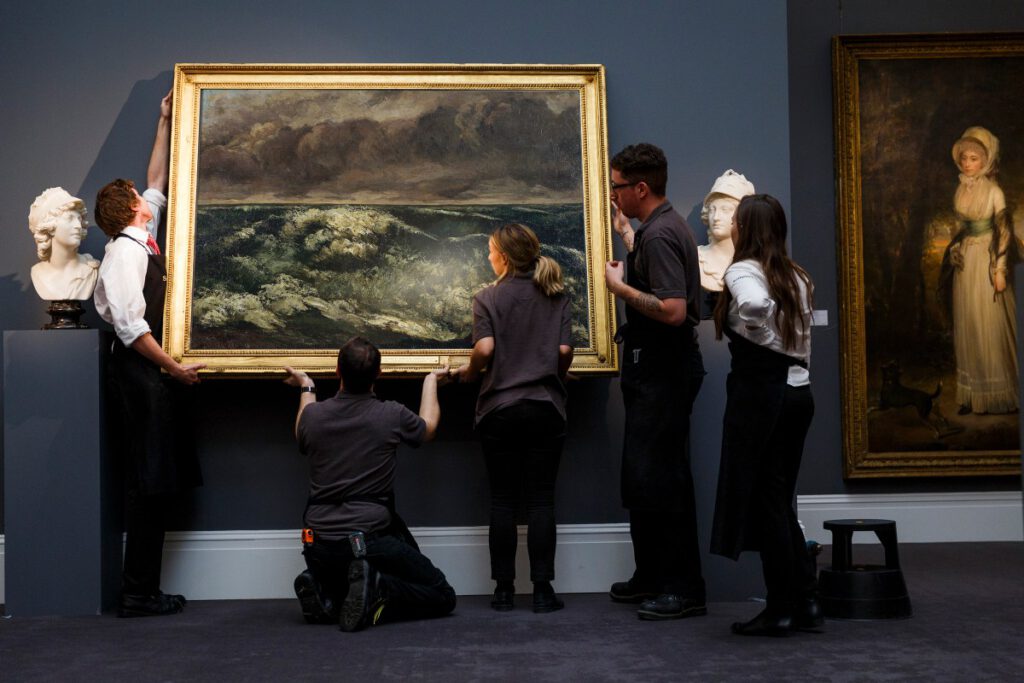
By a government decree, Germany’s National Gallery in Berlin (Alte Nationalgalerie) has removed all artwork depicting rivers or seas from view.
According to the museum’s announcement, the move is intended to prevent creating “the conditions for the probability of the possibility of inadvertently alluding to the chant ‘From the River to Sea, Palestine Will Be Free.’”
The removed works include Gustave Courbet’s “The Wave” (1869), Caspar David Friedrich’s “The Monk by the Sea” (1808-10), Carl Blechen’s “Fishermen on Capri” (1834), and hundreds more.
The decision is a watered-down version of a previous proposal to landfill Germany’s Rhine river in solidarity with the people of Israel.
“If we’re serious about respecting the historical traumas of the Jewish people, we must eliminate every river, canal, and creek in this country,” said one parliament member, also pledging to never visit a beach for the rest of his life.
The German media praised the move, accusing several international bodies of water, including the mighty Nile, of maintaining “an ongoing stream of antisemitism.”
Members of the German left — now down to five people — have protested against the new measure, but no one paid attention.
Due to lack of space at the museum’s storage facility, some of the removed artworks were transferred to an underground warehouse located in a former World War II Nazi bunker. Oh, the irony.
https://hyperallergic.com/881440/berlin-museum-removes-all-artwork-depicting-rivers-or-seas/
up-date 2024/4/4
Spain to recognize Palestinian statehood by July
Foreign Minister Albares argued the move was needed to ensure peace in the region and guarantee Israel’s security.
APRIL 3, 2024
BY AITOR HERNÁNDEZ-MORALES
BRUSSELS — Spanish Foreign Minister José Manuel Albares confirmed on Wednesday that Madrid will recognize the State of Palestine before July.
“We need a real Palestinian state,” Albares said at a meeting with journalists in Brussels. “The Palestinian people must not be condemned to forever be refugees.”
Spain’s parliament passed a non-binding resolution in favor of recognizing Palestinian statehood in 2014, but both center-right then-Prime Minister Mariano Rajoy and his successor, Socialist Party leader Pedro Sánchez, maintained that official recognition should only happen in concert with the rest of the European Union.
Albares said the change in Spain’s position was directly linked to the high number of civilian casualties since Hamas’ Oct. 7 attack and the launch of Israel’s military operations in Gaza, as well as to the lack of progress in securing peace by other methods. He added that recognizing Palestinian statehood was key to ending the conflict in the region.
“We feel the same solidarity for the 32,000 Palestinians who have been killed as we do for the 1,200 Israelis,” he said. “This recognition takes Israel into the equation: The recognition of the Palestinian state is the best guarantee of security for Israel.”
During an informal meeting on Monday with journalists accompanying him on a tour of the Middle East, Sánchez suggested Spain could recognize Palestine before the summer. The Spanish PM has been one of the most forceful critics within the EU of Israel’s military operations in Gaza, and on Tuesday demanded explanations from Israeli authorities following the deaths of seven people working for Spanish celebrity chef José Andrés’ World Central Kitchen in an airstrike in the Palestinian enclave.
In a joint statement released after last month’s European Council summit in Brussels, the heads of government of Spain, Ireland, Malta and Slovenia announced their readiness to extend recognition “for the sake of peace and security” in the region “when the time is right.”
Nine of the EU’s 27 members currently recognize the right of Palestinians to a state, but the majority did so prior to joining the bloc and within a 1988 effort among then-Communist and non-aligned countries.
Only Sweden, which extended recognition in 2014, has done so as an EU member.
Up-date 2024/April/5
Today ARTnews published an excellent article by Eliza Levinson. Her report has to be applauded. Iijama’s political agenda triggered off my public reaction here on ART+CULTURE. Until today, no Japanese art media had the guts to go deep into this extremely important actual theme.
For copyright reasons, I have hereby to proclaim, that this is an extension of my past articles, which I, as a Japanese artist, published here on ART+CULTURE, see the links. It can be art-re-contextualized also as a body of work, still in progress. This text on this page has to be understood as part of my artistic practice, in this context called “appropriation art”. No commercial interests are involved. Creative Commons Attribution Noncommercial-NoDerivative Works. Photographs have to be understood under the terms of courtesy creative common sense.
Via statistic analysis, I can see, if links had been activated. The result shows me, that almost no-one clicks on the links.
In this context, my decision to post the whole text my Eliza Levinson has to be understood.
Her text is of art historical importance.
Thank you, Eliza Levinson, for your research and superb writing!
Inflamed by the War in Gaza, Germany’s Art Scene Is Tearing Itself Apart
BY ELIZA LEVINSON, April 4, 2024
Since October, the German cultural sector has been in turmoil. The ongoing crises in Israel and Palestine have inflamed some of Germany’s most sensitive, and urgent, political debates, sparking cancelations, defundings, boycotts, and resignations. As if overnight, cultural institutions have leapt—or been forced into—the fray of answering to the nation’s most existential questions: antisemitism and Jewish life in Germany, racism, immigration, xenophobia, and the legacy of the Holocaust.
Some of the more widely publicized cancelations of the last several months have gotten attention beyond Germany, like the fracas over Masha Gessen’s receipt of the Hannah Arendt prize, the resignation of the entire Documenta 16 finding committee, and the Frankfurt Book Fair’s cancelation of an event honoring Palestinian author Adania Shibli.
In January, tensions skyrocketed when the Berlin government announced that it would implement a new “anti-Semitism clause” to funding applications in the cultural sector. According to Berlin cultural minister Joe Chialo, applicants would have to formally agree to conform to the International Holocaust Remembrance Alliance (IHRA) definition of antisemitism, which includes the points that “drawing comparisons of contemporary Israeli policy to that of the Nazis” and “denying the Jewish people their right to self-determination, e.g. by claiming that the existence of the State of Israel is a racist endeavor” are antisemitic. Both are often elements of the public debate in Germany surrounding Israel and Palestine, and the war in Gaza.
Shortly thereafter, and in response to the significant protest that ensued, Chialo announced that the government would not be mandating the “antisemitism clause” after all, citing “legal concerns.”
In Berlin, local coverage centered around the defunding of Oyoun, a cultural center that lost its backing from the city government as a result of a planned “mourning and grieving” event to be co-hosted with a group whose name translates to Jewish Voice for a Just Peace in the Middle East (referred to in Germany as a shortened version of its name in German, Jüdische Stimme). Jüdische Stimme is a partner, but not a satellite, of the anti-Zionist activist group Jewish Voices for Peace, and has been a vocal part of pro-Palestinian organizing in Berlin since October 2023.
Today, an Instagram account called Archive of Silence is crowdsourcing a list of cancelled events in the form of a Google sheet. As of early April, the group had logged 127 instances of “cancellation & silencing” around the country.
When brought to the international stage, these dramas have made waves as examples of Germany’s use—or abuse—of its hardline policies against antisemitism, which, in contrast to America’s free speech policies, make antisemitic words and gestures (such as the swastika and the Sieg Heil salute) grounds for arrest. The polemical antisemitism clause in particular laid bare the German state’s overtly political expectations for its sponsored artists, inciting outrage for some. For others, the “free speech” debate minimizes the very real, dramatic uptick in antisemitic incidents in Germany since the fall, as well as the increasing political power of the far-right Alternativ für Deutschland (AfD) party, which has been on the ascendant since 2017.
The German government has a particularly robust network for supporting the arts: in 2020, the national government invested the equivalent of $15.5 billion (€14.5 billion) into the cultural sector, having increased its cultural spending by more than 55 percent over the course of a decade.
“Most of our cultural scene is funded by public institutions,” art historian Julia Voss, who co-curated the 2019 exhibition “Documenta: Politics and Art”at the Deutsches Historisches Museum, said in an interview. “It comes with a maximum of freedom. And that’s, I think, what we are discussing now: whether there is a limit to this maximum.”
Last year, the German government announced that it would be dramatically slashing budgets for the cultural sector in 2024 by €254 million due to the country’s ongoing recession. While the question of how to meaningfully exhibit political artwork in the art world is perpetually fraught, the fever pitch of discourse in Germany today swirls around how to bring the political commentary central to the contemporary art world to public discussions of Israel, Palestine, and the war in Gaza. As German institutions move forward with freshly tightened belts, the ongoing debates over free speech, censorship, and accusations of bigotry expose the fissures in the country’s deeply entwined arts and political spheres.
For some in Germany’s cultural sector, this isn’t exactly their first rodeo.
In 2022, the 15th iteration of Documenta—Germany’s answer to the Venice Biennale—was the exhibition’s most geographically and racially diverse iteration to date, and was also overwhelmed by antisemitism allegations, which may be the quinquennial’s most lasting impression. Though some accusations were debated widely, with detractors focusing on issues like the pro-Palestinian Boycott, Divestment, and Sanctions (BDS) movement or whether a depiction of an Israeli soldier as a robot was antisemitic, one instance of anti-Jewish bigotry was impossible to refute. During the exhibition’s opening days, a mural featuring an antisemitic caricature of an Orthodox Jewish man with payos, fangs, and a hat emblazoned with the SS insignia was unveiled in Documenta’s central green.
Then and now, one side of the documenta debate articulated a painful, pervasive narrative in Germany: the notion of “imported antisemitism,” the belief that the most dangerous threats to Jewish life in Germany are immigrants, more specifically, Muslims, Arabs, and people of color. Statistics refute the accuracy of this concept: a 2022 police report found that 83 percent of antisemitic hate crimes in Germany are perpetrated by German neo-Nazis. In 2019, that statistic was as high as 90 percent.
But what, exactly, is antisemitism? Even within Jewish communities, the answers are many. One central, international rift exposed by the ongoing crisis in Israel and Palestine is the debate around whether “anti-Zionism” can be considered anti-Jewish bigotry. In Germany, the concept of the “singularity” of the Holocaust—that no country’s actions, past or present, can be compared to the Holocaust, because it was a uniquely atrocious event—is one that is deeply embedded in the national psyche, although it is widely disputed among international historians, and has been since its inception (naturally, in a language known for neologisms, this concept has its own German word, Historikerstreit). The idea of the singularity of the Holocaust is central to the Berlin government’s proposed antisemitism clause, which explicitly prohibited comparing anything to the Nazis’ atrocities.
Contemporary German art history, including its modern cultural sphere, is imprinted with the Third Reich, from the wealth inherited by some of the country’s most influential collectors to the hundreds of thousands of artworks looted from largely Jewish families who had been sent to concentration camps.
The same can be said of the prestigious institutions that continue to dominate Germany’s cultural sphere, though their histories can be more difficult to mine: it wasn’t until 2019 that researchers learned that influential art historian Werner Haftmann had lied about his involvement with the Nazi party. Haftmann had not, as he claimed, avoided enlistment in Hitler’s regime. In fact, he had been a registered member of the Nazi party and the SA, Hitler’s paramilitary wing, and was a wanted war criminal in Italy “known to have hunted, tortured, and executed resistance party members.”
Hitler’s government collapsed in 1945. By 1955, Haftmann was a central cofounder of the Documenta, and by 1967, he was the founding director of the Neue Nationalgalerie, one of the country’s most renowned contemporary art museums.
Today, workers going as high up as Haus der Kulturen der Welt director Bonaventure Soh Bejeng Ndikung have described the German cultural institution as an environment in which meaningful change—change that is not superficial, but actively restructures the violent legacy of these hallowed spaces—can feel difficult, if not impossible, to manifest.
In an interview, freelance cultural worker Paul—whose name has been changed at his request—painted a picture of German cultural institutions as rigid, rules-bound places with intimidatingly hierarchical atmospheres. “Is there also this expression ‘Kafkaesque’ in America?” Paul asked, by way of explanation.
In Paul’s view, the average worker in a German cultural institution operates in a complex bureaucratic web with an atmosphere of “anxiety and fear” and “no explanation” bordering on the absurd. Paul said he often asks himself questions such as: “Who is in power? What’s going on? Am I going crazy? Is this person crazy?”
Pressure to perform is particularly high for freelancers, Paul said, “because you are in a relatively precarious situation, or you don’t have a lot of job security, and they can potentially cancel your contract.” According to Paul, involvement with German institutions can foster feelings of otherness and exclusion, even from within. “As a mixed-race German person, I’m not necessarily seen as being an integral part of this country, and of these institutions,” he said. “I’m always bringing in perspectives that are [seen as] interesting, but not maybe central to this country’s narrative.”
Emil, another pseudonymous museum employee who spoke to me on the condition of anonymity, said that some of his colleagues feel comfortable talking about their political opinions on Israel, Palestine, and Gaza “behind closed doors,” and that they also feel that they can go to demonstrations without fear of professional repercussions. Emil added that higher-ups are loath to make public statements, such as on Instagram.
“There’s people from the curatorial team urging the other staff to do something,” he explained. Things often become complicated, with players like the press department and the director having to get involved. As such, Emil’s more cautious colleagues are operating with the belief “that their political position is reflected through their program.”
“Neither cultural workers nor curators nor directors are necessarily political activists,” Emil said.
Ultimately, according to Emil, German institutions “work so slowly,” making it exceedingly difficult to adequately respond to, or prepare for, political upheaval in Germany’s state-funded cultural sphere, in which “everything is [prepared], like, two years ahead.” Later, he clarified that the issue wasn’t exclusively bureaucratic, but also a matter of putting in sufficient “knowledge, awareness, and understanding … to see through such complex situations (both in Germany and in Gaza) and to formulate a response without running the risk of this stirring more destructive conflict and controversy.” And it doesn’t help that, as he concluded, “The art world is full of crazy people. Crazy people in power.”
For some, the current climate in Germany is more than an issue of bad press, programming, or aesthetics. When I spoke to Palestinian-Syrian poet Ghayath Almadhoun, whose poetry anthology launch event was canceled at the Haus für Poesie in October, he pushed back against the idea that this article will try to present multiple sides of the fraught German debate, with the “canceled” artists on one side and voices humanizing the German institutional ethos on the other. To him, the issue at hand is censorship, which deserves no justification.
“If you try to make an article to show the two voices, we are already lost,” Almadhoun told me. “There should be no discussion between me and you [about] if we should silence people or not.” Later, he added, “I lost more than 100 people from my family in Gaza. My family lost 85 [children]. I’m not allowed to say this. This is considered to be antisemitic in Germany.”
For Almadhoun, who lived in Syria until 2008, Germany’s current climate no longer resembles a democracy. “I’m going to secret meetings,” he told me. “The last time I did that was in Syria.”
One of Almadhoun’s secret meeting groups has titled itself on Signal “the dinosaurs”: a covert group of high-ranking people in Berlin’s cultural sphere that “want to do something,” but remain anonymous because they fear that “if their bosses or the people who work under them knew” about their involvement, they could lose their jobs. From his perspective, the defunding of Oyoun, the cultural center in Berlin that partnered with a left-wing Jewish group, was a message from the German government “to threaten” cultural spaces: “If you give a stage to leftist Jews who don’t fit into the story we tell, you will be canceled.”
As Almadhoun indicated, Jewish artists and intellectuals are not invulnerable to the German state’s accusations of antisemitism, with penalties to match: the aforementioned drama over Masha Gessen’s receipt of the Hannah Arendt prize was well-covered, while Jews like Candice Breitz, Michael Rothberg, Deborah Feldman, and Bernie Sanders have had events and exhibitions canceled, or were otherwise symbolically boycotted because of statements they made about Israel, Palestine, or the war in Gaza. Jewish Israeli artists and academics Yael Ronen and Ilan Pappé have also been penalized for critiquing their home country’s government within Germany. Feldman and Sanders are descendants of victims and survivors of the Holocaust, and Pappé’s parents arrived in Israel in the 1930s after having fled Nazi persecution in Germany.
“It’s entirely appropriate that the grandchildren of the people who murdered millions of Jews would feel a deep-seated and ongoing responsibility to be vigilant against antisemitism,” artist Breitz wrote to me via email. “When that sense of responsibility translates into unthinking dogma, however—as it has in recent years in Germany—it becomes dangerous and counter-productive. Germany’s over-zealous anti-antisemitism has translated into a climate in which progressive Jews, Muslims and/or Arabs are virtually seen as antisemitic by default. This, of course, affects Palestinians most brutally.”
She continued, “Many progressive Jews in this country have come to believe that Germany’s habit of weaponizing false charges of antisemitism against intellectuals and cultural workers in the absence of credible evidence has little to do with a genuine concern for the safety of Jewish lives, and can best be understood as serving to promote Germany’s image of itself as a forward-looking country that has managed to overcome its own deeply antisemitic and genocidal past.”
The topic remains divisive within Berlin’s Jewish community, which is the largest in the country, numbering around 10,000 people, according to the World Jewish Congress. For German-Jewish author Laura Cazés, who works for the Central Welfare Board of Jews in Germany, the current debate is monopolized by some of the country’s most privileged, most recent Jewish arrivals: upper middle-class “expats” (my word, not hers) from countries like the US, South Africa, Israel, or South America who don’t understand the severity of antisemitism in Germany or the extent to which Jewish life must still be vigilantly protected by the German government. “Antisemitism didn’t leave Germany [in] 1945,” she told me, “which, I believe, is something that you can’t 100 percent grasp if you don’t speak the language.”
Regarding the German debate about Israel/Palestine and free speech, Cazés expressed frustration: the country’s largest Jewish population, immigrants with largely working-class backgrounds from the former USSR, is “completely unheard and invisible, even though telling their story would be extremely interesting and important in order to understand what’s actually going on in Germany. Or is it better to listen to people who use their very elaborate language that they’ve developed in their country of origin, and apply it now to a country that they might not really understand?”
Six months into the war in Gaza, many in Germany’s art world continue to fear the repercussions of being called an antisemite, which Almadhoun described as including “exclu[sion] from various opportunities” and “uncertain” financial futures. These penalties are particularly daunting when the charges may be exacerbated by—if not, as Almadhoun sees it, directly due to—the simple fact of one’s immutable Palestinian identity. “I am one of many individuals who find themselves in a country where an essential aspect of their identity is unjustly labeled as dangerous, deemed politically incorrect, treated as adversarial, and unwelcome in Germany,” he wrote in an email last month.
Still, he believes that “to be canceled in Germany is a golden medal.” He continued, “One of my Jewish friends called me and he was so sad. He told me, ‘I’m not canceled. What’s wrong with me?’ And I told him, ‘Take it easy. You are wonderful. It’s a question of time. They will find you; they will cancel you.’ If you are not canceled in Germany, it’s really: shame on you.
“Who are the people who have been canceled?” he continued. “The leftist Jewish people who take a stand with people who are under occupation? The Israeli left, with the best thinkers in Israel; the best thinkers in Europe; the best thinkers in Palestine—the best people who really believe in freedom of speech.” Later on, he added: “As a Palestinian, we were not able to do anything in Germany without the help of our Jewish friends.”
https://www.artnews.com/art-news/news/germany-art-scene-israel-war-gaza
2024/4/7 up-date

東浩紀 Hiroki Azuma @hazuma
ちなみに僕が「こんな左翼っぽいことは言いたくないけど」と前置きしたのは、日本の左翼には10月7日のハマスの行為をテロと呼ばない人もいて、そんな人々の仲間だと思われたくなかったからです。あれは明確にテロです。ハマスは悪い。でもそれはイスラエルの植民地主義を正当化する理由にならない。
Translated from Japanese by Google
By the way, I prefaced my statement by saying “I don’t want to say such left-wing things,” because there are some leftists in Japan who don’t call Hamas’ actions on October 7 a terrorist act, and I didn’t want to be seen as one of those people. It was clearly a terrorist act. Hamas is bad. But that doesn’t justify Israeli colonialism.
Link_https://twitter.com/hazuma/status/1776911045522579470
2024/4/8 up-date:
DIE LAGE IN NAHOST
Gaza: Unklarheit über Israels Rafah-Pläne
FAZ, 08.04.2024
Nach dem Teilabzug aus Khan Yunis könnte Israel bald eine Offensive in Rafah beginnen. Es gibt aber auch Hinweise darauf, dass sie aufgeschoben wird. Netanjahu könnte auf Zeit spielen, um seine Macht zu sichern.
Während die Vermittler im Gazakrieg einen neuen Vorstoß für eine Waffenruhe unternehmen, befeuert die israelische Armee nach einem Teilabzug die Spekulationen um einen möglichen Angriff auf Rafah im Süden des Küstenstreifens. Die Truppen hätten nach Zerschlagung der militärischen Strukturen der islamistischen Hamas in Khan Junis die lange umkämpfte Stadt verlassen, „um sich auf ihre künftigen Missionen vorzubereiten, einschließlich in Rafah“, sagte Verteidigungsminister Joav Galant am Sonntag.
Dies könnte auf eine bevorstehende Einigung bei den neuen Verhandlungen in Kairo über eine Waffenruhe und Freilassung von Geiseln hindeuten, schrieb die israelische Zeitung „Haaretz“. In dem Fall werde eine Offensive auf Rafah für die Dauer der Feuerpause ausbleiben. Doch selbst wenn es keine Einigung geben sollte, werde es mit ziemlicher Sicherheit noch eine Weile dauern, bis Israels Armee in Rafah vorgehe, schrieb die Zeitung.
Genau sechs Monate nach Beginn des Gazakrieges hatte Israel am Sonntag überraschend einen Teil seiner Truppen aus Khan Junis abgezogen. Kurz darauf machten sich die ersten Palästinenser laut israelischen Medienberichten auf, dorthin zurückzukehren. Nach monatelangem Bombardement und schweren Kämpfen zwischen israelischen Truppen und Kämpfern der islamistischen Hamas liegt ein Großteil des Gebiets in Trümmern.
Generalstabschef: weit davon entfernt, aufzuhören
Israels Generalstabschef Herzi Halevi machte derweil deutlich, ein Ende des Krieges sei noch lange nicht in Sicht. „Der Krieg in Gaza dauert an, und wir sind weit davon entfernt, aufzuhören“, sagte Halevi am Sonntag. Ranghohe Funktionäre der Hamas hielten sich in dem abgeriegelten Küstengebiet weiter versteckt. „Wir werden sie früher oder später erreichen.“
„Wir werden keine Hamas-Brigaden aktiv lassen, in keinem Teil des Gazastreifens“, sagte Halevi. Die Zeit werde kommen, in der die Hamas nicht länger das Küstengebiet kontrolliere und die Sicherheit Israels bedrohe, sagte auch Verteidigungsminister Galant.
Israels Ministerpräsident Benjamin Netanjahu hat immer wieder erklärt, dass hierzu ein Einmarsch in Rafah und die Zerschlagung der dort verbliebenen letzten Bataillone der Hamas unerlässlich sei. In der an Ägypten grenzenden Stadt suchen derzeit mehr als eine Million Palästinenser auf engstem Raum Schutz vor den Kämpfen.
Keine Vorbereitungen für Evakuierungen in Rafah
Die USA und Deutschland haben Israel wiederholt vor einer großangelegten Bodenoffensive in Rafah gewarnt. US-Präsident Joe Biden hatte Netanjahu klargemacht, ein Einmarsch dort ohne vorherige Evakuierung der Zivilisten sei eine „rote Linie“ für ihn. Israels Armee kündigte an, für die Menschen aus Rafah weiter nördlich „humanitäre Inseln“ zu schaffen. Vorbereitungen dafür gebe es aber noch gar nicht, schrieb „Haaretz“. Möglich sei denn auch, dass keine dieser Entwicklungen über die kommenden Wochen oder Monate hinweg eintrete. Dies würde nur einem dienen, schrieb die israelische Zeitung weiter: Netanjahu.
Nach Einschätzung amerikanischer und israelischer Beamter glaube Israels zunehmend unter Druck stehender Ministerpräsident, dass ein sich in die Länge ziehender Krieg im Gazastreifen seine Chancen erhöhe, an der Macht zu bleiben, berichtete auch das Nachrichtenportal „Axios“. In einer Kabinettssitzung sagte Netanjahu am Sonntag einmal mehr, Israel sei „einen Schritt vom totalen Sieg entfernt“. Solange der Krieg andauere, seien Neuwahlen, die Netanjahu um sein Amt bringen könnten, weniger wahrscheinlich, hieß es in dem „Axios“-Bericht. „Und je mehr Zeit vergeht, desto mehr Chancen hat er, sich politisch zu erholen.“
Erneut große Demonstration in Israel
Am Sonntagabend gingen in Jerusalem nach Angaben der Organisatoren der Massendemonstration erneut rund 50.000 Menschen auf die Straße und forderten in Sprechchören Netanjahu und seine Regierung auf, die im Gazastreifen weiter festgehaltenen Geiseln nach Hause zu bringen. Auch am Vortag hatten Zehntausende Menschen in Tel Aviv und anderen israelischen Städten gegen Netanjahus Regierung demonstriert. Kritiker werfen ihm vor, den Schutz der Gaza-Grenze vernachlässigt zu haben und die Interessen des Landes seinem politischen Überleben unterzuordnen. Demonstranten forderten wiederholt seinen Rücktritt.
Viele Israelis haben nach wie vor mit den traumatischen Folgen des Massakers vom 7. Oktober zu kämpfen. Terroristen der Hamas und anderer Gruppierungen hatten an jenem Tag den Süden Israels überfallen, rund 1200 Menschen getötet und weitere 250 als Geiseln in den Gazastreifen verschleppt. Es war der Auslöser des Gaza-Krieges. Nach Angaben der von der Hamas kontrollierten palästinensischen Gesundheitsbehörde in Gaza wurden bisher mehr als 33.000 Palästinenser bei den israelischen Angriffen getötet, wobei die unabhängig kaum zu überprüfenden Angaben keinen Unterschied zwischen Kämpfern und Zivilisten machen.
Hier finden Sie einen externen Inhalt von Youtube. Um externe Inhalte anzuzeigen, ist Ihre widerrufliche Zustimmung nötig. Dabei können personenbezogene Daten von Drittplattformen (ggf. USA) verarbeitet werden. Weitere Informationen.
CIA-Chef und Hamas-Vertreter in Kairo
Unterdessen sind am Sonntag in Kairo die indirekten Verhandlungen über eine Waffenruhe und die Freilassung von Geiseln, die von der Hamas festgehalten werden, wieder aufgenommen worden. Zu diesem Zweck reisten CIA-Direktor William Burns und eine Delegation der Hamas in die ägyptische Hauptstadt. Am Sonntagabend traf auch der qatarische Ministerpräsident und Außenminister Mohammed bin Abdulrahman Al Thani ein. Der Chef des israelischen Auslandsgeheimdienstes Mossad, David Barnea, soll israelischen Berichten nach ebenfalls teilnehmen. Die USA als Israels wichtigster Verbündeter wollen einen Durchbruch in den seit Wochen festgefahren Verhandlungen herbeiführen.
Da Israel und die Hamas nicht direkt miteinander reden, treten die USA, Qatar und Ägypten als Vermittler auf. Im Laufe einer einwöchigen Feuerpause Ende November vergangenen Jahres ließ die Hamas 105 Geiseln im Austausch gegen 240 palästinensische Häftlinge frei. Knapp 100 der Geiseln, die nach dem Terrorüberfall der Hamas vom 7. Oktober nach Gaza verschleppt wurden, dürften nach israelischen Schätzungen noch am Leben sein.
Neue Drohungen aus Iran
Unterdessen wurden am Sonntag neue Drohungen aus dem Iran gegen Israel laut. „Die Widerstandsfront ist bereit für alle möglichen Vergeltungsszenarien und keine israelische Botschaft weltweit ist sicher davor“, sagte General Jajhja Rahim-Safawi am Sonntag. Er ist ein Berater des obersten iranischen Führers, Ajatollah Ali Chamenei.
Vergangene Woche waren unter anderem zwei iranische Brigadegeneräle bei einem Raketenangriff auf das iranische Botschaftsgelände in Damaskus getötet worden. Irans Staatsspitze macht Israel für die Attacke verantwortlich und drohte mit Vergeltung. Seitdem wird ein Angriff auf Ziele Israels oder der USA befürchtet. Beide Länder sind daher in höchster Alarmbereitschaft.
https://www.faz.net/aktuell/politik/ausland/gaza-unklarheit-ueber-israels-rafah-plaene-19638008.html
国立西洋美術館でスポンサーの川崎重工に異例の抗議 作家に「声を上げなければ」と思わせたガザ侵攻との関係
2024年4月8日
東京・上野の国立西洋美術館で3月、企画展の出品作家らが、同館オフィシャルパートナーの川崎重工に対する抗議行動を行った。攻撃用ドローンの導入を計画する防衛省が、候補機としてイスラエル製を選定。川重がその輸入代理店になっているからだ。日本で美術家が美術館スポンサーに直接抗議するのは異例だという。ガザ侵攻に国際的な非難が強まる中、イスラエル製を選んだ政府の判断は、理解が得られるだろうか。(森本智之)
◆防衛省が選んだ「攻撃用ドローン」をつくるイスラエル
「私は美術家として直接展覧会に参加する立場にあり、本当にそれでよいのか、声を上げなければいけないのではないかと思った」。抗議した一人、美術家の飯山由貴氏は振り返る。
問題を知ったのは、企画展開幕約1週間前の交流サイト(SNS)の書き込みだった。防衛省は攻撃用ドローンの導入を検討するに当たり、2023年度に性能を検証する実証機を選定したが、7機中5機がイスラエル製だった。このうち1機の輸入代理店が川重で、他に日本エヤークラフトサプライ、海外物産、住商エアロシステムも別の機種の代理店になっている。
◆「松方コレクション」を批判的に読み解く作品を出品
西洋美術館は川重の前身・川崎造船所の初代社長を務めた松方幸次郎が収集した「松方コレクション」を基礎に発足した。飯山氏は今回の企画展で、コレクションは帝国主義下の戦争特需の利益で購入されたとして、批判的に読み解く立体作品を展示していた。その創作の過程とガザでの軍事衝突の激化が重なり、ドローンについて知った時「ガザが結び付いた。行動するしかないと思った」という。
開幕前日の3月11日に開かれるメディア向け内覧会で抗議行動をすることを決め、協力してくれそうな知人や出展作家らに伝えた。
当日は記者説明の途中で立ち上がり「イスラエル政府のジェノサイド(民族大量虐殺)に強く反対します」と抗議文を読み上げ、川重にドローンの輸入取りやめを、美術館には川重への働きかけを求めた。賛同する他の作家や市民も垂れ幕などで抗議の意を表した。
立場の強い美術館やスポンサーへの抗議についてSNSなどでは「勇気ある行動」とたたえる声の一方、批判も多い。中には「作家は創作で意思表明すべきだ」との意見もあるが、飯山氏は「抗議行動には瞬発的な拡散力やインパクトがある。創作では悪化していく現実のスピードに追いつけない。今回はアーティストではなく一人の市民として行動した」と述べた。
◆「今後数年は公立美術館から仕事は来ないだろう」と覚悟
元々飯山氏は社会や歴史の中で「周縁にいる人やもの」を追いかけてきた。精神疾患を患う妹の映像作品を撮った時、妹が患者の当事者運動に勇気づけられてきたことを痛感した。「社会に意見を表明する運動があることによって、力を与えられる人がいると信じるようになった」という。
東京都人権プラザが飯山氏に依頼した企画展で2022年、関東大震災の朝鮮人虐殺に触れた映像作品が上映中止になった。小池百合子知事が朝鮮人犠牲者に追悼文を送っていないことを踏まえ、都の担当が懸念を示していたことが後に判明した。この時も飯山氏は会見で顚末(てんまつ)を明らかにし都に抗議を続けた。「今後数年は公立美術館から仕事は来ないだろう」と覚悟していたが「できる人ができることをやればいい。今回の抗議でも私はできると思うことをやった」と述べた。
抗議後は西洋美術館と話し合いの場を持っているが、要求に応じるかは見通せないという。ただ、抗議行動がSNSなどで広まり「ガザで起きていることを人ごとだと感じられない人が増えたことは良かった」と話した。
◆「対応しない」「コメントは控える」…抗議の意味は
飯山氏らの抗議に対し、川重は「特に対応しない」とし、西洋美術館は「コメントは控える」とした。この回答を見る限り、飯山氏の言うように、状況が変わるかは分からない。
ただ、高千穂大の五野井郁夫教授(政治学)は「美術家が政治や社会問題をテーマに創作したり発言するのは普通のことだが、今回のように美術館やスポンサーに内覧会で直接抗議するのは、海外と異なり日本では珍しい。美術館は表現の自由を守る場所。飯山さんがストレートに声を上げ、それを制止せず表現させた西洋美術館側の対応も適切だった」と意義を述べる。
イスラエルとの武器取引をめぐっては、伊藤忠商事が2月、子会社とイスラエルの軍事企業などが結んでいた協力関係の覚書を解消している。
その理由として、伊藤忠は直前の1月、国際司法裁判所(ICJ)がイスラエルに対しジェノサイド防止の暫定措置命令と、これに対して上川陽子外相が出した「誠実に履行されるべきものだ」との談話を踏まえた、という。若者を中心にネット署名で2万5000筆を集めるなど抗議も行われた。
◆「実証機」なぜイスラエル製品ばかり?
今回のドローン実証機の選定は1~2月、こうした動きと同じタイミングで行われた。実証機に選ばれた場合、各メーカーは、飛行距離など防衛省の要求する性能について試験を実施、報告書を提出するという事業内容で、実証機は一般競争入札で決定した。本格導入する機体については、今後、報告書の内容などを踏まえて検討するという。
3月12日の参院外交防衛委員会で共産党の山添拓氏は「イスラエルの軍需産業を支援することになる」「伊藤忠はICJの暫定措置命令に応じた。日本政府もやめるべきだ」と求めた。だが、木原稔防衛相は「防衛装備品の取得はわが国の安全保障環境をふまえつつ、要求性能や経費、維持整備などさまざまな要素を勘案した上で総合的に検討する。現時点で特定の国の装備品の取得を予断するものではない」と答弁。現段階では実証段階であることを強調した。
実証機の大半がイスラエル製になった理由については、防衛装備庁の久沢洋・調達事業部長が「一般競争入札で最低価格で入札した企業と契約した」などと述べ、1円落札もあったと明らかにした。あくまで結果論との説明だ。
だが、「武器取引反対ネットワーク」の杉原浩司氏は「実証段階とはいえ、本格導入の候補機として、7機中5機もイスラエル製を選ぶという行為自体が、イスラエルのガザでのジェノサイドを容認するメッセージを国際社会に送るに等しい」と非難する。
◆日本政府の対応は世界の潮流に逆行しているのでは?
杉原氏によると、第2次安倍政権以降、日本はイスラエルと防衛協力の覚書を締結するなど、軍事的な結び付きを強めてきた。昨年3月に千葉で開かれた武器見本市には、イスラエルから前回の5倍近い14社が参加。日本の防衛費拡大をイスラエル側は商機とみており「今回の問題もその延長線上にある」と指摘する。
立命館大生存学研究所客員研究員の金城美幸氏(パレスチナ地域研究)は「国連の人権専門家は2月23日、イスラエルへの武器禁輸の必要性を強調する声明を出した。その中で、伊藤忠の覚書解消にも触れ、称賛している。イスラエルと武器取引を解消する動きは欧州を中心に各国に広がっており、武器供与を続ける米国とのギャップは広がっている」と解説。今回の防衛省の実証機選定については「国際的な流れに逆行している」と問題視している。
◆デスクメモ
イスラエルとハマスの戦闘開始から7日で半年たった。ガザでの死者は3万人を超えたという。イスラエルによる過剰な報復に世界的な批判が高まり、日本でも同日、各地でデモが実施された。政府や企業は抗議の声に耳をふさぎ、時が過ぎるのを待つのか。見識が問われている。(北)
https://www.tokyo-np.co.jp/article/319834
“Podrías haber sido vos”: emotivo reclamo por la liberación de los rehenes de Hamas a seis meses del feroz ataque a Israel
Cientos de personas se reunieron en el Parque Centenario; hay ocho argentinos que aún permanecen cautivos en manos del grupo terrorista
La Nacion, 8 de abril de 2024

A seis meses del feroz ataque de Hamas a Israel el 7 de octubre que desencadenó la guerra todavía hay 133 secuestrados en la Franja de Gaza. Al menos ocho son argentinos: los hermanos Eitan y Iair Horn y Ariel y David Cunio, Lior Rudaef, y los miembros de la familia Bibas: el bebé Kfir, su hermanito Ariel y su madre Shiri Silberman. Hoy, cientos de personas pidieron su liberación en un acto organizado por familiares y amigos en el Parque Centenario y acompañados y apoyados por instituciones de la colectividad judía.
“Podrías haber sido vos”, decían los carteles en el ingreso del parque. Eran idénticos a los que se usan con las fotos de las personas reportadas como secuestradas y con un espejo en el lugar de la foto para que cualquiera pudiera reflejarse. Además, voluntarios vestidos de negro repartían folletos con la historia de los rehenes.
Tras un minuto de silencio, los familiares de las personas secuestradas subieron al escenario. “A medio año, hoy estamos reunidos familiares y amigos de los secuestrados. Ninguno de nosotros se imaginó que esto se iba a extender tanto”, comenzó Gustavo Baabour, familiar de los Marman. Clara, Gabriela y Mia fueron liberadas, a Fernando y Luis los rescató el ejército israelí. “Cuesta entender que no se haya declarado a Hamas como una organización terrorista”, agregó. Una promesa del presidente Javier Milei que todavía no cumplió, un reclamo que también le habían hecho a la anterior administración de Alberto Fernández.
“Hace seis meses que seguimos buscando a mi primo Lior y no hay respuesta. Ninguna noticia, ningún rastro con vida suya tuvimos en este medio año. Solo desconcierto, tristeza y bronca. Hace seis meses que falta el hijo de Guiora, el hermano de Idith, el esposo de Yaffa, el papá de Noam, Nadav, Bar y Ben, el tío de Yael y Omer. Hace seis meses que falta mi primo. Hace poco nació tu primera nieta, Shai, que en hebreo significa regalo. ¿Será una señal su nombre? Tus dos nietos varones te extrañan mucho. Le prometí a tu papá, mi tío de 88 años que iba y voy a hacer lo que este a mi alcance para que vuelvas, para que te devuelvan a tu hogar. Una de sus frases por estos días es: ‘No importa cómo vuelvas, sino que vuelvas’. La mía es que te espero para poder abrazarte de nuevo”, dijo Micaela Rudaeff, prima de Lior, de 61 años, que vivía en el kibutz Nir Yitzhak.
Y agregó: “Hace seis meses que te arrancaron de tu lugar. Hace seis meses que tu moto está parada en el garage. Hace seis meses que el mundo sigue su cauce como si nada hubiera pasado. Hace seis meses que tengo un dolor muy grande y con nada se cura. Hace seis meses que las lágrimas caen y no se detienen. Hace seis meses que mi mundo se detuvo el fatídico 7 de octubre. Por momentos no sé para dónde ir. Ciento ochenta y cinco días en los que somos la voz de todos los que fueron silenciados ese fatídico sábado”.

Destrucción
“Yo viví en [el kibutz] Nir Oz, destruyeron el que alguna vez fue mi hogar. Veo entre las fotos de los secuestrados y fallecidos algunos de los que fueron mis vecinos, como a José y Margit Silberman, abuelos de Kfir y Ariel . Ese día eran miles los que estaban pasando por lo mismo. Homicidios, violaciones, secuestros, saqueos, en un accionar cuidadosamente planificado que todavía hoy persiste y nos inunda a todos. Nuestros pensamientos también siguen secuestrados. El 7 de octubre sigue pasando”, expresó Mirta Tinaro, tía de Ariel y David Cunio, dos de los hermanos que aún siguen secuestrados. A las hijas de David, a sus tan solo tres años, las liberaron luego de 52 días. “Y después de eso siguen esperando que papá vuelva a casa. Seguimos esperando que todos vuelvan a casa. Seis meses después todavía siguen en condiciones infrahumanas”, sumó.
“Hoy, sigue siendo 7 de octubre para todos los que estamos en el limbo de los que esperan. Que no sabemos si los que deben hacer algún esfuerzo están a la altura, si la inacción es porque no pueden, no tienen ganas o no les conviene. Ni eso sabemos. No sabemos si están o no están. Necesitamos dejar de hacer estos actos, dejar de postear videos, poder respirar sin un ladrillo en el pecho y lágrimas a punto de salir cada vez que se nombra el tema. Necesitamos que vuelvan. Necesitamos tener ese amigo que nunca te diría que no a una birra. La faltan dos hinchas a Atlanta. Necesitamos tener a Iago y Eitu para volver a tener a quien preguntarle dónde comer el mejor falafel o shawarma no importa el lugar del mundo dónde estemos. Necesitamos volver a ser personas. Así no se puede más”, siguió Jonathan Stolarza, amigo de Iair y Eitan Horn, que estaban juntos en el kibutz Nir Oz cuando los terroristas entraron a la casa del mayor, Iair.

Abusos
“Es una emoción que nunca antes había sentido que tiene que ver con una mezcla de incertidumbre, de no saber. Si estuvieran vivos, ¿cuáles son las condiciones en las que ellos estuvieron durante seis meses? ¿Comieron los chicos? ¿Siguieron junto con su mamá? ¿Los separaron inmediatamente? ¿Los mataron? ¿Están sufriendo? ¿Son torturados? Sabemos por las liberadas que estuvieron secuestradas más de 50 días que las mujeres sufren abusos de todo tipo y no es necesario escuchar los relatos de las personas que liberaron, con ver los videos del 7 de octubre que los mismos terroristas filmaron, mientras violaban, mataban, mutilan, ancianos y niños. Mujeres, familias enteras carbonizadas en sus propias casas. De hecho, mis tíos, los papás de Shiri estaban en su casa y 15 días más tarde pudieron identificar sus cuerpos”, dijo Sandra Miasnik, prima de Shiri Silberman.
Y siguió: “Después de ver todas esas atrocidades que hizo esta gente, sabés que tu familia está en esas manos y durante seis meses. Entonces, es difícil imaginar un solo minuto que una persona esté cerca de gente que es capaz de hacer esas atrocidades. Imagínate lo que son seis meses. Kfir debería tener un año y dos meses ahora. Salió de su casa. Todos lo vimos en brazos de su mamá como un bebé y ahora yo me lo imagino como un nene de un año y dos meses recién dando sus primeros pasos, con el pelito más largo”.
Cerraron al grito de “libérenlos ya”, detrás en la pantalla se leía “Hineni: yo estoy aquí. Seguimos aquí hasta que vuelvan todos”.
2024/4/10 up-date:
En el concurso de ballet contemporáneo de #Barcelona,el estudio de danza israelí dirigido por Lilach Friedman obtuvo el primer lugar.
El baile de los israelíes dedicado a la tragedia del 7 de octubre en el festival Nova.@israel #Israel #Hamas #HamasISIS #Gaza @IsraelinSpain pic.twitter.com/HwL0dqd5Rr— ITON GADOL es Israel y las comunidades judias (@Itongadol) April 9, 2024
2024/4/11 up-date:
SEXUELLE GEWALT DER HAMAS
Der Missbrauch der Vergewaltigungsopfer
VON THOMAS THIEL -AKTUALISIERT AM 10.04.2024
Die von der Universität Köln ausgeladene Philosophin Nancy Fraser wirft Israel vor, die Hamas-Vergewaltigungen propagandistisch ausgebeutet zu haben. Aber was steht eigentlich in dem von ihr unterzeichneten offenen Brief?
Auf ihre Ausladung durch die Universität Köln, wo sie Gastvorlesungen hatte halten sollen, hat Nancy Fraser zornig reagiert. In der „Frankfurter Rundschau“ kritisierte sie einen „McCarthyismus“, der der deutschen Wissenschaft schweren Schaden zufügen werde. Zuvor hatte die Philosophin aus der Tradition der Kritischen Theorie kein Problem damit, in einem offenen Brief selbst zum akademischen Boykott aufzurufen. Sie wollte israelische Universitäten für einen Krieg bestrafen, den diese nicht führen und der durch das Massaker der Hamas ausgelöst wurde, das den Autoren des Protestbriefs nur eine Randnotiz wert war.
Bei diesem Massaker wurden bekanntlich Frauen unter öffentlichem Applaus abgeschlachtet, bespuckt, vergewaltigt. Die Lust der Täter an der Erniedrigung ihrer Opfer erinnerte an die Barbarei des „Islamischen Staats“. Es folgte ein langes eisiges Schweigen der Vereinten Nationen und globaler Frauen- und Menschenrechtsorganisationen, bis israelische Frauenrechtlerinnen an die Öffentlichkeit traten und forderten, die Dinge endlich beim Namen zu nennen. Gewalt gegen Frauen, so ihr Vorwurf, sei für manche Frauengruppen offenbar kein Problem, wenn die Opfer Jüdinnen sind. Die „New York Times“ beschrieb die Hamas-Vergewaltigungen in einem langen Artikel. Acht Wochene nach dem Massaker entschloss sich die UN-Frauenorganisation zu einer dürren Stellungnahme.
more @
https://www.faz.net/aktuell/feuilleton/debatten/sexuelle-gewalt-hamas-nancy-fraser-19643882.html
イスラエルのアラブ系元政府閣僚が、アパルトヘイトをやっているとする無茶苦茶な非難に反撃する:
「アラブ系のイスラム教徒が大臣になっているんだぞ。その批判は支離滅裂だ!」⬇️レイシズムなら、パレスチナ側を非難すべき。子供に「ユダヤ人を頃せ」と教えているのだ。
pic.twitter.com/WAhG036GVF— 加藤 健 (@JapanLobby) April 10, 2024
かつて渡部昇一先生が「ユダヤ人は商人から真の武士になった」と語っていたが、イスラエル女性にも当てはまる。
ハマス撃退で勲功を立てた、女性だけの戦車部隊⬇️
見た目はみんな普通の子だが、勇気、責任感、覚悟が凄い。女性も2年の兵役があり、真の男女共同参画社会。pic.twitter.com/jT2wydPDIu
— 加藤 健 (@JapanLobby) January 4, 2024
Antes de opinar sobre la guerra entre Irán e Israel, escuchen a esta Iraní. pic.twitter.com/CruJ7wWavr
— Jonathan Jakubowicz (@JoJakubowicz) April 15, 2024
Una noche te ataca Irán y al día siguiente te vas a bailar a la playa.
Am Israel Jai. pic.twitter.com/KOxEPglmnZ— Dani Hacker (@DanielaHacker) April 14, 2024

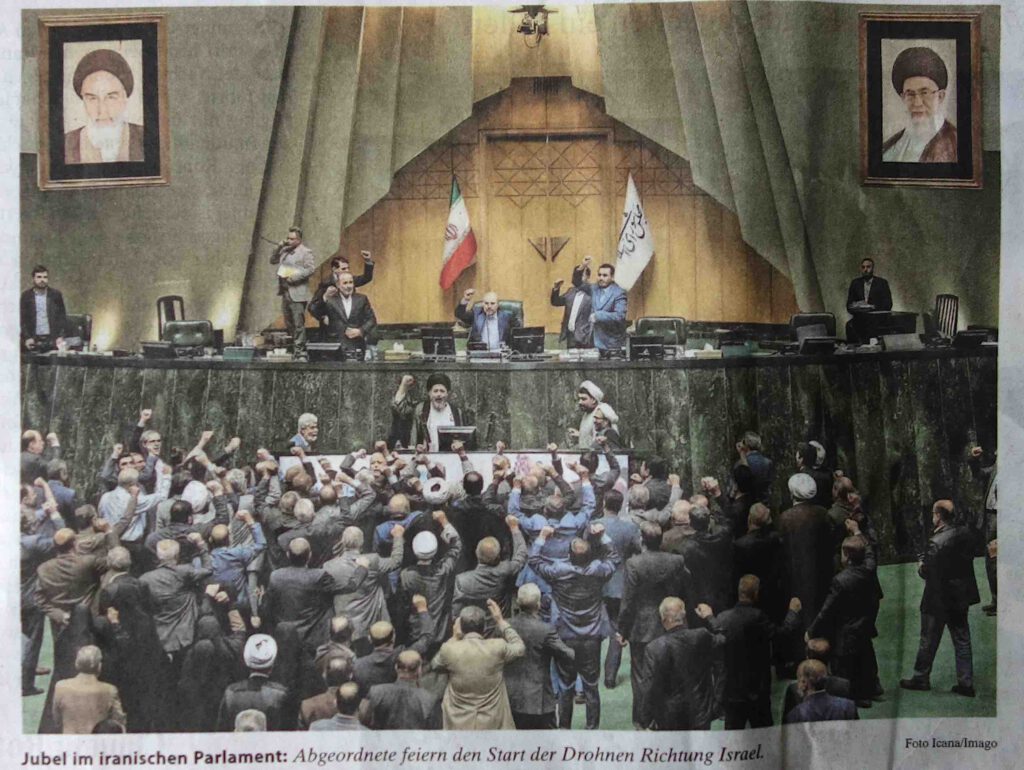
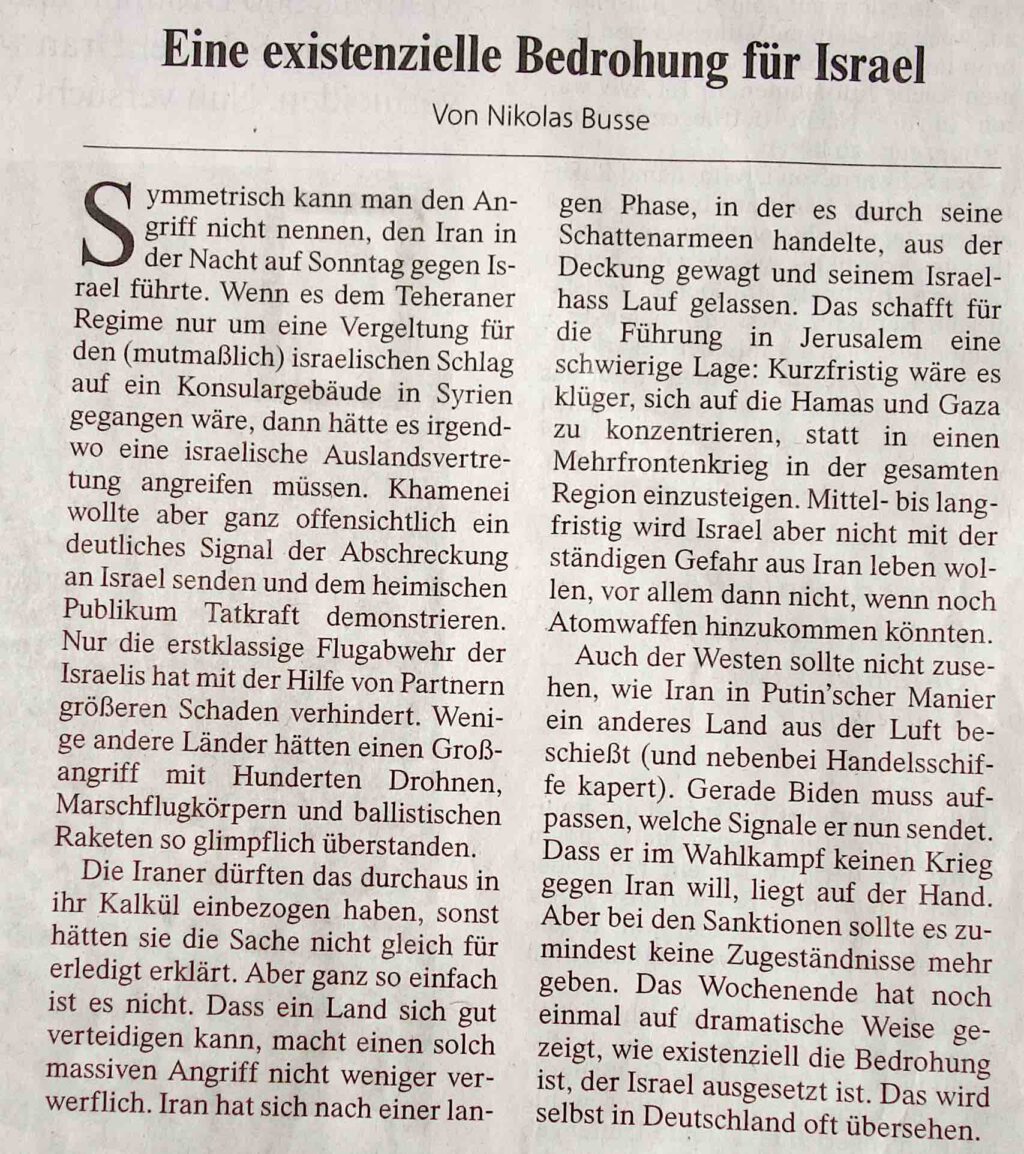
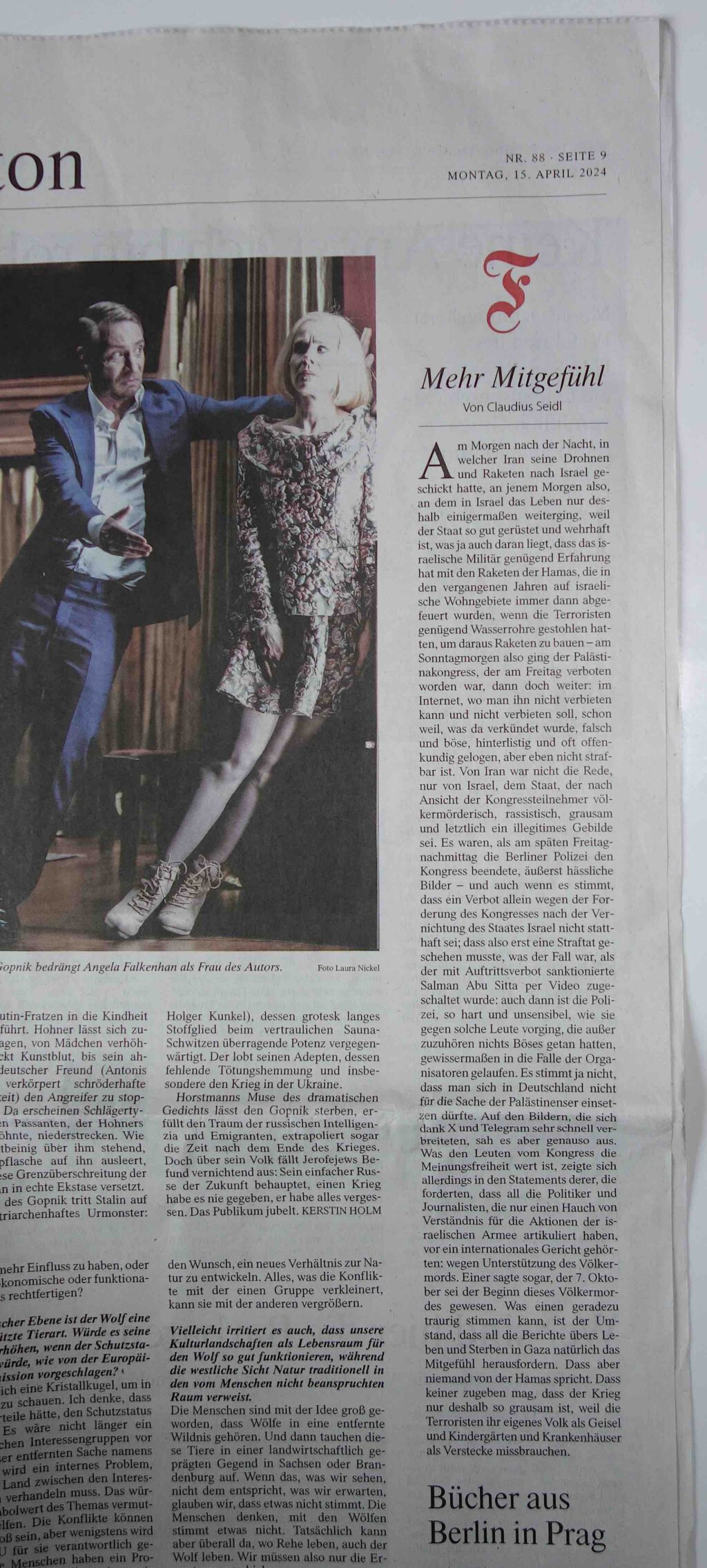
Editorial: Chain of retribution must stop after Iran missile and drone attack on Israel
April 16, 2024 (Mainichi Japan)

Iran has unleashed over 300 drones and missiles on Israel. Some of them landed within Israeli territory, leaving a young girl wounded and causing damage to an air force base. Most of the weapons were intercepted with the assistance of Israeli allies including the United States, Britain and Jordan.
Amid the continued battle in the Gaza Strip, one of the two Palestinian territories, conflicts in the Middle East must not escalate.
Iran has long been at odds with Israel. Teheran previously relied on attacks by pro-Iranian proxies, such as Lebanon’s Shiite Muslim group Hezbollah and Yemen’s Houthi militant group. Iran’s latest action marked its first direct attack on Israel.
In early April, the Iranian embassy in the Syrian capital Damascus was bombarded, killing senior officials of the Islamic Revolutionary Guard Corps. Tehran claims that its recent attack was in retaliation for this.
Iran announced that it had launched missiles and drones after notifying surrounding countries in advance. This unusual move was apparently aimed at preventing civilian casualties. After the operation, Tehran called it a huge success and that the attack was over, implying that it was not willing to escalate.
The focus is now on how Israel will respond. Israeli Prime Minister Benjamin Netanyahu hinted at a counterstrike, warning, “We’ll harm those who harm us.” If the two countries engage in a series of tit-for-tat attacks, the situation will only escalate, raising the risk of Israel opening an all-out war against Iran.
United Nations Secretary-General Antonio Guterres warned, “Neither the region nor the world can afford more war,” and, “The Middle East is on the brink. … It’s time to step back from the brink.” With the bloody backdrop of Russia’s invasion of Ukraine and the humanitarian crisis in Gaza, he sounded an alarm against letting another war break out.
The Group of Seven major industrialized countries held an online summit, and released a statement saying, “We, the Leaders of the G7, unequivocally condemn in the strongest terms Iran’s direct and unprecedented attack against Israel,” calling for Tehran and its allies to cease their strikes.
The statement also said, “We will continue to work to stabilize the situation and avoid further escalation,” signifying their will to put all their effort into calming the situation.
Obviously, the conflict in Palestine is further destabilizing the region. First and foremost, Israel must halt its attacks on Gaza.
We must break the chain of retaliation. We urge the United States and the rest of the international community to exhaust all diplomatic efforts on this.
https://mainichi.jp/english/articles/20240416/p2a/00m/0op/006000c
社説
イランの大規模攻撃 報復の連鎖断ち切る時だ
朝刊政治面 毎日新聞 2024/4/16 東京朝刊

パレスチナ自治区ガザ地区で戦闘が続く中、これ以上、中東での紛争を拡大させてはならない。
イランが無人機やミサイルによる計300発以上の攻撃をイスラエルに加えた。
一部が領内に着弾して少女1人が負傷し、空軍基地に被害が出たが、ほとんどは米英やヨルダンなどの支援を受けて迎撃した。
イランは長年、イスラエルと敵対してきた。これまではレバノンのイスラム教シーア派組織ヒズボラやイエメンの武装組織フーシ派など親イランの代理勢力による攻撃にとどめていた。イスラエル領を直接攻撃するのは初めてだ。
今月初め、シリアの首都ダマスカスのイラン大使館が空爆され、革命防衛隊の幹部らが殺害された。それに対する報復だと主張している。
周辺国に事前通告したうえ、ミサイルなどの発射を発表した。異例の対応は、被害を市民に及ぼさないためとみられる。
作戦終了後には、「大成功だった」「完了した」と述べ、さらなる戦火の拡大は望まない姿勢をにじませた。
注目されるのはイスラエルの出方だ。ネタニヤフ首相は「危害を加える者を攻撃する」と反撃を示唆している。報復が続けば、事態はエスカレートし、イランとの本格戦争になるリスクが高まる。
「この地域も世界も、これ以上戦争をする余裕はない」「瀬戸際から後退する時が来た」
国連のグテレス事務総長は、ロシアのウクライナ侵攻やガザでの人道危機を踏まえ、新たに戦端が開かれることに警鐘を鳴らした。
主要7カ国(G7)はオンラインで首脳会議を開き、声明で「最も強い言葉で明確に非難する」とイランやその支援勢力に攻撃をやめるよう要求した。
また、「我々は引き続き、状況の安定化と混乱の拡大回避に努める」と述べ、事態の収拾に全力を挙げる姿勢を示した。
パレスチナでの紛争によって地域の不安定さが増しているのは明らかだ。まずイスラエルがガザでの攻撃を停止する必要がある。
報復の連鎖を断ち切らなければならない。米国をはじめ国際社会は、そのための外交努力を尽くすべきである。
https://mainichi.jp/articles/20240416/ddm/005/070/034000c

klausbiesenbach
COMMENTS PLEASE
https://www.instagram.com/p/C50acSSu5td/
up-date 2024/4/20
Christoph Büchel Returns with Another Venice Provocation, Addressing the War in Gaza, NFTs, and More

A “hacker’s lair” from Christoph Büchel’s latest project, “Monte di Pietà”, on view in Venice.
quote:
The Biennale this time around largely steered clear of openly discussing Israel’s war in Gaza, but surprisingly, Büchel of all people has waded into the fray, offering in one gallery what appears to be live feeds of Jerusalem, Gaza, and the border between Israel and Lebanon. In another, he is showing CCTV footage that purports to be coming in from Kyiv, Dnipro, and other Ukrainian cities. Büchel doesn’t take a stance on these conflicts, which makes the presentation of these images both ambiguous and uncomfortable, but it is obvious he thinks these wars imbricate in the quest for disenfranchisement of the unempowered. You certainly cannot accuse this show of being disinteresting.

A feed of the war in Gaza.
quotes:
As one might expect, Büchel’s show edges into problematic terrain. Addressing the NFT boom and its subsequent implosion feels acceptable for Büchel to do, but creating a room devoted to sex work, with a stripper’s pole and a box of Durex condoms, does not. Re-presenting archival materials dedicated to the Monte di Pietà of Venice here feels like salient institutional critique, but a poster that calls for an end to the Venice Biennale, seemingly in parody of the protests agitating for the ejection of the Israeli Pavilion, does not.
The problem, as usual with Büchel, is that it’s ultimately difficult to make definitive pronouncements about what his political values are. Were his art not so grand, so spectacular, and so bizarre, it would be easy to write it off entirely. To his credit, he makes doing so pretty tough. To that end, see this show, then debate it. It cannot be ignored altogether.
The Muslim Brotherhood has been working to destroy the United States from within for DECADES, this is their secret written plan exposed. pic.twitter.com/2bodbC4vcg
— Brigitte Gabriel (@ACTBrigitte) November 15, 2023
Columbia University students chanting:
“Hamas make us proud, kill another soldier now”
Young American trust fund girls chanting “free all our prisoners” as if they were members of Hamas
Madness…
12:12 AM · Apr 22, 2024
1.9M Views
Columbia University students chanting:
“Hamas make us proud, kill another soldier now”
Young American trust fund girls chanting “free all our prisoners” as if they were members of Hamas
Madness… pic.twitter.com/SBzwEQXNFW
— Visegrád 24 (@visegrad24) April 21, 2024
This Video of a group of Palestinians in the West Bank is rather shocking not in what is being filmed ( It is just a gathering of men) but what is being said:
👉What is being said is the Ideology of the Government of Gaza aka Hamas/Iran (The Green Flag) and 90% of Palestinians in the West Bank according to the Associated Press.
👉What is being said is the decoded Slogans of the protest marches of Hamas/Iran invented slogans: “From the River to the Sea” – “Free Free Palestine” – “By any means necessary” – “Judaism Yes Zionism No”
👉It must be said that there is a big difference in ideology with between these Palestinians “Mahmoud Abbas is the President of rhe Palastinain Authroity Who is the Goverment in the West Bank) and the 2.9 Million who have Israeli citizenship and live in Israel proper. They wouldn’t want Hamas ruling over them for anything.
(One may not like the facts but they are far better than the comfort of a delusion)
10:58 PM · Apr 21, 2024
1,408 Views
This Video of a group of Palestinians in the West Bank is rather shocking not in what is being filmed ( It is just a gathering of men) but what is being said:
👉What is being said is the Ideology of the Government of Gaza aka Hamas/Iran (The Green Flag) and 90% of Palestinians in… pic.twitter.com/dGIj2lvLxF— Muslims For Democracy (@Islam4democracy) April 21, 2024
Anti-Israel protester attacks Alec Baldwin, demanding he shouts “Free Palestine”
Anti-Israel protester attacks Alec Baldwin, demanding he shouts “Free Palestine” https://t.co/mS7mcvlOVO
— Visegrád 24 (@visegrad24) April 23, 2024
The Islamic regime in Iran isn’t the only problem.
Qatar is also highly problematic to say the least.
Here we have one of their representatives speaking at an Arab League yesterday:
“October 7th is only the beginning. We will eliminate all the Jews”
7:19 PM · Apr 23, 2024 303.4K Views
The Islamic regime in Iran isn’t the only problem.
Qatar is also highly problematic to say the least.
Here we have one of their representatives speaking at an Arab League yesterday:
“October 7th is only the beginning. We will eliminate all the Jews” https://t.co/nW4hJ4pzIc
— Visegrád 24 (@visegrad24) April 23, 2024
フランスでパレスチナ問題に影響を受けた移民男性が、ユダヤ人女性を誘拐しレイプし、さらに彼女の母親に脅迫のメッセージを送った模様。もう完全な反ユダヤ主義が形成され始めている。
Translated from Japanese by
In France, an immigrant man influenced by the Palestinian issue kidnapped and raped a Jewish woman, and then sent threatening messages to her mother. Full-blown anti-Semitism is already beginning to take shape.
フランスでパレスチナ問題に影響を受けた移民男性が、ユダヤ人女性を誘拐しレイプし、さらに彼女の母親に脅迫のメッセージを送った模様。もう完全な反ユダヤ主義が形成され始めている。https://t.co/PpmmPWkfzJ
— Junko Yasmin יסמין يسمين (@JunkoYasmin) April 23, 2024
24 Abr, 2024
Movimientos diplomáticos entre Corea del Norte e Irán encienden las sospechas sobre una posible cooperación armamentística
Los intercambios de alto nivel entre ambos países son poco comunes, siendo el último registrado en 2019, cuando el entonces vicepresidente de la Asamblea Popular Suprema, Pak Chol-min, visitó la república islámica con el fin de fortalecer lazos
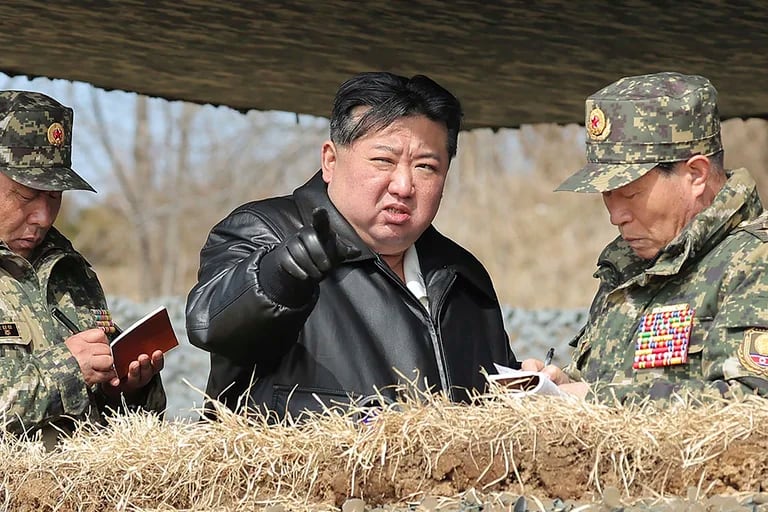
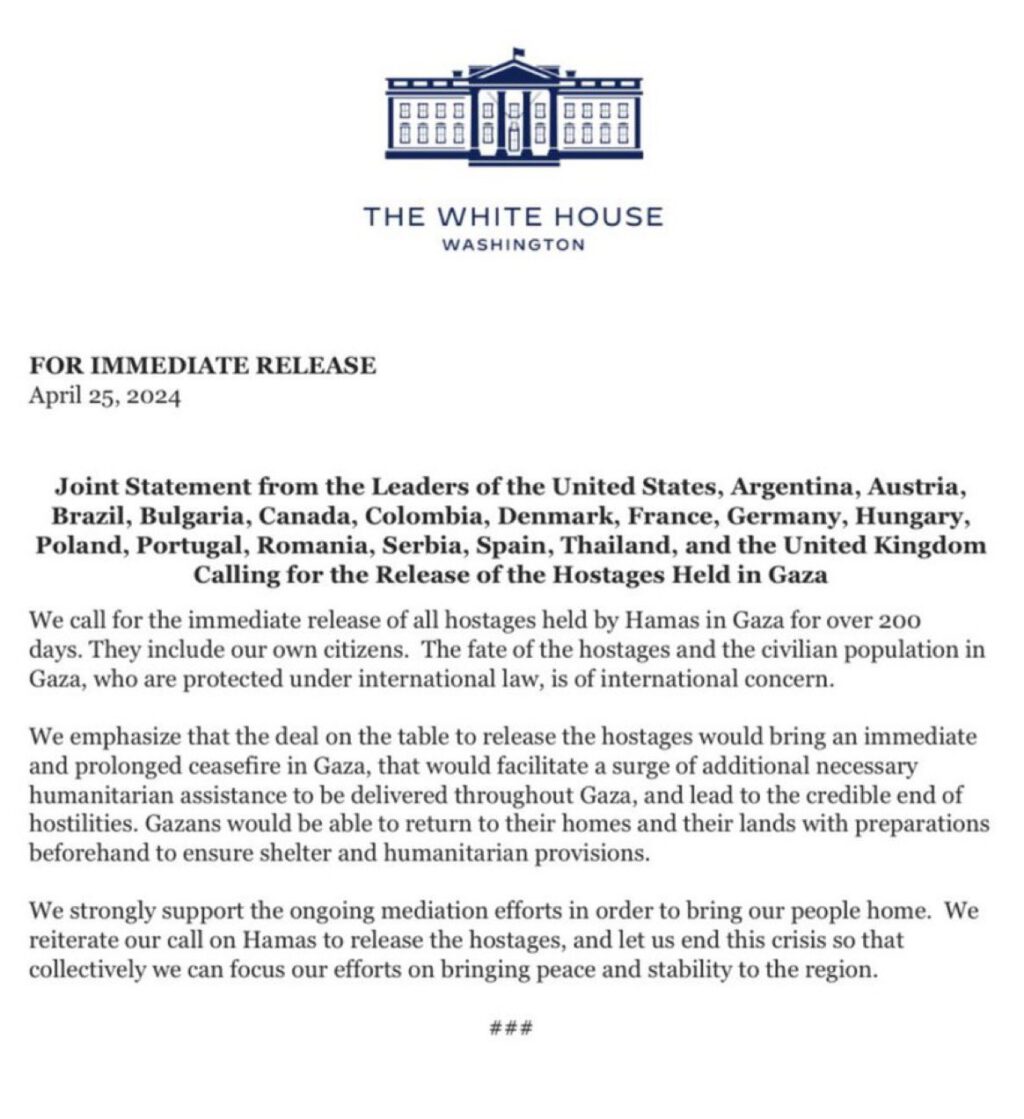
A
Post
See new posts
Conversation
会田誠 reposted
女たちのデータベース広場
@females_db_park
ヒジャブデモに楽曲提供した男性ですら死刑になるのか
ニカ・シャクラミのことは忘れられない
「ヒジャブを適切に着ていない」として女性を殺害する国に抗議するため、16歳の少女が好きな服を着て、歌って踊った
たったそれだけで8日間拷問・陵辱を限りを尽くされ、遺体の鼻は完全に潰れてた
Translated from Japanese by Google
Will even the man who provided music for the hijab demonstration be sentenced to death?
I will never forget Nika Shakrami. A 16-year-old girl wore her favorite clothes, sang and danced to protest against a country that kills women for “not wearing the hijab properly.” For just that, she was tortured and humiliated for eight days, and her nose was completely crushed.
ヒジャブデモに楽曲提供した男性ですら死刑になるのか
ニカ・シャクラミのことは忘れられない
「ヒジャブを適切に着ていない」として女性を殺害する国に抗議するため、16歳の少女が好きな服を着て、歌って踊った
たったそれだけで8日間拷問・陵辱を限りを尽くされ、遺体の鼻は完全に潰れてた https://t.co/rwbktszgtT pic.twitter.com/ksHkOEm1Ay— 女たちのデータベース広場 (@females_db_park) April 25, 2024
春ねむり HARU NEMURI (She/Her)
@haru_nemuri
あってはならないことすぎる
イラン人ラッパーに死刑判決 抗議デモ支援の楽曲制作 | TBS NEWS DIG
Translated from Japanese by Google
This is something that should never happen.
Iranian rapper sentenced to death for creating song in support of protests | TBS NEWS DIG
あってはならないことすぎる
イラン人ラッパーに死刑判決 抗議デモ支援の楽曲制作 | TBS NEWS DIG https://t.co/terM0JymR1
— 春ねむり HARU NEMURI (She/Her) (@haru_nemuri) April 25, 2024
ハマスのセクシャルハラスメントの証言記録ドキュメンタリー。これでもまだあなたはハマスを支持しますか?
多分なぜイスラエルがハマスの壊滅を求めて、必死に拉致を奪回したいのか、理解できると思います。
ハマスのセクシャルハラスメントの証言記録ドキュメンタリー。これでもまだあなたはハマスを支持しますか?
多分なぜイスラエルがハマスの壊滅を求めて、必死に拉致を奪回したいのか、理解できると思います。https://t.co/QO2ogamoWg https://t.co/98cfFwA4Ig
— Junko Yasmin יסמין ياسمين 🪬 (@JunkoYasmin) April 26, 2024
Screams before Silence
A documentary film on the sexual violence committed by Hamas on October 7, 2023.
https://www.screamsbeforesilence.com
今🇵🇸をサポートする事は過激派テロ武装組織をサポートするのは違う。今イスラエルを攻撃し、非難しているのはイスラム“過激派”武装テロ組織ハマスとイスラム聖戦。資金と武器で援助しているのがイラン🇮🇷国家です。米国の大学などでデモを起こし不安定化させているのも同じ人々で平和と安定を乱す。
Translated from Japanese by Google
Supporting them now 🇵🇸 is not the same as supporting extremist terrorist armed organizations. The ones attacking and criticizing Israel right now are the Islamic “extremist” armed terrorist organizations Hamas and Islamic Jihad. They are being supported with funds and weapons by the state of Iran 🇮🇷 . The same people are also causing instability by starting demonstrations at universities in the United States, disrupting peace and stability.
今🇵🇸をサポートする事は過激派テロ武装組織をサポートするのは違う。今イスラエルを攻撃し、非難しているのはイスラム“過激派”武装テロ組織ハマスとイスラム聖戦。資金と武器で援助しているのがイラン🇮🇷国家です。米国の大学などでデモを起こし不安定化させているのも同じ人々で平和と安定を乱す。 https://t.co/wa9zsGZar5
— Junko Yasmin יסמין ياسمين 🪬 (@JunkoYasmin) April 26, 2024
コハブ・エリヤキム-レヴィは10月7日以降、ハマスのセクシャルハラスメントの記録を収集してきた第一人者シリル・サンドバルグがそれを映像化しました。🔗で見れます。日本の報道では無視された記録どうぞ見てください!
Translated from Japanese by Google
Kohab Eliakim-Levi has been filming the Hamas sexual harassment case since October 7th, and was recorded by Cyril Sandberg, a leading expert who has been collecting records of sexual harassment in Hamas. You can see it here 🔗 . Please take a look at the records that were ignored in the Japanese media!
コハブ・エリヤキム-レヴィは10月7日以降、ハマスのセクシャルハラスメントの記録を収集してきた第一人者シリル・サンドバルグがそれを映像化しました。🔗で見れます。日本の報道では無視された記録どうぞ見てください! https://t.co/z84yOG92rT
— Junko Yasmin יסמין ياسمين 🪬 (@JunkoYasmin) April 26, 2024
Ägypten: Fortschritte bei Gesprächen zu Gaza mit Israel erzielt
Fr, 26.04.24 Quelle: dpa-AFX
KAIRO/TEL AVIV (dpa-AFX) – In die festgefahrenen Verhandlungen zum Gaza-Krieg könnte nach ägyptischen Angaben Bewegung gekommen sein. Bei Gesprächen zwischen ägyptischen und israelischen Vertreten hat es nach Angaben des staatsnahen ägyptischen Fernsehens Al-Kahira News am Freitag erhebliche Fortschritte gegeben. Nähere Angaben waren zunächst nicht bekannt. Der Sender hatte zuvor berichtet, eine ägyptische Delegation sei in Tel Aviv eingetroffen, um einen “umfassenden Rahmen” für ein Waffenstillstandsabkommen in Gaza zu besprechen. Eine offizielle Bestätigung gab es bisher nicht.
Israel und die islamistische Hamas verhandeln seit Monaten indirekt über eine Feuerpause und die Freilassung weiterer Geiseln, die Terroristen der Hamas und anderer extremistischer Gruppen am 7. Oktober vergangenen Jahres nach Gaza entführt hatten. Ägypten, die USA und Katar treten dabei als Vermittler auf.
Bei dem Gespräch zwischen ägyptischen und israelischen Vertretern sollte es israelischen Medien zufolge am Freitag zunächst um ein begrenztes Abkommen mit der Hamas gehen, wonach nur einige weibliche, ältere und kranke Geiseln freikommen. Laut unterschiedlichen israelischen Medienberichten geht es um 20 beziehungsweise 33 aus Israel verschleppte Menschen. Im Gegenzug dazu sollen palästinensische Gefangene aus israelischen Gefängnissen freikommen.
Zudem sollen vertriebene Palästinenser in den Norden des Gazastreifens zurückkehren können. Dagegen hatte sich Israel lange Zeit gesträubt. Auch eine Feuerpause ist Berichten zufolge Teil eines möglichen Deals. Einen dauerhaften Waffenstillstand lehnt Israel ab. Die Hamas wiederum pocht darauf. Medien zufolge will Israel mit dem Vorschlag für ein begrenztes Abkommen diese Hamas-Forderung umgehen.
Einen Vorschlag der USA, der die Freilassung von 40 entführten Frauen, älteren und kranken Menschen vorsah, hatte die Terrororganisation zuvor abgelehnt. Laut Hamas sollen nicht mehr so viele Geiseln, die in diese Kategorie fallen, am Leben sein.
Ägypten will laut israelischen Medien eine Einigung erreichen, um den bevorstehenden israelischen Militäreinsatz in Rafah im Süden des Gazastreifens abzuwenden. Die Regierung in Kairo ist besorgt, dass Palästinenser in großen Zahlen über die Grenze kommen könnten. In der Stadt Rafah an der Grenze zu Ägypten haben Hunderttausende Zuflucht vor den Kämpfen gesucht./arj/DP/ngu
—
ROUNDUP 2: Gaza-Gespräche in Riad und Kairo: Neuer Anlauf für Waffenruhe
Mo, 29.04.24 Quelle: dpa-AFX
RIAD/KAIRO/GAZA (dpa-AFX) – Mit Spitzendiplomatie in Riad und parallelen Gesprächen in Kairo haben Vermittler einen neuen Anlauf gestartet, um eine Waffenruhe im Gaza-Krieg auszuhandeln und eine große Offensive Israels auf die Stadt Rafah abzuwenden. Vor der Hamas lag nach Worten des britischen Außenministers David Cameron am Montag ein Vorschlag über eine 40 Tage lange Feuerpause. Demnach sollten “möglicherweise Tausende” Palästinenser aus israelischen Gefängnissen freigelassen werden im Gegenzug für die Freilassung von Geiseln aus Gewalt der Hamas, sagte Cameron am Montag in Riad bei einer Konferenz des Weltwirtschaftsforums (WEF).
“Ich hoffe, dass Hamas sich auf diesen Deal einlässt”, sagte Cameron. Aller Druck weltweit und “alle Augen” sollten jetzt auf der Hamas liegen. US-Außenminister Antony Blinken sagte, Israel habe einen “sehr, sehr großzügigen” Vorschlag gemacht”. Das Einzige, was die Menschen in Gaza jetzt von einer Waffenruhe trenne, sei die Hamas. Diese müsse “entscheiden und sie müsse schnell entscheiden”, sagte Blinken. Eine Hamas-Delegation traf am Montag in Kairo ein, um über den jüngsten Vorschlag zu verhandeln.
Israelische Medien hatten zuvor berichtet, dieser Vorschlag sehe eine Freilassung von 33 Geiseln aus der Gewalt der Hamas vor. Im Gegenzug beabsichtige Israel, mehrere Hundert palästinensische Häftlinge aus Gefängnissen zu entlassen. Unter ihnen seien Frauen, auch Soldatinnen, ältere Menschen, Verletzte und “psychisch Beeinträchtigte”. Die Länge der Feuerpause sollte dabei den Berichten zufolge von der Zahl der freigelassenen Geiseln abhängen. Israel würde sich demnach auch von einer zentralen Straße zurückziehen, die den Gazastreifen in Norden und Süden teilt. Einwohner des nördlichen Abschnitts dürften auch in ihre Wohnorte zurückkehren. Eine große Mehrheit, der rund 2,2 Millionen Einwohner der Gazastreifens ist während des Krieges in den Süden geflohen.
Vom Ausgang der Verhandlungen hängt auch ab, inwieweit Israel seine Angriffe in der Stadt Rafah im Süden des Gazastreifens fortsetzt und zu einer großangelegten Offensive ausweitet. Entgegen wiederholter Warnungen von Verbündeten wegen Hunderttausender Binnenflüchtlinge in der Stadt will Israel dort die verbliebenen Hamas-Bataillone zerschlagen. Bei neuen israelischen Angriffen in Rafah wurden laut der von der Hamas kontrollierten Gesundheitsbehörde mindestens 27 Palästinenser getötet. Die Angaben ließen sich nicht unabhängig überprüfen.
Im Zusammenhang mit den Verhandlungen in Kairo und den Kämpfen in Rafah gab es Spekulationen, Israels Ministerpräsident Benjamin Netanjahu müsse sich möglicherweise zwischen einem Geisel-Deal und dem Fortbestand seiner Regierung entscheiden. Israels rechtsextremer Finanzminister Bezalel Smotrich hatte am Sonntag mit einem Ende der Regierung gedroht, sollte der gegenwärtige Geisel-Deal umgesetzt und ein Militäreinsatz in Rafah gestoppt werden. Netanjahus politisches Überleben hängt von seinen rechtsextremen Koalitionspartnern ab.
In Riad sollten am Montag am Rande der WEF-Konferenz mehrere Außenminister westlicher und arabischer Länder über den Konflikt beraten – Diplomatenkreisen zufolge im Format 5+5. Neben Blinken sollten unter anderem Bundesaußenministerin Annalena Baerbock teilnehmen sowie deren Amtskollegen aus Ägypten, Jordanien und Saudi-Arabien. Die WEF-Konferenz drehte sich eigentlich um Themen zu Umwelt, Gesundheit und Finanzen, wurde aber stark beherrscht vom Gaza-Krieg und dessen Auswirkungen auf die Region.
Auch an Israels nördlicher Grenze zum Libanon hielten die Kämpfe am Montag an. Die Kassam-Brigaden, der militärische Arm der Hamas, reklamierte einen Angriff mit zahlreichen Raketen auf ein Militärlager nahe der Grenzstadt Kiriat Schmona für sich. Es gab keine Berichte zu Verletzten oder Sachschäden. Israelische Medien berichteten, die meisten der rund 20 Geschosse seien von der Raketenabwehr abgefangen worden. Der Rest sei auf unbewohntem Gebiet eingeschlagen. In der Nacht hatte Israel nach eigenen Angaben Ziele der Schiitenmiliz Hisbollah im Süden des Libanon beschossen./jot/DP/jha
Hamburgo, Alemania. 🇩🇪
Los radicales se manifestaron presionando por un califato musulmán alemán y la ley Sharia en toda Europa.
Saluden a Europa.
Translated from Spanish by Google
Hamburg, Germany. 🇩🇪
Radicals demonstrated by pushing for a German Muslim caliphate and Sharia law throughout Europe.
Say hello to Europe.
Hamburgo, Alemania. 🇩🇪
Los radicales se manifestaron presionando por un califato musulmán alemán y la ley Sharia en toda Europa.
Saluden a Europa. pic.twitter.com/ax3R0hZ0xG
— SissiEmperatriz 🇮🇱 (@GabyLob) April 29, 2024


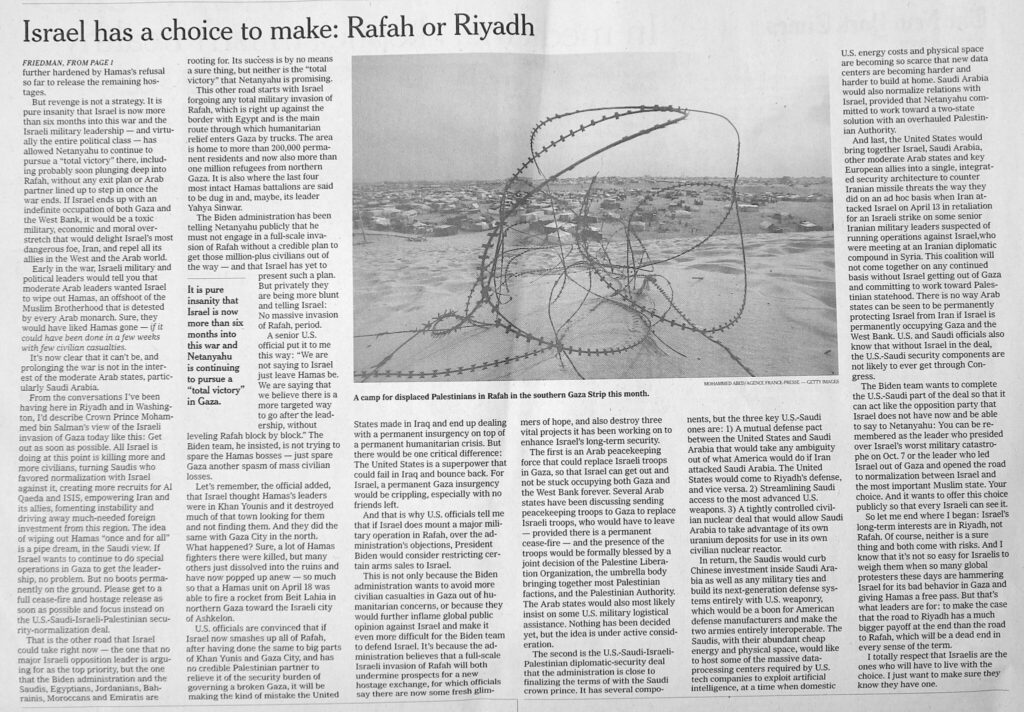
wochentaz 27. april – 3 mai 2024 (die tageszeitung TAZ )
Aus New York: Marina Klimchuk



2024/5/2, reuters
09.00 Uhr – Frankreichs Außenminister Stephane Sejourne will Diplomatenkreisen zufolge im Rahmen seiner Nahost-Reise einen außerplanmäßigen Stopp in Kairo einlegen. “Der Überraschungsbesuch des Ministers erfolgt im Kontext der Bemühungen Ägyptens, Geiseln zu befreien und eine Waffenruhe in Gaza zu erreichen”, sagt ein Insider. Ägypten ist einer der Vermittler im Krieg zwischen Israel und der radikal-islamischen Palästinenser-Organisation Hamas. Zuletzt wurden die internationalen Anläufe zur Wiederbelebung der lange festgefahrenen Verhandlungen über eine Waffenruhe verstärkt. Mehrere ranghohe westliche Politiker reisten in die Region. Sejourne machte in den vergangenen Tagen Station im Libanon sowie in Saudi-Arabien und Israel. Am Dienstag traf er in Jerusalem den israelischen Ministerpräsidenten Benjamin Netanjahu. In einem Interview sagte er mit Blick auf eine Vereinbarung zwischen den Kriegsparteien, dass es etwas Bewegung gebe. Frankreich engagiert sich auch deshalb besonders, weil unter den verbliebenen Geiseln der Hamas noch drei französische Staatsangehörige sind.
Up-date 06.05.24
NAHOST-TICKER-Israels Militär – Palästinenser sollen Ost-Rafah verlassen
06. Mai (Reuters) – Es folgen Entwicklungen rund um den Krieg zwischen Israel und der radikalen Palästinenser-Organisation Hamas im Gazastreifen. Zum Teil lassen sich Angaben nicht unabhängig überprüfen:
07.15 Uhr – Das israelische Militär hat nach eigenen Angaben die Palästinenser in Rafah aufgefordert, die östlichen Teile der Stadt zu verlassen und sich in ein in der Nähe eingerichtetes “humanitäres Gebiet” zu begeben. In einer Erklärung des Militärs, die der Beginn einer Evakuierung der Zivilbevölkerung vor einem möglichen Bodenangriff auf die Grenzstadt im Süden des Gazastreifens sein könnte, hieß es, dass Plakate, Textnachrichten, Telefonanrufe und Ankündigungen in Medien eingesetzt würden, um die Zivilisten zu ermutigen, sich allmählich in die angegebenen Gebiete zu bewegen. Zuvor hatte das israelische Armeeradio berichtet, dass das Militär mit einer Evakuierung von Rafah begonnen habe. Israel droht seit längerem mit einem Angriff auf die Stadt, die als letzte Bastion der militant-islamistischen Palästinenser-Organisation Hamas im Gazastreifen gilt.
06.40 Uhr – Israelische Streitkräfte haben einem Medienbericht zufolge mit einer Evakuierung palästinensischer Zivilisten aus Rafah vor einem angedrohten Angriff auf die Grenzstadt im Süden des Gazastreifens begonnen. Die Evakuierungen konzentrierten sich auf einige Randbezirke von Rafah, von denen aus die Menschen in Zeltstädte in den nahe gelegenen Städten Chan Junis und Al Muwassi gebracht werden sollten, berichtet das israelische Armeeradio. Das Militär äußerte sich zunächst nicht dazu.
00.04 Uhr – Bei einem israelischen Angriff auf ein Haus in Rafah im südlichen Gazastreifen sind neun Palästinenser getötet worden, teilt die von der Hamas kontrollierte Gesundheitsbehörde mit.
05.05.24
FOKUS 1-Verhandlungen über Gaza-Waffenruhe in der Sackgasse
*
Hamas und Israel rücken von Positionen nicht ab
*
Beide Seiten werfen sich gegenseitig Blockadehaltung vor
*
Gazastreifen-Bewohner melden anhaltende Kämpfe
*
Israel schließt Grenzübergang nach Hamas-Beschuss
Kairo, 05. Mai (Reuters) – Bei den indirekten
Verhandlungen über eine Waffenruhe im Gaza-Krieg haben sich
keine entscheidenden Fortschritte abgezeichnet. Sowohl die
radikal-islamische Hamas als auch die israelische Regierung
beharrten am Sonntag auf ihren teils gegensätzlichen Positionen.
Beide Seiten warfen sich gegenseitig vor, die Gespräche zu
behindern. Überschattet wurden die internationalen Bemühungen
zudem von neuen Kämpfen. Israel schloss nach Beschuss durch die
Hamas einen Grenzübergang, über den dringend benötigte
Hilfsgüter in den Gazastreifen geliefert werden. Aus dem seit
sieben Monaten umkämpften Palästinenser-Gebiet wiederum meldeten
Bewohner und Behörden in der Nacht anhaltende israelische Luft-
und Panzerangriffe, bei denen es erneut Tote und Verletzte
gegeben habe.
In Kairo führten ägyptische und katarische Unterhändler den zweiten Tag in Folge Gespräche mit einer Hamas-Delegation in der Hoffnung, eine Einigung über eine Feuerpause und eine daran geknüpfte Freilassung weiterer Geiseln aus der Gewalt der Extremisten-Organisation zu erreichen. Die Hamas hielt jedoch an zentralen Forderungen fest, etwa dass eine Feuerpause in ein vollständiges Kriegsende münden müsse. Das aber lehnt Israel, das bei den Gesprächen in Kairo nicht vertreten war, kategorisch ab.
Ministerpräsident Benjamin Netanjahu bekräftigte dies. Der Militäreinsatz werde beendet, wenn die Hamas entmachtet sei, ließ er mitteilen. Sein Land sei willens, die Kämpfe im Gegenzug für die Freilassung von Geiseln pausieren zu lassen. Die Forderungen der Hamas nach einem Ende des Kriegs und einem Abzug der israelischen Truppen seien jedoch ebenso inakzeptabel wie ein Verbleib der Hamas an der Macht.
Kurz darauf ließ Hamas-Chef Ismail Hanijeh eine Erklärung verbreiten. Darin hieß es, die Hamas sei nach wie vor daran interessiert, eine umfassende Waffenruhe zu erreichen. Diese müsse zu einem Ende der israelischen “Aggression” führen, Israels Abzug aus dem Gazastreifen garantieren und ein ernsthaftes Abkommen zum Austausch von Geiseln gegen palästinensische Gefangenen erreichen. Hanijeh warf Netanjahu vor, die Aggression fortzusetzen, den Konflikt auszuweiten und die Bemühungen der Vermittler zu sabotieren.
ISRAEL DROHT MIT ANGRIFF AUF RAFAH
Israels Verteidigungsminister Joaw Gallant entgegnete, die Hamas lasse erkennen, dass es ihr nicht ernsthaft darum gehe, eine Waffenruhe zu erreichen. Sollte dem wirklich so sein, werde Israel “in sehr naher Zukunft” unter anderem in Rafah militärisch vorgehen. Israel hat mit einer Bodenoffensive auf die Stadt im Süden des Gazastreifens gedroht. Dort hat etwa die Hälfte der Bevölkerung des Küstengebiets vor den Dauerbombardements Zuflucht gesucht. Etwa eine Million Vertriebene harren seit Monaten unter immer prekäreren Bedingungen auf engstem Raum aus.
Hamas-Kämpfer hatten am 7. Oktober bei einem Massaker im Süden Israels nach Angaben der dortigen Behörden 1200 Menschen getötet und mehr als 250 Geiseln genommen. Israel startete daraufhin eine Militäroffensive, bei der nach palästinensischen Angaben bislang mehr als 34.600 Menschen getötet wurden. Der Gazastreifen wurde zum großen Teil in Schutt und Asche gelegt. Eine kurze Feuerpause gab es bislang nur Ende November. Dabei wurden mehrere Geiseln im Austausch gegen palästinensische Gefangene aus israelischen Gefängnissen freigelassen. Allerdings befinden sich geschätzt immer noch etwa 130 Geiseln in der Gewalt der Hamas.
(Bericht von Nidal al-Mughrabi, geschrieben von Christian Rüttger. Redigiert von Markus Wacket Bei Rückfragen wenden Sie sich bitte an unsere Redaktion unter berlin.newsroom@thomsonreuters.com (für Politik und Konjunktur) oder frankfurt.newsroom@thomsonreuters.com (für Unternehmen und Märkte).)
Jewish children in Munkács, 1933, singing HaTikvah, dreaming of Israel. ✡️
Most of the children in this video was tragically murdered in the Holocaust. pic.twitter.com/fpmWVBFBpQ
— Hananya Naftali (@HananyaNaftali) May 5, 2024
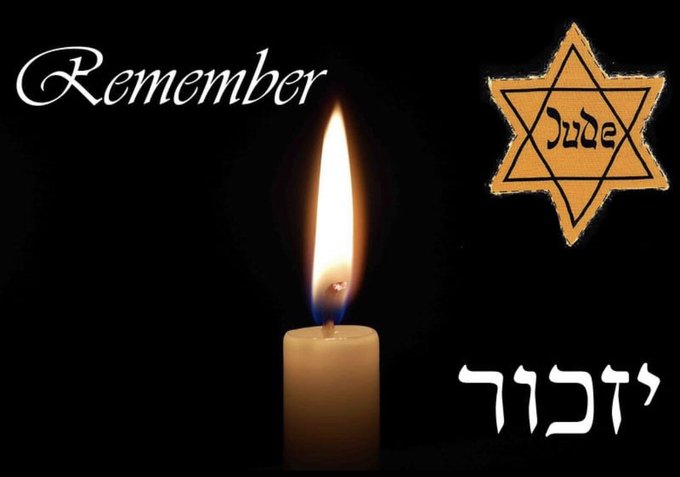

To coincide with #Yom HaShoah, today saw the official opening of the Holocaust Art installation. This was a project undertaken by Leonie Balbin through a Principal’s Grant awarded last year and she has done a truly beautiful job.#yizkor #neveragain #JewishIdentity #Scopus75 pic.twitter.com/42XUeZMTi7
— Mount Scopus (@MountScopus) May 6, 2024
From:
https://mo-husseini.medium.com/50-completely-true-things-1ce672087b28
50 Completely True Things

This is a repost of a list of posts I made to Threads last fall.

I am a Palestinian American who is tired of stupid people.
I wanted to share a (not exhaustive) list of 50 useful and indisputable facts on the Palestinian / Israeli conflict.
FACT No. 1.
Some Jews are shitty and awful people.
FACT No. 2.
Some Muslims are shitty and awful people.
FACT No. 3.
Some Christians are shitty and awful people.
FACT No. 4.
Some Arabs are shitty and awful people.
FACT No. 5.
Some Americans are shitty and awful people.
FACT No. 6.
Some Israelis are shitty and awful people.
FACT No. 7.
Some Palestinians are shitty and awful people.
FACT No. 8.
Not all Jews are Israelis.
FACT No. 9.
Not all Israelis are Jews.
FACT No. 10.
Not all Jews are white.
FACT No. 11.
Not all Israelis are white.
FACT No. 12.
Not all Muslims are Arabs.
FACT No. 13.
Not all Arabs are Muslim.
FACT No. 14.
Not all Palestinians are Muslim.
FACT No. 15.
Not all Arabs are Palestinian.
FACT No. 16.
Not all Palestinians are Hamas.
FACT No. 17.
Texans are not Arizonans.
FACT No. 18.
Germans are not Dutch.
FACT No. 19.
Palestinians are not Jordanians.
FACT No. 20.
Egyptians are not Palestinians.
FACT No. 21.
Where you are born does not actually determine anything about you.
FACT No. 22.
Your passport is not your political beliefs.
FACT No. 23.
Your government is not your morality.
FACT No. 24.
Not all Jews like the Israeli government.
FACT No. 25.
Not all Israelis like the Israeli government.
FACT No. 26.
Not all Palestinians like the Palestinian government.
FACT No. 27.
Israeli governments have committed acts of terror and violence against the Palestinian people.
FACT No. 28.
Palestinian organizations have committed acts of terror and violence against the Israeli people.
FACT No. 29.
US leaders do things that I do not agree with (e.g., 2016–2020)
FACT No. 30.
Israeli leaders do things that Israelis do not agree with.
FACT No. 31.
Palestinian leaders do things that Palestinians do not agree with.
FACT No. 32.
What happened to the Israeli civilians on 10/7 is fucking awful, and Hamas has earned every fucking thing that the Israeli military throws at them.
FACT No. 33.
What is happening in Gaza to civilians is fucking awful, and not the smartest thing for Israel to do, and some aspects of Israeli military activity may be war crimes, and it doesn’t have to be genocide for it to be tragic.
FACT No. 34.
You can advocate for Palestine without being a racist, antisemitic piece of shit.
FACT No. 35.
You can advocate for Israel without being a racist, anti-Arab piece of shit.
FACT No. 36.
People like to have sex with each other, and they sometimes procreate with people outside their tribes.
FACT No. 37.
No one in the Levant is indigenous. Every fucking empire in history has fucked their way through the Levant. There is no pure indigeneity. And let’s be honest: the entire planet has been colonized by hominids from the Great Rift Valley.
FACT No. 38.
Palestinians and Israelis share paternal Bronze-Age DNA. Yes, even Ashkenazi Jews.
FACT No. 39.
Stop with the fucking history lessons about what the Israelites did, or what the Ottomans did, or what the British did, or whatever. IT IS FUCKING IMMATERIAL. There is a pile of dog shit in the living room. Instead of arguing about whose dog took the bigger shit in the living room, maybe focus on how we clean up the dog shit, and maybe we keep the dogs outside.
FACT No. 40.
Any people have a right to group together and self-identify as whatever-the-fuck-they-want-to-self-identify as. When they get large enough as a group, those people have the right to self-determination and self-respect and a state where they can control their own destinies.
FACT No. 41.
Whether you like the idea or not, the Israeli state exists. It will also continue to exist until the ISRAELI people decide they don’t want it to exist. Your opinion on this matter (if you are not Israeli) is fucking immaterial.
FACT No. 42.
Whether you like the idea or not, a Palestinian state will exist at some point, and it will continue to exist until the PALESTINIAN people decide they don’t want it to exist. Your opinion on this matter (if you are not Palestinian) is fucking immaterial.
FACT No. 43.
You cannot bomb a people into true submission — the Blitz did not ‘soften’ British morale.
FACT No. 44.
You cannot fight a war and kill a people’s desire for safety, freedom, and self-determination. You can stifle it. You can try to ignore it, but one way or another, you will have to deal with it. This is as true for my Israeli friends as it is for my Palestinian ones.
FACT No. 45.
The solution to the Middle East conflict will not be found on Threads, or TikTok, or in the streets of any city that isn’t within a 2-hour car ride from downtown Jerusalem.
FACT No. 46.
If you want to be an ally to Palestinians, please feel free to continue to advocate for peace, security, and self-determination, but do it without dehumanizing or stereotyping Israelis and Jews.
FACT No. 47.
If you want to be an ally to Israelis, please feel free to continue to advocate for peace, security, and self-determination, but do it without dehumanizing or stereotyping Palestinians and, Muslims, and Arabs.
FACT No. 48.
If you just want to advocate for peace, try to be a voice for reason, and don’t inflame or over-simplify an already chaotic, complicated, and deeply emotional issue. Help people find common ground and help bring the temperature down. You can be moral and stand up for what you believe in without being an asshole.
FACT No. 49.
Yes, an amazing one-state liberal democracy where Palestinian boys & girls could fuck Israeli boys & girls & make cute babies, & everybody spoke Hebrew & Arabic & we all agreed that hummus and falafel are delicious and Palestinian and sufganiyot are delicious and Israeli would be awesome.
But this wonderful future has about as much chance of happening in the near term as this 5’8″ 53-year-old Palestinian has being a starter for the Golden State Warriors. A two-state solution is the only workable one.
FACT No. 50.
Hummus is Palestinian. I am immovable on this.
Don’t fucking @ me
2024/5/8 up-date:

2021年5月8日の認知症予防。「ロベール・デスノス、藤田嗣治、藤田ユキ、藤田君代。レジスタンス 対 戦争犯罪人。」
Dementia Prevention on 8th of May 2021. “Robert Desnos, Tsuguharu Foujita, Youki Foujita, Kimiyo Foujita. Résistance vs War Criminal.”
https://art-culture.world/articles/robert-desnos-tsuguharu-foujita-youki-foujita-kimiyo-foujita-resistance-vs-war-criminal/
2024/5/8
By Katja Kullmann,ex TAZ, yesterday added with “FROM HAMAS”
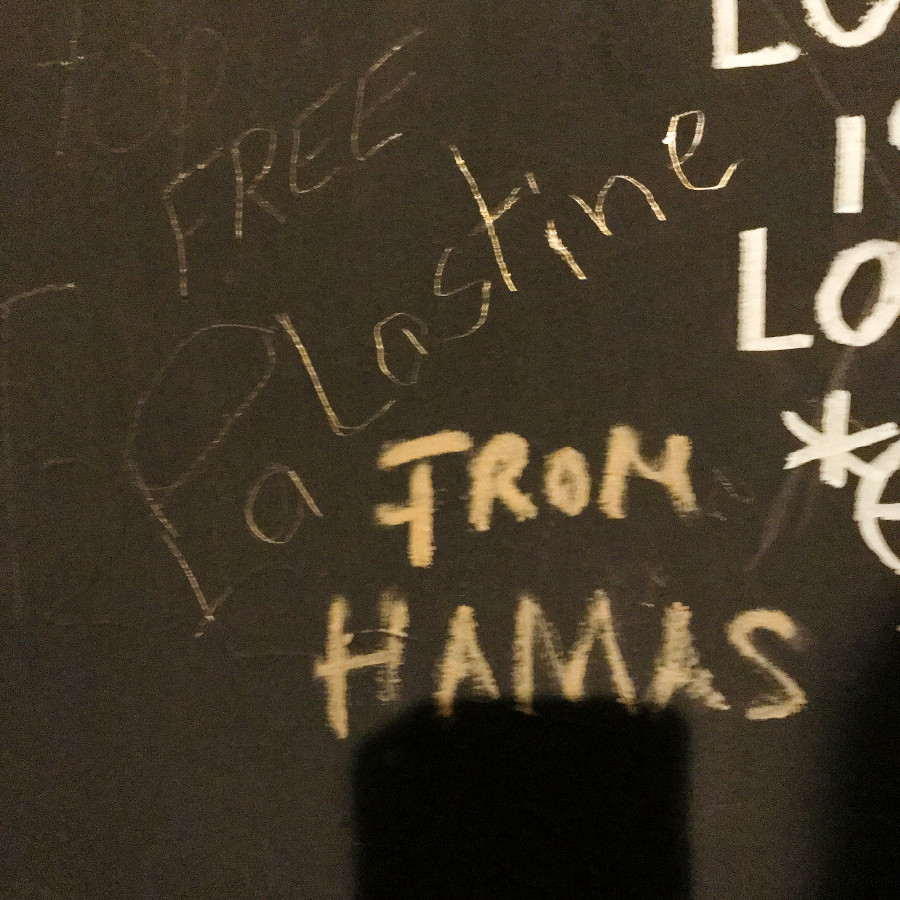
パレスチナ あたたかい家
Palestine, Our Warm House
パレスチナの皆さんがあたたかい家に帰り
家族と一緒に幸せに過ごせるようになってほしい
パレスチナにいる誰もがあたたかい家で
家族と幸せに暮らすことを願う、
アーティストやボランティア総勢100名以上による
展示会を開催します。
鑑賞だけでなく、
パレスチナのことを学び・体験できる場を作ります。
より良い社会の実現のために何をすればいいのか、
それぞれが自分ごとに考え
行動するきっかけになれば幸いです。
この世界に生まれた誰もが
幸せに生きたいと願うのは自然なことです。
パレスチナをきっかけに
日本や他の国で起こっている権力による
支配や暴力のことも考え実践し始める場でありたい。
「全ての人が生きていること」
「それぞれに生活があること」
「今ここで生きていること」
を尊く想い行動に繋げていく展示会を目指します。
パレスチナを想うアートの展覧会
2024.5.2 (木) 〜 2024.5.12 (日)
会期中無休
平日/13:00~21:00
金〜日曜日・祝日/11:00~21:00
※最終日のみ18:00 close
※土日祝の夜はNAMNAMにてイベント開催予定。展示をゆっくり観たい方は昼間がおすすめです。
場所:NAMNAM SPACE(神奈川県登戸)
クィア・コミュニティスペース
小田急小田原線・JR南武線登戸駅より徒歩8分
入場料:無料
できる方は寄付をお願いいたします。(推奨の寄付額は500円〜)
参加アーティスト
AibaAoi/Aya Celosia/fumika hasegawa/Hana Onishi/Icco Nakama/ISO/anicco Ceramics/KIE/Kotsu/Loving/manon/MARIA SAKURAI/marini*monteany/mei ehara/Motoki WATANABE/NIKO/piñata/rekko/rino./saquochang/sawanoenami/TAKORA/tomohiro yamatsuki/Momoe Narazaki/WAN_TAN/yoda/YUKA(MAKE LOVE,NOT WAR)/Zac/青木萌絵/あけたらしろめ/阿児つばさ/有吉玲/石山さやか/うらあやか/江川仮名子/大木花帆/大関愛/大津萌乃/岡田将充(OMD)/奥誠之/奥村海斗/長田結花/おざわさよこ/小山維子/架け箸/加藤豊/木内ひとみ/北村花/木村りべか/櫛田康子/小泉さよ/後藤瑞穂/戸山恢/小指/齋藤レイ/阪本萌/さこももみ/島つくえ/しみずゆうこ/しょこ/新地健郎/ZINE FOR GAZA制作チーム(安藤健史、さよっこ、吉美駿一郎、小山田浩子)/須藤裕太郎/砂守かずら/住吉あゆみ(ものつく)/惣田紗希/そぼろ/高田満帆/伊達努/田中健一/谷澤紗和子/玉井夕海/出路優亮/寺田燿児/寺本愛/東條新/中島りか/中村一般/西ウチ子/ネコダ珈琲/はしもとゆか/ハスダユイ/八ハル子/春ねむり/はるまき/パレスチナとつながる写真展PROJECT マクルーバ/一橋匠蔵/藤岡拓太郎/ブブ・ド・ラ・マドレーヌ/細井耕平/まいにちレコード/まるゐ/南阿沙美/宮川知宙/都/ミョン|樺|ファ/山口法子/山畑俊樹/夕暮宇宙船/横澤タクロウ/横山寛多/吉岡ゆうこ/吉田尚令/若杉智也(PNTR)/渡邉早貴/渡邉葉月(110名、2024/4/23時点、五十音順)
more @
https://sites.google.com/view/palestineourwarmhouse/
Written on 2024/5/6
Klaus Honnef
Menschenfreunde, Freiheitskämpfer? Israel öffnet auf Druck der (westlichen – vor allem) Weltöffentlichkeit weitere Grenzübergänge, um der geschundenen Bevölkerung das schiere Existieren im weitgehend zerstörten Gazastreifen zu ermöglichen, und die Hamas schießt mit Raketen auf die israelischen Soldaten dort, tötet einige und reklamiert es als Erfolg. Bravo. So denken Verbrecher, die sich allein selbst ernst nehmen, und denen diejenigen, die sie zu befreien vorgeben, sch…egal sind. Zur Wahrheit gehört auch, dass viele von denen, die nun unter den mörderischen Kriegsbedingungen leiden, die Verbrecher-Clique der Hamas frei gewählt haben. Wann gehen diese simplen Tatsachen endlich in die Köpfe der jungen Demonstranten im Westen, wo man noch ungehindert demonstrieren darf – es sei denn, man verletzt die Gesetze? Stupid. So ideologisch verbohrt wie diese waren – ich muss es eingestehen – die sog. 68er nie. Ja, ich empöre mich angesichts der immer üblicher werdenden Verdrehungen – auch im deutschen Fernsehen – der evidentesten Dinge. Es ist so inflationär von Werten die Rede, dass man befürchten muss, dass es sie faktisch gar nicht mehr gibt.
Comments:
Halina Jaworski
Man muss es endlich begreifen, daß es denen nicht um eine “Zweistaaten-Lösung” geht sondern allein um die Eliminierung Israels ! Die Hamburger Demo für ein deutsches Kalifat will Deutschland nach dem Modell des Iran umbauen. Wirklich erschreckend ist für mich die schulterzuckende Hilflosigkeit der deutschen Regierung und die Gleichgültigkeit der meisten Menschen hier, die entweder tatsächlich zu abgestumpft sind um zu realisieren, was sich hier gerade abspielt.
Gunter Lorenz
Netanyahu ein Unglück für Israel!
Halina Jaworski
BN ist schrecklich aber nicht die Ursache sonder der Vorwand.
Mit dem Wesen der Hamas wollen sie sich nicht befassen. Es ist mangelnde Kenntnis der Geschichte Israels und des Nahen Osten überhaupt.
Mit dem Angriff der Hamas auf Israel und dem Gaza-Krieg wächst der Antisemitismus weltweit. Der kommt aber nicht nur von Islamisten oder Rechtsextremen, sondern auch von politisch links eingestellten Menschen und Institutionen
Antisemiten tarnen sich. Es ist der blanke Judenhass.
Link to:
Israel – Albtraum der deutschen Linken
Stand: 01.05.2024, 08:30 Uhr
Mit dem Angriff der Hamas auf Israel und dem Gaza-Krieg wächst der Antisemitismus weltweit. Der kommt aber nicht nur von Islamisten oder Rechtsextremen, sondern auch von politisch links eingestellten Menschen und Institutionen.
Antizionismus statt Springerstiefel
Der altbekannte Judenhasser mit Glatze und Springerstiefeln ist heute zum Auslaufmodell geworden. Längst haben wir es mit zusätzlichen Spielarten des Antisemitismus zu tun. Eine davon ist der sogenannte linke Antisemitismus. Den gibt es seit vielen Jahren – lange Zeit mehr oder weniger versteckt, inzwischen aber durchaus auch offen – an den Universitäten, in der Kunst, der Wissenschaft und in den Kirchen.
Fixierung auf den Staat
Auch er ist fixiert auf den Staat Israel. Die “Israelisierung” des Antisemitismus stellt eine ernste Herausforderung für Politik und Gesellschaft dar. Was sind die Erscheinungsformen dieses linken Judenhasses? Was sind seine Strategien?
https://www1.wdr.de/radio/wdr5/sendungen/lebenszeichen/der-linke-antisemitismus-100.html
WDR WESTDEUTSCHER RUNDFUNK
Lebenszeichen
ISRAEL – ALBTRAUM DER DEUTSCHEN LINKEN…“
Der „linke“ Antisemitismus als Herausforderung für Politik und Gesellschaft.
Von Kirsten Serup-Bilfeldt
01.05.2024
O-Ton:
Ruth Galinski †2014
Bundespräsident Frank Walter Steinmeier
Noam Petri (Medizinstudent an der FU Berlin)
Professor Michael Wolffsohn ( Historiker, Publizist)
Dr. Wolfgang Kraushaar (Politikwissenschaftler, „Hamburger Stiftung zur Förderung von Wissenschaft und Kultur“)
Professorin Monika Schwarz-Friesel (Antisemitismusforscherin, „TU“ Berlin)
Einspieler – Tk 1 – O-Ton Bundespräsident Frank Walter Steinmeier: 01:35
„Wir sagen unseren Freunden in Israel und allen Jüdinnen und Juden: Ihr seid nicht allein! Wir stehen in diesen Stunden an Eurer Seite…“
Sprecherin:
Bundespräsident Frank Walter Steinmeier am 22. Oktober 2023.
Sprecher:
Zwei Wochen zuvor, am 7. Oktober 2023 hatten Mitglieder der palästinensischen radikal-islamistischen Hamas einen blutigen Terroranschlag in der Nähe des Kibbuz‘ Re’im in Israel verübt. Auf bestialische Weise hatten sie mehr als 1200 Männer, Frauen und Kinder ermordet und rund 240 Geiseln in den Gazastreifen entführt.
Es ist das schlimmste Massaker an jüdischen Menschen seit der Schoah. Und sorgt natür- lich auch in Deutschland für blankes Entsetzen:
Einspieler – Tk 2 – O-Ton Bundespräsident Frank Walter Steinmeier: 01:46
„Euer Schmerz ist unser Schmerz 07:49 Der Schutz jüdischen Lebens ist Bürgerpflicht…“
Sprecherin:
Doch es dauert nicht lange, bis die anfängliche – wenn auch überschaubare – Solidarität mit den israelischen Opfern zu bröckeln beginnt und die Stimmung kippt. Und
nur ein paar Wochen später führt das blutige Gemetzel in Israel auf deutschen
Straßen zu den schlimmsten antisemitischen Ausschreitungen, Krawallen und gewalttätigen Übergriffen seit den Zeiten des Nationalsozialismus.
Einspieler – Tk 3 – Sprechchöre, Antisemitische Demonstrationen:
„Jude, Jude, feiges Schwein, komm heraus und kämpf allein…“, „Yallah, yallah, Intifada – von Berlin bis Gaza…“ „From the river to the sea, Palestine shall be free…“
Sprecherin:
Die, die jetzt in zahllosen deutschen Städten demonstrieren, sind nicht die altbekannten Rechten mit Glatze und Springerstiefeln. Eher präsentiert sich hier ein Querschnitt durch die Mitte der Gesellschaft. Es sind Junge und Ältere, Männer und Frauen, Deutsche und Aus- länder, Schüler und Studenten, Künstler, Angestellte, Kirchen- und Medienleute, Gewerkschafter, Hausfrauen und schrille „Aktivisten“ unterschiedlicher Herkunft.
Politische Beobachter stellen fest: Eines eint sie: Der Hass auf Israel!
Sprecher:
In den Wochen nach dem 7. Oktober häufen sich solche Demonstrationen. Überdies kommt es zu körperlichen Angriffen auf Juden, zu Schmierereien an Häusern und Wohnungen jüdi- scher Bewohner, zu antiisraelischen Boy-cottaufrufen, Pöbeleien in Bussen und Bahnen, in den sozialen Netzwerken, in der Kunstszene. Aus Angst vor Übergriffen schicken jüdische Eltern ihre Kinder nicht mehr in Kitas oder Schulen. An mehreren Universitäten gibt es in- nerhalb der Studentenschaft lautstarke öffentliche Sympathiebekundungen mit der Hamas. Nach dem gewalttätigen Angriff eines arabischen Studenten auf einen
jüdischen Kommilitonen, der dabei schwer verletzt wird, gerät der Präsident der Freien Uni- versität Berlin Professor Günther Ziegler ins Kreuzfeuer der Kritik, weil
er die Exmatrikulation des Angreifers nicht eindeutig befürwortet hatte.
Der jüdische Medizinstudent Noam Petri zur Rolle Zieglers:
Einspieler – Tk 4 – O-Ton Noam Petri: 00:22
„Er spricht davon, dass Antisemitismus keinen Platz an der Uni hat. Das ist falsch. Antisemi- tismus hat seit Wochen Platz an der Uni. „Free Palestine from German guilt“ hat man auf Plakaten gesehen… Nach dem schlechten Krisenmanagement werden jüdische Studenten aktiv bedroht.
Sprecher:
Ebenfalls an der FU Berlin schikanieren propalästinensische Gruppen jüdische Mit- studenten und machen Stimmung gegen Israel – mit Hetzparolen auf Flugblättern und an Häuserwänden. Dabei verbünden sich linke und palästinensische Aktivistengruppen.
Sprecherin:
Eine alte Allianz. Bekannt aus den 1960er Jahren!
Sprecherin:
Szenenwechsel. Berlin 1969.
Sprecher:
Die Putzhilfe, die an diesem Morgen den Garderobenraum betritt, hört ein seltsames
Ticken, das sie sich nicht erklären kann. Der Raum ist leer – nur in der Ecke hängt
ein heller Trenchcoat, den am Abend zuvor offenbar jemand hier vergessen hat.
Die eilig herbeigerufene Polizei entdeckt, eingenäht in den Saum des Trenchcoats, eine Bombe. Da der Zünder defekt ist, konnte sie nicht detonieren. Das rettet den rund 250 Mitgliedern der jüdischen Gemeinde im Gemeindehaus in der West-Berliner Fasanenstraße an diesem 9. November 1969 das Leben. Am Jahrestag des Novemberpogroms von 1938 hatten sie sich dort zu einer Gedenkfeier ver
sammelt. Zwar hatte der Sprengsatz versagt, doch der Schock in der Gemeinde sitzt tief. Noch Jahre später erinnerte sich Ruth Galinski, Ehefrau des damaligen Gemeinde- Vorsitzenden Heinz Galinski:
Einspieler – Tk 5 – O-Ton Ruth Galinski: 37:50
„Ich gehe zu jeder Gedenkfeier und manchmal denke ich auch daran, was geschehen
sollte. Man wollte Menschen umbringen. Was ist das für ein Mensch, der so etwas tun
kann? Man kann ja nicht glauben, dass die Kinder der Täter so etwas tun…“
Sprecher:
Für „die Kinder der Täter“ sollte diese Bombe ein „Fanal“, ein weithin sichtbares Zeichen sein. Und die Gemeindemitglieder sollten zu Opfern werden – unter ihnen Holocaust- Überlebende.
So jedenfalls steht es in einem offenen Brief, den der Ex-Kommunarde Dieter Kunzelmann, Mitglied der sogenannten „Tupamaros“, einer militanten Gruppe aus der linksradikalen Sze- ne geschrieben hatte. Kunzelmann, der sich zuvor in einem palästinensischen „Ausbildungs- lager“ aufgehalten hatte, argumentierte, die Kristallnacht werde schließlich „täglich von den Zionisten in den besetzten Gebieten wiederholt.“ Und dann fordert er seine Gesinnungsgenossen auf:
Zitator:
„… Euren Judenknacks zu überwinden und mit der Waffe in der Hand gegen die Zionisten zu kämpfen…“
Einspieler – Tk 6 – O-Ton Dr. Wolfgang Kraushaar: 26:16
„Dieser versuchte Bombenanschlag hat deutlich gemacht, wie weit man zu gehen bereit war, um diese Feindschaft gegen den Staat Israel an den Tag zu legen…“
Sprecherin:
Der Politikwissenschaftler Wolfgang Kraushaar:
Einspieler – Tk 7 – O-Ton Dr. Wolfgang Kraushaar: 26:42
„Kunzelmann 27:05 hat das dahingehend konkretisiert, dass man die palästinensischen Kommandos nicht allein lassen dürfte. Das war ein offener Appell, selber terroristisch und antiisraelisch aufzutreten.“
Sprecherin:
Das Ende einer deutschen Täuschung? Vor allem aber einer Selbsttäuschung?
Nach Auschwitz, so hatten viele Bundesbürger damals geglaubt, könne es offene Ausbrüche von Judenhass nicht mehr geben. Antisemitische Einstellungen, die auch damals nicht verschwunden waren, wurden aber versteckt und verdeckt. Nun aber protestieren plötzlich junge Deutsche öffentlich gegen den jüdischen Staat. Vor dem Hintergrund ihrer eigenen Ge- schichte und der ihrer Eltern. Denn für die Mitglieder der „Tupamaros“ verkörpert die jüdische Gemeinde in Berlin nun den sogenannten „Weltimperialismus“ und die „Unterdrückung der Palästinenser“.
Sprecher:
Der deutsche Linksterrorismus beginnt also mit einem handfesten antisemitischen Anschlag, der nur durch einen Zufall ohne Tote und Verletzte bleibt.
Die nie ganz aufgeklärte Tat von 1969 ist längst aus dem kollektiven Gedächtnis verschwunden. Die Täter von damals und ihre Anhänger? Längst in Rente, verschollen oder tot. Und außerdem: Geschichte wiederholt sich nicht!
Aber manchmal kehrt sie zurück!
Einspieler – Tk 8 – O-Ton Dr. Wolfgang Kraushaar: 26:44
„Kunzelmann sprach von einem „Judenknacks“. Die deutsche Linke müsse diesen „Juden- knacks“ überwinden, sich mit den Palästinensern solidarisieren und keine Schuldgefühle mehr haben.“
Zitator:
„Free Palestine from German guilt“. „Befreit Palästina von deutscher Schuld..“
Sprecherin:
55 Jahre nach dem „Judenknacks“ eines deutschen linksradikalen Ex-Kommunarden wieder solche Parolen? Und was folgt?
Sprecher:
Überwiegend Schweigen!
All die Mahner und Warner, die Wohlmeinenden, die Sonntagsredner,
die sonst immer an symbolträchtigen Gedenktagen ihre Stimme erheben, die unermüdlich Maßnahmen „gegen das Vergessen“ einfordern und stets „Mut“, „Zivilcourage“ und „Solidarität“ beschwören – sie scheinen überwiegend abgetaucht!
Sprecherin:
Die Stunde der Bewährung? Hier wäre sie gewesen.
Einspieler – Tk 9 – O-Ton Bundespräsident Frank Walter Steinmeier:
„Ihr seid nicht allein! Wir stehen an eurer Seite…“
Sprecherin:
Ein allgemeiner Aufschrei der Empörung über das Massaker? Mahnwachen? Lichterketten? Aufrufe in den Medien? Hirtenbriefe? Donnerworte von den Kanzeln? Fehlanzeige.
Als im Januar 2024 der 7. Oktober inzwischen mehr als 100 Tage zurückliegt, gibt Felix Klein, der „Beauftragte der Bundesregierung für jüdisches Leben in Deutschland“ auf einer Pressekonferenz zu Protokoll:
Einspieler – Tk 10 – O-Ton Pressekonferenz Dr. Felix Klein: 00:47
„Leider stelle ich fest, dass die Berichterstattung über den antisemitischen Terror der Hamas bereits deutlich weniger im Fokus des öffentlichen Interesses ist als noch vor wenigen Wochen… Es sind jedoch nicht nur die Gräueltaten der islamistischen Terroristen Der Terror der Hamas hat auch auf deutschen Straßen eine Welle von Judenhass ausgelöst. Die Zahl der vom BKA erfassten antisemitischen Straftaten ist seit dem 7. Oktober in die Höhe geschnellt. Und dennoch erregt die Situation der Jüdinnen und Juden in Deutschland weit weniger Mitgefühl und Solidarität in der Gesellschaft als ich es für notwendig halte…“
Sprecherin:
Empathielosigkeit gegenüber jüdischem – in diesem Fall israelischem – Leben konsta-tiert auch der Historiker und Publizist Michael Wolffsohn:
Einspieler – Tk 11 – O-Ton Prof. Michael Wolffsohn: 06:35 (1)
„Man muss erkennen, dass Israel in seiner Wehrhaftigkeit erstens nicht dem Klischee vom Juden im allgemeinen entspricht, zweitens, dass die westliche Welt als eine Lektion des Nationalsozialismus die Lehre gezogen hat: Nie wieder Gewalt als Mittel der Politik. Die Lehre des jüdischen Mehrheit und erst recht der israelischen Politik war: Nie wieder Opfer! Daher sind die beiden Seiten vollkommen voneinander entfernt. Dass die jüdisch-israelische Seite Wehrhaftigkeit versteht und anwendet, das geht nicht in die Köpfe und Herzen der Westeuropäer. Aufgrund der Tatsache, dass beide glauben, die richtigen Lehren aus der Geschichte gezogen zu haben, sind sie weiter voneinander entfernt als je zuvor seit 1945. Das ist der tiefere Grund jenseits der ideologischen Bereitschaft zu Antisemitismen.“
Sprecherin:
Diese Antisemitismen sind wandlungs-und anpassungsfähig wie ein Chamäleon. Sie nehmen immer neue Formen an, tarnen sich, gehen mit der Zeit wie die Mode oder die Sexualmoral.
Auch der Judenhass, der sich hier Bahn bricht, ist nicht neu. Es ist der ganz alte, dessen Fundament die frühe Kirche legte und der sich seither immer listig an die jeweiligen politischen, sozialen, religiösen und gesellschaftlichen Verhältnisse angleicht. Und der seit Jahren in Politik und Gesellschaft mit schöner Regelmäßigkeit immer wieder auftaucht, kurz für Empörung sorgt, dem aber kaum jemand besondere Bedeutung beimisst:
Da vergleicht etwa ein katholischer deutscher Bischof auf einer Reise ins Westjordanland Ramallah mit dem Warschauer Ghetto. Da entdeckt eine ehemalige SPD-Generalsekretärin „gemeinsame Werte“ und eine „strategische Partnerschaft“ mit der palästinensischen Fatah. Oder da schreibt ein evangelischer Pfarrer im Ruhestand offene Briefe an den israelischen Botschafter in Berlin, in denen er ihn wegen der angeblichen „Verfehlungen“ israelischer Politik zur Rede stellt.
Sprecherin:
Doch deutlich wird: Der altbekannte Vulgärantisemit, der jüdische Friedhöfe ver-wüstet und Hakenkreuze an Häuserwände pinselt, ist praktisch zum Auslaufmodell geworden. Den Kreis erweitert haben zusätzliche antisemitische „Spielarten“, mit denen wir es heute zu tun ha- ben. Da ist etwa:
Einspieler – Tk 12 – O-Ton Prof. Michael Wolffsohn: 00:59
„Der Antisemitismus der Nadelstreifen…“
Sprecherin:
Also der Antisemitismus der „Gebildeten“ und als dessen Untergruppierung der der
Linken und Linksintellektuellen. Sie stellen die „Elite“ der sogenannten „Israelkritiker“ dar und würden es sich entschieden verbitten, mit rechten Pöblern, Hetzern oder
Maulhelden in einem Atemzug genannt zu werden.
Obwohl – kann es einen „gebildeten“ Antisemitismus geben? Auf den ersten Blick scheint dieser Begriff widersprüchlich, herrscht doch die Vorstellung, Bildung könne antisemitische Einstellungen verhindern. Und doch wissen wir: Der
Judenhass war schon immer eine Domäne der Gebildeten, kam jahrhundertelang aus den Schreibstuben der Gelehrten und Theologen und von den Kanzeln der Hofprediger.
Michael Wolffsohn hält denn auch den Antisemitismus für „bildungsresistent“:
Einspieler – Tk 13 – O-Ton Prof. Michael Wolffsohn: 11:06
Schauen wir uns doch mal die deutsche Hochschullehrerschaft nach 1933 an. Das waren die gebildetsten Deutschen – jedenfalls nach der formalen Ausbildung betrachtet. Die sind nach den letzten halbfreien Wahlen im Deutschen Reich nach dem 5. März 1933 schnells- tens umgefallen und in des „Führers“ Lager gewechselt. Es gibt viele Beispiele dafür, dass Bildung nicht unbedingt Menschlichkeit bringt.“
Sprecherin:
Widersprüchlich, ja sogar ungerecht mag die Rede vom „gebildeten“ Antisemitismus
auch erscheinen, weil er nicht ins Weltbild einer Gesellschaft passt, die sich seit vielen Jahren um eine intensive Aufarbeitungs- und Gedenkkultur bemüht und geglaubt hatte, so die Gespenster der Vergangenheit zu vertreiben.
Versucht wurde, sich mit einer intensiven „Opferidentifizierung“ dieser Vergangenheit zu ent- ledigen und sich als eine Art von „antifaschistische Widerstandskämpfern“ zu stilisieren. Es wurde engagiert „bewältigt“ und „aufgearbeitet“.
Und doch zeigten diese gutgemeinten, aber erstarrten und ritualisierten Veranstaltungen oft nur eines: dass Gedenken zur Farce wird, wenn denen, die gedenken die innere Beziehung zu denen, derer sie gedenken fehlt:
Sprecher:
Nun hat man in Deutschland die Wandlungsfähigkeit und Flexibilität antisemitischer Einstellungen bis heute vielfach nicht verstanden. Stattdessen ist man überwiegend der Meinung, Judenfeindschaft gehöre ausschließlich in die Kategorie der Nazi-Ver-gangenheit oder in die des Rechtsradikalismus.
Das führt nach Ansicht der Antisemitismusforscherin Monika Schwarz-Friesel jedoch zu gravierenden politischen Fehleinschätzungen:
Einspieler – Tk 15 – O-Ton Prof. Monika Schwarz-Friesel: 01:57
„Das ist eines der Hauptprobleme im Kampf gegen den aktuellen Antisemitismus, dass sowohl in der Politik als auch in der Justiz und in der Zivilgesellschaft, diese
enge, falsche Vorstellung existiert, Antisemitismus sei entweder ein historisches Phänomen – vor allem begrenzt auf die Phase des Nationalsozialismus – oder es sei eben ein Randgruppenphänomen der Gesellschaft, vor allem bei Neonazis und Rechtsradikalen anzutreffen.“
Sprecher:
Befeuert wurde diese falsche Einordnung noch 1976 durch den Schriftsteller und PDS-Bundestagsabgeordneten Gerhard Zwerenz, der kühn formulierte:
Zitator:
„Wenn ich Antisemit bin, kann ich kein Linker sein…“
Sprecher:
Ein in seiner völligen Widersinnigkeit bemerkenswerter Satz, der aber offensichtlich Früchte trug. Denn von Wirkung und Wahrheitsgehalt dieser These scheinen Teile der deutschen Linken bis heute überzeugt:
Einspieler – Tk 16 – O-Ton Prof. Monika Schwarz-Friesel: 18:36
„Was ganz typisch ist: heute ist der antirassistische linke und gebildete Antisemitismus viel brisanter, weil er von der Gesellschaft gar nicht so oft als Antisemitismus wahrgenommen wird… 33:34
Wir haben zweierlei Maß: Während die Gesellschaft den rechten Antisemitismus unisono ablehnt und bekämpft, ist mittlerweile der antiisraelische Antisemitismus, der vor allem von Linken, von Kirchenleuten oder aus der gebildeten Mitte kommt, tatsächlich schon normalisiert… Und das ist mit das Gefährlichste, was wir mittlerweile in der Antisemitismusforschung konstatieren.“
Sprecher:
Viele von denen, die sich selbst als progressiv, antiimperialistisch, antikapitalistisch, antikolonialistisch und immun gegen faschistoide Strömungen empfinden, glauben sich folglich moralisch immer auf der „richtigen“ Seite:
Einspieler – Tk 17 – O-Ton Prof. Monika Schwarz-Friesel: 23:25
„Soziologisch kann man das ganz gut erklären, dass die Linken sich aufgrund ihrer Geschichte vor allem mit denen identifizieren und solidarisieren, von denen sie denken, dass sie die Unterdrückten und die Schwachen sind. Und genau dieses Bild wird ja im antiisraelischen Diskurs massenmedial gepflegt. Nun haben sie diese Militärmacht mit allen angedich- teten Stereotypen: die Kindermörder, die bewusst die Zivilisten abschlachten, und auf der anderen Seite die Palästinenser, die nur und ausschließlich in dieser Opferrolle gesehen werden. Das sieht man sehr stark im linken, Diskurs.“
Sprecherin:
In diesem Diskurs nimmt der Staat Israel seit Jahren eine Schlüsselrolle ein. Ein kleines Land in rund 4000 Kilometern Entfernung wird für viele Deutsche, die sich als „links“ bezeichnen, zur Obsession, zum Hassobjekt.
Es gibt denn auch heute keinen Judenhass, der nichts mit dem Judenstaat zu tun hätte.
Sprecher:
Der jüdische Staat – der einzige demokratische in dieser Region – gilt engagierten Linken als „kolonialistisch“, „imperialistisch“, und „faschistoid“. Er wird beschuldigt „Außenposten“ und „Marionette“ der USA zu sein.
Da sich aber niemand dem Vorwurf des Antisemitismus aussetzen will, werden diese Zuschreibungen listenreich als „Israelkritik“ verbrämt.
Einspieler – Tk 18 – Dr. Wolfgang Kraushaar: 03:13
„Eine Tarnvokabel, ein Schutzwort, das im Grunde genommen ummänteln soll, inwiefern wir es mit definitiven Israelgegnern zu tun haben, die so weit gehen würden im Zweifelsfall, das Existenzrecht diesem Staat absprechen zu wollen.“
Sprecher:
Wir haben es also mit einem Antisemitismus ohne Antisemiten zu tun. Auch deshalb, weil eine Tarnung oft durchaus gelingt. Das gilt dann etwa für die Unterstützer der Boycottbewegung „BDS“ – das Kürzel steht für „Boycott, Desinvestitionen und Sanktionen“. Sie sind offiziell „propalästinensisch“, eigentlich aber antijüdisch.
Sprecherin:
„Israelkritik“ in unterschiedlichen Ausprägungen scheint zum Volkssport geworden zu sein.
Den betreiben immer mehr durchaus feinsinnige und humanistisch gesinnte Zeitgenossen: Wissenschaftler, Medienvertreter, Literaten. Sie haben immer eine gesinnungsethische Lektion und ein hohes Maß an moralischer Überlegenheit parat.
Und verwenden oft dabei dieselben alten antisemitischen Stereotypen:
„Israel behandelt die Palästinenser wie die Nazis die Juden behandelten…“
Zitator:
„Der Krieg in Nahost kommt ja nicht von ungefähr…“
Sprecherin:
„Die Hamas ist schlimm… aber Israel?“
Zitator:
„Der Apartheidsstaat Israel begeht gerade einen Genozid…“
Sprecherin:
„Die Juden haben aus dem Holocaust nichts gelernt…“
Zitator:
„Israels Kampf gegen den Terrorismus ist ebenfalls Terrorismus…“
Sprecherin:
Nun stellt sich natürlich die Frage, wann die Schwelle überschritten ist, an der aus Kritik an Israel oder seiner Regierung Antisemitismus wird. Tritt der Antisemitismus heute unter dem Deckmäntelchen antiisraelischer Kritik auf, können die sogenannten „Drei-D-Kriterien“ Hilfe bei der Unterscheidung zwischen Antisemitismus und legitimer Kritik an Israel, seiner Regierung und seiner Politik bieten:
Zitator:
„Dabei geht es um: Die Dämonisierung des jüdischen Staates, Doppelstandards, mit denen er gemessen wird und um seine Delegitimierung…“
Sprecherin:
Wird Israel dämonisiert – also abgewertet, in Misskredit gebracht, herabgewürdigt, mit zweierlei Maß gemessen – also strenger beurteilt als andere Länder – oder delegitimiert – also wird dem Land das Existenzrecht abgesprochen – dann handelt es sich nicht mehr um politische Kritik, sondern um Antisemitismus.
Der allerdings ist keineswegs nur für Nichtjuden „reserviert“ – wie der Journalist Andreas Scheiner spottete, sondern:
Zitator:
„Israelkritik steht allen offen. Jeder darf sich beteiligen. Auch Juden sind eingeladen.
Auffällig oft sorgten gerade in letzter Zeit jüdische Stimmen mit antiisraelischen Einlassungen für Schlagzeilen, betrieben öffentlichkeitswirksam Israel-Schelte: Der Aktivist Yuval Abraham bei der Berlinale, der Philosoph Omri Boehm bei der Buchmesse und die Philoso- phinnen Judith Butler und Susan Neiman bringen verlässlich ihre Verachtung für Israel unter die Leute…“
Sprecher:
So stellte kürzlich etwa der amerikanische Politologe Norman Finkelstein im „New York Magazine“ anlässlich des 7. Oktobers die Frage, was die Menschen in Gaza denn anderes hätten tun sollen. Es scheint, als halte Finkelstein 1200 Morde für eine
akzeptable politische Reaktion.
Sprecher:
Vielleicht sind diese sogenannten „israelkritischen“ Juden, die vielen nichtjüdischen „Israel-kritikern“ als willkommene Kronzeugen für ihren eigenen Judenhass dienen, die tragischsten Gestalten unter den Opfern des Antisemitismus. Um Applaus einzuheimsen, helfen sie mit, den einzigen Staat auf der Welt zu schädigen, der sie vor dem Hass schützen könnte.
Sprecherin:
Kassel: Sommer 2022, Documenta: Ein Bild in der Ausstellung zeigt ein Schwein mit Davidstern, ein anderes einen orthodoxen Juden mit Hakennase, Raubtierzähnen und SS-Runen am Hut. Übelster Antisemitismus unter dem Deckmantel der Kunst. Das Werk einer indonesischen Künstlergruppe sorgt für einen Eklat!
Die Kunstszene reagiert kaum. Stattdessen werden zwei Mitglieder des verantwortlichen Ausstellungsteams mit einer Gastprofessur an der Hamburger „Hochschule für Bildende Künste“ betraut.
Die Einstellung von Kuratoren und Teilnehmern aus aller Welt sei das Eine, sagt Michael Wolffsohn. Das andere aber sei, wie die deutschen Verantwortlichen die antisemitische Wut billigten, um sich dann aus der Affäre zu ziehen. Dabei waren sie zuvor von jüdischen Organisationen gewarnt worden.
Israel – ein Produkt des Kolonialismus? Das sei eine alte Legende, meint der Historiker Michael Wolffsohn:
Einspieler – Tk 20 – O-Ton Prof. Michael Wolffsohn: 02:41 (2)
„Völlig ahistorisch, denn der Staat Israel ist als antikolonialistisches Projekt überhaupt erst entstanden, nämlich als bewaffneter Kampf gegen die Kolonialmacht Großbritannien, die sich Mandatsmacht nannte, aber faktisch eine Kolonialmacht war. Und gegen diese Koloni- almacht musste Israels Unabhängigkeit erkämpft werden. Also, die, die behaupten, Israel wäre ein Produkt des Kolonialismus haben von der Faktizität keine Ahnung.“
Sprecher:
Rückblick: Es gab eine Zeit, in der sich eine linke Studentenbewegung in deutschen Univer- sitätsstädten entschlossen für die Belange des jungen israelischen Staates einsetzte. Sie befürwortete nicht nur die sogenannte „Wiedergutmachung“, sondern stellte auch die Nazi- Verbrechen öffentlich an den Pranger.
Einspieler – Tk 21 – O-Ton Dr. Wolfgang Kraushaar: 17:39
„Es hat 1959 eine Ausstellung „Ungesühnte Nazi-Justiz“ gegeben… Das ist auch eine Initiative gewesen, die auf den SDS zurückzuführen ist, also auf den „Sozialistischen Deutschen Studentenbund“, der damals noch in der SPD war… Danach haben sich die Dinge doch erheblich verändert.“
Sprecher:
Die gravierendste Veränderung geschieht 1967, als Israel den „Sechs-Tage-Krieg“ gegen Ägypten, Jordanien und Syrien gewinnt. Für die linken Ideologen, die vorher begeistert in die Kibuzzim gereist waren, kippte das Bild. Israel wurde zum „Albtraum der deutschen Linken“, wie der damalige hessische Oppositionsführer Joschka Fischer 1984 in einem Artikel schrieb.Seine eigene Rolle nahm der spätere Bundesaußenminister darin später überaus selbstkritisch unter die Lupe:
Zitator:
Mit dem Sieg Israels im Juni 1967 traten für mich danach mehr und mehr die Palästinenser und ihr Schicksal in den Vordergrund. Ich hatte, bedingt durch die Auseinandersetzung mit der deutschen Vergangenheit und dem Versagen der Elterngeneration, eine moralische Haltung gegenüber Unterdrückung und Ungerechtigkeit in der Politik entwickelt, die in jener Zeit meinen Blick auf die Konfrontation im Nahen Osten veränderte…“
Sprecherin:
Mit dem militärischen Sieg der Israelis im „Sechstage-Krieg“ beginnt für unzählige Mitglieder der deutschen Linken der Prozess einer – bleibenden – Entsolidarisierung:
Einspieler – Tk 22 – O-Ton Dr. Wolfgang Kraushaar: 21:13
„Psychologisch betrachtet dürfte der entscheidende Punkt im Juni 1967 darin bestanden ha- ben, dass aus Sicht der linken Studenten Israel auf einmal aus der Rolle des Opfers umgekehrt war in die Rolle des Täters, des militärischen Siegers. Man konnte es offenbar nicht aushalten, dass Israel in der Lage war, sich selber zu verteidigen… und dann diese Ge- bietsannektionen durchzuführen, die den heutigen Status des Staates Israel ausmachen. Das war aus dieser Sicht zu viel und deshalb schlug das um in diese vehemente Form der Israelkritik und Gegnerschaft bis hin zur Feindschaft.“
Sprecherin:
Und bis hin zu einer unheiligen Allianz zwischen militantem Antisemitismus und deutschem Linksterrorismus!
Sprecher:
Die findet ihren dramatischen Höhepunkt 1976, als der deutsche Linksterrorist
Wilfried Böse bei einer Flugzeugentführung in die ugandische Hauptstadt Entebbe die erste – buchstäbliche – Selektion nach 1945 an jüdischen, beziehungsweise israelischen Passagieren vornimmt. Anhand der Namen in den Reisepässen trennt er sie von den nichtjüdischen Fluggästen. Als ihm daraufhin ein Holocaust-Überlebender seine eintätowierte Häftlingsnummer zeigt und ihn darauf aufmerksam macht, dass er im Begriff ist, in die Fußstapfen seiner Nazi-Eltern zu treten, erklärt Böse voller moralischer Empörung:
Zitator:
„Ich bin Anti-Nazi und – Idealist“!
Sprecherin:
Es dürfte der Tiefpunkt eines linken Antisemitismus gewesen sein.
Sprecher:
Es gibt auf der Welt zur Zeit mehr als 100 bewaffnete Konflikte. Keiner von ihnen beschäftigt die Menschen in Deutschland so nachhaltig wie der in Israel. Die vielzitierte „besondere Verantwortung“ der Deutschen für Israel und der drängende Wunsch, dessen Bewohnern aus sicherer Entfernung Lektionen in deutscher Friedenspolitik zu erteilen, treibt viele von ihnen immer aufs Neue an.
Und doch hat ihr Eifer zumeist wenig mit dem jüdischen Staat zu tun, sondern viel mehr mit ihnen selbst, mit ihrer eigenen, ganz persönlichen Befindlichkeit, ihrem Wunsch nach historischer Entlastung und dem Bedürfnis, zu demonstrieren, dass „wir aus der Geschichte gelernt haben“.

In 2003 the “Geneva Initiative” had been given way to constructive talks towards a peaceful settlements regarding the Israeli-Palestinian conflict.

Let me quote from Wikipedia:
“The Geneva Initiative, also known as the Geneva Accord, is a draft Permanent Status Agreement to end the Israeli–Palestinian conflict, based on previous official negotiations, international resolutions, the Quartet Roadmap, the Clinton Parameters, and the Arab Peace Initiative. The document was finished on 12 October 2003. On 25 January 2022, the Swiss Federal Department of Foreign Affairs (FDFA) announced it would gradually withdraw its financial support for the Geneva Initiative, effectively ending it by 2023.
more @
https://en.wikipedia.org/wiki/Geneva_Initiative
Dice @HillaryClinton: los jóvenes no saben de historia, no saben que Yasser Arafat rechazó tener un Estado Palestino, no saben que los palestinos tendrían un estado hace 24 años. pic.twitter.com/6MIu1X2HsE
— SissiEmperatriz 🇮🇱 (@GabyLob) May 10, 2024
Son of Hamas commander:
“There is no difference between Hamas and the so-called ‘Palestinians’, as the vast majority of them support Hamas… There are no ‘Palestinian’ people. There are conflicted tribes, and without Israel as the common enemy, they would kill each other.” pic.twitter.com/sLR2xkaKV4
— Dr. Eli David (@DrEliDavid) April 4, 2024
I was on @PiersUncensored. Listen to what I had to say. pic.twitter.com/6IdciNfWWm
— Mosab Hassan Yousef (@MosabHasanYOSEF) May 8, 2024
The use of the word “GENOCIDE” in an example with totally wrong historical facts, used for a certain political agenda.
El genocidio negro de Argentina.
Aquí vamos de nuevo…. pic.twitter.com/kLzJ4CzKFG
— Pregonero (@PregoneroL) May 12, 2024
2024/5/12
田中みゆき Miyuki Tanaka
@miyukitanaka23
キュレーター/プロデューサー/アクセシビリティ研究。「障害は世界を捉え直す視点」をテーマにカテゴリーに囚われないプロジェクトを通して表現の捉え方を障害当事者と共に再考する。「音で観るダンス」「ルール?展」「AUDIO GAME CENTER」など。22年ACCの助成で NY。単著「誰のためのアクセシビリティ?」準備中。
国立西洋美術館 「ここは未来のアーティストたちが眠る部屋となりえてきたか?」はその名が示す通り業界に閉じた展覧会で、キュレーターの人の人生経験が極めて美術に限定されてるがゆえのナイーブさを感じて辛かった。下手に現代美術に踏み込まなくていいんじゃないかと思った。
Translated from Japanese by Google
The National Museum of Western Art, “Could this be a room where future artists sleep?” was an exhibition closed to the industry as its name suggests, and I felt the naivety of the curator, whose life experience was extremely limited to art, which was painful. I thought that there was no need to delve into contemporary art.
国立西洋美術館 「ここは未来のアーティストたちが眠る部屋となりえてきたか?」はその名が示す通り業界に閉じた展覧会で、キュレーターの人の人生経験が極めて美術に限定されてるがゆえのナイーブさを感じて辛かった。下手に現代美術に踏み込まなくていいんじゃないかと思った。
— 田中みゆき Miyuki Tanaka (@miyukitanaka23) May 12, 2024
3:09 PM · May 12, 2024
今日上野でスタンディングしていた時の写真を頂きました。(ありがとうございます!)
人生初でしたが、なんてことはなかった!(百瀬さんの絵に助けられている)
自分でできる範囲で、これからも声を上げ続けられたらとあらためて思いました。
皆さんも是非!!

https://twitter.com/utsuyumiko/status/1789644147852542328/photo/2
国連が、これまで発表してきたガザの女性と子供の死者数を殆ど半分近くに修正。
女性 9,500 人 → 4,959人
子供 14,500 人 → 7,797 人
国連の報道官がそれを説明していますが、全く説得力がありません。(ハマスの発表数が大幅に水増しされていたとは言わず)
日本のメディアは訂正するのか?
Translated from Japanese by Google
The United Nations has almost halved its previous figures for the death toll of women and children in Gaza.
Women 9,500 → 4,959 Children 14,500 → 7,797
The UN spokesman’s explanation is not convincing at all (not to mention that Hamas’ numbers were grossly inflated).
Will the Japanese media correct this?
国連が、これまで発表してきたガザの女性と子供の死者数を殆ど半分近くに修正。
女性 9,500 人 → 4,959人
子供 14,500 人 → 7,797 人国連の報道官がそれを説明していますが、全く説得力がありません。(ハマスの発表数が大幅に水増しされていたとは言わず)
日本のメディアは訂正するのか? https://t.co/sw9NMkdj4b— ユダヤ人と日本 / Jews and Japan (@JewsandJapan) May 13, 2024
Tiempos de Yom Haatzmaut , ceremonias de Día de la Independencia del Estado de Israel comenzaron esta noche @israel #israel #yomhaatzmaut pic.twitter.com/3fLvi9cHSv
— Agencia AJN (@AgenciaAJN) May 13, 2024
In my debate on
@PiersUncensored
,
@RaniaKhalek
, who is Lebanese, spent the entire time refusing to condemn Hamas and whining about Israel and “settler colonialism” without a single condemnation of the *actual* occupying power in Lebanon: the Islamic Republic of Iran.
In fact, Rania regularly shills for Hezbollah, the proxy of the Islamic regime, which is responsible for total devastation of the Lebanese economy, political system, and security of the state.
There is one sinister power responsible for more bloodshed of more people in the Middle East than any other single entity, and that is the Islamic Republic of Iran. You cannot claim to be for humanity and be silent in the face of the Islamic regime’s terror and colonialism of the region. Shame on you Rania. You’ve sold out even your own country to the mullahs.
In my debate on @PiersUncensored, @RaniaKhalek, who is Lebanese, spent the entire time refusing to condemn Hamas and whining about Israel and "settler colonialism" without a single condemnation of the *actual* occupying power in Lebanon: the Islamic Republic of Iran.
In fact,… pic.twitter.com/7TCOdE1YXE
— Emily Schrader – אמילי שריידר امیلی شریدر (@emilykschrader) May 13, 2024
乗っ取られてしまったのかもしれないけれど、今やUNは本当にテロ組織になってしまった。
テロリスト達はUNのロジセンターや自動車を自由に使い、ガザの市民に銃口を向ける。世界はこのために税金をUNに注ぎ込んでいる。
Translated from Japanese by
It may have been hijacked, but the UN has now truly become a terrorist organisation.
Terrorists are free to use UN logistics centers and vehicles to point their guns at Gaza’s citizens, and the world is pouring tax money into the UN for this purpose.
乗っ取られてしまったのかもしれないけれど、今やUNは本当にテロ組織になってしまった。
テロリスト達はUNのロジセンターや自動車を自由に使い、ガザの市民に銃口を向ける。世界はこのために税金をUNに注ぎ込んでいる。 https://t.co/TLxJMhBv3q— 🇮🇱🇯🇵ハダル🇯🇵🇮🇱@イスラエルで生活 (@HadarJP_IL) May 14, 2024
BREAKING:
The Israeli Army releases video showing Hamas terrorists coming out of a UN logistics center (UNRWA) and shooting at Gazan civilians in Eastern Rafah.
It was recorded by a drone this Saturday.
Hamas caught red-handed! https://t.co/meGSerHV8t
— Visegrád 24 (@visegrad24) May 14, 2024
DIE ZEIT 8. Mai 2024

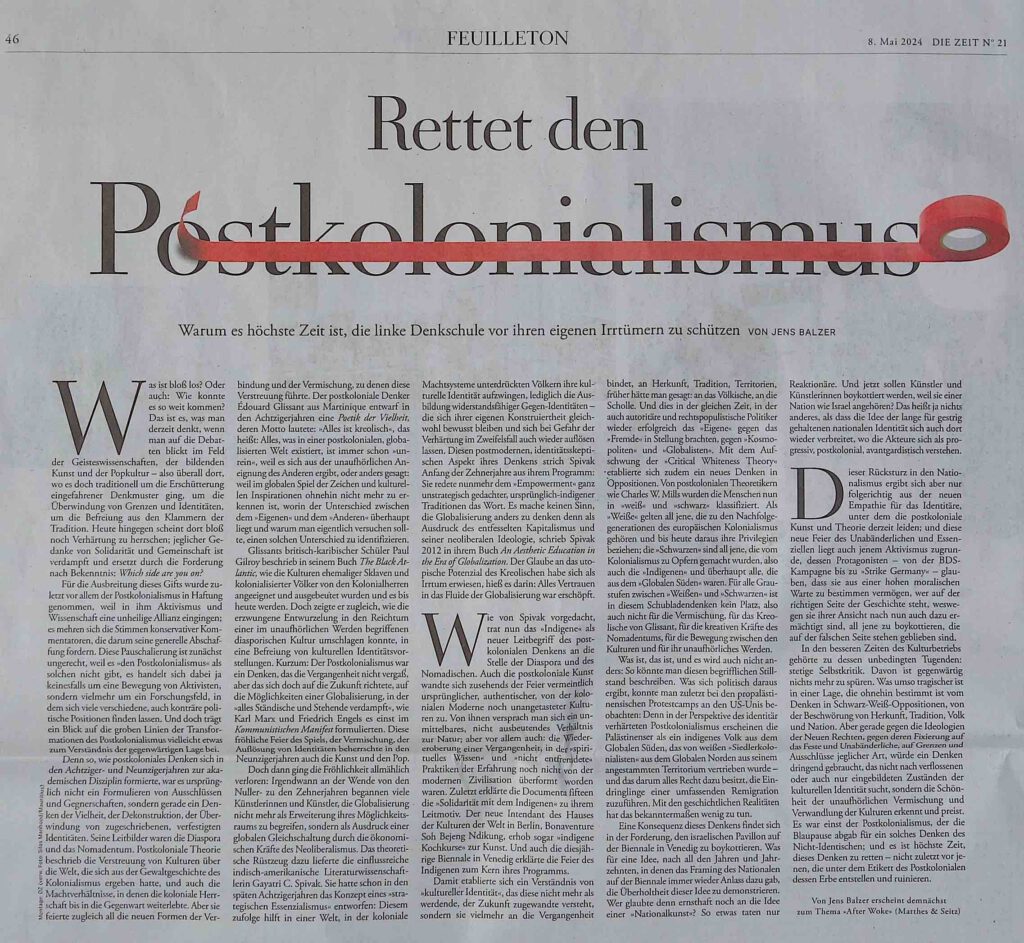

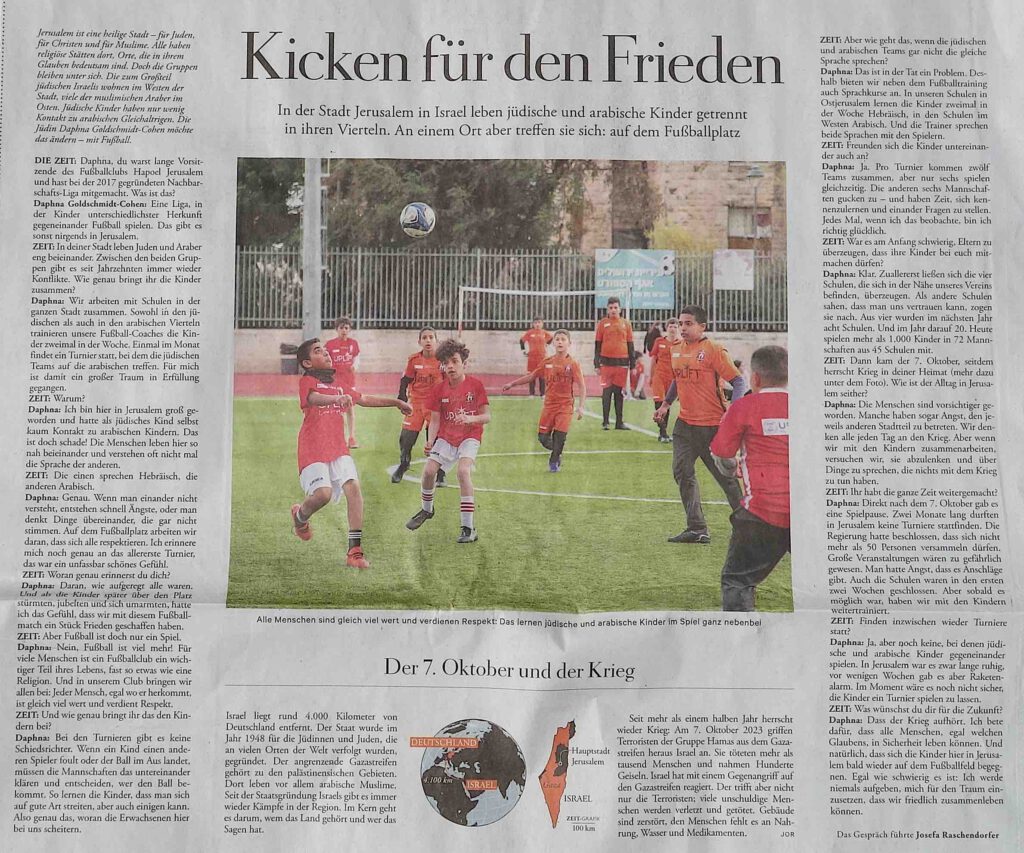

The Unpunished: How Extremist Settlers Took Over Israel
May 16, 2024
After 50 years of failure to stop violence and terrorism against Palestinians by Jewish ultranationalists, lawlessness has become the law.
This story is told in three parts. The first documents the unequal system of justice that grew around Jewish settlements in Gaza and the West Bank. The second shows how extremists targeted not only Palestinians but also Israeli officials trying to make peace. The third explores how this movement gained control of the state itself. Taken together, they tell the story of how a radical ideology moved from the fringes to the heart of Israeli political power.
PART I.
IMPUNITY
By the end of October, it was clear that no one was going to help the villagers of Khirbet Zanuta. A tiny Palestinian community, some 150 people perched on a windswept hill in the West Bank near Hebron, it had long faced threats from the Jewish settlers who had steadily encircled it. But occasional harassment and vandalism, in the days after the Oct. 7 Hamas attack, escalated into beatings and murder threats. The villagers made appeal after appeal to the Israeli police and to the ever-present Israeli military, but their calls for protection went largely unheeded, and the attacks continued with no consequences. So one day the villagers packed what they could, loaded their families into trucks and disappeared.
Who bulldozed the village after that is a matter of dispute. The Israeli Army says it was the settlers; a senior Israeli police officer says it was the army. Either way, soon after the villagers left, little remained of Khirbet Zanuta besides the ruins of a clinic and an elementary school. One wall of the clinic, leaning sideways, bore a sign saying that it had been funded by an agency of the European Union providing “humanitarian support for Palestinians at risk of forcible transfer in the West Bank.” Near the school, someone had planted the flag of Israel as another kind of announcement: This is Jewish land now.
Such violence over the decades in places like Khirbet Zanuta is well documented. But protecting the people who carry out that violence is the dark secret of Israeli justice. The long arc of harassment, assault and murder of Palestinians by Jewish settlers is twinned with a shadow history, one of silence, avoidance and abetment by Israeli officials. For many of those officials, it is Palestinian terrorism that most threatens Israel. But in interviews with more than 100 people — current and former officers of the Israeli military, the National Israeli Police and the Shin Bet domestic security service; high-ranking Israeli political officials, including four former prime ministers; Palestinian leaders and activists; Israeli human rights lawyers; American officials charged with supporting the Israeli-Palestinian partnership — we found a different and perhaps even more destabilizing threat. A long history of crime without punishment, many of those officials now say, threatens not only Palestinians living in the occupied territories but also the State of Israel itself.
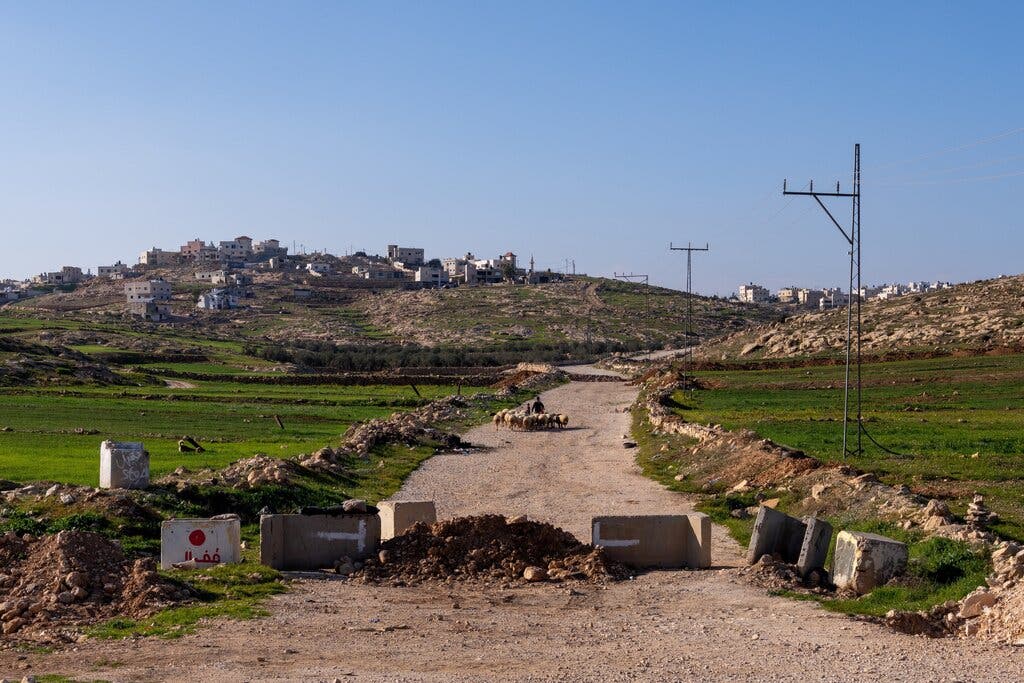
After Oct. 7, some settler reservists began manning unauthorized roadblocks in full I.D.F. uniform, an open but usually unpunished violation of orders.
Peter van Agtmael/Magnum, for The New York Times
more @
https://www.nytimes.com/2024/05/16/magazine/israel-west-bank-settler-violence-impunity.html
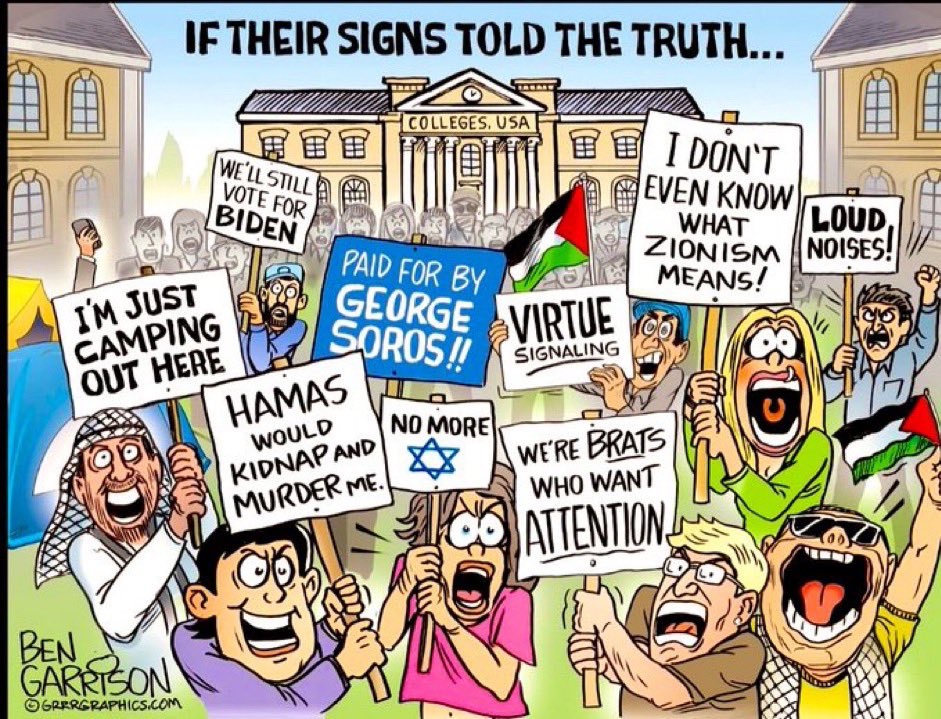
The latest from @Columbia encampment 👇
Students' demands have escalated 🤣
From the satirical show @Eretz_Nehederet pic.twitter.com/VsVHYChI8J
— Dr. Eli David (@DrEliDavid) May 16, 2024
With captions:pic.twitter.com/pInC66r0pE
— Yehuda Teitelbaum (@chalavyishmael) May 16, 2024
皆様薄々気が付いてたと思いますが、ここ数週間全米のキャンパスに立て籠り大暴れしたパレスチナ支援デモに🇨🇳が関連団体を介して資金提供していた事が分かったと🇺🇸シンクタンクからレポートが出されています。
🇺🇸シンクタンクNetwork Contagion Research Instituteの分析により明らかに
NCRIについて🔻
https://networkcontagion.us
中国政府は2023年10月7日のハマステロ後に上海在住の親中派ネビルロイにより設立されたパレスチナ支援運動(SID4P)等を経由させて資金を入れていたと報告されています。
SID4Pはパレスチナ支援デモに乗じて反資本主義、反米、反政府抗議活動を主導し重要インフラや公共施設をターゲットにした直接行動をエスカレートさせている組織。
SID4PのスポンサーはオルタナティブメディアとSNS戦略を駆使するSingham Networkです。
SID4Pを運営している人々も「Singham Network」の出身者。
ネットワークを指揮しているのはネビル・ロイ・シンガムで、この人物は海外で中国共産党のプロパガンダを撒き散らし、プロパガンダ活動に資金提供をしている中心人物としてマークされています。
彼は現在、上海市宣伝部から資金提供を受けて、YouTube 番組を共同制作しているとNYTが報道していました。
パレスチナ支援を名目に学生を暴れさせ、内部抗争を煽る事で米国を弱体化させたい様ですね。
NCRIはこうした🇨🇳ネットワークは米国の安定にとって重大な懸念事項だと警告しています。
https://networkcontagion.us/wp-content/uploads/SID4P-Report_May-2024.pdf…
Translated from Japanese by Google
As you may have already noticed, a think tank 🇺🇸 has released a report stating that 🇨🇳 has been funding, through an affiliated organization, the pro-Palestinian protests that have taken over campuses across the US in recent weeks and wreaked havoc.
🇺🇸 According to an analysis by the think tank Network Contagion Research Institute
About NCRI 🔻
https://networkcontagion.us
It has been reported that the Chinese government has been funneling funds through organizations such as the Movement for Support of Palestine (SID4P), which was founded by pro-China Shanghai-based Neville Roy after the Hamas terrorist attacks on October 7, 2023.
SID4P is an organization that has taken advantage of pro-Palestinian demonstrations to lead anti-capitalist, anti-American, and anti-government protests, escalating direct action targeting critical infrastructure and public facilities.
SID4P is sponsored by Singham Network, which utilizes alternative media and social media strategies.
The people who run SID4P are also from the Singham Network.
The network is led by Neville Roy Singham, who has been identified as a key figure in disseminating Chinese Communist Party propaganda and funding propaganda operations overseas.
He is currently co-producing a YouTube show with funding from the Shanghai Municipal Propaganda Department, the NYT reported.
It seems they want to weaken the US by inciting students to riot and incite internal conflict in the name of supporting Palestine.
The NCRI warns that these 🇨🇳 networks pose a serious concern to the stability of the United States.
「潤沢な資金で行われた」反イスラエルキャンパス抗議活動の背後には中共関連のネットワークがあった!
SID4P構成グループは、中共団体が米国内の親パレスチナ活動を効果的に利用し、広範な反米、反民主主義、反資本主義政策を推進するパイプ役だった
Chinese Communist Party-linked network behind ‘well-funded’ anti-Israel campus protests, group says
The report described the umbrella organization orchestrating protests as ‘anti-capitalist, anti-police, and anti-government’
A new report from the Network Contagion Research Institute (NCRI) shows a political activist group linked to the Chinese Communist Party (CCP) has played a crucial role in funding and organizing anti-Israel protests that have disrupted college campuses across the U.S. in recent weeks.
The report, published last week, highlights the activities of “seemingly grassroots activist movements,” like Shut It Down for Palestine (SID4P), which was formed after the Oct. 7 attack on Israel.
NCRI described SID4P as an “anti-capitalist, anti-police, and anti-government protest movement [that] functions as a hybrid online/real-world network for mobilizing frequent demonstrations as well as gradually escalating direct-action campaigns targeting critical infrastructure and public spaces.”
Operating under the SID4P umbrella are members of the “Singham Network,” a global web of nonprofits, fiscal sponsors and alternative news sources tied to Neville Roy Singham, an American-born multimillionaire tech mogul based in Shanghai who is married to Jodie Evans, co-founder of the left-wing anti-war group Code Pink.
The NCRI described Singham as a “conduit” for CCP geopolitical influence.
The alternative media outlets described above have played a “central role in online mobilization and cross-platform social amplification for SID4P,” the report said.
The report found that SID4P has ties to “extremist groups,” including one pro-Palestinian group within the U.S. that advances “anti-American and anti-Jewish agendas.”
Organizations connected to CCP foreign influence efforts are partially driving an increase in direct action, targeting infrastructure and public spaces, the report found.
Though ostensibly focused on Israel, the broader protests are part of a “well-funded initiative driving a revolutionary, anti-government, and anti-capitalist agenda, with leading organizations serving as versatile tools for foreign entities hostile to the U.S.,” the report said.
“I warned the Biden Administration of the ties between the Chinese Communist Party and certain far-left organizations operating in the U.S., but they didn’t listen,” Rubio said. “So, I’m not surprised by the reported ties between a pro-Hamas organization and the Chinese Communist Party given their shared anti-American, anti-Western civilization, and pro-Iran stance.”
The seven core organizations, referred to as “Convenors,” that make up SID4P are Al-Awda NY, National Students for Justice In Palestine (NSJP), Palestinian Youth Movemnet (PYM), Palestinian American Community Center NJ (PACC), the People’s Forum, ANSWER Coalition and Iternational People’s Assembly (IPA).
According to NCRI, the last three groups serve as the “conduit through which CCP-affiliated entities have effectively co-opted pro-Palestinian activism in the U.S. to advance a broader anti-American, anti-democratic, and anti-capitalist agenda.” These Convenors, according to NCRI, have close ideological and financial ties to Singham.
The People’s Forum has played a role in organizing several anti-Israel protests since Hamas’ attack on Oct. 7, when the terror group’s members killed at least 1,200 Israelis and took over 200 hostages from Southern Israel into Gaza.
Ominously, NCRI predicts that these organizations will persist in inciting unrest throughout the summer of 2024 and into the November elections.
Liora Rez, founder and executive director of StopAntisemitism, likened the anti-Israel demonstrations to a “Trojan Horse to surreptitiously advance a destructive, authoritarian ideology that seeks to sow chaos in the U.S. and Europe under the guise of ‘social justice’ and ‘anti-colonialism.’”
“Remember, for radical Islamists, Israel is only the ‘little Satan’ and the United States is the ‘great Satan,’” Rez said, arguing the protests “are part of a pre-planned, well-funded, non-organic campaign to undermine America and Western Civilization.”
Rez, whose family fled the Soviet Union, said the tactics “being used by this Chinese-linked authoritarian network remind me of the Marxist strategies my family experienced in the former Soviet Union.”
“It’s no surprise that both employ hatred of Jews — the ultimate ‘other’ — to promote their ruinous doctrine,” Rez said.
“Beijing has taken notice of Russia’s information warfare accomplishments. China has adapted its playbook for polarizing America through exploiting social divisions,” Stradner said. “Beijing does not miss a chance to exploit American division over Hamas and promote far-left narratives. Beijing has already deployed a similar strategy, amplifying and promoting America’s so-called ‘systemic racism,’ and they will do it again.”
https://twitter.com/JunkoYasmin/status/1791578934401724670/video/2

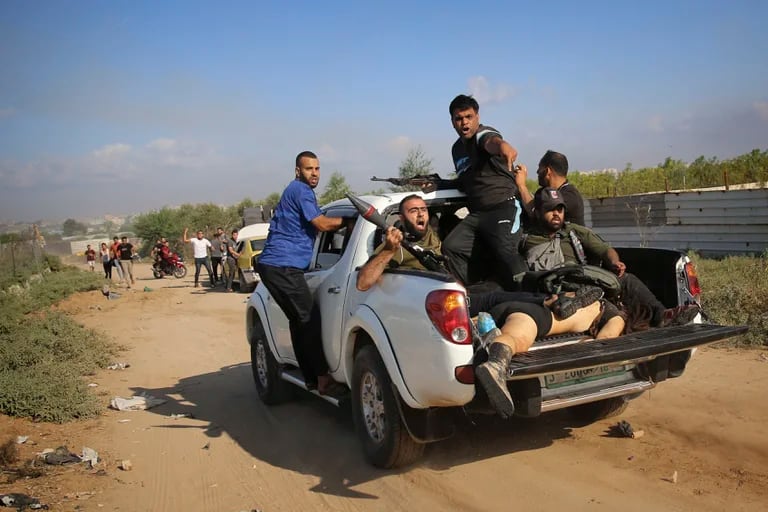
Israel recuperó los cuerpos de tres víctimas del ataque terrorista de Hamas a la fiesta electrónica: uno de ellos es el de Shani Louk
La joven había sido secuestrada el 7 de octubre de 2023 en el festival Nova y su imagen en una camioneta bajo una turba de milicianos fue una de las más difundidas en los días posteriores. Los otros dos muertos son Amit Buskila e Itzhak Gelerenter
17 May, 2024 12:35 p.m. EST
三島由紀夫賞を大田ステファニー歓人さんが受賞
https://live.nicovideo.jp/watch/lv345180010…
ガザへの連帯を示し、SNSや路上で声を上げ続けている大田ステファニー歓人さんは、作家同士で連帯するすべきか問われ「やりたいからやっている。心細いので味方してくれる先輩がいたら頼もしい」とコメント。
Translated from Japanese by Google
Stephanie Kanjin Ota receives Yukio Mishima Prize
https://live.nicovideo.jp/watch/lv345180010…
Stephanie Ota Kanjin, who continues to raise her voice on social media and in the streets in solidarity with Gaza, was asked if writers should show solidarity with each other. She commented, “I’m doing it because I want to. I feel lonely, so it would be great to have a senior who will be on my side.”
三島由紀夫賞を大田ステファニー歓人さんが受賞https://t.co/407BZi8dKz
ガザへの連帯を示し、SNSや路上で声を上げ続けている大田ステファニー歓人さんは、作家同士で連帯するすべきか問われ「やりたいからやっている。心細いので味方してくれる先輩がいたら頼もしい」とコメント。 pic.twitter.com/WXkgvsqLZe
— ニコニコニュース (@nico_nico_news) May 16, 2024
2024年度の三島由紀夫賞を受賞した『みどりいせき』。大麻やLSDを日常的に使って遊んでいる高校生たちを主人公にした物語が三島賞を受賞したのヤバすぎる。そして何より著者、大田ステファニー歓人氏の受賞会見がとっても最高だったので是非見て欲しい。
↓大田ステファニー歓人氏の会見部分のみ抜粋
Translated from Japanese by
“Midori Iseki” won the 2024 Mishima Yukio Prize. It’s crazy that a story about high school students who use marijuana and LSD on a daily basis won the Mishima Prize. And above all, the author, Stephanie Ota, gave a fantastic press conference, so I highly recommend you watch it.
↓ Excerpt from the interview with Stephanie Ota
2024年度の三島由紀夫賞を受賞した『みどりいせき』。大麻やLSDを日常的に使って遊んでいる高校生たちを主人公にした物語が三島賞を受賞したのヤバすぎる。そして何より著者、大田ステファニー歓人氏の受賞会見がとっても最高だったので是非見て欲しい。
↓大田ステファニー歓人氏の会見部分のみ抜粋 pic.twitter.com/SXOSN6kvDk
— 寝寝 (@nene_CyberHippi) May 18, 2024
Good morning #FreePalesine
En Israel, musulmanes, católicos y judíos gozan de todas las libertades.
Espléndido día en Mamilla, en el corazón de Jerusalem disfrutando la “libertad de culto” y pronto podrán ver el desfile del Orgullo LGTB en las calles de Tel Aviv #Pride #LGTB… pic.twitter.com/ov8BxcRttd— Agencia AJN (@AgenciaAJN) May 18, 2024
El párroco argentino que logró regresar a Gaza en plena guerra: “Hay barrios enteros que desaparecieron”
El padre Gabriel Romanelli, que cuando comenzó el conflicto estaba afuera de la Franja, logró la autorización para volver; su iglesia aloja a 500 personas
18 de mayo de 2024

gentileza Gabriel Romanelli
ROMA.- Se oyen explosiones, el ruido de los drones es incesante, la guerra sigue sembrando destrucción y muerte. Pero el padre Gabriel Romanelli está feliz. Después de siete meses y diez días de frustración por no poder estar con su gente, el jueves este sacerdote argentino del Instituto del Verbo Encarnado (IVE) logró, finalmente, el único y gran objetivo que tuvo desde el 7 de octubre: regresar a la iglesia de la Sagrada Familia de Ciudad de Gaza, de la que es párroco desde 2019.
El asalto de Hamas a Israel del 7 de octubre, en efecto, sorprendió a Romanelli, de 54 años, fuera de Gaza. Después de haber viajado a Roma para el consistorio en el que Francisco designó cardenal a Pierbattista Pizzaballa, patriarca latino de Jerusalén, había vuelto a Belén, donde estaba esperando un remedio para una monja que vive con él en Gaza. Esa demora le valió quedarse afuera de su parroquia en los primeros siete meses de la peor guerra jamás vista en la Franja de Gaza.
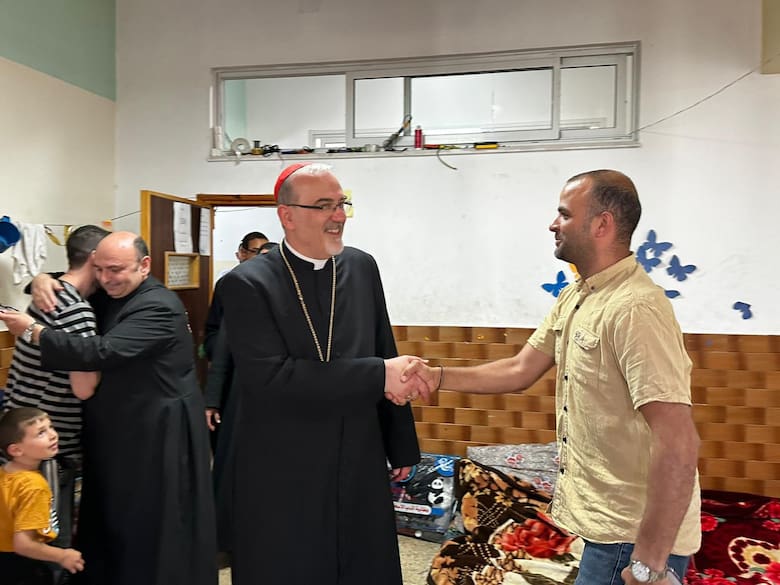
Después de meses de gestiones, consiguió la autorización de las Fuerzas de Defensa de Israel para volver a entrar, junto a una delegación liderada por el patriarca Pizzaballa, máxima autoridad católica de la zona, el jueves pasado, y caballeros de la Orden de Malta que llevaron ayuda humanitaria.
“El patriarca hizo una visita pastoral que esperaba desde hace tiempo y yo me quedé y traje refuerzos: ahora somos tres argentinos en Gaza”, reveló a LA NACION el padre Romanelli. También obtuvieron permiso para entrar a Gaza, en efecto, el padre Carlos Ferrero, superior del IVE en Medio Oriente, de 67 años, y la hermana María Maravillas, de 34, ambos de Buenos Aires. En una videollamada, Romanelli y los otros dos argentinos sorprendieron por sus sonrisas y entusiasmo, pese a haber ingresado a un infierno.

Aunque no pudo dar detalles del operativo para ingresar a la Franja de Gaza, el padre Romanelli sí pudo describir lo que se encontró al entrar al enclave, donde la represalia de Israel, que busca eliminar al grupo terrorista Hamas -responsable del bárbaro asalto del 7 de octubre-, aún no ha terminado y ha causado pavorosa destrucción y al menos 35.000 muertos, según cifras palestinas.
“La ciudad está hecha trizas… Donde mires, es muy poco lo que quedó en pie. No hay rincón de la ciudad que esté sano, hay barrios enteros que están desaparecidos y la gran parte de las viviendas están destruidas… Así y todo, se ve gente que sacó los escombros y que está viviendo entre las casas destruidas. Se calcula que al menos medio millón de personas están en la ciudad de Gaza”, contó este sacerdote porteño, que vive desde hace más de 25 años en Medio Oriente y habla y escribe perfectamente en árabe.





13 young women remain hostage in Gaza, being raped, tortured and subject to sexual violence every day.
🎗️These are their names.🎗️
A thread🧵
#BringThemHome
#StandWithIsrael
2:16 AM · May 19, 2024
1.6M Views
13 young women remain hostage in Gaza, being raped, tortured and subject to sexual violence every day.
🎗️These are their names.🎗️
A thread🧵#BringThemHome #StandWithIsrael
— The Persian Jewess (@persianjewess) May 19, 2024
IDFとシンベットはラファから拉致被害者のシャニ・ロック(22)、アミット・ブスキラ(28)、イツハック・ゲランテル(58)の遺体を昨夜ガザ地区から回収した。彼らはイスラエルに地に帰国した。 – 彼らが祝福されますように 💔
https://twitter.com/JunkoYasmin/status/1791510938299793777
After a season of protest, PEN America’s literary gala goes forward
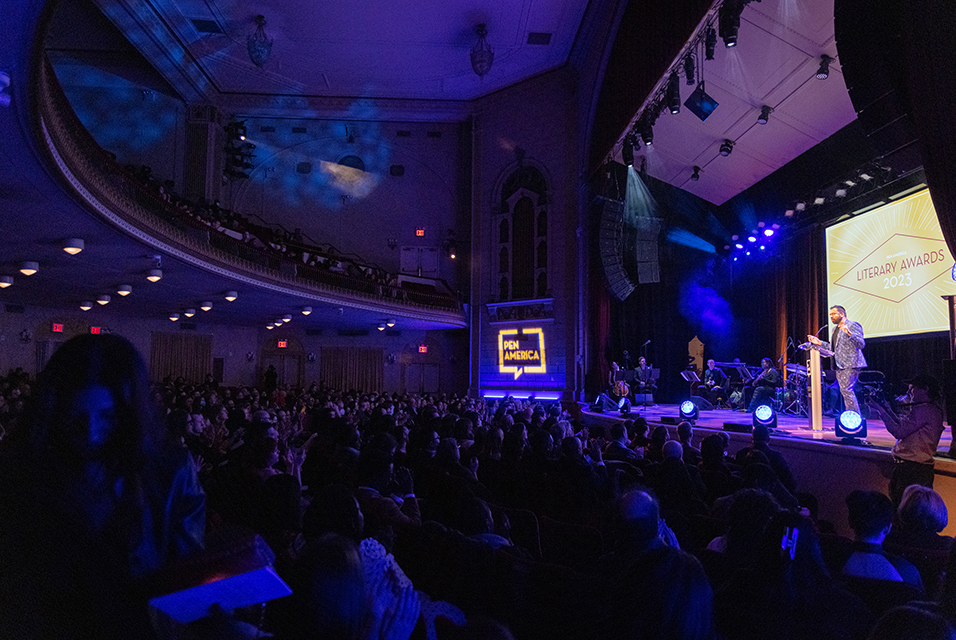
Kal Penn hosts the 2023 PEN America Literary Awards at Town Hall in New York, March 2, 2023.
PEN America’s annual gala, held under the giant blue whale at the American Museum of Natural History in New York, typically draws writers and deep-pocketed supporters to toast the group’s mission of defending free expression at home and abroad.
But as this year’s event approached, many in the literary community were wondering if the show would go on at all.
For months, PEN America has been roiled by internal and external criticism of its response to the war in the Gaza Strip. Last month, the group canceled its literary awards ceremony and then its annual World Voices Festival, after dozens of writers withdrew to protest what they said was a failure to adequately speak out about the dire threats to Palestinian writers and culture posed by Israel’s military campaign.
The gala, which was expected to raise roughly $2 million, went on as planned, though not exactly as usual. Outside, protesters from the group Writers Against the War on Gaza, wearing evening dress, passed out mock programs welcoming guests with assurances that “our efforts to silence dissent and normalize genocide would not be possible without your steadfast support, engagement and, most importantly, your dollars.”
Inside, more than 600 guests, including writers Malcolm Gladwell, Gary Shteyngart, Jay McInerney and Claire Messud, circulated during pre-dinner cocktails. One guest wore a T-shirt that said “Not in Our Name, Jews for a Ceasefire Now.” Others seemed bewildered by the intensity of the anger at PEN America itself.
Writer Darryl Pinckney said he had never thought of PEN America as being pro-Israel, pro-Palestinian or anything except pro-writer, as exemplified by displays highlighting the stories of imprisoned writers around the world.
“PEN has to be a wide tent and have different points of view,” he said. “That’s the whole point of intellectual life.”
Since the Oct. 7 Hamas attack on Israel and Israel’s military retaliation, PEN America, which describes itself as standing “at the intersection of literature and human rights,” has found itself in an unexpected position.
The group has issued multiple statements urging universities and other cultural organizations to respect the right to protest, preserve open dialogue and avoid canceling speakers and events. But at the same time, PEN America has been engulfed by debate over whether the group has been true to its mission, with some critics charging PEN America with a timid response when it comes to defending imperiled writers in Gaza, compared with the group’s full-throated response on Ukraine.
There have been open letters, social media salvos and a war of words within the group’s board, as disagreements over how to respond to criticism have spilled into public. There have also been calls for the group’s CEO, Suzanne Nossel, and its president, novelist Jennifer Finney Boylan, to resign.
In her speech, Boylan, who became president last fall, started out talking about “something light and humorous”: Salman Rushdie’s new memoir, “Knife,” his account of being stabbed onstage at a literary event in 2022 and the long recovery afterward.
She also acknowledged the criticism directed at PEN America, and wondered if “a comic transgender novelist” like herself was the best leader for today’s fraught moment.
“All I have, in the end, are the tools of love and forgiveness,” she said. “But is that enough to heal the world?”
The evening offered some celebrity glitz up front, with a warm-up monologue by Seth Meyers, an award given to Paul Simon (who performed a solo version of “American Tune” on acoustic guitar) and an appearance by Tyler Perry. He presented an award to Shaye Moss and Ruby Freeman, two Georgia election workers who received death threats after Donald Trump’s 2020 campaign had falsely accused them of committing election fraud.
But the heart of the evening highlighted PEN America’s far-flung mission, from defending persecuted writers in authoritarian countries to fighting book bans, restrictions on teaching, and other threats closer to home.
There was an award for Almar Latour, the CEO of Dow Jones and the publisher of The Wall Street Journal, in recognition of the paper’s advocacy for Evan Gershkovich, the Journal reporter who has been detained in Russia for 414 days.
The Freedom to Write Award, given annually to an imprisoned writer, was presented in absentia to Pham Doan Trang, a publisher, journalist and pro-democracy activist jailed in Vietnam.
Nossel, who has led PEN America since 2013, took the stage to loud applause. She began by recalling last year’s gala, which honored jailed Iranian writer Narges Mohammadi, who went on to win the Nobel Prize. (Although she remains imprisoned, 46 of the 53 writers honored by PEN America since 1987 have been released, according to the group.)
“Tonight, the shared purpose that bound us so tightly behind Narges has frayed,” Nossel said. “Our assembly is disassembling. People of good intention and staunch conviction are wracked by a wrenching conflict. We are haunted by destruction, death and suffering that has caused some to question PEN America’s words, deeds and purpose.”
She reiterated the organization’s mission to defend free speech for all, which has meant defending “drag shows, Moms for Liberty, right-wing provocateurs and a revolutionary Communist Party bookstore.”
And then Nossel turned to the topic on many minds. She nodded at the charge that PEN America has been slow to help writers in Gaza.
“Our work to call out assaults on Palestinian writers has been extensive and evolving,” she said. “When writers are in danger, we always press ourselves to do more.”
And she cautioned against the appeal of seeing just one side of any story. “My personal touchstone, very simply, is that when it comes to Israel and Palestine, you cannot care about one people without caring about the other,” she said.
In one of the last speeches, novelist Dinaw Mengestu, a board member and PEN America vice president, introduced the award for Pham, the Vietnamese writer. Last week, after another board member, George Packer, argued in The Atlantic that PEN America was the victim of “authoritarian” bullies bent on demanding total loyalty to their cause, Mengestu blasted back on social media, saying that critics needed to be listened to, not belittled.
In his speech, Mengestu called out to Pham and others far beyond the conviviality in the room.
“We know that writers work all too often alone, in silence and solitude, without the power or protection of the very institutions they hope to change,” he said.
This article originally appeared in The New York Times.


「私が死ななければならないのなら、あなたは必ず生きなくてはならない」(ワコウ・ワークス・オブ・アート)開幕レポート。パレスチナのためにやるべきことがある
東京・六本木のワコウ・ワークス・オブ・アートで、オランダ出身の作家ヘンク・フィシュのキュレーションによる、パレスチナ出身の詩人や画家の作品にフォーカスした展覧会「If I must die, you must live 私が死ななければならないのなら、あなたは必ず生きなくてはならない」が開幕した。会期は6月29日まで。
https://bijutsutecho.com/magazine/news/report/28973
Revelaron un nuevo video de cómo los terroristas de Hamas secuestraron a cinco jóvenes israelíes el 7 de octubre
Liri Albag, Karina Ariev, Agam Berger, Daniela Gilboa y Naama Levy son soldados rehenes de las milicias en la Franja de Gaza. En las imágenes se las ve atadas y ensangrentadas mientras hombres armados las interrogan y acosan: “Eres tan hermosa…” . IMÁGENES SENSIBLES
22 May, 2024 12:25 p.m. EST
https://www.infobae.com/america/mundo/2024/05/22/revelaron-un-nuevo-video-de-como-los-terroristas-de-hamas-secuestraron-a-cinco-jovenes-israelies-el-7-de-octubre/




Imagine watching this and telling yourself “Nice job! Well done! We should reward these barbarians with a state!”
This is what Ireland 🇮🇪, Norway 🇳🇴, and Spain 🇪🇸 did today.
— Dr. Eli David (@DrEliDavid) May 22, 2024
2024/5/24
NYC public schools will send 8th graders to visit Holocaust Museum

The Museum of Jewish Heritage in New York, Aug. 5, 2018. As tension continues to simmer over the Israel-Hamas war, New York City officials have embraced a privately funded initiative to send all eighth graders in public and charter schools to visit the Museum of Jewish Heritage. (Tony Cenicola/The New York Times)
NEW YORK, NY.- As tension continues to simmer over the Israel-Hamas war, New York City officials have embraced a privately funded initiative to send all eighth graders in public and charter schools to visit the Museum of Jewish Heritage.
The program, part of a $2.5 million public-private partnership to address antisemitism, will be seeded with $1 million from a foundation run by Jon Gray, president of investment firm Blackstone.
The citywide field trip plan, announced Thursday, will center on the museum’s efforts to educate younger visitors about the Holocaust. The initiative comes as schools grapple with questions about how to approach the Israel-Hamas war and what to teach about the history of the conflict. It will be optional for schools and will start this fall.
In places such as California, there have been pushes for teaching pro-Palestinian lessons in schools. Leaders in New York City’s school system, which is particularly diverse, with tens of thousands of Jewish, Muslim and Arab students, are moving to offer new curriculum materials about antisemitism and Islamophobia.
New York is one of nearly two dozen states that are required to teach students about the Holocaust, and lawmakers included $500,000 in the state budget this year to review and update Holocaust curricula in schools.
The field trip program was created by Julie Menin, a Jewish City Council member from Manhattan whose mother and grandmother survived the Holocaust in Hungary. She said she was worried about a rise in antisemitic attacks in the city.
“We need a proactive approach to combat this hatred at its roots,” she said.
Menin said that eighth grade was an appropriate time for students to learn about the atrocities of the Holocaust, in which 6 million Jews were killed. She said visiting the exhibition would make a more lasting impression than reading about it in a textbook.
“We know there are Holocaust deniers,” she said. “When you see this exhibition and you personally witness the stories of survivors, it truly makes a difference.”
The program will be offered to more than 85,000 students in public and charter schools over the next three years. The museum, in lower Manhattan, opened in 1997 and describes itself as a living memorial to the Holocaust.
Shahana Hanif, the first Muslim woman elected to the City Council and who represents a district in Brooklyn, said the program was a good investment and also underscored the need for programming built around Palestinian history.
“There is no Palestinian Cultural Center in New York City, nor an Islamic Heritage Museum,” she said. “These would be great investments for an inclusive education and learning opportunity.”
Edward Ahmed Mitchell, national deputy director of the Council on American-Islamic Relations in New York, also supported the use of field trips to “help students of today recognize and oppose modern genocides, whether in China, Sudan, Myanmar, Gaza or anywhere else.”
Gray, who is Jewish, has worked with Menin on other programs to offer free swim lessons and college savings accounts to public school students. He and his wife, Mindy, said in a statement that an “alarming rise in antisemitism today must be addressed through better education about our past — both its darkest moments and the incredible displays of courage in response.”
The museum will hire additional staff to run the program and work with schools to schedule tours and to provide free transportation.
The city’s Education Department is also working with the museum to create a new Holocaust teaching guide for educators that will be released in the fall. The schools chancellor, David C. Banks, has said that by June 2025, the system will offer separate curriculum series on the culture and contributions of Jewish and Muslim Americans to society — as part of a social studies initiative that has already offered materials on Asian Americans and LGBTQ+ stories.
Banks, who attended the announcement along with City Council members and Randi Weingarten, president of the American Federation of Teachers, praised the field trip program.
The Museum of Jewish Heritage is currently offering a new exhibit, “Courage to Act: Rescue in Denmark,” which is designed for 9- to 12-year-olds and explores how ordinary Danes saved 7,200 Jews by smuggling them into Sweden by boat.
This article originally appeared in The New York Times.
美術評論家連盟
INTERNATIONAL ASSOCIATION OF ART CRITICS, JAPAN
〒102-8322 東京都千代田区北の丸公園 3-1
東京国立近代美術館内
2024 年 5月25日
ガザ戦争に対する意見表明
美術評論家連盟
芸術表現に関する言説生産に従事するものとして、2023 年 10月7日以降、主にガザ地区で起こっている 戦闘行為を深く憂慮し、戦闘、殺戮、またそれに対する加担、支援に対し、反対の意を表明するとともに、 速やかな当該行為の停止を求めます。 今回の継続的、組織的な蛮行に対して、同時代のすべての社会的実践は無関係ではなく、芸術表現に関す る言説生産もその例外ではありません。 そのことを深く自問、自省するとともに、事態の終息に向けたあらゆるかたちの実践と、解決に向けた努 力を尊重します。 なお、この意志表明は、特定の⺠族に対する批判、差別を意図するものではないことを付記しておきます。
https://www.aicajapan.com/wp/wp-content/uploads/statement_2024_05.pdf
How the Gaza Ministry of Health Fakes Casualty Numbers
The evidence is in their own poorly fabricated figures
BY, ABRAHAM WYNER, MARCH 07, 2024
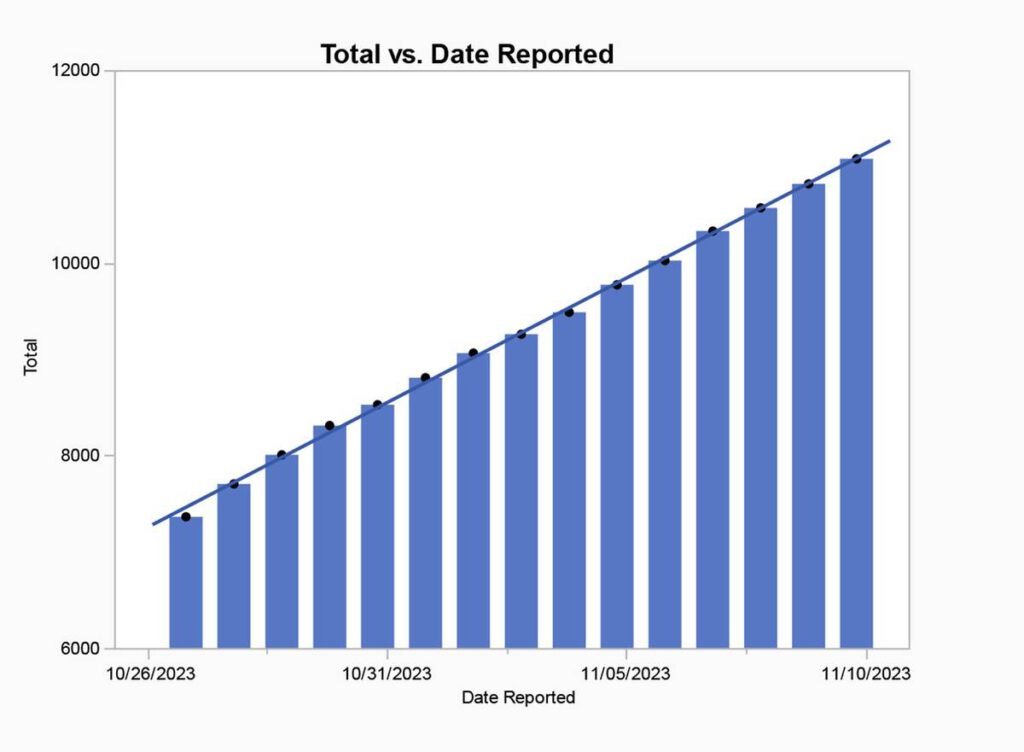
https://www.tabletmag.com/sections/news/articles/how-gaza-health-ministry-fakes-casualty-numbers
El grupo terrorista Hezbollah reivindicó 14 ataques contra posiciones militares en el norte de Israel
Los atentados fueron como respuesta al ataque del Ejército israelí contra la localidad libanesa de Naqoura y otras aldeas en el sur del país mediterráneo
26 May, 2024
https://www.infobae.com/america/mundo/2024/05/26/el-grupo-terrorista-hezbollah-reivindico-14-ataques-contra-posiciones-militares-en-el-norte-de-israel/
Los terroristas de Hamas lanzaron un ataque con cohetes contra Tel Aviv por primera vez en cuatro meses
El Ejército de Israel indicó que fueron disparados al menos ocho cohetes desde Rafah, en el sur de la Franja de Gaza, provocando un herido leve. Algunos de los proyectiles fueron interceptados por la Cúpula de Hierro
26 May, 2024

https://www.infobae.com/america/mundo/2024/05/26/los-terroristas-de-hamas-lanzaron-un-ataque-con-cohetes-sobre-tel-aviv-por-primera-vez-en-cuatro-meses/
LAGE IN RAFAH :
Helfer melden Dutzende Opfer bei Luftangriff auf Flüchtlingslager
27.05.2024
In einem Zeltlager palästinensischer Flüchtlinge in der Stadt Rafah ist nach einem israelischen Angriff Feuer ausgebrochen. Ärzten zufolge sterben mindestens 35 Menschen. Israel spricht von einem Einsatz gegen ranghohe Hamas-Mitglieder.
https://www.faz.net/aktuell/politik/ausland/gazakrieg-dutzende-opfer-in-rafah-bei-israels-luftangriff-auf-fluechtlingslager-19745944.html
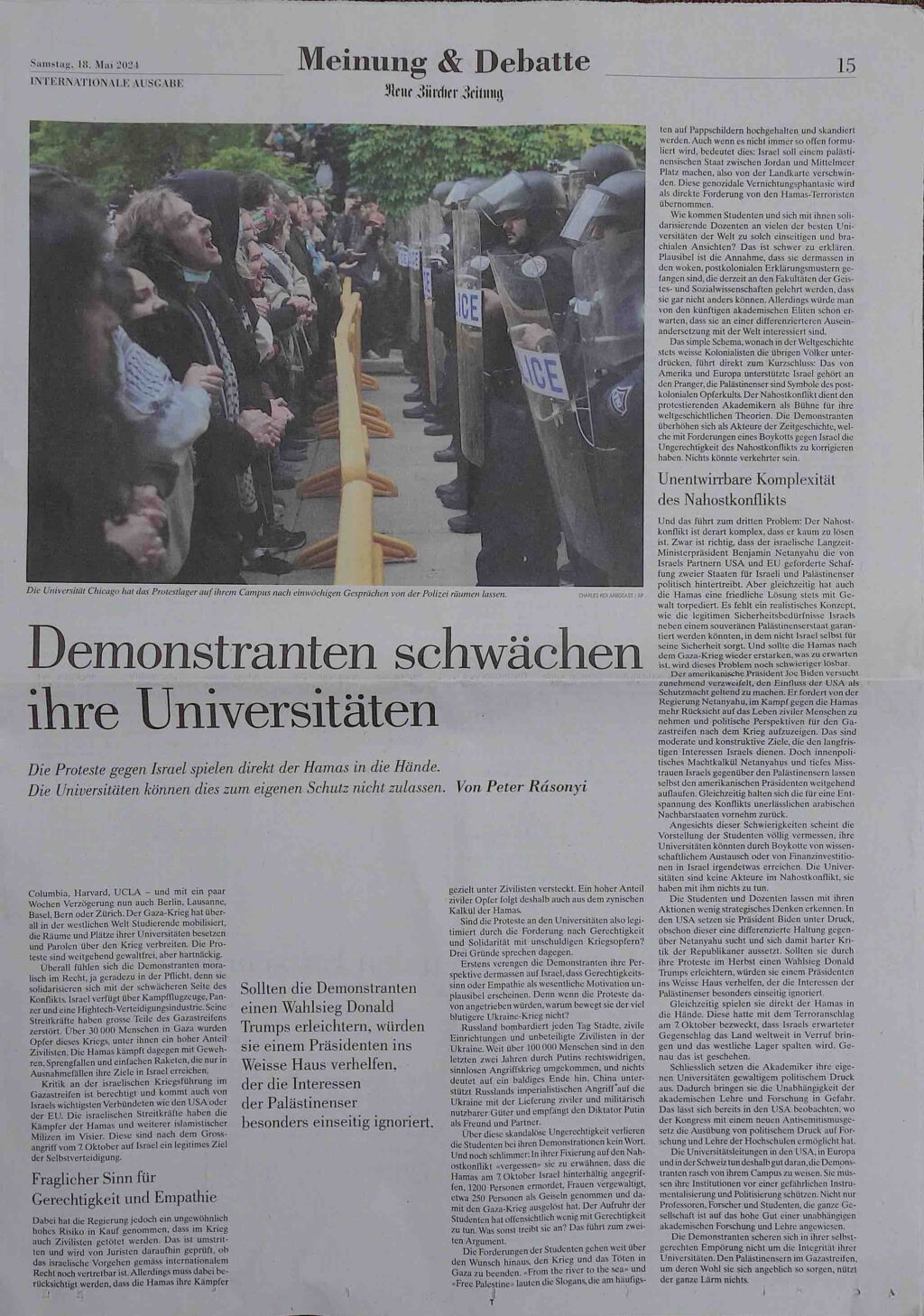
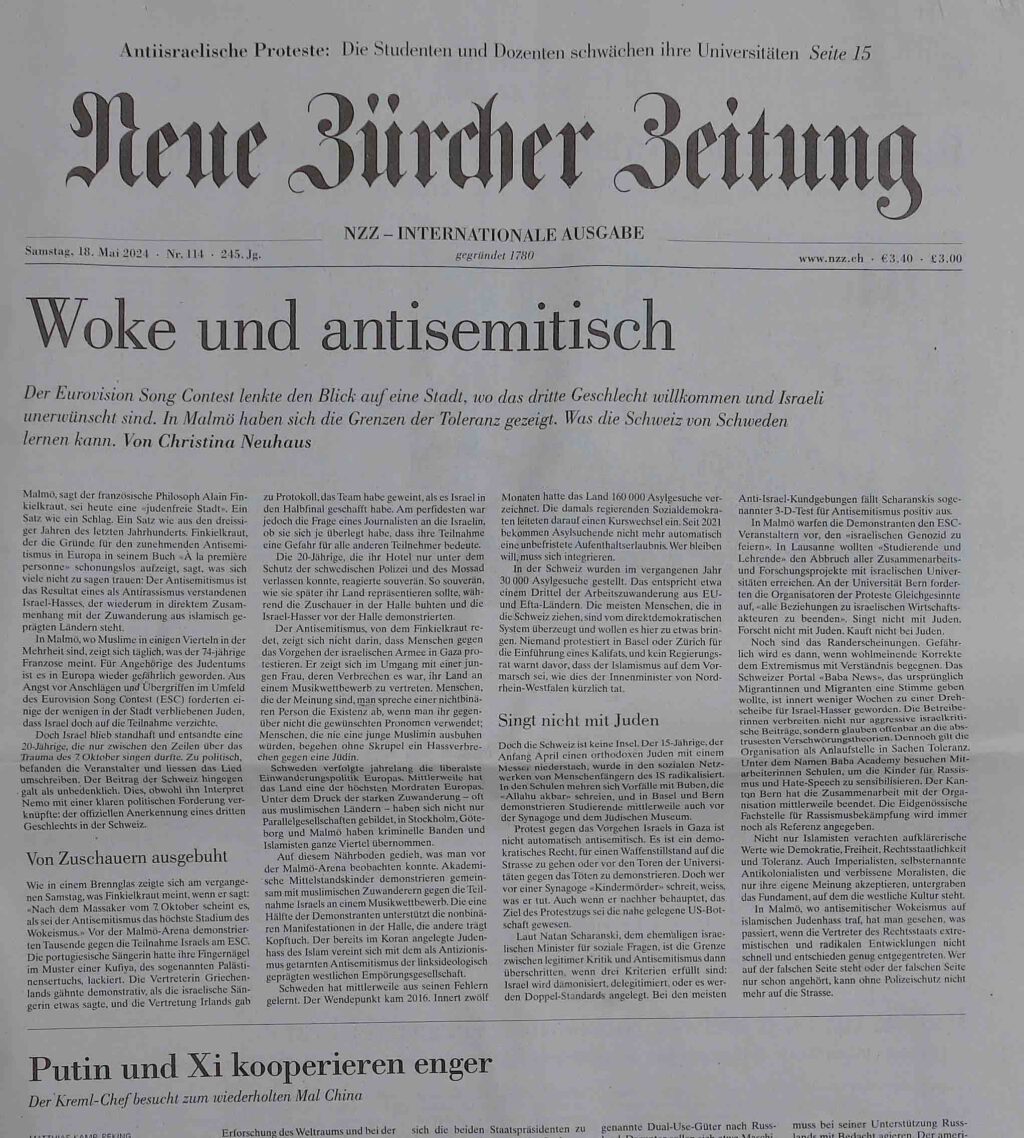
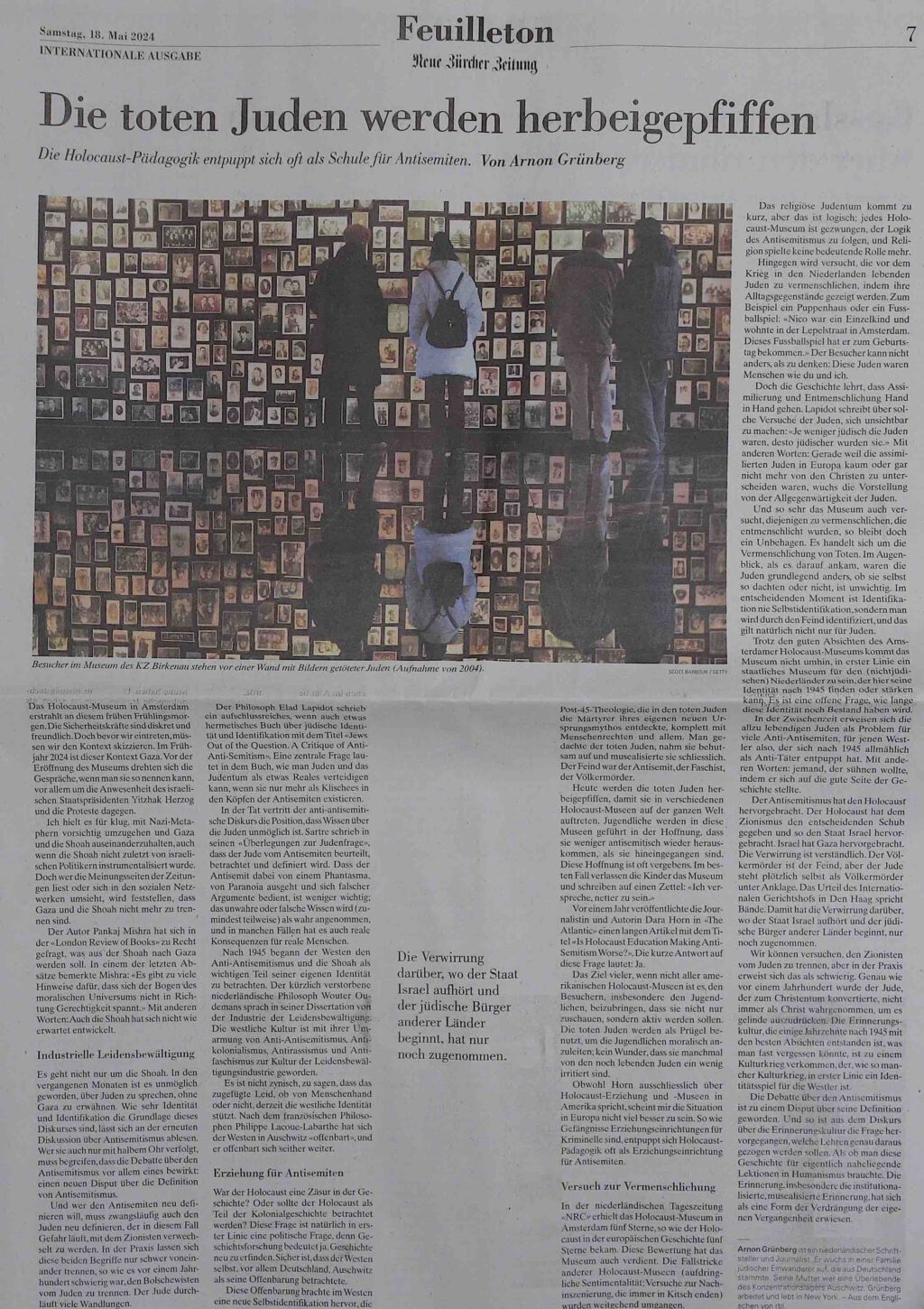

男女とも国民徴兵制度のあるイスラエルらしい光景。女性と男性はそれぞれの部隊に勤務中。偶然ラファで出会って、、、(提供:ロイ・シャロン)
🇵🇸人から見るとIDF兵士は敵であり否定のイメージだが、🇮🇱人から見ると国防を担っているけど、家族であり、近所の人であり同じ人間というイメージ。
https://twitter.com/JunkoYasmin/status/1795171917583782089
28 May, 2024 Israel acusó a Pedro Sánchez de incitar al genocidio judío por reconocer al Estado palestino
El ministro de Exteriores, Israel Katz, condenó la medida que formaliza este martes el gobierno español
https://www.infobae.com/america/mundo/2024/05/28/israel-acuso-a-pedro-sanchez-de-ser-complice-de-incitar-al-genocidio-judio-por-reconocer-al-estado-palestino/
From Naomi Wolf, Ph. D:
“Okay, so I was challenged below: “Read the Bible! God gave the land of Israel to the Jewish people.”
So….I may get crucified for this but I have started to say it — most recently (terrified, trembling) to warm welcome in a synagogue in LA:
Actually if you read Genesis Exodus and Deuteronomy in Hebrew — as I do — you see that God did not “give” Israel to the Jews/Israelites. We as Jews are raised with the creed that “God gave us the land of Israel” in Genesis — and that ethnically ‘we are the chosen people.” But actually — and I could not believe my eyes when I saw this, I checked my reading with major scholars and they confirmed it — actually God’s “covenant” in Genesis, Exodus and Deuteronomy with the Jewish people is NOT ABOUT AN ETHNICITY AND NOT ABOUT A CONTRACT. IT IS ABOUT A WAY OF BEHAVING.
Again and again in the “covenant” language He never says: “I will give you, ethnic Israelites, the land of Israel.” Rather He says something far more radical – far more subversive — far more Godlike in my view. He says: IF you visit those imprisoned…act mercifully to the widow and the orphan…welcome the stranger in your midst…tend the sick…do justice and love mercy ….and perform various other tasks…THEN YOU WILL BE MY PEOPLE AND THIS LAND WILL BE YOUR LAND.
So “my people” is not ethnic — it is transactional. We are God’s people not by birth but by a way of behaving, that is ethical, kind and just. And we STOP being “God’s people” when we are not ethical, kind and just. And ANYONE who is ethical, kind and just is, according to God in Genesis, “God’s people.” And the “contract” to “give” us Israel is conditional — we can live in God’s land IF we are “God’s people” in this way — just, merciful, compassionate. AND — it never ever says, it is ONLY your land. Even when passages spell out geographical “boundaries” as if God does such a thing, it never says this is exclusively your land. It never says I will give this land JUST to you.
Remember these were homeless nomads who had left slavery in Egypt and were wandering around in the desert; at most these passages say, settle here, but they do not say, settle here exclusively. Indeed again and again it talks about welcoming “zarim” — translated as “strangers” but can also be translated as “people/tribes who are not you” — in your midst. Blew my mind, hope it blows yours.”
— Dr. Naomi Wolf
She is not a linguist. She enjoys rabble academic rousing with little or no credence. I have seen Hebrew translated like this before but the overwhelming number of Hebrew scholars-including non-Jews- dismiss this translation.
Dennis Vandekerckhove you will admit that the entire premise of claiming that a “god” “gave” some piece of land to some specific group of humans is an utter and total absurdity — on the face of it, right?
And also, that anyone can legitimately “verify” or “make the legal claim” or “validate” the previous “position” purely based upon a reading of texts found in a book (printed today) translated from texts written 2000 years ago that have been edited and re-translated and transliterated and debated and altered due to cultural evolution and linguistic shifts of meaning and referent, all as the result of (again) over two thousand years of wars, battles, racial and cultural oppressions and conflicts, is equally an utter and total absurdity, right?
You do admit that what I just said is what is real, right? And that any other “interpretation” is pure fantasy, right?
Dennis Vandekerckhove
Nikolas Soren Goodich we can agree to disagree my friend. No room here but can prove the original texts of the Bible are still accurately presented. Old roommate is atheist (I am a believer). Friends that are atheist as well. I will always respect your ideas of the Almighty although on the other end of the spectrum. On a different subject I am a great admirer of your artistic endeavors. Would look forward to someday having a discussion in person.
Dennis Vandekerckhove I am unsure what to say. Religion is nothing but fiction. There simply is no other way of understanding it and remaining a truly rational and sane person imho. It may help you or others to exist, but they have no basis in any aspect of objective reality – except as cultural artifacts of a superstitious historical world view from our most ignorant days. They’re purely human inventions. I hate to be the guy to burst your bubble. Really I am. Human psychology and the near infinite nature of human consciousness is enough without choosing to add in the blatantly fictional theology of religions.
Terry Flaxton
She’s absolutely right of course – but the last Jew that said this got himself crucified and a few years later everything he realised got twisted out of shape and the ‘twisting’ went on for several thousand years.
Robert Rosenblum
This doesn’t change anything whether it’s true or not. In ancient times, there were 2 Jewish kingdoms. Judea and Israel. They were next to each other and were small parts of what we now call Israel. The rest of the area were Arab kingdoms surrounding these 2.
When the British/UN Mandate was created, the land was divided into 6 sections and were very close to equal in overall size.
The mandate was of course accepted by Jews but rejected by Arabs. Why did the Arabs reject it? Because they wanted Jews out. Then the Arabs attacked to make that happen and here we are.
The majority of Arabs do not want a 2 state solution and never have. Jews accepted the 2 state solution from Day 1. Today, there is a right-wing Israeli minority that does not want the 2 state solution because of the constant attacks throughout the last 70+ years. Over that time, there have been several left-wing attempts to negotiate the 2 state solution but all of those attempts were met with attacks from the Arabs that want Israel destroyed.
This is the very simple reality. There can be no meaningful solution to this problem when 1 side will not negotiate in good faith.
Nikolas Soren Goodich
Robert Rosenblum You wrote:
“This doesn’t change anything whether it’s true or not.”
Actually it changes quite a lot, because – as it seems to be relatively obvious – Zionists and fundamentalist Jews have been basing quite a lot of their rationals for certain choices and behaviors upon this theological reading and/or “historical” “fact” or version of events. And since “truth” isn’t the question in the first place, as there isn’t a potential for “truth” when it comes to the fantasy of religious dogma, it comes down to what are the rationals people use to explain their choices.
Then you say:
“In ancient times, there were 2 Jewish kingdoms. Judea and Israel. They were next to each other and were small parts of what we now call Israel. The rest of the area were Arab kingdoms surrounding these 2.”
Ok. This is probably real – ie. “true” – as we know these “facts” based upon archeological and “textual” evidence, some being from the Old Testament and other sources. Roman. Greek. Etc
Then you state:
“When the British/UN Mandate was created, the land was divided into 6 sections and were very close to equal in overall size.The mandate was of course accepted by Jews but rejected by Arabs. Why did the Arabs reject it? Because they wanted Jews out.”
First of all, the British Mandate for Palestine was approved in 1922. The UN wasn’t founded until 1945. So there’s fishy untruths to this right from the get go. As far as why “the Arabs rejected” the division of Palestine? There is literally no way to get into the complexity of the history in a FB comment text message. Entire libraries exist with hundreds of books related to this single aspect of this issue. But I can tell you that you need to entirely research and rethink the premise of your comment. By “Arabs” do you think you mean “Palestinians” or are you referring to the other Arab nations ? The point is, you can not summarize that moment in history with the phrase “the Arabs wanted the Jews out” — because that is EXACTLY the propaganda that Israeli Zionists have used to rationalize the Nakba, explain away the expulsion of 900,000 Palestinians, and sweep under the rug entire details of history.
Next you say:
“Then the Arabs attacked to make that happen and here we are.”
Robert. This is pat history at its worst. There is no “this happened” and “here we are” ! If we don’t dig deep into the actual complexities of history and take into account facts, perspectives, data, first hand oral histories, etc, we will be caught up in a loop of extreme simplification, resulting in watered down propaganda. Which is always wrong and leads to ignoring reality, and allowing dogma to control our thoughts, emotions, and choices.
Then you say:
“The majority of Arabs do not want a 2 state solution and never have. Jews accepted the 2 state solution from Day 1. Today, there is a right-wing Israeli minority that does not want the 2 state solution because of the constant attacks throughout the last 70+ years. Over that time, there have been several left-wing attempts to negotiate the 2 state solution but all of those attempts were met with attacks from the Arabs that want Israel destroyed.
This is the very simple reality. There can be no meaningful solution to this problem when 1 side will not negotiate in good faith”
Almost none of this last paragraph is in any sense true. Literally every sentence contains so many incorrect statements and assumptions based on an invalid reading of history, past and contemporary. Way too much to anylyse in this text message…
I will share some links when I get a chance that will refute and reassess the ideas you’ve chosen to state here…
I hope some of what I have just written makes sense to you…I only want to have clear and evolving shared communications my friend…
Robert Rosenblum
Nikolas Soren Goodich Of course I realize I am over simplifying a complex situation because as you said, it is difficult to talk about every detail of the past 100 or so years. This woman is also simplifying and probably misinterpreting as well and it has no bearing on the situation as some Jews and Arabs live in peace while others do not. That does not mean that anything I have said is incorrect.
I use the term Arabs generically for brevity. Palestinians can be grouped together with other Arabs and have been for centuries. In general, all surrounding Arab nations and some Muslim nations have been trying to destroy Israel since its inception. It is only relatively recently that a few have recognized Israel as a state. A couple of them only after being defeated in war.
You use the words ‘zionist’ and ‘fundamentalist’ as if they were the same thing. The fundamentalists are the right-wing that I spoke of. A zionist is someone that merely recognizes Israel’s right to exist. Some say there are other ways of defining it but they are incorrect.
The Mandate was implemented in 1947. It doesn’t matter when it was proposed for this discussion. Saying the Arabs rejected the Mandate is indeed a fact. Certainly a lot more can be said, but that was the conclusion. They may offer a number of reasons why they felt it was unfair but nothing is fair in these types of situations and one must negotiate in good faith and be willing to compromise or there can be no peace. The Jews were certainly not all happy about it either but compromised for the sake of peace. The Arabs did not. On the face of it, it is that simple. All clear headed people are in favor of the 2 states. There it was in as fair a way that there was ever going to be. The only other choice was the status quo with ever escalating violence which is what happened and is happening. It could have all ended right then and there.
With or without the Arab approval, the Jews created a state. Were they wrong to do so? So, yes, indeed, the Israelis began forcing the most of the Palestinians out of the area now known as Israel. Many thousands of Arabs still live within Israel. The one thing you fail to mention is that at the SAME time, the Arabs began forcing the Jews out of their homes in all of the Palestinian land as well as EVERY neighboring Arab nation. The numbers of displaced people from both sides are almost identical. The difference being, some Arabs remained in Israel while virtually all Jews were expelled from Palestine AND Egypt, Jordan, Syria and Lebanon.
It is not propaganda to say that Arabs attacked immediately after Israel declared themselves a state. There was a war. The purpose of that war was to destroy Israel completely. This is not in dispute. It did happen. Israel drove the attackers back and established new borders. A land grab for sure but that’s what war does. The Arabs tried to grab it all. The Jews grabbed some. It remained as such until 1967 when again the Arabs attacked. What was the purpose of that war? Again it was to completely destroy Israel. This is not in dispute. Again, Israel grabbed more land. Is that wrong for them to do so? Not for me to say.
Saudi Arabia, Qatar, Egypt and Jordan are the only Arab/Muslim nations that recognize Israel. The 1st 2 only within the last few years. The last 2 because they were defeated in war. Almost all other area nations are actively involved in Israel’s destruction in one way or another. Recently, a former Jordanian Foreign Minister stated on CNN that the majority of Palestinians do NOT favor 2 states. He is certainly not pro Israel. I believe what he says. It is not zionist propaganda, This is evidenced by the Hamas Constitution that clearly states its intention to destroy Israel.
There have been numerous attempts at peace. I fully understand this is complicated by land grabs within the West Bank. However, in general, there have been serious proposals over the years where Israel negotiated in good faith. All of these attempts ended when Palestinians, either the PLO or Hamas attacked.
The closest we have ever been was when Clinton had a signed agreement between Israel and the PLO. What happened? Intifada.
The things I said were overly simple, yes. All of it is factual. I am not on 1 side or the other. Don’t let my name make you think I am Jewish. I have no religion. I am not pro or anti anyone. I want peace. I want 2 states. Israel cannot fix this problem. Both sides have to fix it. The majority of Jews in and out of Israel want 2 states. There is powerful minority in Israel that are hawks and believe the only answer is complete control. That is a big problem. Still, the bigger problem is the fact that most Palestinians do not want 2 states.
Fmr. Jordanian foreign minister outlines situation in the Middle East
Christiane Amanpour speaks with former Jordanian Foreign Minister Marwan Muasher about the situation for Palestinian people in Gaza.
https://edition.cnn.com/videos/world/2024/02/13/exp-amanpour-marwan-muasher-intw-021301pseg1-cnni-world.cnn?
https://de.wikipedia.org/wiki/Krieg_in_Israel_und_Gaza_seit_2023
https://ja.wikipedia.org/wiki/2023年パレスチナ・イスラエル戦争
https://en.wikipedia.org/wiki/Israel–Hamas_war
https://zh.wikipedia.org/wiki/以色列—哈馬斯戰爭
https://ru.wikipedia.org/wiki/Война_в_Газе_(с_2023)
https://tr.wikipedia.org/wiki/Hamas-İsrail_Savaşı
https://yi.wikipedia.org/wiki/2023_ישראל–כאמאס_קריג
https://sd.wikipedia.org/wiki/آپريشن_طوفان_الاقصي

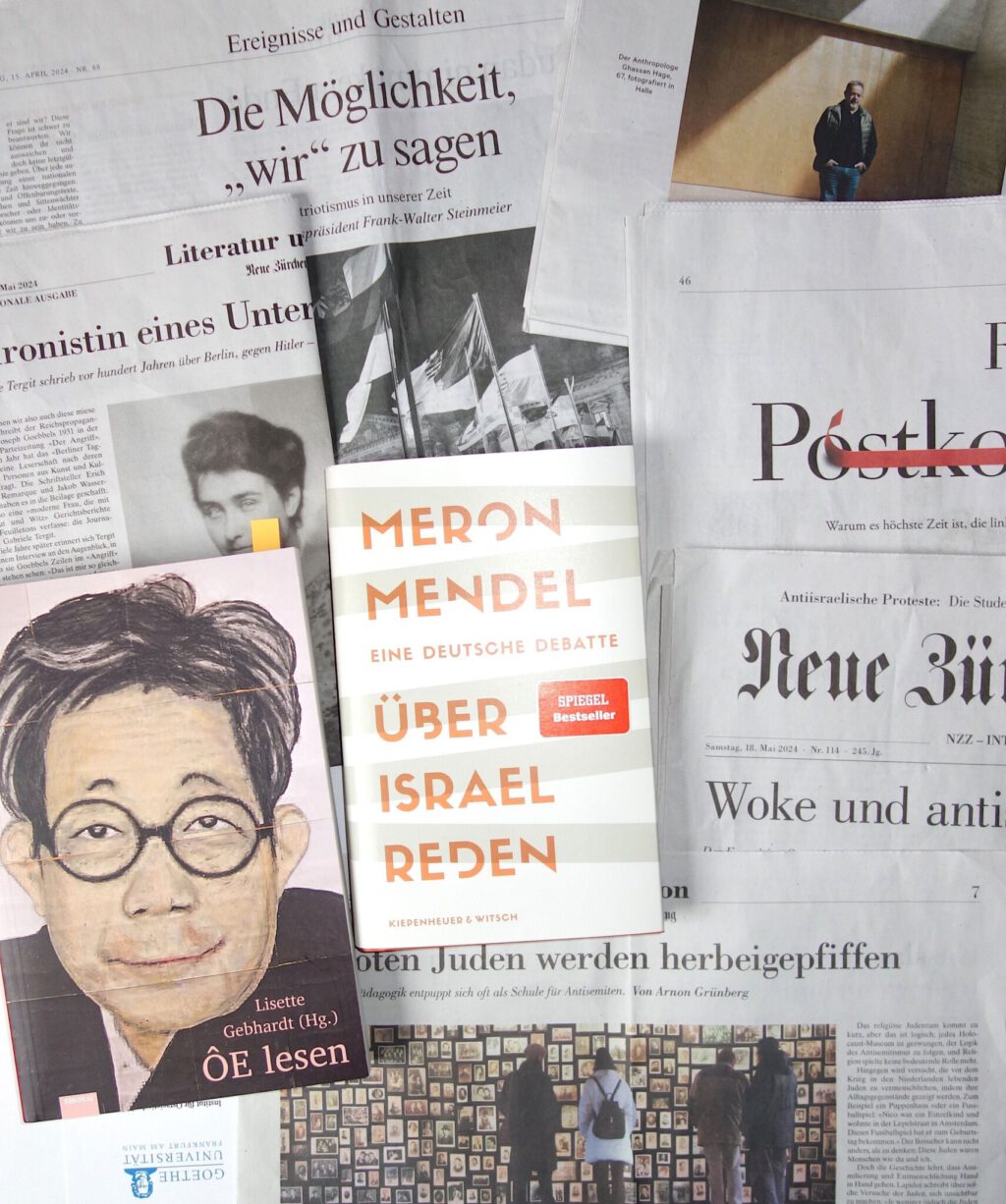
Abschlussbericht
Gremium zur fachwissenschaftlichen Begleitung der documenta fifteen
Prof. Dr. Nicole Deitelhoff (Vorsitzende)
Goethe-Universität Frankfurt am Main – Hessische Stiftung Friedens- und Konfliktforschung
Prof. Dr. Marion Ackermann
Staatliche Kunstsammlungen Dresden
Prof. Dr. Julia Bernstein
Frankfurt University of Applied Sciences
Marina Chernivsky
Kompetenzzentrum für Prävention und Empowerment
Prof. Peter Jelavich, PhD
Johns Hopkins University
Prof. Dr. Christoph Möllers
Humboldt-Universität zu Berlin
Dr. Cord Schmelzle (wiss. Koordinator)
Goethe-Universität Frankfurt am Main – Forschungsinstitut Gesellschaftlicher Zusammenhalt
https://www.documenta.de/files/230202_Abschlussbericht.pdf
—
CAMPUSPROTESTE
Nicht propalästinensisch, sondern antisemitisch
Ein Kommentar von Alexander Jürgs
24.05.2024
Dass der AStA der Frankfurter Goethe-Universität sich deutlich gegen ein Palästina-Camp positioniert, ist ein gutes Zeichen. Einen Abbruch des Protests wünschen sich die Studentenvertreter trotzdem nicht.
Seinen Widerspruch formuliert der alte Mann ruhig. Beim Plenum des Palästina-Camps auf dem Gelände der Goethe-Universität in Frankfurt erzählt er zunächst von seiner jüdischen Mutter und wie sie verfolgt wurde. Dann beschreibt er, wie er sich eine Zukunft für Gaza vorstellt: Die Hamas sollte Platz machen für eine Übergangsregierung, die israelischen Geiseln müssten freigelassen werden, so ließen sich die Voraussetzungen für eine Friedenslösung schaffen.
Doch debattieren will mit dem Mann niemand. Der Diskussionsleiter sagt nur, dass seine Ansichten „mehr als falsch“ seien. Und bekommt dafür viel Applaus.
Aktivisten sollen nicht mit Journalisten sprechen
Die propalästinensischen Aktivisten, die seit Pfingstmontag auf dem Campus zelten, hatten behauptet, zum Dialog bereit zu sein. Zu spüren ist das nicht. Von den Organisatoren des Camps werden die Teilnehmer dazu angehalten, mit Journalisten nicht zu sprechen. Auf die Frage bei einer Pressekonferenz, wie das Camp zur Hamas stehe, verweigern sie die Antwort. Gegenprotest wird niedergebrüllt. So bleibt der Eindruck: Aus ihrer Echokammer wollen die Aktivisten gar nicht heraus.
Das Schreiben, mit dem der AStA der Universität sich deutlich von dem Protestcamp distanziert, ist deshalb ein wichtiges Zeichen. Die von linken Hochschulgruppen dominierte Studentenvertretung wirft den Camp-Organisatoren und anderen an der Universität aktiven Gruppen wie der Initiative „Studis gegen rechte Hetze“ eine „destruktive Streitkultur“ vor.
Der AStA fordert keinen Abbruch des Camps
Wer „Yallah Intifada“ skandiert und damit Gewalt gegen jüdische Israelis fordert, wer sich ein Palästina „from the river to the sea“ und damit das Ende Israels wünscht, ist aus ihrer Sicht nicht propalästinensisch, sondern ein Antisemit. Das sollte eigentlich eine Binsenwahrheit sein. Auf dem Protestcamp dürfte es trotzdem bestritten werden.
Dennoch fordert der AStA keinen Abbruch des Protests. Und auch das ist richtig. So unerträglich die Aussagen und Parolen der Aktivisten sind: Dass das Recht auf freie Meinungsäußerung sehr weit ausgelegt wird, bleibt eine Stärke des Staates.
https://www.faz.net/aktuell/rhein-main/frankfurt/asta-der-frankfurter-goethe-uni-positioniert-sich-gegen-ein-palaestina-camp-19742418.html
—-
Meron Mendel Über Israel reden
Eine deutsche Debatte
Verhärtete Fronten – Wie der Krieg in Gaza die Kulturszene spaltet
Ein Bruch geht durch den Kulturbetrieb, der Krieg in Nahost spaltet wie nie zuvor. Es wird beschuldigt, ausgeladen und abgesagt. Wie kann Verständigung in dieser vertrackten Situation aussehen?
https://www.3sat.de/kultur/kulturdoku/verhaertete-fronten-100.html
2024/6/2
It’ll Take Generations to Recover: Actor Michael Douglas Visits Israeli Kibbutz That Suffered Heavy Loses on Oct. 7
The Oscar-winning star began his Israel trip with a visit to Kibbutz Be’eri on the Gaza border, where nearly 100 people were killed another 26 taken hostage on October 7, before traveling to Tel Aviv for a photography exhibit
https://www.haaretz.com/israel-news/2024-06-02/ty-article/.premium/actor-michael-douglas-visits-israeli-kibbutz-that-suffered-heavy-loses-on-oct-7/
…
Clear case of BDS-Fascism


Link_https://twitter.com/ShelleyGldschmt/status/1796561030044405845/photo/1
Link_https://twitter.com/michael_jaffe/status/1797703662657016052/photo/1
We the senior editors of Cultural Critique would like to apologize for a recent incident that has understandably caused some concern. We mistakenly excluded from consideration an article submitted by a scholar on the basis of their university affiliation. (1/x)
Link_https://twitter.com/CulturalCritiq1/status/1796307765281046636

A teacher was whipped by Taliban terrorists because “he dared do teach Afghan girls.”
women are:
❌Banned from education/school
❌ Forced to wear Niqab
❌Not allowed outside without male guardian
❌Banned from public places
❌Prohibited from working.pic.twitter.com/Fv7F4cxWQy— Azat Alsalem (@AzzatAlsaalem) June 3, 2024
2024/6/8
Israels Armee hat nach eigenen Angaben vier Hamas-Geiseln lebend aus dem Gazastreifen gebracht. Die aus Israel Entführten – drei Männer und eine Frau – seien im Rahmen einer „komplexen Aktion“ bei zwei Einsätzen im Flüchtlingsviertel Nuseirat befreit worden. Die Armee hatte zuvor mitgeteilt, in der Gegend Infrastruktur von Terroristen anzugreifen. Laut Armeesprecher Daniel Hagari haben Hunderte Soldaten an der Operation teilgenommen, einer sei dabei schwer verletzt worden.
Die befreiten Geiseln seien in gutem Zustand und in ein Krankenhaus gebracht worden, teilte die Armee am Samstag auf der Plattform X mit. Es handelt sich demnach um die 25 Jahre alte Noa Argamani, den 21 Jahre alten Almog Meir Jan, den 27 Jahre alten Andrey Kozlov und den 40 Jahre alten Schlomi Ziv. Sie seien beim Angriff der Hamas am 7. Oktober 2023 auf das Nova-Musikfestival im Süden Israels verschleppt worden. 260 Festvialbesucher wurden damals von der Hamas getötet.
„Wir sind überglücklich, euch zu Hause zu haben“, sagte Israels Verteidigungsminister Joav Galant nach Angaben seines Büros. Er sprach von einer „heldenhaften Operation“.
Laut der israelischen Zeitung „Haaretz“ telefonierten der israelische Ministerpräsident Benjamin Netanjahu und der israelische Präsident Izchak Herzog bereits mit Noa Argamani. Das Schicksal der befreiten Frau, die von Hamaskämpfern auf einem Motorrad entführt worden war und dabei verzweifelt um Hilfe gerufen hatte, bewegt Israel. Ihre Mutter leidet an Krebs im Endstadium, sie hatte immer wieder darum gebeten, ihre Tochter vor ihrem Tod noch einmal sehen zu dürfen.
Laut israelischen Angaben tötete die Hamas bei dem Großangriff auf Israel im Oktober 1194 Menschen und brachte 251 Menschen als Geiseln in den Gazastreifen. 116 Geiseln befinden sich nach Angaben der israelischen Armee noch in der Gewalt der Hamas. 41 von ihnen sollen bereits tot sein.
IDF会見、「ヤマム部隊や情報部隊のおかげで戦闘中の中4名を奪回。数週間の複雑な計画の元。この作戦で1兵士が重症、ヌセイラットの民間人住宅街の間でノアは1人で、男性3人は別の場所で拘束されていた。健康状態は4人とも良好。シバ病院に搬送。私たちはまだ拉致されている人々も諦めずに帰宅させる」
Translated from Japanese by google
“Thanks to the efforts of the Yamam and intelligence forces, we managed to capture four people during the fighting. It was a complex operation that took several weeks. One soldier was seriously injured in the operation, Noah was alone in a civilian residential area of Nuseira, and three men were held in other locations. All four are in good health and have been taken to Sheba Hospital. We are not giving up on those still abducted and will return them home,” the IDF said in a press conference.
IDF会見、「ヤマム部隊や情報部隊のおかげで戦闘中の中4名を奪回。数週間の複雑な計画の元。この作戦で1兵士が重症、ヌセイラットの民間人住宅街の間でノアは1人で、男性3人は別の場所で拘束されていた。健康状態は4人とも良好。シバ病院に搬送。私たちはまだ拉致されている人々も諦めずに帰宅させる」
— Junko Yasmin יסמין ياسمين 🪬 (@JunkoYasmin) June 8, 2024
真夏真っ盛りの安息日のテルアビブのビーチで4人の奪回を知らせると人々は大喜び。イスラエル社会では、みんなが拉致被害者の家族です。
https://twitter.com/JunkoYasmin/status/1799404710102974831
イスラエル軍 人質4人救出 ハマス側“多くの住民死亡”と反発
2024年6月9日 11時52分 イスラエル
イスラム組織ハマスによるガザ地区の当局は、イスラエル軍が人質4人を救出したとするガザ地区中部での作戦によって住民210人が死亡したと主張し反発を強めています。また、停戦や人質解放に向けた交渉の仲介役を担うエジプトがイスラエルを非難する声明を発表するなど、交渉にも影響を与える可能性があります。
イスラエル軍は8日、ガザ地区中部のヌセイラトで作戦を実施し、ハマスにとらえられていた人質4人を救出したと発表しました。
イスラエル政府は救出された人たちが家族と再会する様子を写した映像や写真を公開して成果を強調し、ネタニヤフ首相は声明で「人質全員を取り戻すまで手を緩めることはない」と述べハマスへの攻勢を強める構えを示しました。
一方、パレスチナの地元メディアなどはイスラエル軍が救出作戦を行ったとする時間帯に、ヌセイラトなど中部で激しい攻撃が行われたと報じ、多数のけが人が病院に運び込まれている様子などを伝えています。
ハマスによる地元当局は住民210人が死亡し、400人以上がけがをしたと主張したうえで「イスラエル軍は野蛮で残忍な攻撃を行い、民間人を直接標的にした」と反発を強めています。
また、交渉の仲介役を担うエジプトの外務省は8日「イスラエルの攻撃を最も強いことばで非難する」などとする声明を発表していて、停戦や人質解放に向けた交渉にも影響を与える可能性があります。
米軍 ガザ地区への人道支援物資搬入再開を発表
アメリカ軍がガザ地区の海岸に設置した浮き桟橋は一部が破損したため人道支援物資の搬入が中断されていましたが、アメリカ中央軍は8日、物資の搬入が再開されたと発表しました。
8日にはガザ地区におよそ500トンの物資が搬入され、搬入が始まってからこれまでに1500トンを超える物資がガザ地区に届けられたとしています。
ただ、海上の天候などの制約を受ける浮き桟橋は人道状況を改善させる決め手にはならず、イスラエル軍によるラファへの地上作戦によって検問所が閉鎖されるなどして物資の搬入が滞る中、深刻な人道状況が続いています。
イスラエル政府 ノアさんが父親と再会した映像公開
イスラエル政府は4人のうち音楽イベントに参加していて人質になったノア・アルガマニさんの救出後の様子だとする映像を公開し、ノアさんは父親のヤコブさんと抱き合って再会を喜び合っています。
救出された1人ノアさんの父親は去年来日
今回、イスラエル軍が救出したと発表した4人の人質の1人、ノア・アルガマニさんの父親のヤコブさんは、去年12月にイスラエル政府の事業で来日し、人質の早期解放への協力を日本でも訴えていました。
ノアさんはヤコブさんの一人娘で、去年10月7日、ボーイフレンドらとガザ地区との境界の近くで開かれていた音楽イベントに参加しているときにハマスの襲撃を受けてガザ地区に連れ去られました。
ハマスが撮影したとみられる映像ではバイクに乗せられたノアさんが手を伸ばして助けを求める様子が確認されていました。
ノアさんの母親・リオラさんは、がんを患っていて医者からは余命が長くないと言われていて、父親のヤコブさんは来日した際、「妻にとって、たった1つの願いはノアを一目みたい、ということだけです」と話し、一刻も早くノアさんが帰ってくることを願っていました。
またヤコブさんは「戦争に勝者はいません。戦争が続くかぎり、双方に死者が出ます。ガザでも子を亡くした親が私たちと同じように、泣くことになります。私は停戦と対話によってのみ、解決ができると思っています」とも話していました。
ロイター通信 ガザ地区中部デルバラハの映像配信
映像では、辺りをつんざくような大きな音がしたあと、攻撃を受けたとみられる付近から黒い煙がもくもくとあがる様子が確認できます。さらに、爆発音や「タタタタタ」と銃撃するような音が何度も聞こえます。また病院で撮影された映像では、多くの人が集まっている様子や、救急車でけが人が次々と運ばれてくる様子が確認できます。
攻撃があったとき、ヌセイラト難民キャンプにいたという人は「特殊部隊がヘリコプターでやって来て、白い車も1台もあった。ヘリコプターは人々に向けて攻撃してきた。救急車1台に10人のけが人を乗せた。なんとか路地を通って外に出ることができた」と当時の様子を話していました。また、2人のいとこが死亡したという人は「彼らはなにもしていなかった。家にいただけだ」と話していました。
ガザ地区の保健当局は8日、多くの死者やけが人が搬送された病院では、何十人ものけが人が床に横たわっているほか、医薬品や燃料の不足に直面していると窮状を訴えています。
米仏首脳 人質解放を歓迎も停戦を促す
フランスのマクロン大統領は、バイデン大統領との首脳会談のあとの記者発表で「イスラエル軍が4人の人質を解放したことを歓迎する」と述べました。
一方で「私たちは、即時停戦が実現し、政治的解決への展望が開かれることを望む。ラファの人道状況は受け入れられず、イスラエルが人道物資の搬入の経路を完全に開かないことも容認しがたい」として、イスラエル側に苦言も呈しました。
また、バイデン大統領は人質の解放を歓迎しつつ、「人質全員が帰還し、停戦が成立するまで、私たちは努力を止めない」と述べ、停戦の合意に向けて外交努力を続ける考えを示しました。
https://www3.nhk.or.jp/news/html/20240608/k10014475161000.html
Junko Yasmin יסמין يسمين @JunkoYasmin
ノアが拉致されていたい家は、アルジャジーラに雇われている記者Abdallah al-Jamal の自宅、父親は医師。今のガザではこの分野の職業、ハマスと繋がりないとできないよね。”難民”キャンプ内の素晴らしいスーパーマーケットの隣。ガザは”天井のない監獄”。ハマスのジャーナリストによるキャッチーコピー
Translated from Japanese by
The house where Noah was kidnapped is the home of Abdallah al-Jamal, a journalist employed by Al Jazeera. His father is a doctor. In today’s Gaza, you can’t get a job in this field without connections to Hamas. It’s next to a great supermarket in the “refugee” camp. Gaza is a “prison without a ceiling.” A catchy slogan by a Hamas journalist.
ノアが拉致されていたい家は、アルジャジーラに雇われている記者Abdallah al-Jamal の自宅、父親は医師。今のガザではこの分野の職業、ハマスと繋がりないとできないよね。”難民”キャンプ内の素晴らしいスーパーマーケットの隣。ガザは”天井のない監獄”。ハマスのジャーナリストによるキャッチーコピー https://t.co/P63s0QCmk7
— Junko Yasmin יסמין ياسمين 🪬 (@JunkoYasmin) June 9, 2024
Ahora si se confirma que Abdallah Aljamal, periodista de la red qatarí Al Jazeera y del diario local Palestine Chronicle, mantenía cautiva desde hace 8 meses en su casa de Gaza a la joven israelí Noa Argamani, de 26 años, tomada como rehén el 7 de octubre y rescatada ayer pic.twitter.com/LkL6WBcezN
— Nacho Montes de Oca (@nachomdeo) June 9, 2024
https://twitter.com/AgenciaAJN/status/1799939240911843535/photo/2

Evgeniia Kozlova, seated, said her son Andrey Kozlov went through “very difficult” circumstances during his many months as a hostage in Gaza. Jenifer Master, the girlfriend of Andrey, is standing behind her
Accounts of Life in Hamas Captivity Emerge in Israel
The four hostages rescued in Gaza were described as malnourished and traumatized.
June 12, 2024
In the months after he was taken hostage in Israel and hidden in the Gaza Strip, Andrey Kozlov’s captors kept drumming in the same message: The world, they said, had given up on him. Even his family had moved on.
“Your mom is on vacation in Greece,” the militants told him. “Your mom doesn’t know about you at all — and doesn’t want to know.”
So persuasive were they that when Israeli security forces burst through the door of the apartment where Mr. Kozlov was being held on Saturday, he was at first unsure of whether they had come to save or kill him, his parents said in an interview this week during which they recounted his ordeal.
The account of Mr. Kozlov’s eight months in captivity came as a doctor in Israel reported that while he and the three other rescued Hamas hostages seemed to be in fairly good condition at first glance, tests showed that all were malnourished. And all, said Dr. Itai Pessach, the head of the medical team for returning hostages at Sheba Medical Center, had suffered mistreatment in varying degrees of frequency and intensity.
“They were all abused, punished and tortured physically and psychologically in many ways,” he said.
Dr. Pessach said the hostages he had examined had lost a lot of weight, though they gained some back, and their muscles were “extremely wasted.” The mix of poor nutrition, confinement, lack of sunlight and stress that they endured may have long-term implications for their health, he added.
Hamas says it has treated the hostages well compared with Israel’s treatment of Palestinian prisoners, a claim that Israeli officials deny.
https://www.nytimes.com/2024/06/12/world/middleeast/israel-hostages-gaza-rescue.html
——
HOME OF BROOKLYN MUSEUM DIRECTOR VANDALIZED
By News Desk, artforum
June 12, 2024 4:29 pm

The Brooklyn residence of Anne Pasternak, director of the Brooklyn Museum, was defaced by vandals on the evening of June 11. Strung across the entrance to the apartment building was a banner reading “Anne Pasternak Brooklyn Museum White Supremacist Zionist” in large letters; repeated three times below, in a smaller font, were the words “Funds Genocide.” Spray-painted on her front door was an inverted red triangle. The symbol has historically been employed by Hamas to mark military targets and was recently spotted at university demonstrations calling for Israel to cease its sustained retaliatory attack on Gaza. More red paint splashed the entranceway, and the phrase “Blood on Your Hands” was stenciled in red on the ground nearby. The homes of several other Jewish museum board members were targeted as well.
https://www.artforum.com/news/home-brooklyn-museum-president-vandalized-555797/
Scott Rickard

“The Invention of the Jewish People” by Shlomo Sand is a controversial and thought-provoking book that challenges traditional narratives about Jewish identity and history. Sand, a historian at Tel Aviv University, argues that many of the common beliefs about the origins and continuity of the Jewish people are modern inventions.
Here are ten key lessons and insights from the book:
1. The Myth of a Homogeneous Jewish People: Sand argues that the concept of a singular, homogeneous Jewish people with a common origin is a modern invention. He suggests that Jewish identity has always been diverse, with various groups converting to Judaism throughout history.
2. The Khazar Hypothesis: One of Sand’s most contentious points is the revival of the Khazar hypothesis, which posits that the Ashkenazi Jews of Eastern Europe are largely descended from the Khazars, a Turkic people who converted to Judaism in the 8th or 9th century. This challenges the traditional belief in a direct descent from the ancient Israelites.
3. The Role of Conversion: Sand emphasizes the significant role that conversion played in the spread of Judaism. He argues that large-scale conversions in the ancient world created diverse Jewish communities, which undermines the idea of a pure, ethnically distinct Jewish lineage.
4. Invented Traditions: Sand contends that many Jewish traditions and narratives, particularly those that emphasize a continuous and unbroken lineage from ancient Israel, were constructed in the modern era, particularly in the 19th and 20th centuries, to serve nationalist purposes.
5. The Exile Myth: Sand challenges the widely held belief in a mass Jewish exile after the destruction of the Second Temple in 70 CE. He argues that there is little historical evidence for a large-scale forced displacement and that many Jews remained in the region or migrated voluntarily over time.
6. Nationalism and Identity: The book explores how Jewish nationalism, particularly Zionism, influenced the construction of Jewish historical narratives. Sand suggests that the desire to create a cohesive national identity led to the reinforcement of certain myths and the suppression of alternative histories.
7. Historiography and Political Agendas: Sand critiques the historiographical methods used to study Jewish history, arguing that many historians have been influenced by political agendas. He calls for a more critical and nuanced approach to understanding the past.
8. Cultural and Religious Plurality: Sand highlights the cultural and religious plurality within Jewish communities throughout history. He points out that Jewish practices and beliefs have varied widely across different regions and periods.
9. The Role of Memory and Myth: The book examines the powerful role of memory and myth in shaping collective identities. Sand argues that historical myths can have a profound impact on contemporary politics and social cohesion.
10. Reimagining Jewish Identity: Ultimately, Sand calls for a reimagining of Jewish identity that embraces its historical complexity and diversity. He advocates for an understanding of Jewishness that is less focused on ethnic purity and more on cultural and religious pluralism.
“The Invention of the Jewish People” by Shlomo Sand offers a provocative and challenging perspective on Jewish history and identity. By questioning long-held beliefs and examining the political and ideological motivations behind historical narratives, Sand encourages readers to critically engage with the past and reconsider the foundations of collective identity.
Book: https://amzn.to/3Vy5YLD
You can get the audiobook for FREE by using the same link above when you register on the Audible platform.
International Current Art Research & Development
Re, “New Scotland” – Scotts know all about “Invented Traditions”
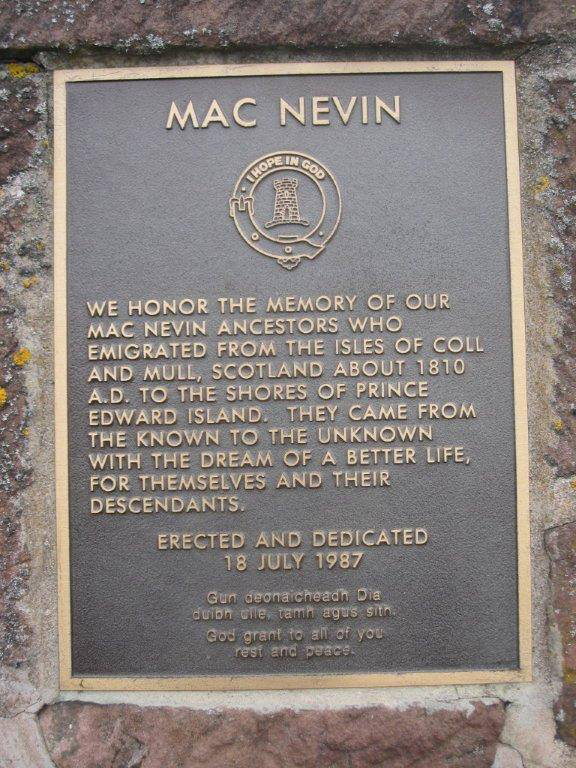

stefansimchowitz
Credit to @artnews The home of Brooklyn Museum director Anne Pasternak was vandalized overnight in an apparent protest of her institution’s ties to Israel.
Red paint was splashed across the front door and windows of Pasternak’s home.
Unfurled between two columns was a banner that read: “Anne Pasternak / Brooklyn Museum / White Supremacist Zionist.” Beneath that statement, in a smaller, red font, were the words “Funds Genocide.”
“This is not peaceful protest or free speech,” New York City Mayor Eric Adams said on X. “This is a crime, and it’s overt, unacceptable antisemitism. These actions will never be tolerated in New York City for any reason. I’m sorry to Anne Pasternak and members of @brooklynmuseum’s board who woke up to hatred like this.”
Check the link in our bio to learn more.
[ID: The front of a house is splashed with red paint. A white banner hangs in front of the door with the words “Anne Pasternak / Brooklyn Museum / White Supremacist Zionist.” There is text overlaid on the image that says: ARTnews: Brooklyn Museum Director’s Home Vandalized with Anti-Zionist Graffiti. New York City Mayor Eric Adams decried the action as “a crime” and vowed to prosecute the perpetrators.]
https://www.instagram.com/p/C8IAlDOPSGs/
On
@N12News
Israel’s most watched news show, former Likud MP Moshe Feiglin invokes ***Hitler*** to justify Gaza resettlement:
“As Hitler said, ‘I cannot live if one Jew is left,’ we can’t live here if one ‘Islamo-nazi’ remains in Gaza.”


https://x.com/Etanetan23/status/1802310599776276750
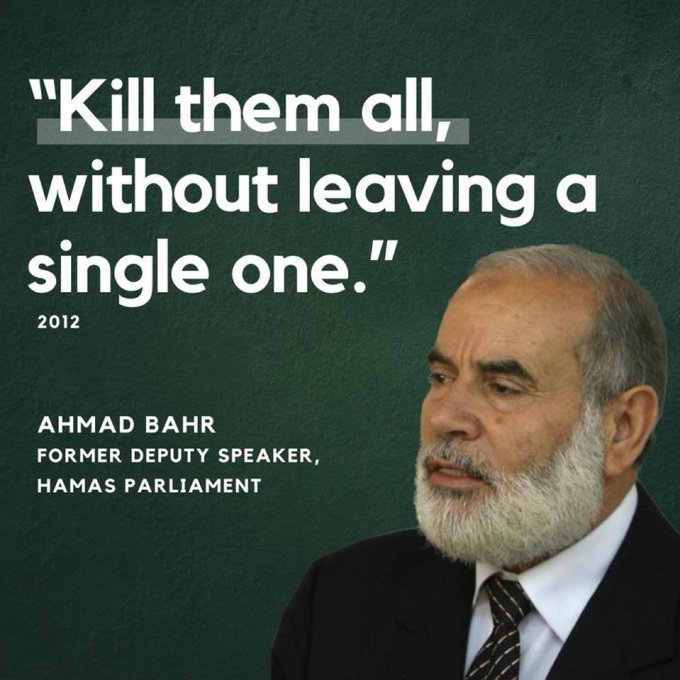
https://x.com/MaxNordau/status/1802336079946658007
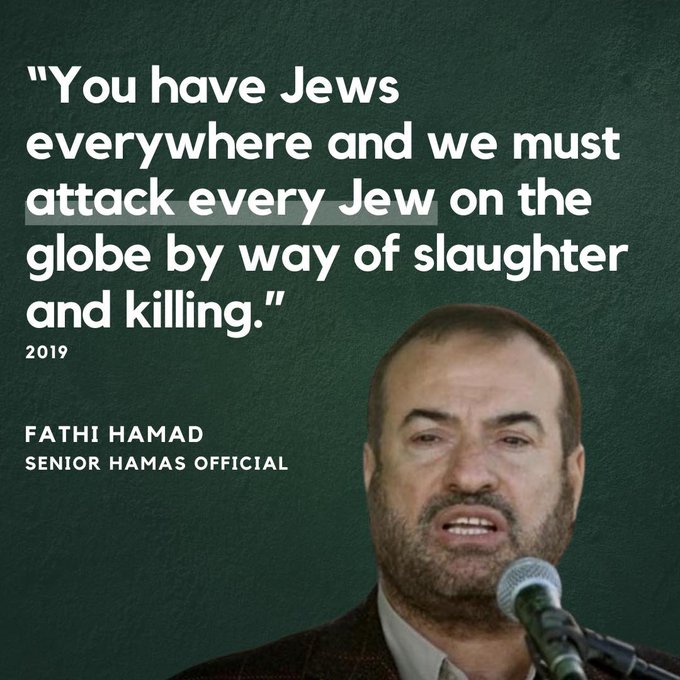
https://x.com/MaxNordau/status/1802347078690947232
IDF knew of Hamas’s plan to kidnap 250 before October 7 attack – report
The IDF had precise information about Hamas’s intentions, but due to prevailing conceptions in the security establishment and possible negligence by officials, the warning signs were not acted on.
By JERUSALEM POST STAFF
JUNE 17, 2024 21:16
A newly surfaced document has revealed that the Israeli Defense Forces (IDF) and intelligence systems had detailed knowledge of Hamas’s plan to raid Israel and kidnap 250 people weeks before the October 7 massacre.
The document, which was compiled in the Gaza Division, outlined Hamas’s intentions and was known to top intelligence officials, according to a report by Kan News.
The document, titled “Detailed End-to-End Raid Training,” was distributed on September 19, 2023, and described in detail the series of exercises conducted by Hamas’s elite units.
These exercises included raiding military posts and kibbutzim (collective communities in Israel), kidnapping soldiers and civilians, and maintaining the hostages once they were in the Gaza Strip.
The report by Kan News stated, “Security sources told Kan News that the document was known to the intelligence leadership, at the very least in the Gaza Division.”
The document’s revelations came in the wake of widespread criticism over the failure to anticipate and prevent the October 7 attack, which resulted in significant casualties and hostages.
Warning signs were not acted upon
The IDF had precise information about Hamas’s intentions, but due to prevailing conceptions within the security establishment and possible negligence by senior officials, the warning signs were not acted upon.
The report further detailed that Israeli intelligence officials monitored the exercise and documented the steps Hamas planned to take after breaching Israeli territory and taking over military posts. The expected number of hostages, according to the document, was between 200 and 250 people.
“Israeli intelligence officials who monitored the exercise detailed in the document the next steps after breaching into Israel and taking over the posts, determining that the instruction is to hand over the captured soldiers to the company commanders. The expected number of hostages, it states, is between 200 and 250 people,” Kan News reported.
This information, combined with a new and sophisticated security barrier completed two years before the attack, was believed to have made such an assault improbable. However, the barrier failed during the Hamas attack, highlighting a significant intelligence and security oversight.
The general staff investigation team is expected to present initial findings from this failure to the Chief of Staff in the coming weeks, as the country seeks to understand how such a lapse in security could occur despite having detailed advance knowledge of the enemy’s plans.
The Israel-Hamas war began on October 7 when Hamas launched an attack, with thousands of terrorists infiltrating from the Gaza border and taking more than 240 hostages into the Gaza Strip.
During the massacre, more than 1,200 Israelis and foreign nationals were murdered, including over 350 in the Re’im music festival and hundreds of Israeli civilians across the Gaza border communities.
120 hostages still remain in Gaza captivity.
https://www.jpost.com/israel-hamas-war/article-806634#806634
DIE NACHT IN NAHOST :
Schwere Zusammenstöße bei Protesten gegen Netanjahu
18.06.2024
Bei Demonstrationen in Jerusalem gegen die israelische Regierung und den Krieg gab es Verletzte. Wenige Stunden zuvor hatte Netanjahu das Kriegskabinett aufgelöst. Die USA wollen derweil den Konflikt Israel-Hizbulllah entschärfen. Der Überblick.
Bei neuen Protesten gegen die Regierung des israelischen Ministerpräsidenten Benjamin Netanjahu in Jerusalem ist es zu Auseinandersetzungen zwischen Demonstranten und Polizisten gekommen. Mindestens drei Menschen seien verletzt und acht weitere am Montagabend festgenommen worden, berichtete die Zeitung „Haaretz“. Die Demonstranten forderten Neuwahlen und ein Abkommen, das zur Freilassung der noch verbliebenen israelischen Geiseln aus der Gewalt der islamistischen Hamas führt.
Wenige Stunden zuvor hatte der Regierungschef das Kriegskabinett aufgelöst, das wichtige Entscheidungen hinsichtlich der Kämpfe der israelischen Armee mit der Hamas im Gazastreifen und auch des Konflikts mit der Schiiten-Miliz Hisbollah im Libanon getroffen hatte. Ein hochrangiger Berater von US-Präsident Joe Biden traf sich unterdessen mit Netanjahu, um darüber zu beraten, wie die eskalierenden Spannungen mit der Hisbollah entschärft werden könnten.
Zu den gewalttätigen Auseinandersetzungen in Jerusalem kam es vor der Privatresidenz Netanjahus. Die Polizei setzte nach Berichten von „The Times of Israel“ Wasserwerfer ein, um die Proteste aufzulösen. Zuvor hatten den Berichten zufolge Zehntausende vor dem israelischen Parlament – der Knesset – an einer Großkundgebung teilgenommen.
Seit Monaten gibt es in Israel immer wieder Massenproteste gegen die Regierung. Netanjahu wird von seinen Gegnern vorgeworfen, auf die Wünsche seiner extremistischen Koalitionspartner einzugehen und deshalb Verhandlungslösungen zu hintertreiben. Er bestreitet das und macht die Unnachgiebigkeit der Hamas für die Stagnation bei den indirekten Verhandlungen verantwortlich. Zuletzt nahm die Intensität der Proteste gegen die Netanjahu-Regierung zu.
Auflösung des Kriegskabinetts
Die Auflösung des Kriegskabinetts erfolgte gut eine Woche nach dem Rückzug von Minister Benny Gantz aus der israelischen Notstandsregierung. Aus Regierungskreisen hieß es, Netanjahu werde kritische Entscheidungen mit Blick auf die aktuellen Konflikte künftig in kleineren Foren besprechen.
Um nach dem Terrorangriff der Hamas und anderer extremistischer palästinensischer Gruppen auf den Süden Israel am 7. Oktober des vorigen Jahres Geschlossenheit zu demonstrieren, war Gantz dem dreiköpfigen Kriegskabinett beigetreten. Der frühere General und Verteidigungsminister erklärte allerdings vor einer Woche wegen Meinungsverschiedenheiten mit Blick auf den Gaza-Krieg seinen Rückzug. Er kritisierte, dass die Regierung keinen Plan für eine Nachkriegsordnung im Gazastreifen erarbeite.
Bei dem Terrorangriff am 7. Oktober wurden rund 1200 Menschen ermordet und weitere 250 als Geiseln verschleppt. Im Zuge des dadurch ausgelösten Krieges wurden nach – unabhängig nicht überprüfbaren – Angaben der von der Hamas kontrollierten Gesundheitsbehörden inzwischen mehr als 37 000 Palästinenser getötet.
Vermittlungsbemühungen im Konflikt Israel-Hisbollah
Der US-Gesandte Amos Hochstein traf sich laut Berichten der „Jerusalem Post“ am Montag neben Netanjahu auch mit Gantz, Präsident Isaac Herzog sowie Verteidigungsminister Joav Galant. Der Minister habe einen Lagebericht zu den Entwicklungen an Israels Grenze zum Libanon im Norden gegeben, teilte demnach Galants Büro mit. Er habe „die täglichen Angriffe durch die Hisbollah gegen israelische Gemeinden geschildert“ und die Bemühungen der Streitkräfte, die Pläne der „Hisbollah-Terroristen“ zu vereiteln.
Seit Beginn des Gaza-Kriegs vor mehr als acht Monaten hat sich die Lage im Grenzgebiet zum Libanon deutlich verschärft, inzwischen kommt es fast täglich zu Gefechten. Die von Israels Erzfeind Iran unterstützte Hisbollah-Miliz ist mit der Hamas im Gazastreifen verbündet, gilt aber als deutlich schlagkräftiger. Zuletzt verstärkte die Hisbollah ihre Angriffe, nachdem das israelische Militär in der vergangenen Woche einen ihrer Kommandeure gezielt getötet hatte.
Die USA warnen vor einer Ausweitung des Konflikts. „Wir wollen überhaupt keine Eskalation im Norden. Das haben wir der Regierung Israels klargemachte“, sagte der Sprecher des US-Außenministeriums, Matthew Miller, am Montag (Ortszeit). Die Angriffe der Hisbollah seien „untragbar“, aus Sicht der USA sollte der Konflikt auf diplomatischem Weg gelöst werden. Nach Medienberichten wollte Hochstein auch zu Gesprächen in den Libanon reisen.
Israels Armee sieht sich vor Erreichen der Kriegsziele in Rafah
Mit Blick auf die Kämpfe in Gaza gab sich die israelische Armee unterdessen zuversichtlich, ihre militärischen Ziele bei der Offensive in der südlichen Stadt Rafah bald zu erreichen. Die Hälfte der Kampfverbände der Hamas sei zerschlagen, 60 bis 70 Prozent des Territoriums der Stadt befänden sich unter „operativer Kontrolle“ der israelischen Truppen, teilte die Armee am Montag mit. Es werde nur mehr noch einige Wochen dauern, bis die Militäroperation abgeschlossen sei.
Verwirrung über Feuerpause in Gaza
Israels Armee hatte Anfang Mai den Einsatz in Rafah an der Grenze zu Ägypten gestartet. Erklärtes Ziel war die Zerschlagung der letzten Kampfverbände der Hamas. Das Vorhaben war international stark umstritten, weil sich damals mehr als eine Million Palästinenser in Rafah aufgehalten hatten. Die meisten von ihnen waren vor dem Krieg aus anderen Teilen des Gazastreifens dorthin geflohen. Fast alle dieser Menschen flüchteten inzwischen aus der Stadt in ein westlich gelegenes Gebiet, wo sie allerdings nur mit Schwierigkeiten versorgt werden können.
2024/6/20
Alleged rape of 12-year-old Jewish girl sparks antisemitism outcry in France
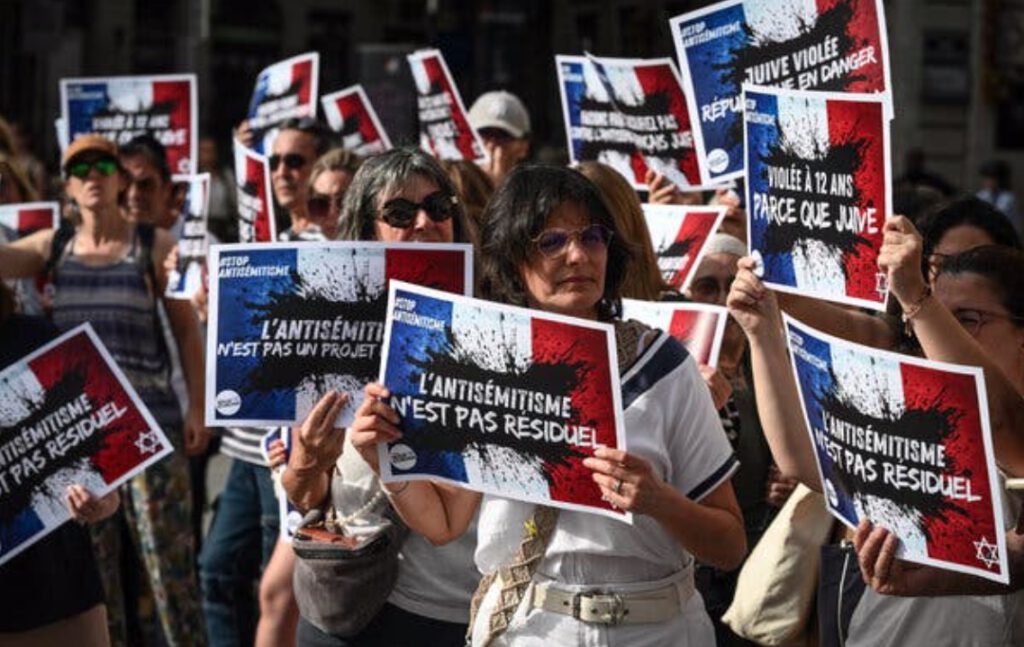
https://edition.cnn.com/2024/06/20/europe/france-alleged-rape-anti-semitism-intl-latam/index.html
—
NACH DEM 7. OKTOBER
Alle Augen auf den Judenhass
Ein Kommentar von Michael Hanfeld, 27.06.2024
Im Internet macht sich judenfeindliche Pogromstimmung breit, auf der Straße kommt es zu Gewalt. Soll niemand sagen, er habe nicht mitbekommen, was sich seit dem Massaker der Hamas vom 7. Oktober ereignet.
Ende Mai ging bei Instagram ein Bild unter dem Slogan viral „All Eyes on Rafah“. Alle Augen auf Rafah. Das hieß, alle Welt solle sehen, was die israelische Armee in Rafah anrichtet, nicht mit Blick auf die dortigen Brigaden der Terrororganisation Hamas, nicht mit Blick auf die Raketen, die noch immer von dort gen Israel abgeschossen werden, sondern mit dem Blick auf palästinensische Zivilisten, die hier zu Tode kommen. Zigmillionenfach wurde das Bild geteilt, obwohl es erkennbar mit KI generiert war.
Zu sehen ist eine Zeltstadt mit Tausenden, ordentlich aufgereihten Unterkünften, umgeben von schneebedeckten Bergen. Mit dem realen Rafah hat das Bild augenscheinlich nichts zu tun, ein billiger Fake, auf Instagram verbreitet wie ein Urlaubsschnappschuss, scheinbar harmlos und deshalb unterhalb der Warnschwelle der Plattform.
Ein antisemitischer Stimmungsverstärker
Doch so harmlos war das selbstverständlich nicht, was der Absender – ein, wie der „Spiegel“ herausfand, junger Mann aus Malaysia oder Singapur, der sich offenbar für Sportwagen und Kameras (und Antisemitismus) interessiert – da postete. Es war und ist ein israel- und judenfeindlicher Stimmungsverstärker, wie man ihn in unzähligen Ausgaben im Netz findet.
Bei Instagram oder Tiktok wird Antisemitismus zum globalen Mainstream, ausgelöst durch das barbarische Massaker der Hamas vom 7. Oktober, das diejenigen, die „All Eyes on Rafah“ verbreiten, ausblenden. Das Gegenbild, verbreitet von der proisraelischen Gruppe „Diploact“, wurde folglich bei Instagram auch gleich gecancelt, bevor es millionenfach hätte die Runde machen können. Auf diesem Bild sitzt ein Baby in einer Blutlache vor einem bewaffneten Hamas-Terroristen, hinter ihm eine zerstörte Stadt. „Where Were Your Eyes on October 7?“ lautet die Frage.
„Antisemitische Sprache hat sich zu Taten konkretisiert“
Die Universität habe „keine adäquaten Maßnahmen ergriffen, um die antisemitische Diskriminierung gegen den Kläger, aber auch andere jüdische Studierende zu verhindern oder diese strukturell zu beseitigen“, heißt es in der Klage, die der jüdische Student Lahav Shapira gegen die Freie Universität Berlin eingereicht hat. Ein Kommilitone, der zuvor an einer „propalästinensischen“ Hörsaalbesetzung teilgenommen haben soll, hatte ihn erkannt und vor einer Bar brutal zusammengeschlagen, Shapira musste mit schweren Gesichtsverletzungen ins Krankenhaus. An der Universität, so Shapiras Klage, über die das ZDF-Magazin „frontal“ berichtet, habe sich „ein Umfeld der Unsicherheit entwickeln“ können. Die Freie Universität Berlin habe zugelassen, „dass antisemitische Sprache sich zu Taten konkretisiert hat“.
Das gilt nicht nur im Einzelfall, das gilt nicht nur an der Freien Universität Berlin, es gilt inzwischen an vielen Hochschulen und im ganzen Land. Der Hetze folgt die nackte Gewalt. 4782 antisemitische Vorfälle zählt der Bundesverband der Recherche- und Informationsstelle Antisemitismus (Rias) in seinem am Dienstag vorgestellten Jahresbericht in Deutschland 2023. Das sind 80 Prozent mehr als im Jahr zuvor, mehr als die Hälfte ereignete sich im letzten Quartal. Das Massaker vom 7. Oktober war also ein Startschuss, nun macht sich Pogromstimmung breit. Soll niemand sagen, er habe den Schuss nicht gehört. Alle Augen auf – den Judenhass und die, die ihn verbreiten.
https://www.faz.net/aktuell/feuilleton/judenhass-im-netz-und-auf-der-strasse-nach-massaker-vom-7-oktober-19816316.html
Un informe de una ONG recopiló las brutales agresiones sexuales cometidas por Hamas contra mujeres judías
“El llanto silencioso” recoge testimonios de la violencia de género perpetrada el 7 de octubre por el grupo terrorista. Fue elaborado por la Asociación de Centros de Crisis por Violación en Israel, una organización independiente del gobierno israelí
Por Mariel Fitz Patrick
La violencia sexual fue usada en forma sistemática por Hamas contra las mujeres judías en el ataque del 7/10
El uso sistemático y generalizado de la violencia sexual contra mujeres jóvenes – así como también contra niñas, adultas e incluso hombres- , es uno los aspectos más aberrantes del ataque de Hamas el 7 de octubre en el sur de Israel. Esa mañana, 1.200 personas fueron asesinadas brutalmente -en su gran mayoría civiles -, y 254 ciudadanos israelíes y extranjeros llevados a la Franja de Gaza, como rehenes. Había hombres y mujeres de todas las edades, niños, e incluso un bebé de origen argentino, Kfir Bibas de 9 meses cuando fue secuestrado junto con su mamá Shiri, y su hermanito Ariel Bibas, de 4 años. Los tres están entre los 120 secuestrados que aún permanecen en Gaza, en manos del grupo extremista palestino Hamas.
Te puede interesar: Milei criticó con dureza a López Murphy y Melconian: “Son fracasados, parte de la decadencia argentina”
A medida que pasaron los días, empezaron a conocerse cada vez más casos de violaciones de mujeres perpetradas por los terroristas ese 7 de octubre. Muchas de ellas fueron violentadas estando ya heridas, o fueron víctimas de lesiones adicionales durante la agresión sexual, antes de terminar asesinadas. En todos los casos, fueron elegidas como blanco por su condición de judías.
La violencia sexual usada como arma de guerra está específicamente definida como un crimen por el Estatuto de Roma firmado en 1998, que estableció la competencia de la Corte Penal Internacional para juzgar estos delitos. El 19 de junio es el Día Internacional para la Eliminación de la Violencia Sexual en Conflictos, instaurado por la ONU en 2015, para concientizar sobre la necesidad de eliminar esta práctica en los enfrentamientos armados. Sin embargo, pese a los numerosos testimonios y evidencia conocida a partir del 7 de octubre que daban cuenta de atrocidades contra mujeres basadas en el género, no hubo una ola de repudio generalizado por parte de organizaciones vinculadas a los derechos de la mujer.
Te puede interesar: Cristina Kirchner: “El único que sigue creyendo que el problema de la Argentina es el déficit fiscal es el Presidente”
Recién casi dos meses después del ataque, la ONU Mujeres emitió una declaración sobre la situación de Israel y Gaza en la que condenaba “inequívocamente los brutales ataques de Hamás” contra ese país el 7 de octubre, y expresaba “alarma por los numerosos relatos de atrocidades basadas en el género y violencia sexual durante esos ataques”. En el mismo texto “lamentaba profundamente que se hayan reanudado las operaciones militares en Gaza” y “reiteraba que todas las mujeres, las israelíes, las palestinas, como todas las demás, tienen derecho a una vida segura y libre de violencia”.
Numerosos testimonios de sobrevivientes de la masacre, socorristas, integrantes de los equipos de rescate y médicos permitieron establecer que hubo patrones reiterados de violencia sexual por parte de los terroristas, con un componente de sadismo y alevosía destinados a “intensificar la degradación y el terror de la agresión sexual tanto física como simbólicamente”. Así quedó plasmado en el informe “El llanto silencioso. Crímenes sexuales de guerra del 7 de octubre”, elaborado por la Asociación de Centros de Crisis por Violación en Israel (ARCCI), una organización sin fines de lucro independiente del gobierno de ese país. El trabajo recoge testimonios de difícil lectura por su crudeza y la brutalidad inhumana que reflejan.
“Silencio incomprensible”
“A siete años de que estalló el movimiento #MeToo, un cuarto de siglo después de la Guerra de Kosovo en la que el uso de la violencia sexual en la guerra entró en el discurso público, décadas de lucha feminista para romper los muros de silencio y negación que rodean la agresión sexual, y el mundo nuevamente vuelve a estar en silencio”, señaló Orit Sulitzeanu, directora ejecutiva de esta Asociación al presentar el informe.
Informe elaborado por la ONG Asociación de Centro de Víctimas de Violación en Israel
Infobae accedió al trabajo a través de una presentación en Argentina por zoom que tuvo lugar en una convocatoria a periodistas en la residencia del embajador israelí, Eyal Sela, de la que participó la propia Sulitzeanu para explicar cómo recabaron la información y los testimonios.
“Frente a la negación que comenzó inmediatamente con la aparición de los primeros relatos, existe una aguda necesidad de explicaciones y descripciones concretas en palabras que puedan romper el vínculo del silencio y el silenciamiento. Esto es especialmente conmovedor ya que muchas de las víctimas que han sido violadas y torturadas fueron asesinadas, sin poder jamás expresar sus experiencias. Cuando la mayoría de las víctimas de agresiones sexuales son asesinadas, tenemos la obligación moral y humanitaria de amplificar su grito silencioso”, se advierte en la introducción del documento.
Los crímenes sexuales continuaron ocurriendo durante el cautiverio de los secuestrados, según distintos testimonios recabados de los rehenes liberados. En ese sentido, esta ONG advirtió que “existe una alta probabilidad” de que los 120 hombres y mujeres que aún permanecen secuestrados en Gaza en manos de Hamás, “todavía corran riesgo de sufrir abuso sexual en un momento dado”.
Los patrones de violencia sexual
El informe de ARCCI recopiló y sistematizó a lo largo de 43 páginas testimonios de múltiples violaciones de mujeres judías por parte de terroristas de Hamas el 7 de octubre. Los ataques sexuales estuvieron acompañados de una violencia brutal y múltiple, con heridas de arma blanca o disparos a corta distancia a la cabeza y los órganos sexuales. Incluyeron mutilaciones y ataques dirigidos hacia los genitales, y seguidos del asesinato de las víctimas. Incluyeron heridas y amputaciones realizados con cuchillos o machetes, disparos de armas de fuego, o la incineración directa de los cuerpos.
Si bien en su mayoría fueron mujeres jóvenes, hubo también niñas, mujeres adultas – e incluso hombres – que fueron víctimas de la violencia sexual cometida por Hamas como parte de su estrategia de sometimiento y humillación del “enemigo”.
Las brutales agresiones sexuales tuvieron lugar en cada una de las zonas del ataque: las casas en los kibutzim que rodean a Gaza, y las bases de las Fuerzas de Defensa de Israel (FDI) y el festival de música electrónica Nova que tuvo lugar en el desierto de Negev y contó con unos 4.400 asistentes. Por la cantidad de mujeres jóvenes que concurrió, este fue uno de los principales escenarios de las violaciones sexuales.
Un sobreviviente que deambuló por la zona después de la masacre la definió como “un apocalipsis de cuerpos, muchachas sin ropa, a algunas les faltaba la parte superior y a otras la parte inferior”, según recogió el informe de ARCCI. Esta descripción coincide con los relatos del personal que rescató los cadáveres. Muchos de ellos testificaron que los cuerpos de las jóvenes estaban parcialmente vestidas o desnudos, sangrando abundantemente en el área pélvica y con sus órganos genitales mutilados.
Sapir Cohen, una de las jóvenes que sobrevivió después de haber estado en la fiesta, le contó a la policía cómo, desde un escondite cerca de la autopista 232, “vio a un gran grupo de militantes de Hamas vestidos con uniformes, pasándose a mujeres heridas entre ellos”. En el informe se cita que describió cinco casos diferentes de violaciones de las que fue testigo. En un caso, vio a una mujer joven “con una lesión en la espalda, con los pantalones bajados hasta las rodillas, mientras era sostenida por un terrorista del cabello mientras otro terrorista la penetraba. Cada vez que la mujer se resistía, el terrorista la apuñalaba por la espalda”. En otro caso, vio “cómo mientras un terrorista violaba a una mujer, otro le hacía cortes y mutilaba su cuerpo”.
Según recoge el relevamiento de ARCCI, Sapir pudo ver que “en una especie de punto de encuentro de decenas de hombres, la mayoría vestidos con uniformes de Hamás, se pasaban armas de mano en mano, y mujeres heridas”. Esta sobreviviente relató otro caso en el que el violador “le disparó en la cabeza (a su víctima) mientras la violaba, ni siquiera se subió los pantalones”.
Raz Cohen y Shoham Gueta, también sobrevivientes de la fiesta que se escondieron en otro tramo de la autopista 232, relataron “haber visto a terroristas violar a una joven desnuda y apuñalarla repetidamente”. Según palabras de Gueta, fue “literalmente masacrada”. En otra entrevista concedida por Cohen, y citada en el informe de la ONG israelí, relató que durante otra violación de la que fue testigo, “la joven ya no se movía más, pero el terrorista continuaba violándola”.
Varios sobrevivientes de la masacre en ese festival brindaron testimonios coincidentes de violaciones en grupo, donde las mujeres fueron abusadas y manipuladas por varios terroristas que las golpearon, las hirieron y finalmente las mataron. Los relatos citados en el informe mencionan ataques sexuales por parte de varios integrantes de Hamas – hasta una decena- contra una sola víctima, “en presencia de otros testigos y de una multitud excitada”.
Yoni Saadon, sobreviviente de Nova que fue testigo de la violación de una joven, relató haber escuchado a la víctima gritar: “’¡Basta, de todos modos voy a morir por lo que estás haciendo, solo mátame!’ Cuando terminaron, ellos se reían y el último le disparó en la cabeza’’.
Otro asistente al festival afirmó ante la policía haber visto cuerpos de mujeres en el suelo que fueron brutalmente violadas. “Había chicas allí a las que simplemente se les había roto la pelvis de tanto violarlas”, relató en el testimonio citado por ARCCI.
El coronel israelí Israel Weiss, que participó de la identificación de cadáveres en la base militar Shura, confirmó que “algunos de los cuerpos habían sido torturados y violados”. Shari Mendes, voluntaria en esa misma tarea pero de cuerpos femeninos, señaló que entre las víctimas de violaciones había mujeres de todas las edades, incluidas niñas, y que “se llevaban a cabo de manera tan brutal que provocaban fracturas de sus huesos pélvicos”.
Mutilaciones genitales
En los testimonios de testigos presenciales y de las fuerzas de rescate y médicas aparece reiteradamente la mención al “daño deliberado a los órganos genitales, tanto de hombres como de mujeres”. El informe menciona “disparos directos y selectivos, mutilación de órganos y destrucción, y quema de órganos sexuales e íntimos”.
Jaim Otmazgin, comandante de las unidades especiales de ZAKA (las siglas en hebreo para Identificación de Víctimas de Desastres), uno de los servicios médicos de emergencias de Israel que actuó tras la masacre del 7 de octubre, fue uno de los que testificó que muchos de los cuerpos fueron encontrados parcialmente o totalmente desnudos, “con sangrado severo de la pelvis y destrucción de los órganos sexuales”. Describió, entre otros casos que mencionó, haber visto el cuerpo de una mujer “despojada de la ropa de la mitad superior del cuerpo, a la que le dispararon en la cabeza, y luego la masacraron. La cabeza estaba separada del cuerpo. No vinieron a matar, vinieron a mutilar”.
En una entrevista citada en el informe, este oficial de ZAKA contó que los cuerpos mutilados se encontraron en todo el área donde se llevó a cabo el festival. A uno de los participantes del festival le abrieron el pecho. “No es fácil cortar un cuerpo. Esto fue obra de alguien que lo hizo y no se detuvo. […] Casi nadie quedó satisfecho con solo disparar”.
Yinon Rivlin, otro sobreviviente del festival Nova, relató que cuando abandonó su escondite para buscar más sobrevivientes, vio el cuerpo de una joven tendida boca abajo, al lado de la ruta, sin pantalones ni ropa interior, con las piernas abiertas. “Sus genitales parecían como si alguien los hubiese destrozado”, según se consigna en el informe.
Cohen también mencionó en su testimonio haber visto la amputación de senos con un cúter por parte de los terroristas. “Después de cortarle el pecho, los arrojaron al suelo y se los pasaron entre ellos como si fuera un juguete”. También contó otro episodio de violación en el que los terroristas cortaron los senos de la joven y luego le cortaron la cara. “Con la desfiguración de su rostro, la víctima se desplomó y desapareció de su vista”.
Los crímenes ocurridos en el festival de música Nova tuvieron lugar, tanto en el predio como en varios lugares de sus alrededores, a lo largo de la ruta, en el parque y en campos abiertos, donde los asistentes huyeron para intentar salvar sus vidas. Algunos fueron capturados en refugios antiaéreos y escondites donde intentaron refugiarse y ocultarse.
Varias de las mujeres víctimas de Hamas fueron halladas desnudas atadas a los árboles, con “mutilaciones en lugares íntimos” que eran “difíciles de ver… todos sus órganos fueron cortados, dañados. Sangre de los genitales. Le insertaron barras de hierro en sus órganos sexuales… hubo disparos en los senos”, según le contó a ARCCI Rami Davidian, un residente de la zona que rescató de forma independiente a cientos de personas del festival. Este socorrista vio más de cinco cuerpos de mujeres en este estado. “Cada uno, a tres o cinco metros de distancia del otro. Desnudos. Estaban atados con ropa o mantas alrededor del árbol con sus manos, o de pie apoyados y atados al árbol”.
Otro voluntario de ZAKA, Jamal Waraki, relató haber visto el cuerpo de una joven cuyas “manos estaban atadas a la espalda, estaba inclinada hacia adelante, semidesnuda, con la ropa interior bajada y desnudada por debajo de las rodillas”.
En los kibutz
Los terroristas también irrumpieron en cientos de casas de los kibutz. Por la festividad de Simjat Torá, muchas albergaban a familiares e invitados que habían llegado por esa fiesta y fueron sorprendidos por los atacantes en las primera horas de la mañana, cuando aún estaban durmiendo. Los atacantes torturaron y asesinaron a sus habitantes, o los tomaron de rehenes y les prendieron fuego las casas.
Según los testimonios de los voluntarios de ZAKA, las fuerzas de rescate y los forenses recogidos en el informe de ARCCI, se encontraron señales de agresión sexual en muchas de esas casas contra mujeres, e incluso niñas. “Escuchamos a muchachas que fueron sacadas de los refugios, niñas que gritaban, violaron a niñas, las quemaron justo después de eso”, le contó un sobreviviente de la masacre a la policía.
En su tarea de rescate como parte de ZAKA, Otmazgin relató haber encontrado en una casa “el cuerpo de una madre con las manos esposadas a la espalda y con claros signos de lucha, mientras que el cuerpo de su hija (una niña o una mujer joven) fue encontrado en la habitación contigua con los pantalones y la ropa interior bajados”.
Nira Shpak, residente de Kfar Aza que se encargó de identificar los cuerpos de los 60 muertos en el kibutz, relevó varios cuerpos encontrados “con órganos íntimos expuestos, a veces con la ropa destrozada”.
Los cuerpos de rescate encontraron numerosos cuerpos atados con alambres, sogas u otros elementos, que luego fueron incinerados. Itzik Itach, voluntario de ZAKA, vio a “una pareja, un hombre y una mujer, que fueron encontrados atados, desnudos, con claros signos de violación en el cuerpo de la mujer”.
Según los distintos testimonios, las agresiones sexuales incluyeron la inserción de armas en los órganos genitales como clavos, granadas y cuchillos. Ante ARCCI, describió Otmazgin haber visto “el cuerpo de una mujer apuñalada en los genitales con un cuchillo aserrado que sirvió para extraer los órganos internos de la mujer, dejándolos entre sus piernas”.
Otro voluntario de esa organización de rescate de víctimas, Nachman Dyksztejna, describió los cuerpos de dos mujeres “atadas de pies y manos a una cama, una de las cuales había sufrido abusos sexuales y fue encontrada con un cuchillo en sus genitales”.
Su compañero Simcha Greenman testificó, también, que vio en una de las casas el cuerpo de una mujer con un objeto punzante clavado en sus genitales, incluidos clavos.
Testigos forzados
Las violaciones se cometieron, en una cantidad de casos, ante las propias parejas, familiares u otros testigos que “se vieron obligados a presenciarlas bajo amenaza a la vida de la víctima y la suya propia, sin capacidad para detener la agresión sexual”.
Este patrón surgió claramente en los testimonios de los equipos de ZAKA que recogieron y retiraron los cuerpos del kibutz. “Se encontraron cuerpos de mujeres en las casas con signos de abuso sexual, junto con los cuerpos de familiares o amigos que parecían haber sido obligados a presenciar el abuso”. El informe recoge testimonios que describen la inmovilización de la víctima de agresión sexual o del familiar obligado a presenciar la agresión.
Según información que recibió la Asociación, soldados encontraron los cadáveres de los miembros de una familia. Por la posición en que fue hallado el cuerpo de la mujer, sin ropa y con señales de abuso sexual, parecía que “su pareja fue obligada a presenciar los abusos sexuales antes de ser asesinados”.
Davidian, vecino de la zona del festival Nova que rescató a cientos de personas, le contó a ACCRI que encontró los cuerpos de un joven y una chica, que parecían ser novios, desnudos y abrazados. “Hubo golpes en sus cuerpos. Abusaron de ellos”, afirmó. El informe también menciona el caso de asistentes al festival “cuyos cuerpos con signos de abuso fueron encontrados en el kibutz Reím, en el mismo espacio, de manera tal que demuestra que los abusos fueron cometidos juntos”.
En las bases militares
El informe también recolectó información sobre agresiones sexuales y por motivos de género en las bases de las Fuerzas de Defensa de Israel (FDI), a partir de los cadáveres recogidos por el personal de rescate.
Mendes, que como voluntaria atendió cuerpos en la base militar Shura, pudo ver “mujeres soldado con signos de violencia sexual, algunas con abundante sangrado en la zona pélvica”. Dijo haber visto “una mutilación genital sistemática” de víctimas mujeres, e informó que en alguna ocasión “fue necesario evacuar la base porque algunas de las víctimas llegaban con trampas explosivas insertadas en sus órganos genitales”.
Maayan, oficial militar odontóloga que también trabajó en el campo en la identificación de cadáveres, dijo que vio “al menos diez cuerpos de mujeres soldados con claros signos de violencia sexual”.
Delitos sexuales contra hombres
De los testimonios de los miembros de ZAKA reunidos por ARCCI se desprende que también se cometieron abusos sexuales contra hombres. “En algunos casos, sus órganos íntimos fueron mutilados”. Otmazgin describió el cuerpo de un hombre de los asistentes al festival que fue desnudo y encadenado, al que se intentó quemarlo”.
Un testigo que fue rescatado del festival describió haber visto cuerpos de hombres a los que les habían amputado los genitales. Un paramédico describió heridas de bala en los genitales masculinos: “Los disparos estaban dirigidos a órganos sexuales. Lo vimos mucho”.
En cautiverio
La violencia sexual contra las mujeres secuestradas también tuvo lugar durante el cautiverio. Aviva Sigal, liberada después de más de 50 días como rehén, contó haber sido testigo de cómo llevaban al baño a una joven rehén, inmediatamente después de haber sido agredida sexualmente. “Los militantes de Hamas convirtieron a mujeres y hombres en marionetas pendiendo de una cuerda”, afirmó.
Los equipos médicos que trataron a los rehenes que fueron liberados contaron que los hombres también fueron agredidos sexualmente en cautiverio.
“A diferencia de los incidentes ocurridos en otros ámbitos, donde muchas de las víctimas fueron asesinadas, estas agresiones se perpetraron contra personas que todavía están vivas”, destaca el informe. En ese sentido, advierte que “se requiere especial sensibilidad al abordar estas agresiones, que afectan a la salud mental de personas que aún están vivas y que, una vez liberadas, tendrán derecho a elegir si cuentan sus historias y cómo hacerlo”.
Para elaborar el informe, recopilaron datos de fuentes oficiales, publicaciones en prensa local y, especialmente, internacional, entrevistas a “socorristas” en diferentes ámbitos, así como información que llegó a la ARCCI a través de profesionales y llamadas confidenciales. La información recogida de redes sociales o fuentes no verificadas no fue incluida. Según explicó la directora ejecutiva de ARCCI, por una cuestión ética y de respeto a las personas que sufrieron violencia y abusos por parte de Hamas, no se incluyeron en el documento testimonios directos de las víctimas de violencia sexual.
WEB 特集 ガザ衝突も10日後に授業再開 憎しみ深まる中 なぜ共に学ぶ?
NHK 2024年7月8日
ガザ地区での戦闘が続き、イスラエルとパレスチナをめぐる情勢が混迷を極める中で、ユダヤ人とアラブ人双方が「共生」を模索し続けている学校があります。
ユダヤ人とアラブ人の子どもたちが同じ教室で互いのことばや歴史、文化を学び、理解を深めようとしています。
厳しい情勢の中でも、教師や保護者たちは「共生」への願いを子どもたちに託し、未来を見つめていました。
(政経・国際番組部 ディレクター 平尾崇)
“お互いを知って平和を” 親たちの思い
「ハンド・イン・ハンド エルサレム校」
幼稚園児から高校生までおよそ650人が通う学校です。
設立されたのは1997年。
イスラエルとパレスチナの二国家共存への道を開いた「オスロ合意」を受け、和平への機運が高まっていた時期でした。
イスラエルでは、ユダヤ人とアラブ人が別の学校に通うことがほとんどですが、「お互いのことを知らなければ、対立は解消されない」との思いを抱いた保護者たちによって、この学校は作られました。
現在、学校はエルサレムと、イスラエル国内に5校あります。
授業はユダヤ人とアラブ人の教師によって行われ、子どもたちはイスラエルの公用語であるヘブライ語と、アラブ人の使う言語であるアラビア語を共に教わります。
歴史は双方の観点から教えられ、宗教的な行事も共に経験することで、両者の理解を深めています。
分断の危機に学校は…
そんな学校を、去年10月に始まったイスラエルとイスラム組織ハマスとの戦闘が大きく揺るがしています。
戦闘開始の当初、ここを含む全土の学校が休校となりました。
生徒の中には、親族が人質になったり戦闘で犠牲になったりした人もいるなど、大きな影響が出ています。
エフラト・マイヤー校長は、その苦悩を語りました。
エフラト・マイヤー校長:
「10月7日、ユダヤ人とアラブ人にとって非常に難しい時間が始まりました。私たち全員にとって、感情的にもイデオロギー的にも困難なことでした」
しかし、戦闘開始から10日後には、授業をいち早く再開。
難しい時こそ、共に学ぶ「日常」を取り戻したいとの思いからでした。
大切にしてきたのが「対話」の授業です。
今回の衝突をどう思うか。
将来、共にどんな国づくりをしていくのか。
意見が分かれるテーマについて、ユダヤ人とアラブ人の子どもたちが一緒に話し合っています。
エフラト・マイヤー校長:
「相手の話に耳を傾け、共感し、痛みを分かち合う『筋肉』を鍛えているのです。もちろん、難しく、痛みも伴うことですが、アラブ人とユダヤ人の生徒が共に勉強できる可能性があると知るだけで、多くの希望を与えることができます」
わが子には憎しみを持ってほしくない
保護者たちはどのような思いで、子どもたちを「ハンド・イン・ハンド」の学校に通わせているのか。
ユダヤ人とアラブ人双方の母親が答えてくれました。
4人の子どもを持つユダヤ人のマヤ・フランクフッターさん(50)です。
上の3人の子どもはこの学校の卒業生で、今は末っ子で中学2年生のタルさん(13)が通っています。
マヤさんは、ユダヤ人・アラブ人の双方が住むエルサレムで生まれましたが、アラブ人の友達は1人もおらず、アラブ人のことを全く知らずに育ってきたといいます。
出自によって差別があり、憎み合う状況に疑問を感じ、子どもたちにはそうなってほしくないとこの学校を選びました。
マヤ・フランクフッターさん
「お互いを知らないことで懐疑的になり、それが恐怖となり嫌悪につながります。わが子が相手を知ることなしに憎む人になってほしくなかったのです」
取材をしたのは、戦闘開始からおよそ7か月がたった5月上旬。
ガザ地区での戦闘が長期化するなか、イスラエル建国以来の戦没者やハマスによる攻撃などの犠牲者を追悼する日を迎えました。
学校では例年この日にイスラエル側とパレスチナ側、双方の歴史を教え、対話する時間を設けてきました。
ただ、ことしは子どもたちの気持ちを考え、自由参加とせざるをえませんでした。
こうした状況についてどう思っているか、マヤさんは息子のタルさんにたずねました。
マヤさん
「こういう日を前にすると、普通の学校のほうがよかった?」
タルさん
「普通の学校のほうが楽だったかな」
タルさん
「悲しい日だから。ユダヤ人の学校のほうが楽だったと思う。戦没者記念日は、アラブ人とユダヤ人が一緒に学ぶ学校では、より大変に感じる」
一方で、タルさんは、アラブ人と共に学ぶことの意味も感じていました。
マヤさん
「あなたがユダヤ人の学校に通っていたら、パレスチナの歴史について理解していた?」
タルさん
「いいえ。今の学校でアラビア語を学ぶことでアラブ人のことをより深く知ることができたと思う。アラブ人の友達がいることは平和につながると思う」
親たちには逆風も
アラブ人のミミ・パキアさん(50)も、この学校に4人の子どもを通わせてきました。
長男はすでに学校を卒業しましたが、現在は3人の子どもが通っています。
ミミ・パキアさん
「私はユダヤ人とアラブ人の共存を信じる家庭で育ってきました。両親は紛争や暴動などが起きたときに、それに関与することはありませんでした。子どもたちもそれを続けてくれると思ってこの学校に入れました」
長女で中学3年生のダリヤさん(15)は、幼稚園からユダヤ人の友人とともに学んできました。
ダリヤさん
「私にとって学校のみんなは第2の家族です。先生も生徒も、アラブ人もユダヤ人も、私たちはすべてのことを分かち合っています」
しかし、ガザ地区で多くの犠牲者が出る中で、同じアラブ人のコミュニティーからは、子どもをユダヤ人と同じ学校に通わせていることに、批判的な声もあるといいます。
ミミさん
「戦闘が始まったとき『あなたはまだ子どもをあの学校に通わせているのか』と言われました。困難な時を迎えている今こそ、共に生きることが重要です。毎日会って、一緒に仕事をして、コーヒーを飲みながら話す。そうすれば相手を知ることができ、相手も私のことを知ることができます」
対話の先にある“共生”を信じて
4人の子どもを学校に通わせてきたユダヤ人のマヤさん。
いま、ある葛藤を抱えています。
学校を卒業した長男と長女が兵役のため、イスラエル軍の一員として戦闘にかかわることになったのです。
マヤさん
「自分の子どもには軍隊に入ってほしくありませんでした。彼らには違う考え方を持って欲しかったからあの学校に通わせたのです。しかしイスラエルの法律では軍隊に入らなければならないのです…」
戦闘下で厳しい現実を突きつけられたマヤさん。
同じ子を持つ母親として、どう考えたらいいのか、ミミさんに胸の内を明かしました。

左:マヤさん 右:ミミさん
マヤさん
「長男はガザに行きました。彼はそこで何を見て、何を経験し、どんな状況なのか…」
ミミさん
「毎秒毎秒、彼のことが頭を離れないのね」
子どもたちには、いまとは異なる未来を生きてほしいと願う2人の母親。
対立が深まっている今こそ、学校の存在はますます重要になると考えていました。
マヤさん
「どんな教育がいいのか。それぞれが自分の意見を言わず、対話もしないほうがいいと思う?」
ミミさん
「子どもたちは違うと思う。学校では対話の授業で自分たちの意見を語り合っている。娘には、『言葉は銃弾のようなものだから、誰かを傷つける前に、よく考えなさい』といつも伝えているの」
マヤさん
「そのとおりだと思う。安心して対話できる場所が必要だと思う。私があなたを信じて、あなたが私を信じる。そうすれば、私たちは互いを信じて共に生きていくことができるし、すべてをオープンにして語り合うことができる」
教育で平和の実現を
ガザ地区での戦闘が続き、分断が深まる中、ユダヤ人とアラブ人の共生は可能なのか。
母親のマヤさんとミミさんが強調していたのが「教育」の重要性です。
子どものころから一方の価値観だけでなく、同じ社会で生きる、もう一方の価値観を理解することで、さまざまな「壁」を取り払うことにつながる。
教育のあり方次第で、憎しみあうのではなく、共生を実現することができる。
そう信じて、子どもたちをこの学校に通わせているのです。
取材を通して、彼女たちと同じことを話していた人たちのことを思い起こしました。
79年前の沖縄戦で多くの犠牲を出した「ひめゆり学徒隊」の元学徒たちです。
私は沖縄放送局に勤務していた当時、彼女たちへの取材を行っていました。
ひめゆりの生徒たちは、学校でアメリカへの憎悪を植え付けられ、「軍国少女」として育ってきたと言います。
誤った教育により戦争に加担させられ、犠牲を出してしまったとの思いから、生き残った元学徒たちは教師になり、平和な世の中を実現しようとしてきました。
今回取材した「ハンド・イン・ハンド」のエフラト校長は「こうすれば平和になるという即効性のあるヒントはない。子どもたちに他者に対する共感や敬意を持つことを教え、違う歴史も教えていく。これは長い時間がかかることで勇気も必要になる」と話していました。
長い時間がかかっても教育を通して、平和を実現しようというこの取り組み。
学校の運営は国の資金のほか、インターネットなどを通じて、理念に共感する世界中の人たちからの寄付でまかなわれています。
いまも地道に続けられている共生に向けた取り組みが芽吹き、平和という大きな実りにつながることを願ってやみません。
(6月27日「国際報道 2024」で放送)
政経・国際番組部 ディレクター
平尾 崇
2016年入局
沖縄局を経て現所属
https://www3.nhk.or.jp/news/html/20240708/k10014502391000.html
イスラエル入植者とパレスチナ人が共同経営する中東料理店 憎しみが共感に変わるまで
2024.07.08
戦争によって分断されたドイツの首都ベルリンで、紛争の最中にあるイスラエル人とパレスチナ人が共同経営するレストランがある。決して政治的な意見が合うわけではない。そんな2人によるレストラン経営は一つの理想の形でもあるのだろうか。2人を結びつけた「対話」と「共感する力」とは。(曽我太一=エルサレム在住ジャーナリスト)

共同経営者はイスラエル人とパレスチナ人
ドイツの首都ベルリン中心部を走る環状線リングバーン。東京でいえば山手線だ。そのリングバーンの右肩のあたりに位置するプレンツラオアーベルク駅から徒歩10分ほどのところにあるのが、中東料理レストラン「Kanaan(カナーン)」だ。この時点でお気づきの方もいるかもしれないが、名前は聖書に登場する歴史的な中東の呼び方「カナンの地」に由来する。
このレストランを経営するのは2人の中東出身者。イスラエル人のオズ・ベンダビドさんと、パレスチナ人のジャリール・ダビトさんだ。2人は互いにベルリンでレストランを立ち上げようと模索する中でたまたま出会い、2015年、Kanaanを開店するに至った。
レストランでは、フムスやファラフェルなどのベジタリアン向けの「中東料理」を出す。そもそもフムスやファラフェルを「何料理」と呼ぶのか、イスラエルとパレスチナの間では論争が絶えない。
オズさんは、ルーマニア系とモロッコ系のユダヤ人の両親を持ち、フムスを食べて育った。一方、イスラエル中部ラムレ出身のパレスチナ人であるジャリールさんは、祖父の代から3代に渡りフムス料理屋を営む。そんな2人は、政治的立場どころかフムスの味まで意見が合うはずがなく、店を始めるにあたっては、ゼロから意見を擦り合わせる共同作業が必要があったが、それが2人の原点にもなったという。
https://globe.asahi.com/article/15327308
🇮🇱🇯🇵ハダル🇯🇵🇮🇱@イスラエルで生活 @HadarJP_IL
Jul 9, 2024
日本人女性にもテロリストがいましたね。彼女は刑期を終了しましたけど、テロ犯が一定の人気を博すのは世界共通の事象なのですね。日本の場合はマスメディアが囃し立てたのでその影響も大きいでしょうがアフラムが「ジャーナリスト」ならジャーナリズムは世界のテロに随分と貢献していると思います。
https://x.com/HadarJP_IL/status/1810735146997297315
Liza Rosen @LizaRosen0000
Jul 9, 2024
Palestinian “journalist” Ahlam Tamimi, explains how she helped Hamas blow up Jews in Jerusalem, by using her journalist ID to spy inside Israel and smuggle the suicide bomber into the restaurant. She was looking for a Jewish school or restaurant where a Muslim suicide bomber could blow himself up and kill as many Jews as possible. After a long search in Israel, she chose the Sbarro restaurant in Jerusalem. After careful planning, she used her her journalist ID to smuggle the Hamas suicide bomber to the restaurant in Jerusalem. 16 Innocent people were murdered, including seven children and a pregnant woman. A further 130 were wounded.
This horrific terrorist attack was carried out as part of the “Second Intifada”. If you ever wondered what intifada means, this terrorist attack demonstrates its true meaning.
Ahlam Tamimi received political asylum in the Islamic State of Jordan.
Many of her victims were Americans and she is currently on the FBI’s most wanted terrorist list. Sadly, Jordan refuses to extradite her to the US because she has become a popular and beloved figure among the Muslims in Jordan and the Palestinian territories.
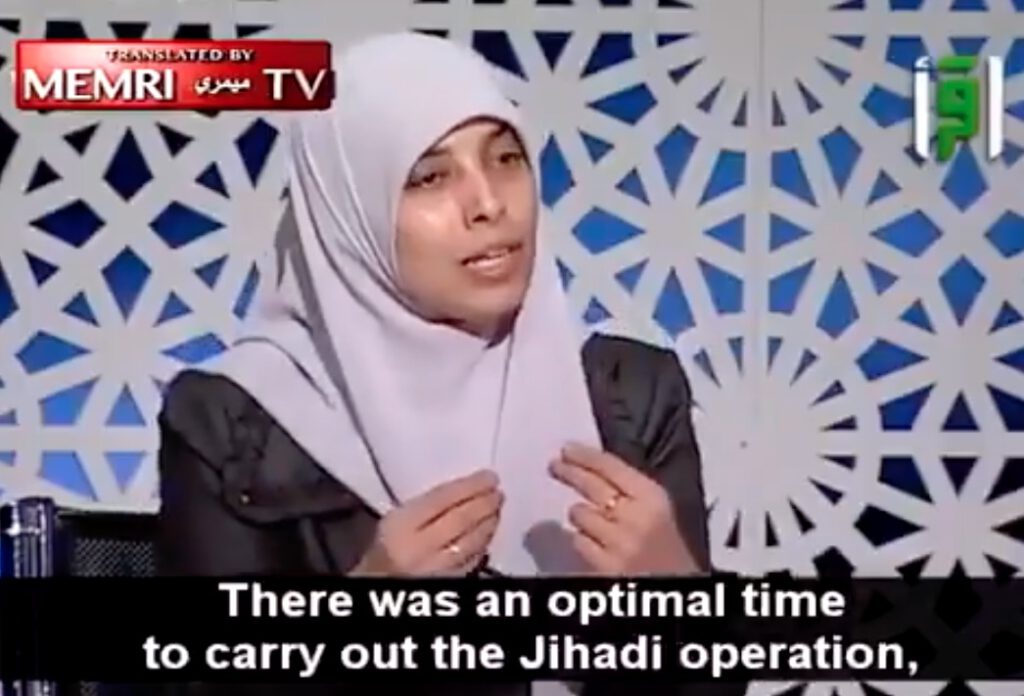
https://x.com/LizaRosen0000/status/1810639158647415118
2024/10/18 up-date

Plakat in Teheran mit Fotos der von Israel getöteten Abbas Nilforushan (General der iranischen Revolutionswächter), Hassan Nasrallah (Hisbollah-Chef) und Ismail Haniyyeh (Hamas-Chef): Wie viel wussten die Verbündeten?
DER SPIEGEL 13.10. 2024
Medienbericht über Protokolle
Hamas warb offenbar weit vor dem 7. Oktober um Beteiligung Irans und der Hisbollah
Sie hofften auf einen gemeinsamen Angriff der Verbündeten: Bislang unbekannte Dokumente zeigen laut einem Medienbericht, wie Hamas-Strategen den Terrorüberfall auf Israel zwei Jahre im Voraus planten.
Die Terrororganisation Hamas hat das Massaker in Israel am 7. Oktober 2023 offenbar mehr als zwei Jahre im Voraus geplant. In diesem Zeitraum bemühte sich die Hamas mehrfach darum, ihre Verbündeten Iran und die libanesische Hisbollah zu einer Beteiligung an dem Terrorangriff oder einem breit angelegten Kampf gegen Israel zu bewegen. Das geht aus bislang unveröffentlichten Dokumenten der Hamas hervor, über die die »New York Times« berichtet.
Konkret soll es sich demnach um zehn Protokolle von Treffen der obersten Hamas-Führungsebene handeln, die die israelischen Streitkräfte im Januar auf einem Computer der Hamas in Chan Junis im Süden des Gazastreifens gefunden hätten. Die Zeitung hat die Dokumente nach eigenen Angaben auf ihre Echtheit und Plausibilität überprüft. Zudem beruft sie sich auf einen internen Bericht der israelischen Streitkräfte zu den Protokollen.
Die Dokumente belegen demnach, dass die Hamas-Führung um den Gaza-Chef Yahya Sinwar den Angriff bereits seit dem Jahr 2021 vorbereitete, der intern unter dem Codenamen »Das große Projekt« lief. Unter anderem, indem sie seitdem Konfrontationen mit israelischen Sicherheitskräften weitestgehend vermied. So sollte Israel vorgetäuscht werden, die Hamas wolle keine größere Auseinandersetzung, und es liege ihr vor allem an Ruhe und weitestgehendem Frieden im Gazastreifen. Zudem setzte die Terrororganisation darauf, dass der Überraschungseffekt eines Angriffs umso größer sein würde – was sich dann auch bestätigte.
Haniyyeh war eingeweiht
Bereits im Herbst 2022 – also ein Jahr vor dem tatsächlichen Massaker – sollte der Überfall den Planungen zufolge stattfinden. Die Hamas verschob den Angriff jedoch und intensivierte ihre Bemühungen, Iran und die Hisbollah zu einer aktiven Beteiligung zu bewegen. So reiste etwa ein hochrangiger Emissär im Juli 2023 in den Libanon und traf sich dort mit Mohamed Said Izadi, einem Verbindungsoffizier der iranischen Revolutionswächter zu den palästinensischen Gruppen. Das Ziel war demnach, Iran zu einer gezielten Beteiligung durch Schläge gegen wichtige militärische Ziele Israels »in der ersten Stunde« des Angriffs zu bewegen. Izadi antwortete demnach, Iran und Hisbollah seien prinzipiell einverstanden mit den Angriffsplänen, benötigten aber mehr Zeit zur Vorbereitung.
Bei diesem Besuch sollte auch ein Treffen mit dem damaligen Hisbollah-Chef Hassan Nasrallah stattfinden, das jedoch verschoben wurde. Aus den Hamas-Protokollen geht der »NYT« zufolge nicht hervor, ob Nasrallah zu einem späteren Zeitpunkt detailliert über die Pläne unterrichtet wurde. Im Ergebnis sei der Hamas jedoch klar geworden, dass ihre Verbündeten sich nicht direkt an dem geplanten Angriff auf Israel beteiligen würden und sie daher allein losschlagen müsse.
Allerdings geben die Protokolle Aufschluss über die Mitwisserschaft des im Juli bei einer Explosion in Teheran getöteten Hamas-Anführers Ismail Haniyyeh. Der politische Chef der Terrororganisation, der in Katar residierte, sei von den Emissären der Hamas-Führung im Gaza über die Angriffspläne gebrieft worden, ebenso über die anstehenden Treffen mit den Vertretern Irans und der Hisbollah.
AP News 18th of October 2024
Israel says it has killed Hamas leader Yahya Sinwar in Gaza
https://apnews.com/article/israel-palestinians-hamas-lebanon-hezbollah-news-10-17-2024-d12ca71945313e601cf10876072f4182
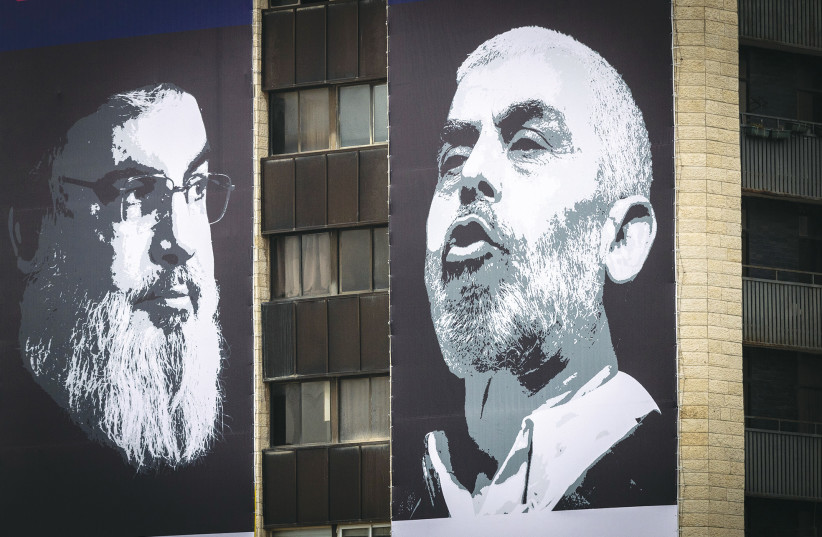

Source:
https://www.infobae.com/america/mundo/2024/10/17/las-fotos-con-las-que-israel-confirmo-la-muerte-de-yahya-sinwar-en-un-combate-con-el-ejercito-de-israel/
SINWAR is eliminated.
In RAFAH.
SINWAR’s bodyguard was an “UNRWA Teacher”.
UNRWA is literally the front for Hamas terrorists.

Nachdem Israel den Anführer der islamistischen Hamas im Gazastreifen, Yahya Sinwar, für tot erklärt hat, fordert Außenministerin Annalena Baerbock von der Hamas die Freilassung aller Geiseln und die Niederlegung der Waffen. „Das Leid der Menschen in Gaza muss endlich aufhören“, erklärte die Grünen-Politikerin am Abend. „Sinwar war ein brutaler Mörder und Terrorist, der Israel und seine Menschen vernichten wollte. Als Drahtzieher des Terrors am 7. Oktober brachte er Tausenden Menschen den Tod und unermessliches Leid über eine ganze Region“, stellte Baerbock fest.
Up-date 2024/10/21
I thought everyone knew, but many have asked, it’s @JustLuai in the video, and no, he is not Israeli.
https://x.com/orenbarsky/status/1847584008667836781
23.04.25/14:03:00
Palästinenser-Präsident fordert von Hamas Abgabe der Waffen und Ende der Kämpfe
Ramallah, 23. Apr (Reuters) – Palästinenser-Präsident Mahmud Abbas fordert die Hamas im Gazastreifen zur Abgabe der Waffen an die palästinensische Autonomiebehörde auf. Die radikal-islamische Gruppierung solle auf den bewaffneten Kampf verzichten und sich in eine politische Partei verwandeln, sagte Abbas am Mittwoch bei einer Veranstaltung in Ramallah im besetzten Westjordanland. Es wird erwartet, dass der 89-Jährige einen Nachfolger nominieren wird. Die Hamas nahm zunächst nicht Stellung zu den Äußerungen von Abbas.
Der Palästinenser-Präsident forderte die Staats- und Regierungschefs der Welt erneut auf, Israel zu zwingen, den Krieg im Gazastreifen zu beenden. Israel müsse zudem seine Streitkräfte abziehen und die Aktivitäten der jüdischen Siedler im Westjordanland unterbinden. Er warnte, es könne keinen Frieden geben, solange die Palästinenser keinen Staat in den Grenzen vor dem Sechstagekrieg von 1967 errichten könnten.
Abbas ist seit 2005 Präsident der Autonomiebehörde und ein führender Politiker der Fatah-Partei. 2007 brachen die Konflikte zwischen Fatah und Hamas offen aus. Nachdem die Hamas die Parlamentswahl 2006 im Gazastreifen gewonnen hatte, entmachtete sie dort 2007 nach einem kurzen Bürgerkrieg die Fatah und übernahmen die vollständige Kontrolle über das Küstengebiet. Im israelisch besetzten Westjordanland ist die von der Fatah beherrschte Autonomiebehörde bestimmende Kraft unter den Palästinensern.
Die Hamas hat sich in den vergangenen Monaten den Aufrufen Israels und der USA widersetzt, ihre Waffen niederzulegen. Abbas hat der Hamas vorgeworfen, mit ihrem Angriff auf Israel am 7. Oktober 2023 der Regierung in Jerusalem einen Vorwand für die Zerstörung des Gazastreifens geliefert zu haben. Die Hamas lehnt die Bemühungen von Abbas um einen Frieden mit Israel ab. Zudem wirft sie ihm vor, Sicherheitskräfte der Autonomiebehörde würden gegen palästinensische militante Gruppen im Westjordanland vorgehen.
(Bericht von Nidal al-Mughrabi, geschrieben von Hans Busemann, redigiert von Kerstin Dörr. Bei Rückfragen wenden Sie sich bitte an unsere Redaktion unter berlin.newsroom@thomsonreuters.com (für Politik und Konjunktur) oder frankfurt.newsroom@thomsonreuters.com (für Unternehmen und Märkte)
Up-date 2025/5/17
PALESTINIAN TERRITORIES
Palestinian Christians in Gaza: Pope Francis never forgot us
Tania Krämer in Jerusalem, April 24, 2025
Ever since the war in Gaza started in 2023, Pope Francis made sure to regularly call Palestinians sheltering in a small Catholic parish in Gaza City. His care and outspokenness were a glimmer of hope for the community.
https://www.dw.com/en/palestinian-christians-in-gaza-pope-francis-never-forgot-us/a-72324538
